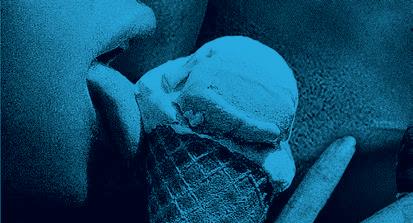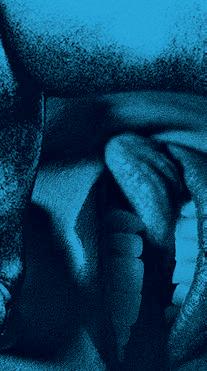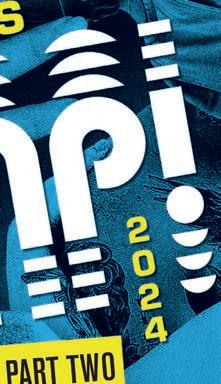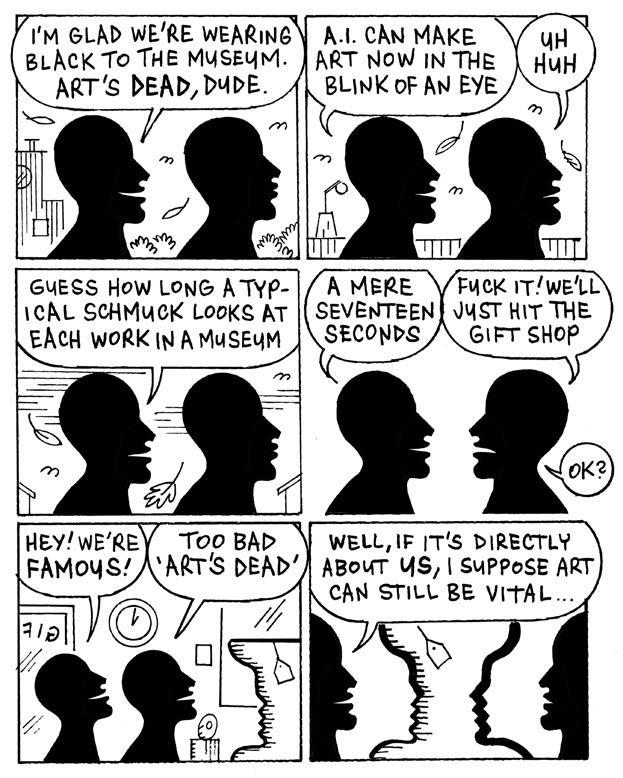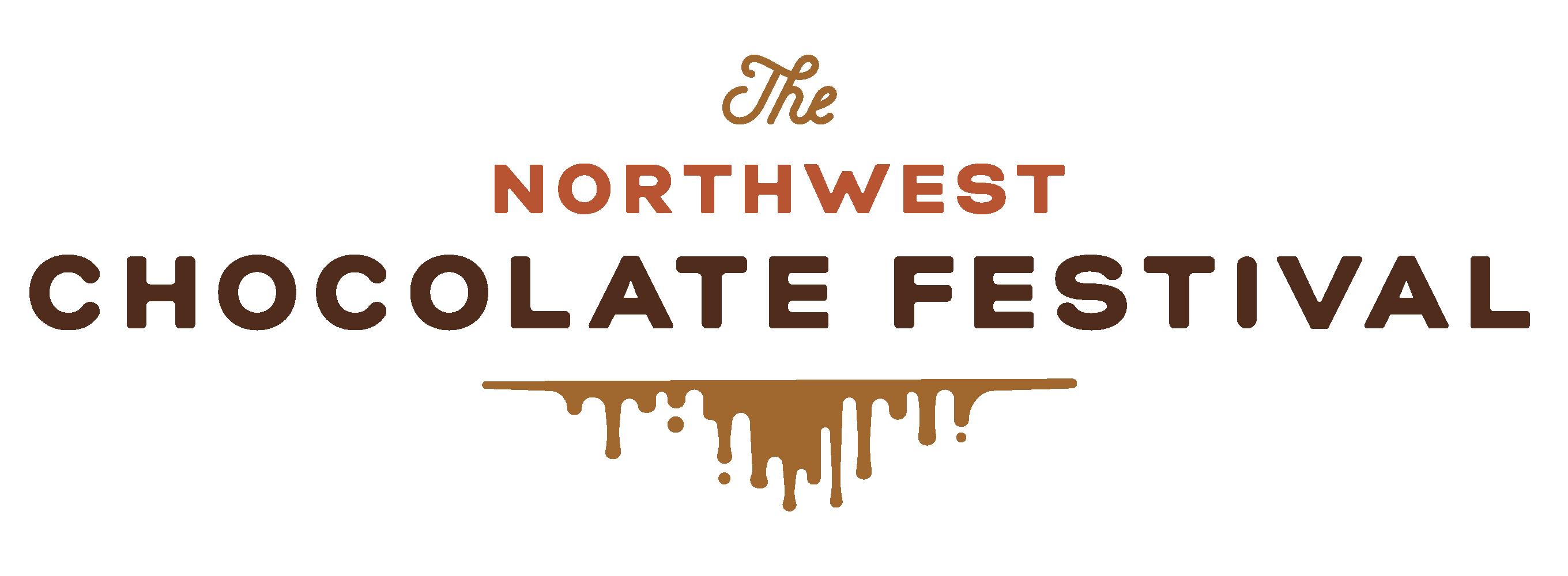


















































































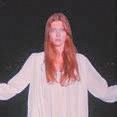



HAVE YOU SEEN THIS DOG?
Searching for Seattle’s Friendliest Graffiti
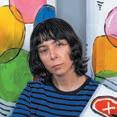
ANATOMY OF A SONG
The Sugarhill Gang’s “Rapper’s Delight” (1979)

LOOKOUT, ARTISTS! WE’RE GONNA DUMP SOME MONEY ON YOUR ASSES!
The Stranger’s Genius Awards are coming back in the Spring of 2025.
WILL DOORS OPEN KEEP DOORS OPEN?
A new county fund will drop nearly $800 million on local arts and culture nonprofits over the next seven years. Will it be enough?
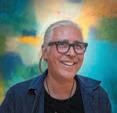
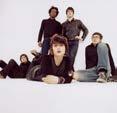
HOME SCREAM HOME
Seattle’s Spooky Side Transforms These Local Horror Shorts

WRITING THE SHIP
How Nonfiction for No Reason Is Helping Seattle’s Literary Scene Stay Afloat
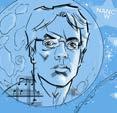
WHAT ARE YA READIN’ THIS SEASON?
Our Favorite Authors Recommend Your Next Favorite Book

PERSON OF INTEREST: TYLER THRASHER
The Guy Who Grows Crystals on Dead Things

PERSON OF INTEREST: NONAMEY
Making Shipwrecks and Teen Dreams with Cardboard and Paint
WHAT’S SO FUNNY ABOUT DISABILITY?
Comedian Tina Friml on Being “Unforgettable”
PERSON OF INTEREST: PRESTON SINGLETARY
Internationally Renowned Mythmaker and Glass Artist
PLEASE THRILL ME
An Abridged Oral History of Seattle’s Greatest Rock Band, Pretty Girls Make Graves
PERSON OF INTEREST: SARAH TRUDZIN
Writing All Rippers and No Filler for Illuminati Hotties
THANK YOU, CHARLEY
Friends, Musicians, and Journalists Remember The Rocket Editor and Author Charles R. Cross
COFFEE FOR LA CULTURA

PIERCE THE VEIL
Natalie Krick’s New Exhibit Gives Marilyn Monroe Her Power Back


INTERGALACTIC SANCTUARY
Sophy Wong Is Making Fashion for a Better, Otherworldly Future
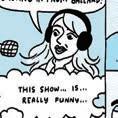
Bonito Café y Mercadito Brings Conchas and Chappell Roan to Capitol Hill
THE 12 BEST RESTAURANTS IN THE SEATTLE AREA 2024 Get ready to kiss all these restaurants on the mouth.
YOUR FALL ARTS ITINERARY
38 of This Season’s Very Best Art, Book, Music, Film, Theater, and Food Events
FUN PAGE
With Nate Cardin’s Crossword Puzzle and Comics by Natalie Dupille, Greg Stump, and Elaine Lin 6 38 10 46 18 58 25 69 28 81 8 40 13 48 21 61 26 71 32
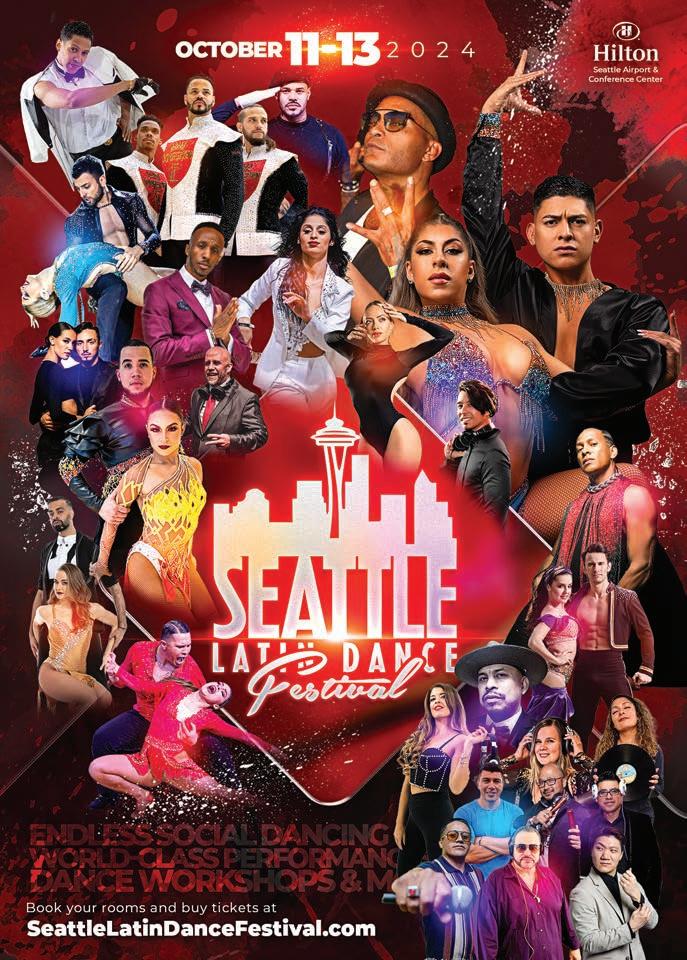
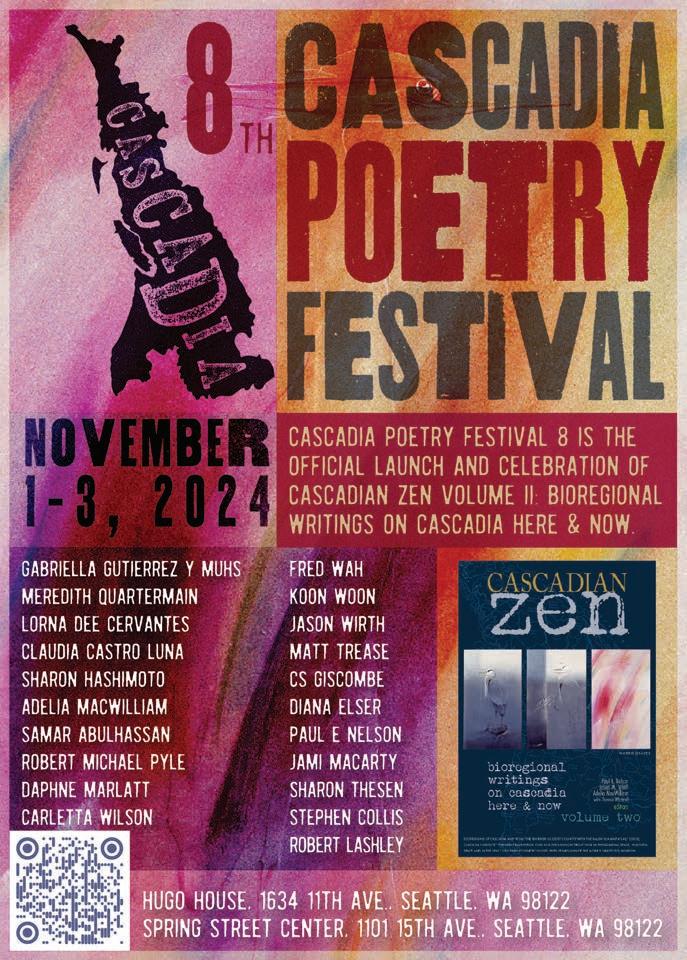
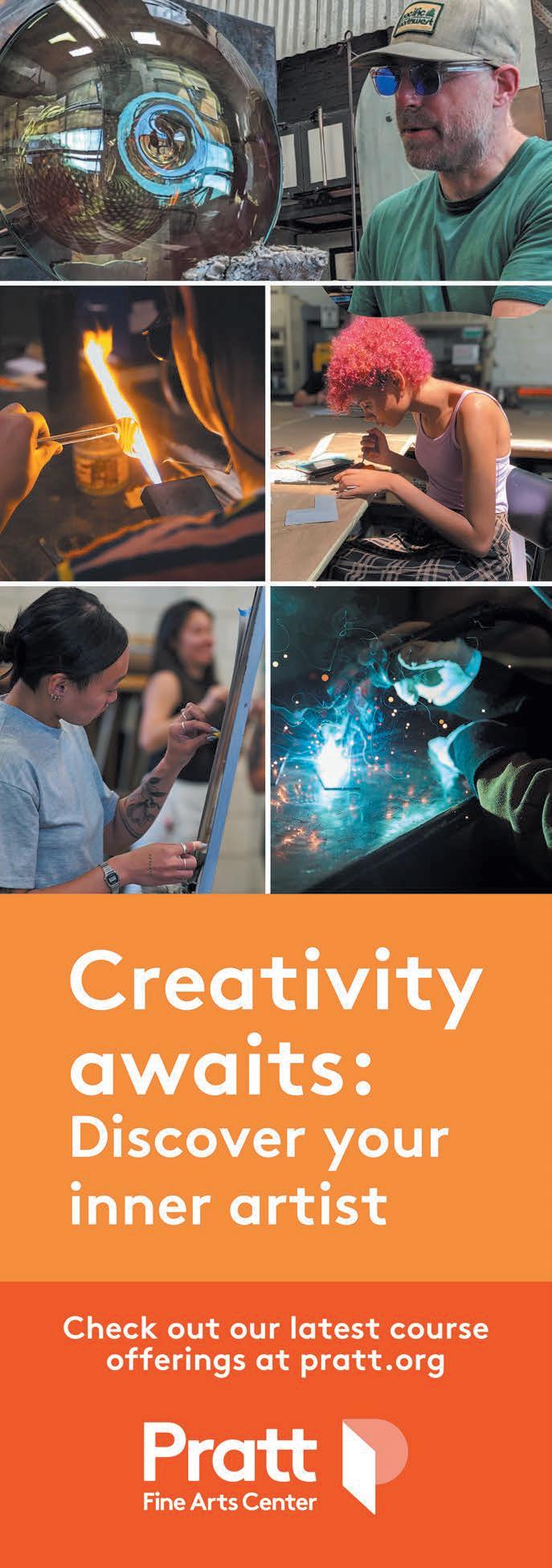
Welcome to the biggest Arts + Performance issue we’ve ever made. Phew!
It’s been a rough few years in the world of art and culture. In 2020, we asked our venues, restaurants, and basically every other institution in the city to hold their breath for a year and a half, and just when they started to get some oxygen, we knocked them back down with inflation, dwindling audiences, and the existential angst of another Trump election. Meanwhile, the cost of living keeps going up, but we keep forgetting to pay artists living wages.
All that’s to say, it’s becoming increasingly impossible to be an artist in this city, so we wanted to say THANK YOU to the creatives who have stuck it out and are keeping Seattle weird, beautiful, and a little bit out of this world.
This gigantic issue was a start, but we had another idea for how we could show our gratitude. For more than a decade, we celebrated Seattle’s artistic geniuses by sending them mediocre cakes, throwing them a party, giving them wads of money, and making them carry around a gold statuette of a gnome—otherwise known as the Genius Awards. It’s been eight long years since we threw such a great party, and we’ve really missed it, so we’re bringing it back. Genius Awards 2025, baby!
In the issue, you’re also gonna meet some of our favorite people. (Unless you already knew them, in which case, we applaud your good taste.) We’re newly obsessed with Sophy Wong, a costume and fashion designer who is clearly from another planet. Her reimagined space suits are built for our
EDITOR IN CHIEF
Hannah Murphy Winter
MANAGING EDITOR
Megan Seling
NEWS EDITOR
Rich Smith
SENIOR STAFF WRITER
Charles Mudede
STAFF WRITERS
Hannah Krieg
Ashley Nerbovig
Vivian McCall
PHOTO DIRECTOR
Billie Winter
MANAGING EDITOR
Janey Wong
post-climate crisis future, but we’d wear them any day of the week.
Contributor Mindie Lind interviewed comedian Tina Friml in what Lind affectionately called a “crip-on-crip” discussion about idiots, internalized ableism, and how having a disability can feel like being a VIP. We’ve never read a discussion like it—which, they pointed out, is part of the problem.
Then we visited artist Natalie Krick’s SoDo studio, where she’s building her new installation for the Frye: a life-size collage of Marilyn Monroe, made from the 2,600 images of photographer Bert Stern’s The Complete Last Sitting, all taken for Vogue just six weeks before Monroe died in 1962.
And did you know that Pretty Girls Make Graves is getting back together?? Man aging Editor Megan Seling once said she’d throw herself into traffic to get to see them live again (in a Make-a-Wish kinda way—don’t make it that dark). To mark this miracle of local hardcore, Megan interviewed (almost) all the current members of the band (dangit, Derek), as well as some of their colleagues, friends, and fans, then swept up their sound bites into an oral history of this iconic local group. For those of you who are new to PGMG, it’s a perfect primer. For the rest of us, it’s one small effort to try to make sense of the band’s magic.
which is pulling out all the stops for their new production of Sleeping Beauty. News Editor Rich Smith talked to local glass artist Preston Singletary, who’s designing the intricate, majestic set (not made out of glass, though, it turns out—that’d probably be very dangerous).

We also explored how the city’s arts community is finding new ways to thrive in this crazy place. We met Katie Lee Ellison, who founded the reading series Nonfiction for No Reason, which is doing its part to revitalize the local writing scene. But we also took a look at the big picture: Staff Writer Vivian McCall dug into the potential of Doors Open, a new $100 million fund from King County that could very well save some of our most beloved local arts institutions.
We offer you a list of contributor Meg Van Huygen’s very favorite restaurants (make it your mission to visit each one this season), and your favorite authors’ very favorite books. And lastly, as a treat: Senior Staff Writer Charles Mudede and Professor Daubi Abe wrote “Anatomy of a Song: Rapper’s Delight,” a deep-dive annotation of the song that became the foundation of modern hiphop. It’s just the radio version for now. As we mentioned above, this is the biggest A+P issue we’ve ever done. We’ll have to save the full 14-minute track for next time.





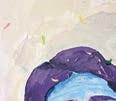



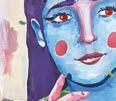
We’re getting ready for the new seasons of, well, everything that happens onstage. That includes the Pacific Northwest Ballet,
FOOD & DRINK EDITOR
Julianne Bell
MUSIC CALENDAR EDITOR
Audrey Vann
ARTS CALENDAR EDITOR
Lindsay Costello
DATA MANAGER
Shannon Lubetich
ADVERTISING DIRECTOR
James Deeley
ADVERTISING COORDINATOR
Evanne Hall
SENIOR ACCOUNT EXECUTIVES
Ben Demar
Katie Phoenix
Hannah Murphy Winter Editor-in-Chief
COMPTROLLER
Katie Lake
OFFICE MANAGER
Evanne Hall
ART DIRECTOR AT LARGE
Corianton Hale
ASST. ART DIRECTOR
Anthony Keo
EXECUTIVE DIRECTOR
Tracey Cataldo
MARKETING DIRECTOR
Caroline Dodge
SOCIAL MEDIA MANAGER
Christian Parroco
VIDEO PRODUCTION DIRECTOR
Shane Wahlund
EMAIL MARKETING SPECIALIST
Tonya Ray
PRODUCTION & MARKETING COORDINATOR
Taffy Marler
HEAD OF PRODUCT
Anthony Hecht
SENIOR DEVELOPERS
Nick Nelson
Michael Crowl
IT MANAGER
Grant Lewicki-Hendrix
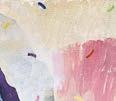










COVER ARTWORK
Painting for the Artists and the Lovers, 2024, by Brandon Vosika brandonvosika.com
See his work at AMcE Creative Arts and Gallery ERGO this fall. Design by Corianton Hale
CUSTOMER SOLUTIONS MANAGER
Kevin Shurtluff
CLIENT SOLUTIONS MANAGER
Diana Schwartz
PROJECT MANAGEMENT
CLIENT & CUSTOMER SOLUTIONS REPRESENTATIVE
Campy Draper
CUSTOMER SOLUTIONS REPRESENTATIVE
Katya Schexnaydre
COO/CFO
Rob Crocker
CHIEF OF STAFF
Toby Crittenden
CHAIRMAN AND PUBLISHER
Brady Walkinshaw
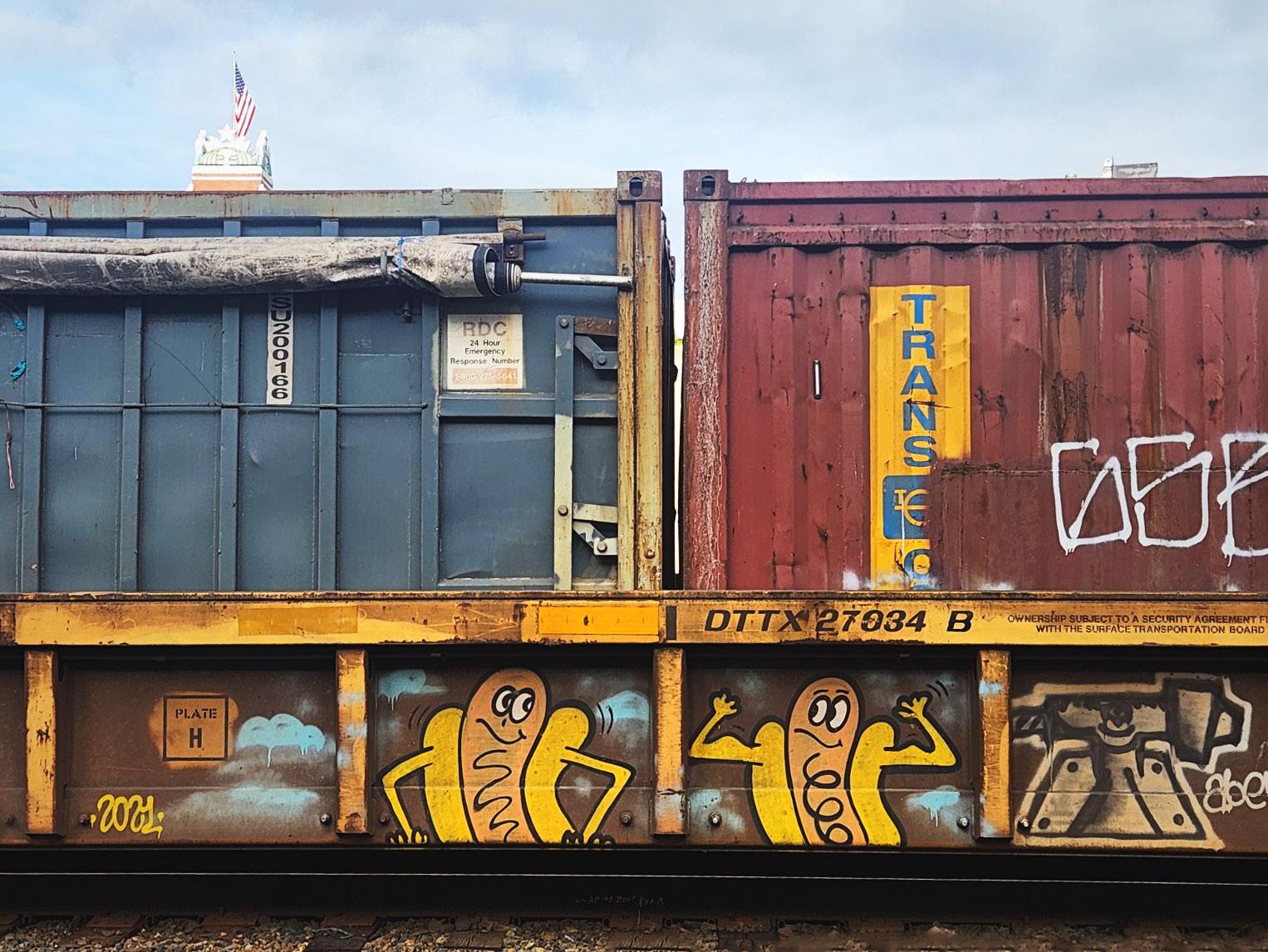
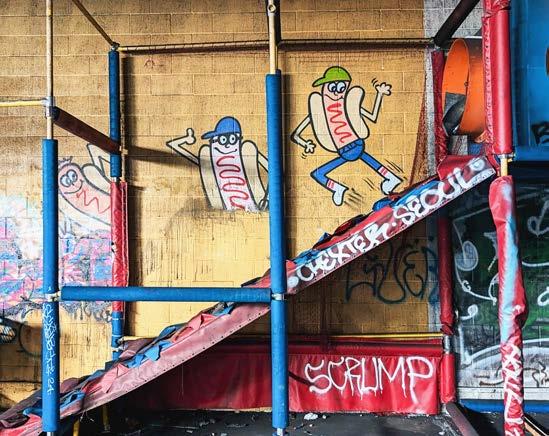

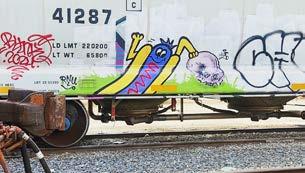



BY MEGAN SELING
His name is Yo Dawg. Or BlinkDawg. Or Hot Dog Man, Graffiti Weenie, Highway Hot Dog, or Welcome Weiner. Whatever you call him, you’ve likely seen the smiling, dancing, waving banger in a bun throughout the Puget Sound region. He pops up on trains, behind abandoned buildings, and in the shadows of freeway overpasses.
Everyone loves Bill Hinker’s friendly hot dog graffiti, and I know this because when I started mentioning to friends that I was dedicating my summer to seeking out as many hot dogs as I could, they all enthusiastically
exclaimed, “I love that guy!” before offering up their favorite spots.
Hinker painted his first hot dog in 2004. “Back before 2017ish, the hawtdawg was pretty plain and didn’t come out much,” he says. “But in the last five years or so, he has evolved. [He’s] sprouted appendages, sometimes wears clothes, and even speaks!”
Sometimes the hot dog is sporting jeans and a hat. Other times he’s naked, save for a scribble of ketchup or mustard. On one especially fruitful hot
dog hunt, I stumbled across a pair of golf club-wielding wieners framing a Happy Gilmore-inspired mural near an abandoned mini golf course. “The price is wrong, bitch.”
While I almost always see the character with either pink or red dog, legend has it that a purple weenie on the side of a train car can occasionally be seen passing through town.

Hinker estimates he’s painted somewhere around 5,000 hot dogs over the years. Many have been covered by other artists or demolished or scrubbed away by
Mayor Harrell’s multimillion-dollar graffiti clean-up efforts over the years—Harrell the Hot Dog Killer—but Hinker doubled down on his dog this year, when he launched a line of limited-edition enamel pins through Makeshift. His hot dog originals are also hanging at Broadcast Coffee at 20th and Yesler through October, and he’ll be selling paintings, pins, and more at Punk Rock Flea Market, September 20–22 in the old QFC space on 15th Avenue East.
As you flip through these pages, keep an eye out. You never know when the Welcome Wiener will wave hello. ■
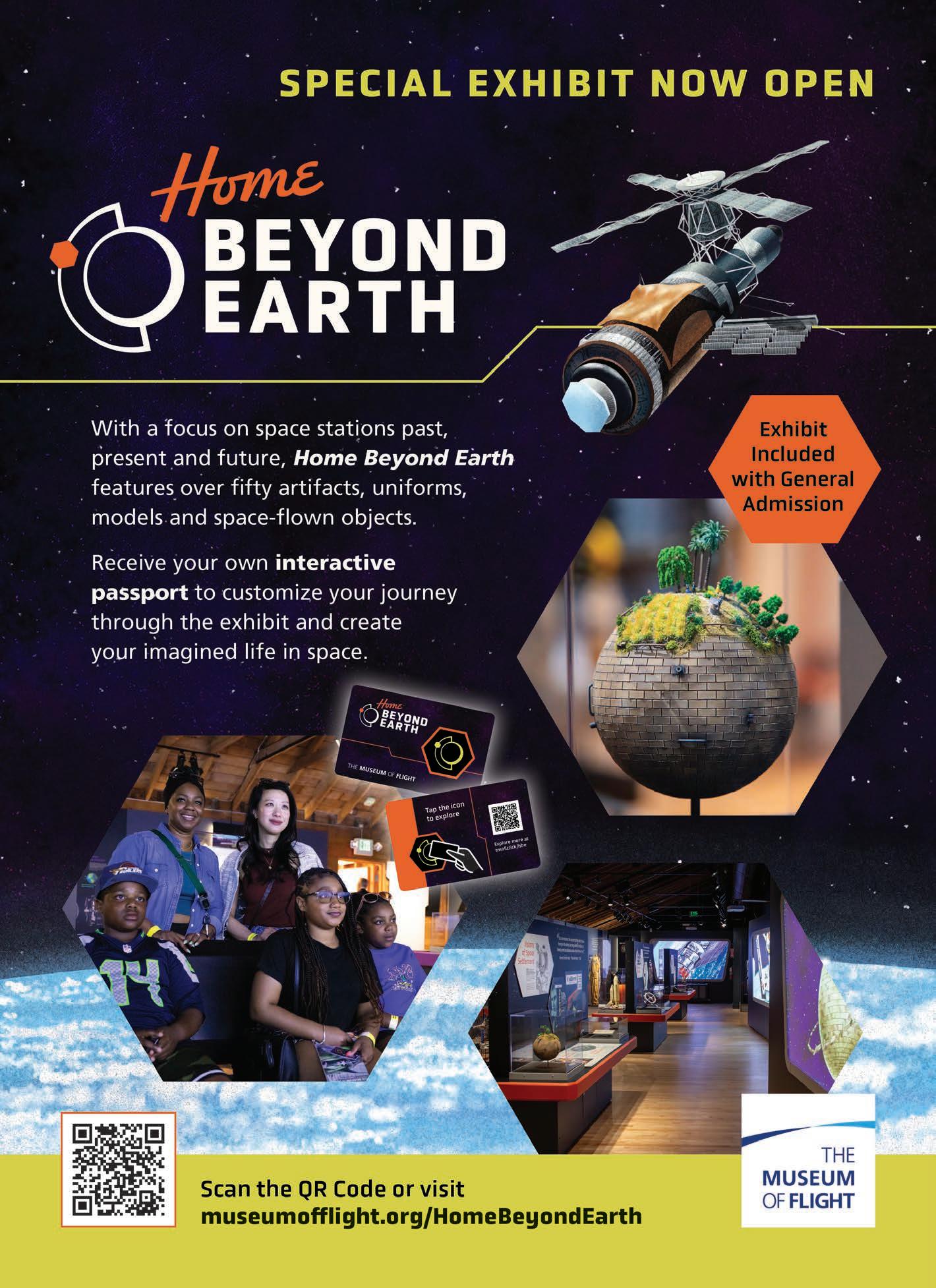

ALEJANDRO TORRECILLA/@TORRE.PENTEL
The Sugarhill Gang’s “Rapper’s Delight” (1979)
BY CHARLES MUDEDE AND PROFESSOR DAUDI ABE
The presence of Snoop, Flavor Flav, and the establishment of breaking as a sport marked the 2024 Olympics in Paris as a hiphop event. This is not surprising. Hiphop is now the most listened-to genre in the United States and has had a huge impact on Korean and Latin American pop.
But how did we get here? It began in the fall of 1979, when hiphop was an unknown art form to most of the country. That year, Sylvia Robinson, a recording artist who broke into the Top 40 in the fifties and sixties, started Sugar Hill Records in Englewood, New Jersey, with her husband after hearing a DJ rap at a birthday party for a relative. She signed three rappers—Wonder Mike, Big Bank Hank, and Master Gee—and named them the Sugarhill Gang. And that fall, the label released “Rapper’s Delight.” Sylvia displayed the exceptional foresight of embracing this new music in its very early stages. Her visionary sample of Chic’s 1979 disco smash “Good Times,” performed for the track by studio musicians, is now widely credited as one of the key elements that made “Rapper’s Delight” so accessible and opened this new music to the whole world. In Seattle, the first person to play it on radio was Robert L. Scott on 1250 AM KYAC, one of the seven Black-owned radio stations at the time, according to the Seattle Medium
The rest, as we love to say, is history.
In honor of that history, we’ve decided to dive into one of hiphop’s founding documents. We will eventually annotate the entire original “Rapper’s Delight,” the gargantuan 14:35-minute version, line by line— but we present here the key lines from the tamed, radio-friendly 3-minute edit. So here it is, a preliminary annotation of the track that made it possible for Dr. Dre and Jay-Z to be billionaires, Snoop and Martha Stewart’s world-famous friendship not only achievable but profitable, and a bad breakdancer at the Olympics go viral: “Rapper’s Delight.”
WONDER MIKE
1) I said a hiphop, the hippie to the hippie
The use of the term ”hiphop” at the start of the vocals helped set the stage for the common naming of this culture, in all of its forms: rapping, DJing, dancing, graffiti, and fashion. (There has been, it must be noted, a long and sometimes bitter debate about whether fashion is or is not one of the main branches of hiphop culture. We do not want to take sides in this debate, but we must point out that in 1979, the Sugarhill Gang didn’t dress in a way that’s distinct from disco culture. The same cannot be said about Run-D.M.C., a Queens crew that formed in 1983.)
2 ) The hip, hip-a-hop and you don’t stop rockin’ / To the bang, bang the boogie, say up jump the boogie / To the rhythm of the boogie, the beat Here, Wonder Mike samples scatting (or scat singing), which is a part of the jazz tradition, and had Al “The Acrobat of Scat” Jarreau as one of its popularizers. Among numerous other things, Al Jarreau is famous for the theme song for the ’80s TV show Moonlighting, which starred a waspish Cybill Shepherd and a young Bruce Willis.
3) Now what you hear is not a test, I’m rappin’ to the beat
Because of rap’s newness—the genre was, in 1979, mostly unknown outside of the boroughs of New York City—the listener might have been confused by Sugarhill Gang’s vocal presentations not based on conventional harmony and thought they were instead hearing a mic check. Wonder Mike lets the listener know that this is not a test, this is not a mic check, this is “rappin’ to the beat.”
There is also this to consider: “Rapper’s Delight” recreates, in form and substance, a kind of party that most Americans and citizens of the world were not familiar with, a DJ with emcees (masters of ceremony). The former was, for sure, well established (particularly during the disco period), but
emcees who owe their origin to the Jamaican toaster and African griot, were barely known outside of NYC.
4) And me, the groove, and my friends are gonna try to move your feet
As stated in Note 3, “Rapper’s Delight” recreates a hiphop party, a party with a DJ on the “wheels of steel” and rappers on the “M-I-C.”
The job of the rapper is to keep party people out of their seats and engaged with the “groove.” Also important to note: At this point, the DJ was the central figure in hiphop, the way that the rapper is today. In the party setting, the MC would often need permission from the DJ to even get on the mic.
5) You see, I am Wonder Mike, and I’d like to say hello / To the Black, to the white, the red and the brown, the purple and yellow
On the first internationally distributed rap record, an almost immediate shoutout to all the races. This gesture of inclusion cannot be overstated. It was the first declaration of a feeling that would be formalized in 1984 by Def Jam’s first release, “It’s Yours.” The rapper, T La Rock, on that Rick Rubin-produced track, also recreates a hiphop party, but this time it includes the cheers and responses of party people, with T La Rock declaring that the music, the rapping, the joy is all theirs, if they want it.
6) But first I gotta bang-bang the boogie to the boogie / Say up jump the boogie to the bang-bang boogie / Let’s rock, you don’t stop / Rock the riddle that’ll make your body rock See Notes 1 and 2.
7) Well, so far you’ve heard my voice, but I brought two friends along / And next on the mic is my man Hank / And come on, Hank, sing that song! This is called passing the mic. Back then, a party usually only had one mic to spare. So, it had to be passed around. The Beastie Boys celebrated this tradition in 1992 with the track “Pass the Mic.” Of course, by that time, rappers were rocking stadiums and had their own mics.
8) Check it out, I’m the C-A-S-AN the O-V-A, and the rest is F-L-Y In episode 1 of And You Don’t Stop: 30 Years of Hip Hop, Grandmaster Caz tells the story of Big Bank Hank asking to use some of his rhymes. Caz, aka Casanova Fly, said yes and tossed him a notebook. Hank not only used Caz’s raps but didn’t bother to swap Caz’s name with his own. And so Big Bank Hank makes his historic hiphop introduction with the line: “I’m the C-A-S-AN the O-V-A, and the rest is F-L-Y.” Ironically, in the extended version, Hank delivers the line: “But whatever you do in your lifetime, you never let an MC steal your rhyme.”
Questions around rappers writing their own rhymes would surface many times in hiphop. Eazy-E raps, “Ice Cube writes the rhymes that I say,” in the 1988 track ”8 Ball” and, in the 1995 track “Mad Bent,” Heather B asserts that nobody was “in the back writing my shit.”
There was also, in early hiphop, an obsession with “biting,” which included not writing one’s own rhymes, stealing another’s style, and, as the feud between Roxanne Shanté and the Real Roxanne demonstrated, jacking another rapper’s name. Originality was prized. “You got to have style and learn to be original,” rapped KRS-One in 1988. But biters were everywhere. And often as shameless as Big Bank Hank. In UTFO’s 1985 track “Bite It,” Educated Rapper expressed this scourge in a register that borders on paranoia: “If you ever had a shadow, one like mine / Time after time, you would find / Everything you did, and everything you do / And everything you want to do, they’d want to too.”
9) You see, I go by the code of the doctor of the mix and these reasons, I’ll tell ya why / You see, I’m six-footone and I’m tons of fun and I dress to a T / You see, I got more clothes than Muhammad Ali, and I dress so viciously
This Muhammad Ali reference was a foreshadowing of the massive amount of eventual overlap between hiphop and sports.
10) I got bodyguards, I got two big cars that definitely ain’t the wack / I got a Lincoln Continental and a sunroof Cadillac
“Wack” was among the most insulting terms that could be used in early hiphop. At this point in time, luxury American-made cars
(not European) were the preference of many African Americans who could afford them.
11) So after school, I take a dip in the pool, which really is on the wall / I got a color TV so I can see the Knicks play basketball
This type of subtle geographic reference to New York City’s historic NBA team was something that distinguished hiphop early on. The inclusion of what it’s like where you’re from exported local culture to the world. In Emerald Street: A History of HipHop in Seattle, Ice-T said, “That’s what you
“The DJ for “Rapper’s Delight” was, undoubtedly, the great Sylvia Robinson.”
do as a rapper, you’re kinda like a cheerleader for a neighborhood. That’s what a lot of people will ask, ‘Why do you always say the name of your [record] label or your street?’
Because that’s what the rapper does, it’s about shoutin’ out. You’re reppin’ a group.”
Though Big Bank Hank bit his rhymes, he actually came from what many consider to be the birthplace of hiphop, the Bronx. The other rappers in Sugarhill Gang were from New Jersey, which, for NYC crews, was basically another country and was dismissed (dissed) as such.
12) Hear me talkin’ ‘bout checkbooks, credit cards, more money than a sucker could ever spend Boasting might be fantastic, but it had to be “up on things,” as Snoop put it in “Still D.R.E.” In our time, we are inundated with credit card offers. Back then, however, credit cards were relatively new and, therefore, a sign of wealth.
13) But I wouldn’t give a sucker or a bum from the Rucker not a dime ‘til I made it again
This refers to the legendary street basketball courts at Rucker Park in Harlem, which hosted the famous, flamboyant Rucker Tournaments. That marks Hank’s third sports-related reference in this verse alone.
14) Everybody go, “Hotel, motel, whatcha gonna do today? (Say what?) / ‘Cause I’ma get a fly girl, gonna get some spank and drive off in a def OJ
This was likely the first time many heard the word “def,” as in Def Jam, Mos Def, and Bigger and Deffer. Def, of course, means definitely. As for OJ, it was a luxury car service that operated in the Bronx.
15) Everybody go, “Hotel, motel, Holiday Inn!” / Say, if your girl starts actin’ up, then you take her friend Notice he uses “girl” instead of “bitch,” an epithet that in the 1990s not only became popular but interchangeable with “ho.” Queen Latifah addressed misogyny in hiphop in her 1993 hit track “U.N.I.T.Y.”
16) A-Master Gee, a-my mellow / It’s
on you, so what you gonna do?
See Note 7.
17) Well, it’s on and on and on, on and on / The beat don’t stop until the break of dawn
“Till the break of dawn” would become a familiar refrain in hiphop, referring to a party that lasts all night.
18) I said a M-A-S, a T-E-R, a G with a double E Master Gee is the second rapper on this song to spell out his name. Among the more famous to copy this technique would be Snoop’s “Capital S, oh yes, I’m fresh, N-double-O-P / D-O-double-G-Y D-O-double-G, you see?” in 1992’s “Nuthin’ but a ‘G’ Thang.”
19) I said I go by the unforgettable name of the man they call the Master Gee
Each of the MCs on this track shout their own names out, again and again. This was not just about “ego trippin’” but making sure the people at a party or club remembered your name. Keep in mind that most rappers during this time (the late 1970s) were not on wax or the radio. As a consequence, spelling your name, repeating your name, and including shoutouts to your name was a matter of survival.
20) Well, my name is known all over the world by all the foxy ladies and the pretty girls / I’m goin’ down in history as the baddest rapper there could ever be Although not unusual for a rapper to say they are the greatest, it can breed conflict. In the mid-1980s, LL Cool J made a similar claim, and it started a longstanding feud with Kool Moe Dee.
21) Now I’m feelin’ the highs and ya feelin’ the lows / The beat starts gettin’ into your toes / Ya start poppin’ ya fingers and stompin’ your feet / And movin’ your body while you’re sittin’ in your seat
See Note 4.
22) And then, damn, ya start doin’ the freak / I said damn, right outta your seat / Then ya throw your hands high in the air
Back then, “damn” was as far as you could cuss on a record. In subsequent years, Schoolly D, Too $hort, 2 Live Crew, Ice-T, and NWA would go far beyond the curse-word barrier imposed on Master Gee.
23) Ya rockin’ to the rhythm, shake your derriere / Ya rockin’ to the beat without a care / With the sureshot MCs for the affair
same / I got a little face and a pair of brown eyes / All I’m here to do, ladies, is hypnotize / Singing on and on and on, on and on / The beat don’t stop until the break of dawn
Clearly, Master Gee is the sensitive one of the bunch. Big Bank Hank is his exact opposite. He is a “macho man” on steroids. In the 14:35-minute version of “Rapper’s Delight,” Hank even claims that he “can bust you out with [his] super sperm.” A guy with a “little face and a pair of brown eyes” does not have “super sperm.”
25) A-singing on and on and on, on and on / Like a hot ready to pop the pop the pop dibbie-dibbie / Pop the pop-pop, you don’t dare stop / A-come alive, y’all, gimme what you got
See Note 2.
26) I guess by now, you can take a hunch / And find that I am the baby of the bunch
Master Gee was 17 years old at the time.
27) But that’s okay, I still keep in stride / ‘Cause all I’m here to do is just wiggle your behind This was a period when rappers did not have to be so hard or, as the social theorist Michelle Wallace put it, so “mac-ho.”
28) Singing on and on and on, on and on / The beat don’t stop until the break of dawn See Note 18.

In the early years of hiphop, the MC devoted a lot of their raps to the art and greatness of the DJ. This was, indeed, their first function: Praising, to use the words of Run-D.M.C., the “big beat blaster.”
24) Now, I’m not as tall as the rest of the gang / But I rap to the beat just the
29) Singing on and on and on, on and on / Rock-rock, y’all, throw it on the floor / I’m gonna freak ya here, I’m gonna freak ya there / I’m gonna move you outta this atmosphere / ‘Cause I’m one of a kind, and I’ll shock your mind / I’ll put the tick, tick, tickets in your behind / I said a-one, two, three, four / Come on, girls, get on the floor / A-come alive, y’all, a-gimme what ya got / ‘Cause I’m guaranteed to make you rock At its core, “Rapper’s Delight” is a dance song that gets the party going and generates what hiphop scholar Tricia Rose calls, in the context of inna city pressure, “Black pleasure.” The vocal delivery of the hiphop MC gave the ability to not only tell a story but also incorporate encouragement to the party people. It’s also important to note that rappers were nothing without the person who had the equipment, the technical skills, and the beats. This is why in early hiphop, the name of the DJ often came before that of the rapper or rappers: DJ Jazzy Jeff and the Fresh Prince, Eric B. & Rakim, and Grandmaster Flash and the Furious Five. In fact, Ice-T’s hit, “Reckless,” from the 1984 soundtrack to the movie Breakin’, was all about his DJ, the Glove. However, it was this dynamic contribution from the Sugarhill Gang that initiated the shift from the DJ to the MC as the “center” of hiphop culture. The DJ for “Rapper’s Delight” was, undoubtedly, the great Sylvia Robinson. All hail the queen.
Daudi Abe is a professor at Seattle Central College and the author of the critically acclaimed Emerald Street: A History of HipHop in Seattle.
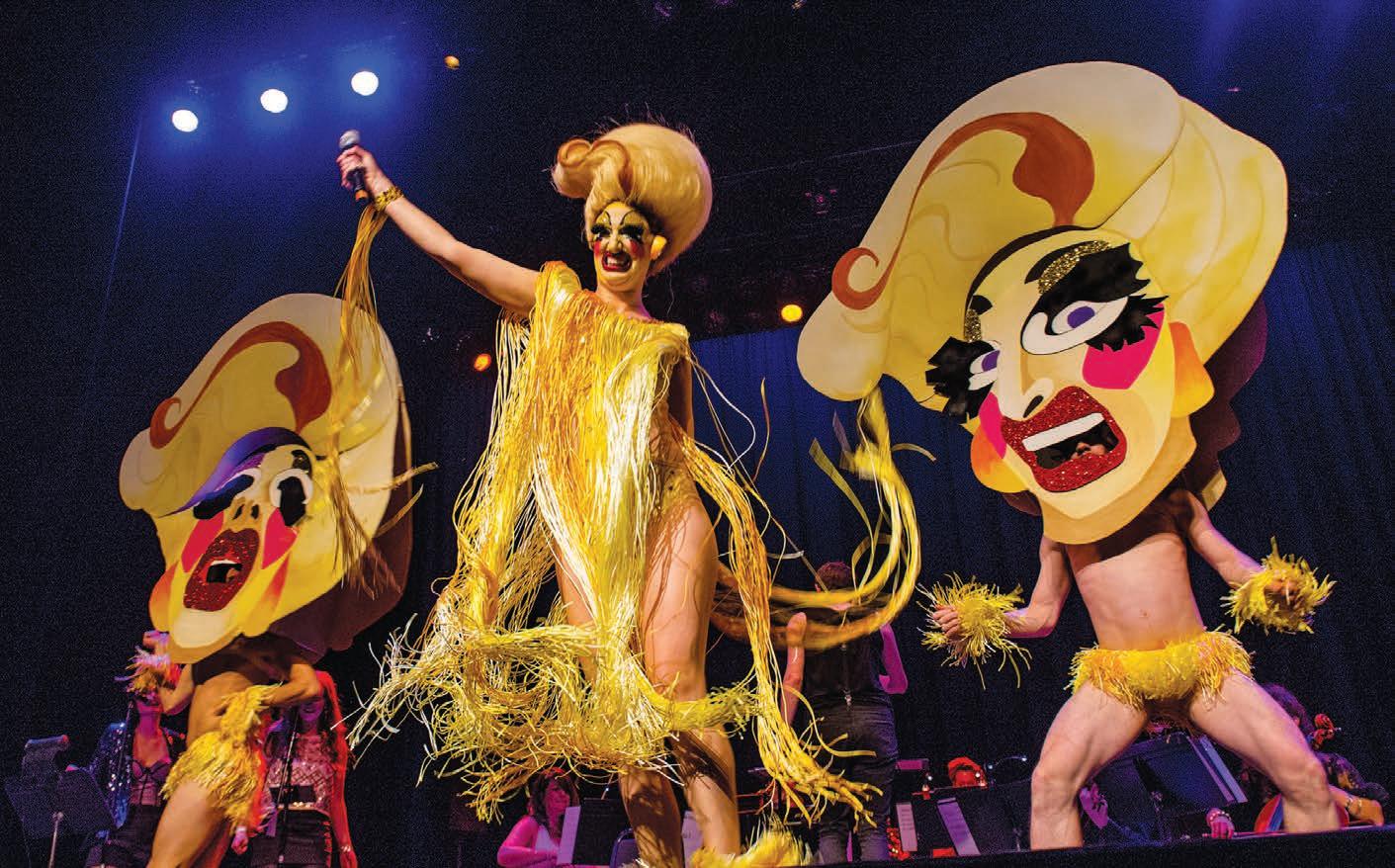
BY HANNAH MURPHY WINTER AND MEGAN SELING
It’s been eight long years since we delivered mediocre grocery store cakes to geniuses across the city, but next year, that streak ends. The Stranger’s Genius Awards are back, baby.
In the four years since COVID-19 gave all of our beloved cultural institutions a swift kick in the nards, we’ve watched them struggle to stay afloat. Venues have closed, employees have been laid off, and production budgets have been cut over and over again (see page 13). We’ve felt the pressure too. But we’re still here, and so is Seattle’s art community, despite it all. And we deserve a goddamn party.
The Stranger started the Genius Awards in 2003. At the inaugural ceremony, Dan Savage showed up in a suit jacket “the color of a baked potato,” and, beside an ice sculp-
ture of a giant brain, the paper’s editors awarded the very first Genius Awards to film Genius Web Crowell, art Genius Susan Robb, literary Genius Matt Briggs, and theater Genius Chris Jeffries. Afterward, The Stranger declared the event “a howling success.” Not to be too self-congratulatory, though: “Really, no one was more surprised than I was,” wrote former Stranger Visual Arts Editor Emily Hall. “As thrilled as I was that we were giving substantial awards to artists we really, really like, I didn’t think that a dinner party and awards ceremony could be anything but a dull, tepid affair. I mean, we had seating plans, for God’s sake.”
We did it for 12 more years. We spent more than a decade—and $325,000!!!!— finding the very best this city has to offer, crowning beloved Geniuses like Lindy
West, Yussef El Guindi, and Megan Griffiths with golden gnome statuettes and wads of cash.
It’s time to give this city’s most creative, inspiring people some crappy cake and throw a big ol’ party in their honor.
It’s time to give our cultural institutions their moment to shine again. It’s time to give this city’s most creative, inspiring people some crappy cake and throw a big
ol’ party in their honor. In the past, the categories have included visual art, theater and performance, film, music, and literature. But we’ve overlooked one essential category: Food. We love food. (See page 71.) And our chefs and restaurants have been suffering just as much as any of us. So this time around, we’re adding culinary arts to the mix. Maybe we’ll crown a chef or a restaurant or a pop-up, or maybe we’ll find something brand-new we want to celebrate. Who knows, we’ve got a lot of non-culinary years to make up for, and so much good food to eat. (Special consideration will be given to anyone who can make a hot dog look as happy as Bill Hinker does.)
So, Geniuses of Seattle, watch your backs! A sheet cake declaring, “You’re a Friggin’ Genius” could be coming your way soon. ■

BECU

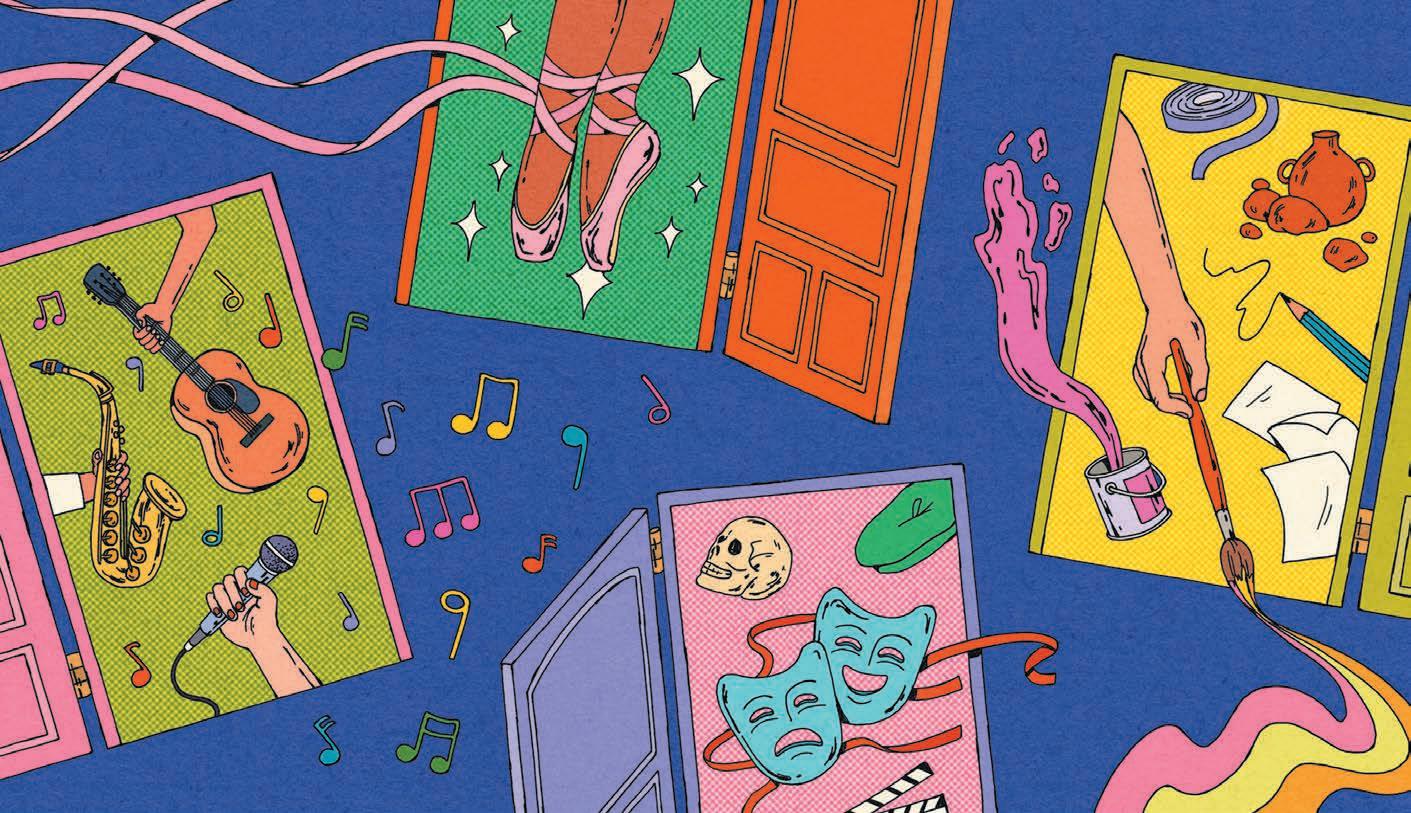
A new county fund will drop nearly $800 million on local arts and culture nonprofits over the next seven years. Will it be enough?
BY VIVIAN MCCALL
ILLUSTRATIONS BY KAITLIN BRITO
It’s been a tough year for Taproot Theatre. Rent, production materials, and the price of fair labor are up, and, despite Artistic Director Karen Lund’s best efforts to compensate by slashing hours, positions have been left vacant. Cutting one of the theater’s three big shows a year hasn’t been enough either, with audiences still lagging 19% behind what they were before the pandemic. Like so many theaters, Lund says, they’re spending more and making less.
“Life went on while the theaters shut down, and we came back and are living four years behind everybody,” she says. “In a oneyear, two-year period, we probably had five years of attrition.”
Doubling the price of tickets and hoping audiences would return en masse is pure fantasy. Lund reasoned that theatergoers living in this expensive city might be budgeting for rent and groceries, or saving their limited entertainment budget for streaming services instead. And then there’s the inevitable changes: After four years, some of the theater’s dedicated patrons simply aged out of night driving.
It came to a head late last year when Taproot realized it couldn’t pay for the 2024
season. They invested in hope, launching a $1.95 million “tiered emergency funding campaign.” Through grants, corporate sponsorships, and individual donations, Taproot has made more than 66% of its goal. Lund is confident they’re going to make it, but she’s an optimist.
Taproot isn’t alone. Look at the local art scene and this story begins to repeat itself, beginning with the initial shock of COVID and ending with empty-ish bank accounts and, sometimes, hard decisions.
In April, theater and community film center Northwest Film Forum (NWFF) cut nearly half its staff. In June, Scarecrow Video, the movie rental store turned nationally known nonprofit film library, made a 1.8-million-dollar plea to the public: Revenue was down 40% since 2015, payroll and rent were up 25%, and the shop could close at the end of the year. In July, Book-It Repertory Theatre staged its last show after 33 years.
And then, early this September, the Bellevue Arts Museum closed its doors to the public and entered into a receivership, a process to make cred-
itors whole. At this point, there’s no telling how that ends. The museum could emerge as something new, or it could dutifully sell its assets.
Although there is no doubt the pandem-
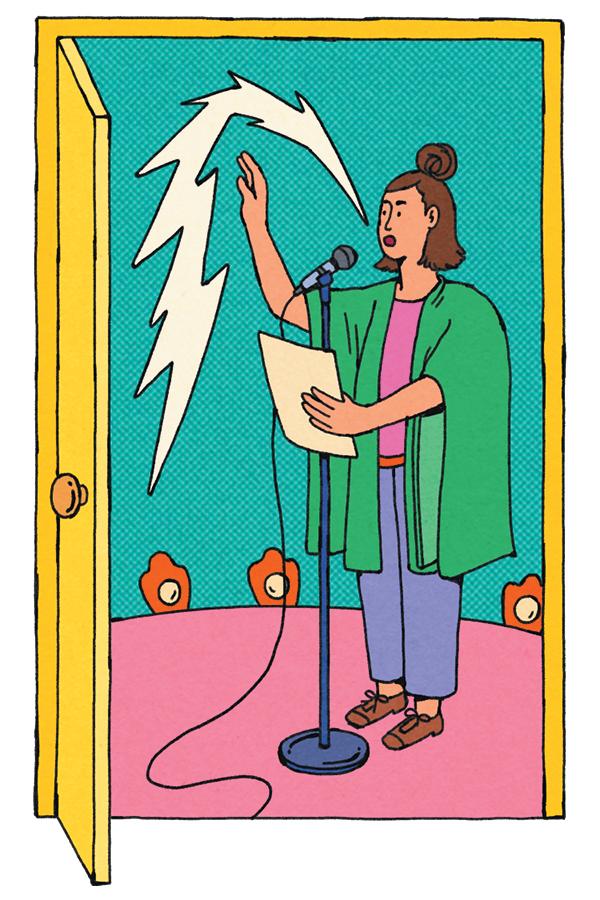
ic made money matters worse for the arts sector, particularly for large performing arts organizations with high overheads, it was vulnerable to begin with. Few organizations were rolling in it and, due to perennially slim profit margins, many productions represent hours and hours of hard work for low pay, and in many cases, the free labor of passionate volunteers. Many organizations depend on the goodwill of donors, and nonprofits have worried about a decline in charitable donations for years.
While some arts organizations have thrived despite these meta problems, cultural spaces of all kinds have been affected, from independent galleries and art house theaters to museums and music venues.
It sounds bleak. But the residents of King County have been constructing a life raft, now bobbing on the horizon.
Surprise! It’s a big bag of money! The county is calling its new fund Doors Open, and it’s a cultural access program funded by a 0.1% increase in sales tax (one penny on every $10 spent, adding up to about $40 a year per family) to support the arts, as well as heritage, science, and historical preservation nonprofits in King County, through 2031.



The relatively small tax hike reaps a huge prize. County funding for arts and culture will jump $48 million this year and up to $100 million next year.
4Culture, the county’s cultural funding agency, will oversee the program and the purse strings. And the equity questions. And the hard work of processing the applica-
“In a two-year period, we probably had five years’ worth of attrition.”
tions. Of the near 700 organizations eligible for funding, nearly all of them—more than 600—have applied. 4Culture will announce the recipients in December and start doling reimbursement funding out in January.
Taproot, Scarecrow, and hundreds of others are eagerly awaiting.
“[The need’s] been persistent during my entire 20-year career,” says Brian Carter, 4Culture’s executive director. “There’s just a thin blanket of support, especially with a large area like King County. There’s just so many organizations.”
How to Move $100 Million
Though the timing is good, the Doors Open fund isn’t a reaction to COVID. It’s the product of more than a decade of pressure from groups like Cultural Access Washington and the Washington State Arts Alliance (which eventually merged to create Inspire Washington) on the Legislature to increase funding for the arts. Their hard work paid off
when legislators finally took action in 2015, passing a law that allowed any city or county in Washington State to issue ballot measures asking taxpayers to foot the bill.
King County made its first attempt in 2017 with Proposition 1, but it failed at the ballot box. It succeeded in 2023 after the Legislature changed the rules: Voters be damned, now cities and counties can create cultural access programs by a committee or council vote. Seeing their opening, the King County Council did just that in December, voting 9–0 to create Doors Open.
Small sales tax increases are not the ideal solution to anything. The regressive tax places an equal financial burden on unequal pocketbooks to fund the same service ($40 is couch change to some and a lifeline for another). But the county has considered equity in other ways. Doors Open sets aside more money for organizations that serve marginalized people, including veterans and homeless people; at least 10% must go to historically marginalized communities. And to ensure Seattle doesn’t take the pot, at least 25% of the money must go to other parts of the county.
Now comes the work of figuring out where the money goes. “We don’t throw the names in a hat and pick them out,” Carter says.
To start with, it’s more complicated than tossing stacks from one big bag of money. It’s actually two big bags of money, “Sustained Support” and “Doors Open Facilities.” Sustained Support provides a year of unrestricted funding to meet an arts organization’s day-to-day needs, as long as they’re a 501(c)3 nonprofit, have at least a threeyear history, and have some record of
artistic or cultural accomplishments (heritage, cultural, and science organizations have their own requirements).
The $24 million Facilities fund was reserved for organizations building, buying, and remodeling physical spaces—pricey projects beyond the scope of fixing flickering lights and leaky plumbing. It’s divided into four separate funding levels. At the lowest, the county will pay the full cost of projects up to $250,000, and at the highest, the county will pay $2.5 million to projects over $10 million.
Carter couldn’t give a hard number, but he expects between 40 and 50 people will handle each application before it’s approved. After the September 4 application deadline,
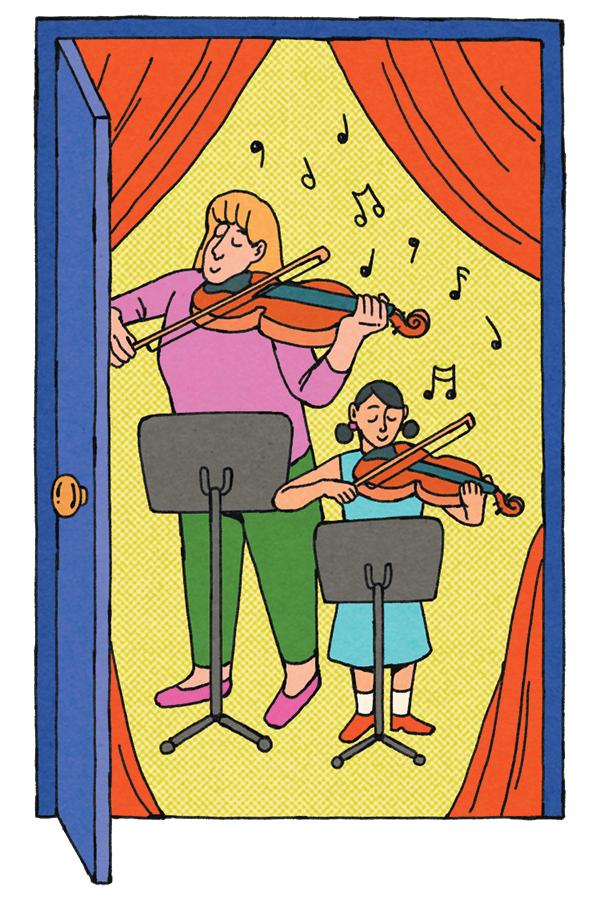
4Culture’s program managers began sifting through the applications, passing eligible ones to peer review panels of artists and art administrators. Those panels send their recommendations to one of five advisory committees, organized by discipline, and they forward their chosen applications to 4Culture’s Board of Directors—a body that includes appointees from each King County Council member and the County Executive—for final approval.
Next year, 4Culture will further divide the tax money into four additional programs: “Public School Cultural Access” to address gaps in K-12 education, “County Connected” to foster collaboration between organizations in different cities, “Launch” for new and emerging organizations, and “Public Free Access” to reduce or eliminate ticket fees for underserved communities.
It Takes Moneyto Make Money
Talk of funding the arts tends to get a little woo-woo. People focus on the intangible pleasures of art, like watching live theater or viewing a beautiful painting, which is nice, but it also gives conservatives the room to argue that government arts spending is frivolous. But make no mistake—the county is betting their fund for the arts will be a literal investment, not a figurative one. The arts are a proven economic engine. In 2022, arts and culture nonprofits in the United States generated $151.7 billion of economic activity and $29 billion in taxes. That same year, the feds gave the National Endowment for the Arts only $180 million, a smaller percentage of the budget than the US allocated during the Reagan years.
For inspiration, the county looked to Tacoma and Denver. Decades ahead of any city in Washington, Denver approved a sales-
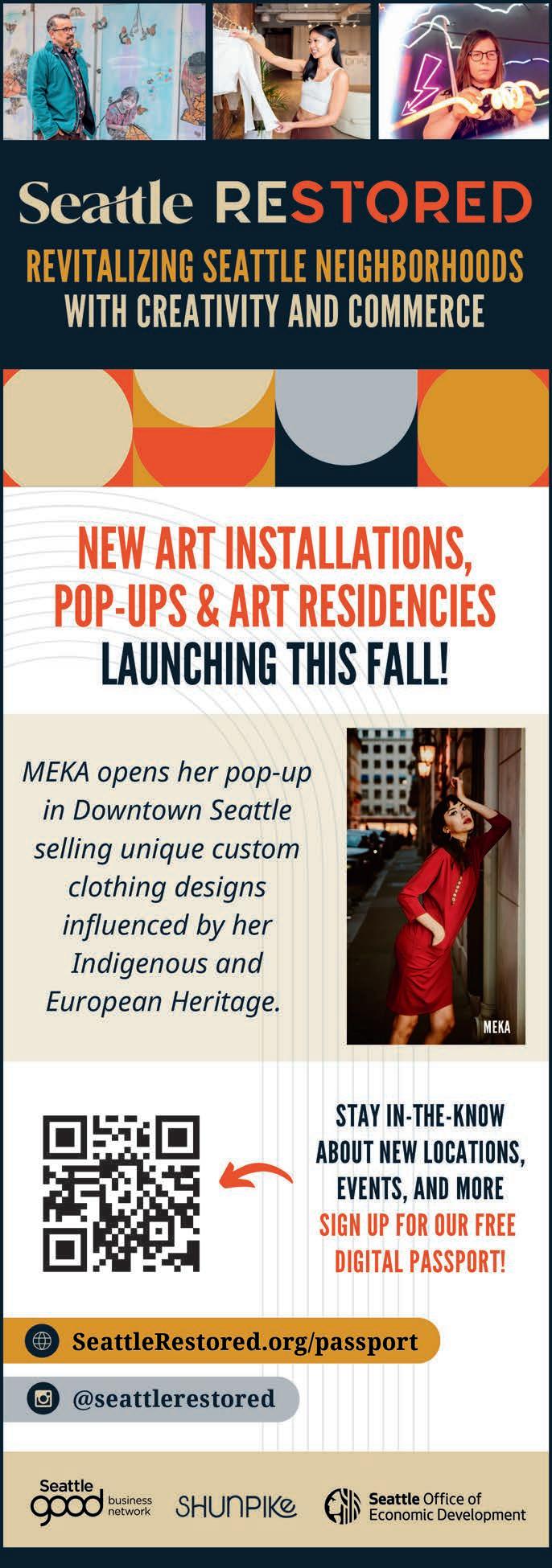
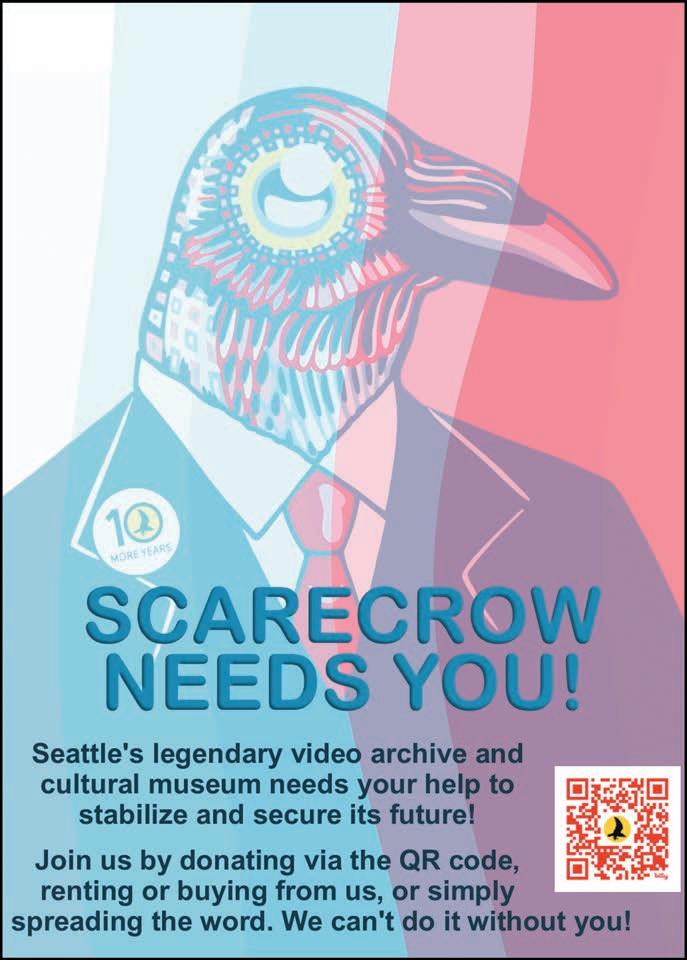
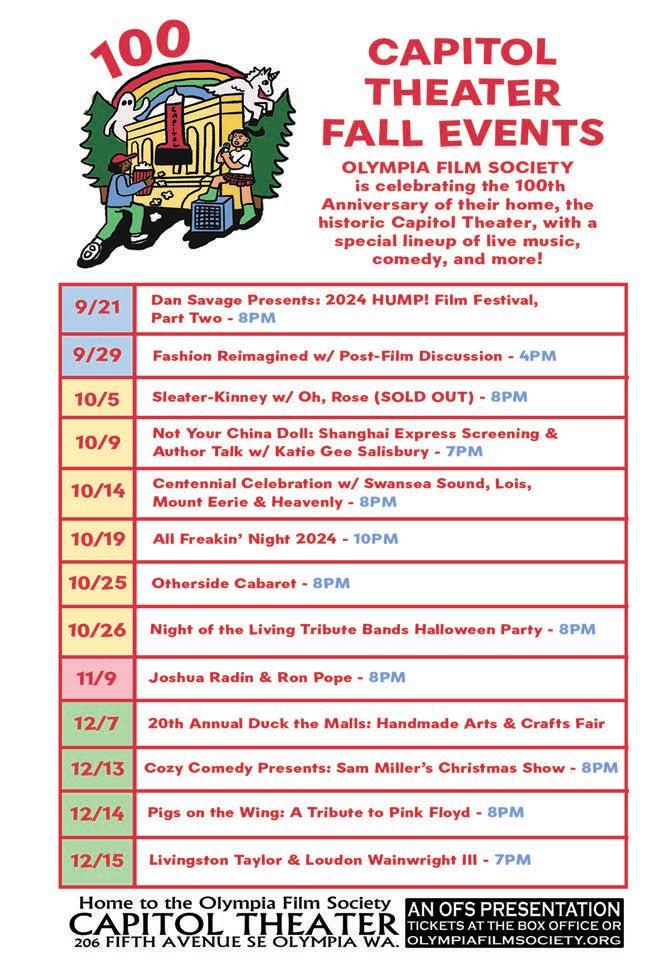
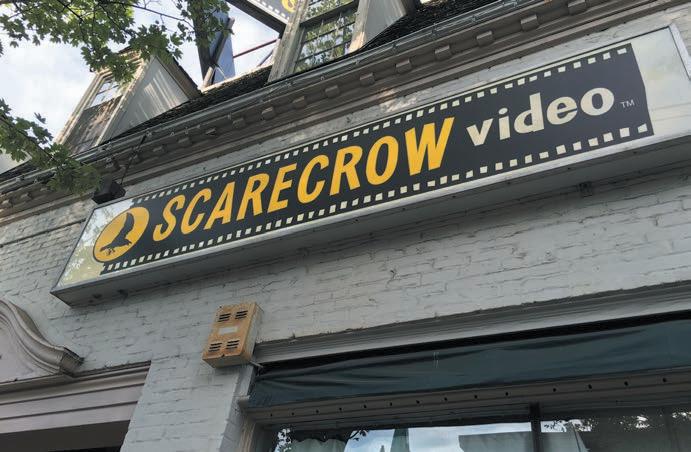
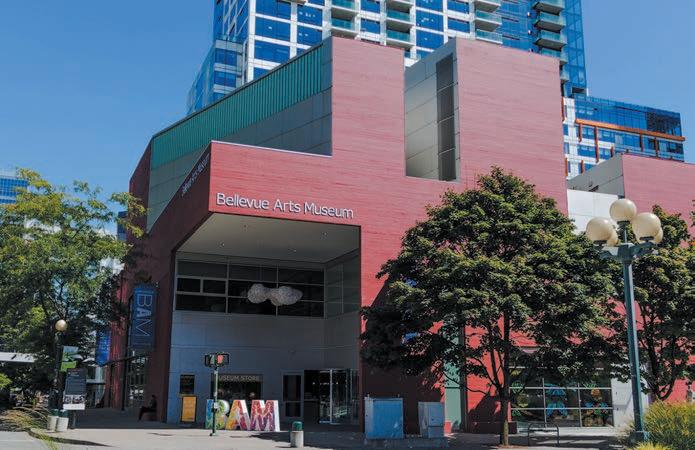
tax-based cultural access program at a time when the city was in an economic crisis that threatened museums and galleries. Examining tight budgets for someplace to cut, the eyes of the city and state fell on funding for major institutions like the art museum, the zoo, and the botanic gardens. Instead, their trustees emerged with the idea for the Scientific and Cultural Facilities District (SCFD), a seven-county, voter-supported tax district to fund the arts in metro Denver.
“The arts community has really been struggling. This could be that thing that helps us turn a corner.”
That same year, Deborah Jordy was a pregnant soon-to-be mother, afraid she’d lose her assistant curatorial job at the art museum. But her world grew with the fund. Today, she’s SCFD’s executive director and responsible for funding 300 organizations with $84 million in public funds. Their grants span from $500 to $12 million, she says. “So, yeah, it’s real money.”
It became a sort of preview of what sustained local arts funding can do over time. When COVID hit, Jordy says SCFD helped the local arts scene remain stable. She says only four small organizations fell, and two of those collapsed because they succumbed to “founder’s syndrome”—when founders retire without a succession plan. Additionally, public dollars tend to incentivize public engagement and access. There’s the money to fund free trips to the Denver Botanic Gardens from assisted living facilities and schools, as well as free programs like the Denver Center for the Performing Arts’s “Shakespeare in the Parking Lot,” which is exactly what it sounds like—they park, jump out, and start performing Shakespeare. And she says the regional funding also inspires a spirit of regional collaboration between organizations big and small, and it brings artistic experiences to people where they live and work. And because so many arts organizations spend more of their budget to keep the lights on, public investment invites artists to take risks.
In November 2018, Tacoma voters became the first to take advantage of the change in state law when they approved Tacoma Creates. Its first full funding cycle was in 2020 – 2021, and it could not have come at a better, if not chaotic, time.
In the last four years, annual city funding for arts, culture, science, and heritage organizations in Tacoma increased by $5 million a year, adding to the annual $200,000 in arts funding from the city’s general fund. Program manager Lisa Jaret says that that money helped stabilize arts organizations and support the local economy. Economic impact studies show that the average person who attends an artistic event doesn’t just spend money on admission; they also pay for parking, a hotel, dinner down the street, or childcare.
A study by Americans for the Arts found that people who traveled to Tacoma for an arts event spent, on average, $34 dollars outside the cost of admission. In 2022, the arts stimulated the local economy to the tune of $163 million. When compared with American cities of between 100,000 to 249,000 people, Tacoma generates nearly five times the median tax revenue from the arts and more than five times the direct expenditures.
Slices of the Cake
Certainly, money sounds good, but taken as a whole, $100 million a year isn’t that much money. Imagine it as a tiered wedding cake, decorated with red roses and piped garlands of buttercream frosting, resting uncut on a silver platter.
Even from the back of the long line (in this analogy, you’re a plus-one and unimportant), the cake appears enormous. It looms, even. You wonder how you’ll finish the enormous slice you’re sure to receive. But when you arrive, the caterer hands you a sliver on a small plate, and you’re reminded how quickly hundreds of people can reduce a cake to crumbs and smudges of frosting.
Money is not cake (it’s better), but like hungry wedding guests, more than 600 organizations are already queued up. When you add the total budgets from all the eligible museums, galleries, venues, studios, science centers, and heritage organizations, the sum equals $1.5 billion. Carter says he
could not speculate on how many of them will receive funding and how much money individual organizations might get.
But to employ another cake-based analogy: Doors Open funding is not frosting. It’s the eggs, meaning that A) the flour, sugar, and butter must come from someplace else and B) it’s not a replacement for other funds.
Arts organizations cobble their income together from a litany of funding sources. In Seattle, organizations can apply for private money, solicit donations, launch fundraisers, go for federal grants, state grants, and money from the City. Through a municipal admissions tax, the Office of Arts & Culture supports the local arts economy.
There is concern in the arts community that our municipal leaders may see Doors Open funding as an opportunity to chip away at the City’s projected $240 million deficit by cutting local arts support. Earlier this year, Inspire Washington and the Seattle Arts Commission solicited nearly 400 letters from supporters asking city leaders to retain 100% of the admissions tax for arts and culture.
Later this month, Mayor Bruce Harrell will unveil his proposed budget. I asked if he was considering cutting arts funding, and his office sent a statement dodging the
specific budget question but affirming his commitment to championing arts causes.
In the Thick of It
It’s been less than six months since Derek Edamura laid off five people at Northwest Film Forum—enough time to stop a hemorrhaging financial wound, come to a relatively stable position, and begin to see the faintest signs of recovery. Re-hiring is not on the table in the short term, but if everything goes “ideally,” they’ll bring back two to three jobs in as many years.
The day we spoke, Edamura’s major— and still unfinished—task was to finish his application for Doors Open. He’s hopeful that they could be looking at a sizable increase in county support, but he’s tempering his expectations and not counting on a drastic improvement to their financial situation. He trusted 4Culture to do the right thing but expects inevitable mistakes from a new program with a condensed application process.
“There is a lot of intention right now to disperse the money in equitable ways,” he says. “But until we see the outcomes, until we see how all of this makes it to the community, I think we should all be a little bit hesitant, and we should all be willing to hold these institutions accountable for dispersing these funds.”

After years of financial instability, Bellevue Arts Museum closed its doors to the public on September 4, which was ironically the application deadline for Doors Open. Executive Director Kate Casprowiak Scher even met with 4Culture to see if BAM could access the fund early. To the last, she had every intention of applying. Kate Barr, executive director of Scarecrow Video, says the “proof will be in the pudding,” but based on conservative estimates, Scarecrow could receive five times of what they get from the county—enough to make up a chunk of dried-up federal CARES Act dollars. It gives her a lot of hope.
“You just hear week after week, month after month: This place has closed its doors, or this place is on the verge of closing its doors,” she says. “And whether they’re for-profit or nonprofit, I think the arts community has really, really been struggling. ...This could be that thing that helps us turn a corner and revitalize all of that again.” ■

BY CHASE HUTCHINSON
From Twin Peaks to The Ring, horror filmmakers have long been drawn to the Pacific Northwest’s moody, fickle, gray backdrop. It’s a region that can do foggy, rainy, and dreary dread, just as it can be unexpectedly bright and sunny, making it a malleable setting that can twist your expectations and keep you delightfully unsettled through an entire film.
Nobody captures this better than the talented filmmakers who call Seattle home.
For writer and director Lael Rogers and editor and producer Megan Leonard, making films in the Pacific Northwest is essential to capturing a distinct feeling you can’t find elsewhere. “It feels like it exists in this imaginary world,” says Rogers.
Rogers and Leonard both worked on the incisive short The Influencer and the delightful Dream Creep, two new local horror shorts that are making a splash this year.
In The Influencer, videos of a content creator’s “perfect day” lead us to a variety of familiar, comfortable spaces—an apartment, a car, a bustling local club. But then
the film descends into a gleeful nightmare on a beach, where we learn the dark secret behind one influencer’s success. A Pacific Northwest coastline is the perfect setting for a scene of a bloody sacrifice, where screams echo across the water’s surface.
Leonard says that pivotal moment could only have been done justice in Washington.
“That’s Seahurst Park in Burien,” Leonard says. “I had actually shot something there years ago, so it was on my radar. We roamed all around Western Washington, looking for the right spot. Parks in Seattle, some alpine lakes out east, but everything brought us back to Burien.”
After making connections with other filmmakers while working on Influencer, Rogers also wound up doing effects for writer and director Carlos A.F. Lopez’s unsettling local short Dream Creep. It was called the “scariest short on the festival circuit” by IndieWire as it made the festival rounds earlier this year.
The film centers on a couple who are having a restful night’s sleep until one of them begins hearing an eerie voice coming from inside their partner’s ear. Chaos and gore en-
sue as the two develop a strategy to remove the unwanted visitor.
Both films required a lot of experimentation behind the scenes. Multiple scouting road trips were required to get the locations for The Influencer just right, whereas perfecting Dream Creep’s effects meant Rogers had to shove blood up Leonard’s nose in a
“The stuff that’s made in the Pacific Northwest doesn’t feel like the stuff made in other places.”
pre-shoot test. “We’re always like, ‘We’re down, we’ll figure it out,” Leonard says with a laugh.
They think this year of breakout local horror short productions can only lead to many more good things, including making a leap toward taking on features of their own. The
one thing they’re not looking to do? Leave Seattle behind.
“I always felt like I was just being stubborn not moving [away from Seattle] because I just liked living here,” says Rogers. “I have never been so vindicated. I think making art in a unique place and making art in a different diversity of places makes for more interesting art. The stuff that’s made [in the Pacific Northwest] doesn’t feel like the stuff that’s made in other places.”
“I feel like there’s a convergence of a lot of different people happening right now,” adds Leonard. “I think the community in Seattle has been very separated from each other— people making things independently of each other. With The Influencer, we brought a lot of new people in, and it was a much bigger production for us. We all just come from a place of wanting to make movies together. Movies that we would like and want to watch.”
The Influencer is available to watch on Vimeo. See Dream Creep at the Gig Harbor Film Festival September 26–29. Tickets are available at gigharborfilm.org.
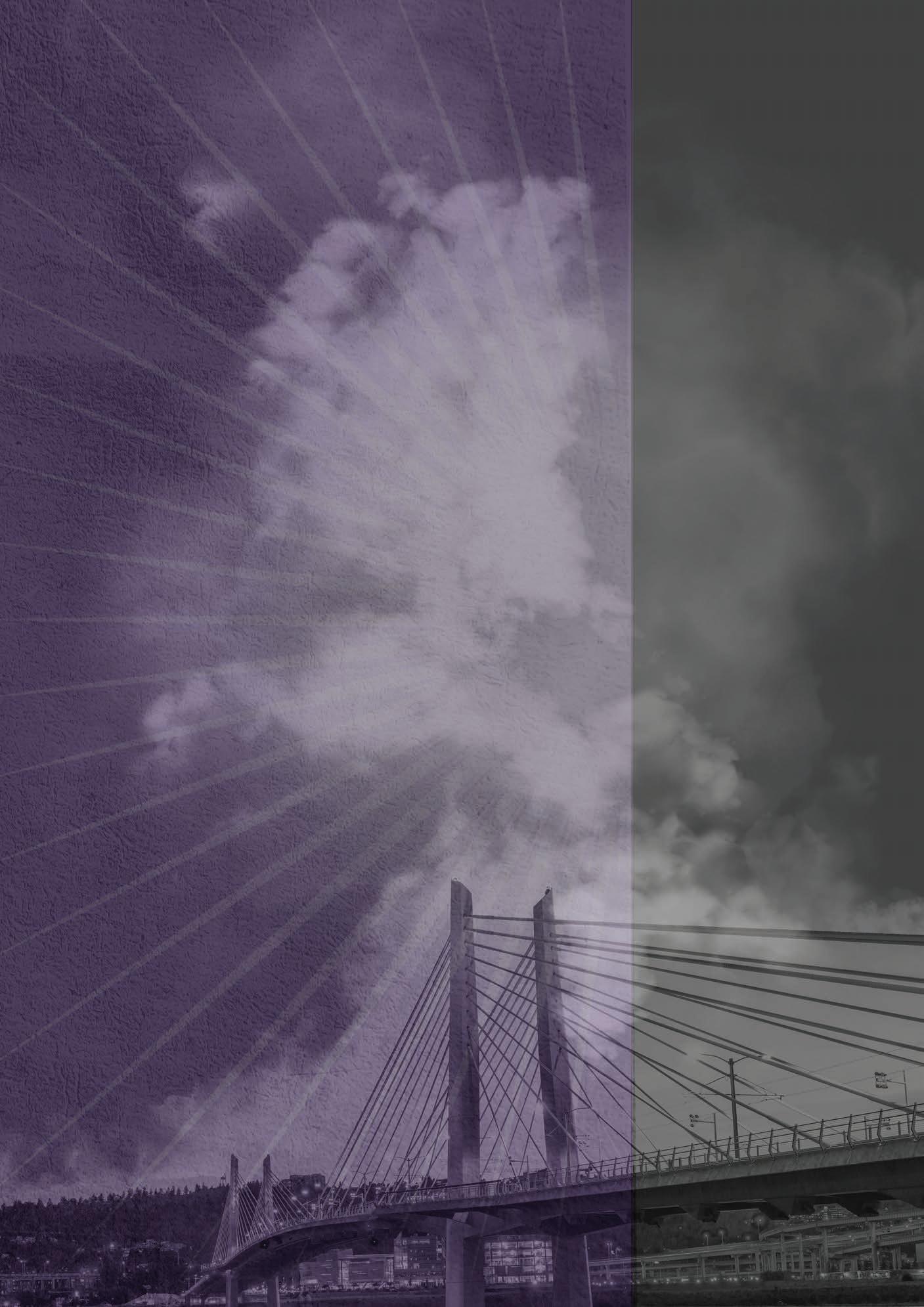
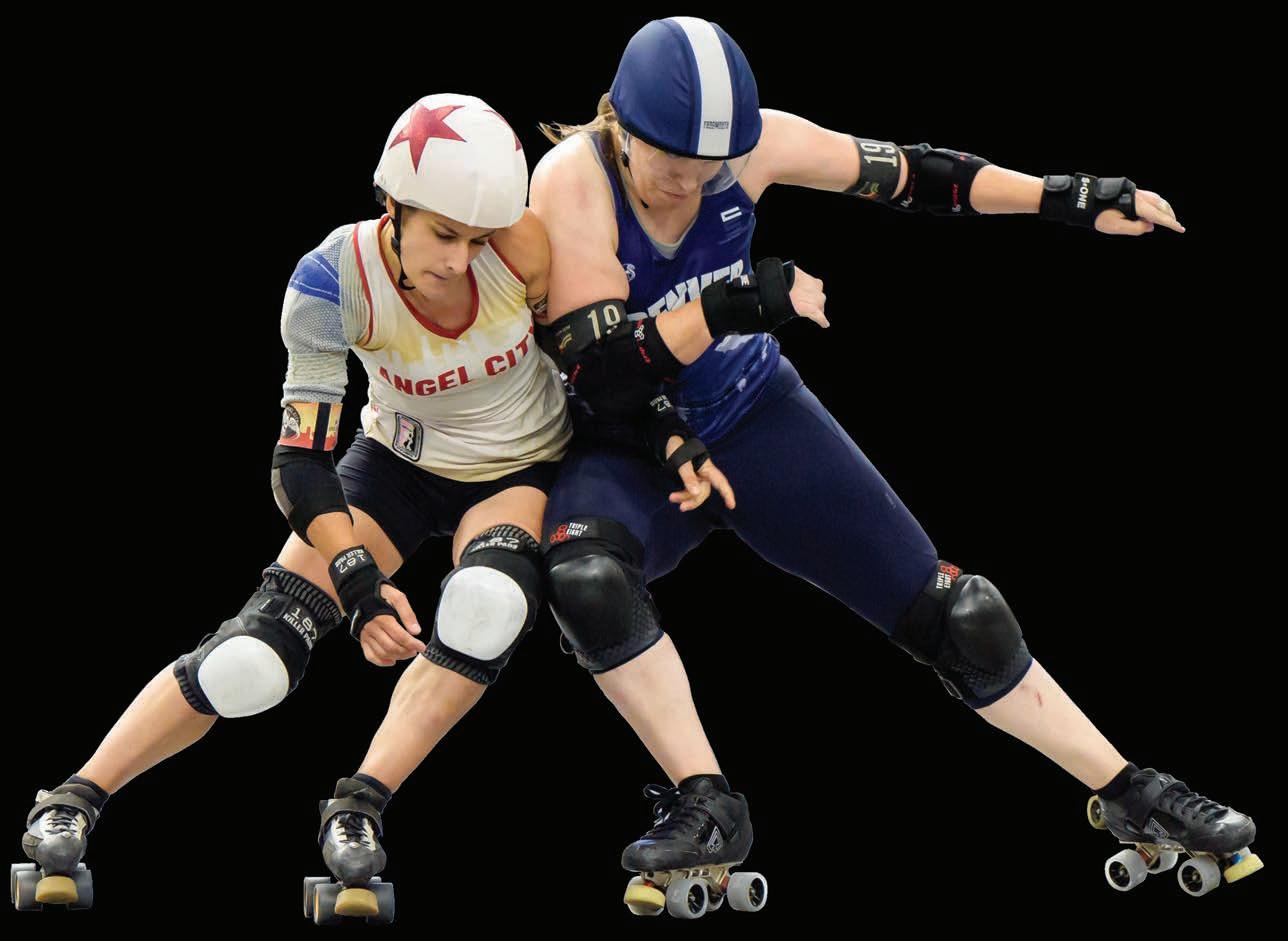





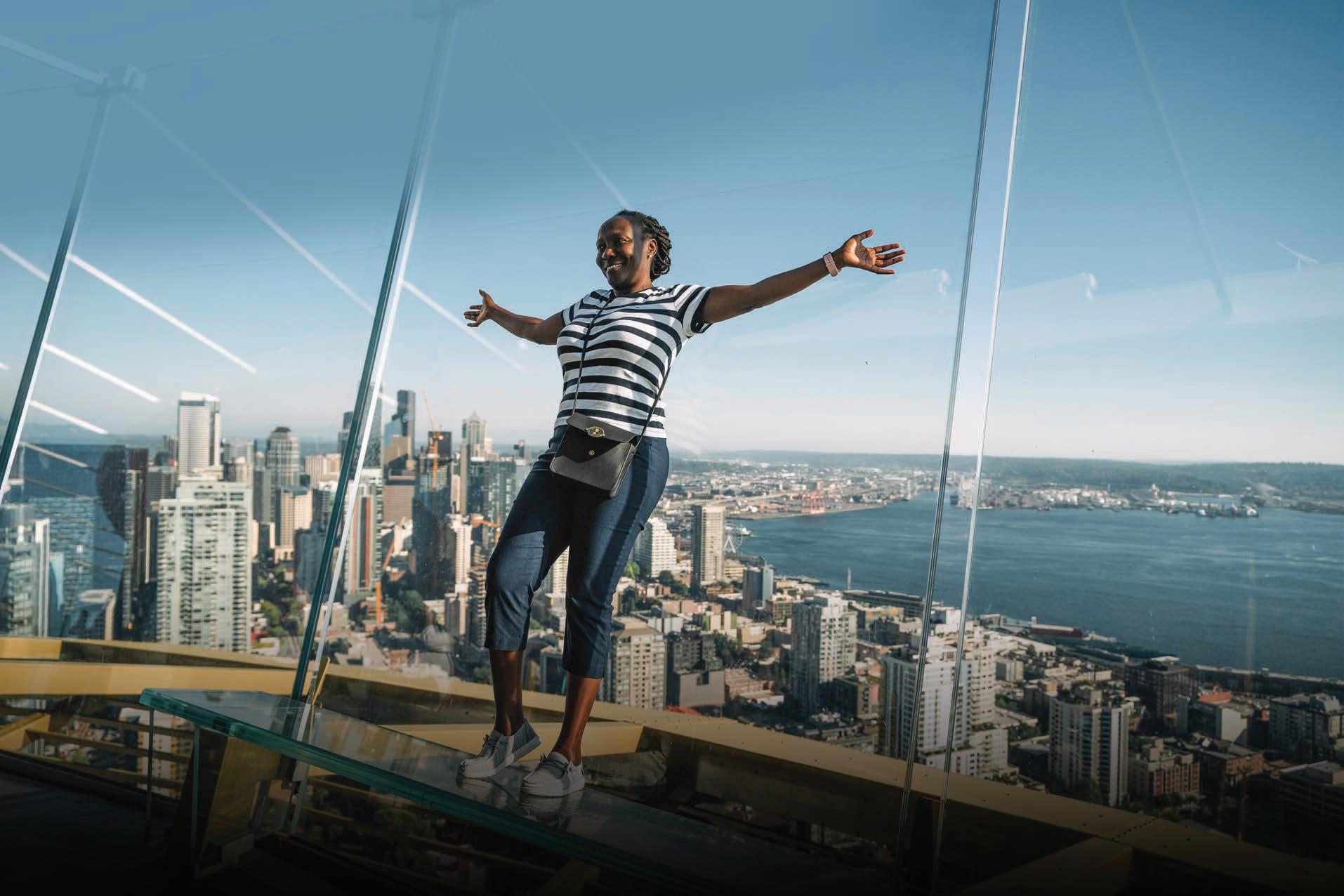
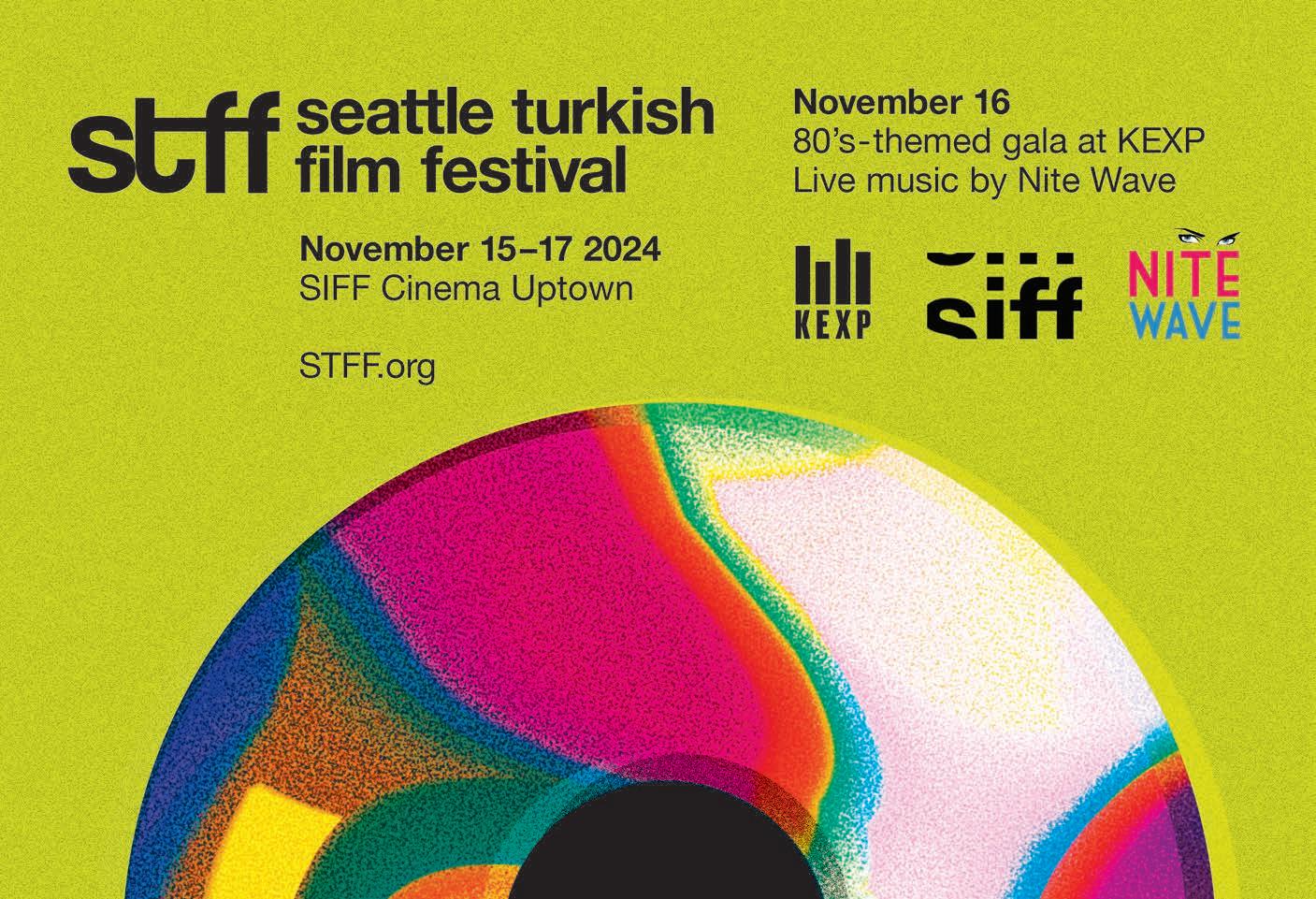
How Nonfiction for No Reason Is Helping Seattle’s
BY ADAM WILLEMS
PHOTOS BY BILLIE WINTER
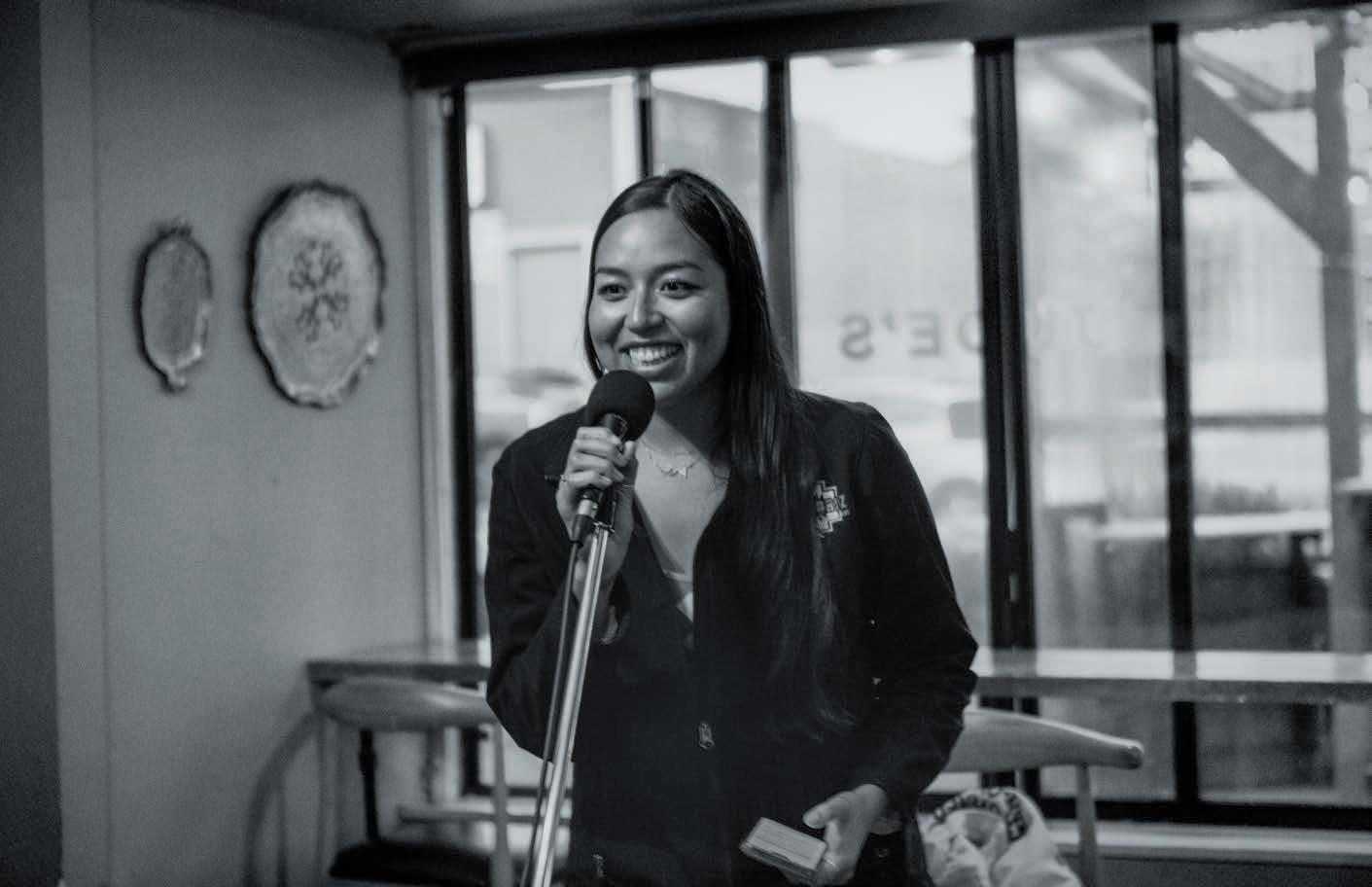
On a gloomy May evening that seemed best suited for introverted lethargy, 60 people shuffled into Common Area Maintenance (CAM) in Belltown. Congregating under the builder space’s lofted ceilings, marinating in its artsy allure, and snarfing down cozy snacks from Off Alley, attendees seemed happy to mingle in a cultural venue that stands out along an otherwise dive bar- and NFT Museum-dominated stretch of Second Avenue.
The crowd was gathered for the tenth edition of Nonfiction for No Reason (NFNR), a literary reading series highlighting local nonfiction writers hosted by the event’s founder, Katie Lee Ellison. A foil to the low-energy drizzle pattering on CAM’s large front windows, NFNR offered a dynamic cast that rewarded extroversion and excitement for what Seattle-based writers can bring to the table.
Moonyeka , an interdisciplinary artist often found at Jack Straw Cultural Center, kicked the night off by recounting their partner’s woeful experiences navigating medical systems as a trans person. (“Trans
healthcare is pretty garbage,” they concluded.) Putsata Reang likened her sexuality to a river running through Phnom Penh. Anu Taranath described her young daughter’s sense of solidarity with an elderly Black couple— the only other people of color at a gospel performance near Seward Park—and their positive reaction to her daughter’s enthusiasm. Kamari Bright presented some spoken
steeped in personal experience, listeners— while eating duck rillettes and sipping wine—risked being the wrong audience to match such vulnerability.
But a mix of sincerity and levity throughout the lineup kept the audience attentive and capable of meeting the moment. Some writers even deftly channeled a range of tenors, including Amy Hirayama, who, to close
“Fuck it, I’m gonna just do my own [reading], and I’m gonna make it the dream reading that I want it to be.”
and video essays, including an entreaty for strangers to stop commenting on her womb. And Jay Aquinas Thompson meditated on grief and queerness and Catholicism.
The event didn’t seem to intentionally carry a theme, but all eight readers focused on identity. With writers sharing work
out the event, traced her lineage via Hawaii to her family’s ancestral hometown on Okinawa, describing the Japanese island’s experiences of colonialism and war—all through the pork and other delicacies she ate while touring the area with her father. Hirayama’s reading was a master class in discussing
deeply serious topics through appropriate and sensitive levity.
NFNR was born last year and resulted from a disappointing writers’ convention.
The Association of Writers & Writing Programs (AWP) and its 12,000 annual conference-goers descended upon the Seattle Convention Center in March 2023. Every year, these writers, teachers, publishers, and editors assemble here to rub shoulders and catch up on the latest and greatest in literature. In most cities hosting the conference, local literary institutions will kick their programming into high gear, platforming a region’s writers to the industry’s who’s who through offsite readings near the convention centers. In Seattle, a UNESCO-certified “City of Literature,” the conference struggled to showcase a healthy regional literary community.
To Ellison, a Seattle-based writer who grew up in Los Angeles, the Emerald City’s lackluster showing for AWP was an iodine trace for the ails afflicting the area’s writers. She was a fellow at Hugo House—once the state’s largest writing-focused nonprofit



year.”
and an anchor in the community—between 2016 and 2017. But in 2020, the organization began weathering a financial crisis following allegations of racial discrimination and its executive director’s ensuing resignation, and it’s still struggling to recover. Ellison says the nonprofit’s dwindling presence in Seattle, in addition to the effects of the COVID-19 pandemic on cultural programming, made her feel “totally unmoored” and unsure of where Seattle’s writing community stood. It also meant Seattle writers had few ways to promote their work while a potentially career-altering conference was in town; If the city’s literary institutions were stronger, Ellison thinks she and other local authors would have had a presence at the conference.
“It’s creating something that does actually do it differently from how we’ve all been told it needs to be done.”
Instead, many of the city’s writers heard crickets. “When I knew AWP was coming here in March of 2023, I was like ‘Are you guys fucking serious? Nobody’s going to ask me to read anywhere,’” Ellison says. “So
I said, ‘Fuck it, I’m gonna just do my own [reading], and I’m gonna make it the dream reading that I want it to be.’”
The final result of Ellison’s efforts took place at Capitol Hill nightclub the Woods; it was somewhat informally and unintentionally cohosted by the literary publication The Rumpus, due to scheduling and venue SNAFUs. The reading saw more than 100 people in attendance and cast a spotlight on writers like Wolfish author Erica Berry, short story writer Corinne Manning, Portland essayist Katherine D. Morgan, and journalist Kristen Millares Young.
The lineup also featured Anastacia-Reneé, formerly a poet-in-residence at Hugo House and the inaugural Seattle Civic Poet from 2017 to 2019, during the city’s first year of UNESCO status. They overlapped with Ellison at Hugo House and served as her mentor, encouraging her to publicly share her works in progress: a way to get feedback that nonfiction writers often avoid.
“As a hybrid writer[-poet], it was freeing reading in a space that was ready for nonfiction but [that was] receptive to humor and very serious things all enmeshed in one another,” Anastacia-Reneé says. “It was a packed crowd, and I saw the bringing together of the community. I read a piece that was in its draft state, and even though I was nervous, I did not feel unsafe.”
A sense of propulsion following the March reading—vocal interest from other writers, a seemingly endless list of eligible locals to platform—meant it was far from Ellison’s last, instead becoming NFNR’s in-

augural event. Its programming is growing in frequency and scale, but NFNR continues to harbor small but mighty intentions by fostering a sense of writerly community and unabashedly celebrating it, by providing some remuneration to writers, and by offering a forum for writers to promote upcoming work. Or, hell, to even successfully sell something they’ve published.
Those last financial tenets aren’t particularly sexy but are especially important in Seattle, where artists, including writers, are struggling to keep up with the city’s rapidly rising cost of living.
Hirayama, for example, who read at the May event, grew up in Shoreline and still lives there. She exemplifies the frustrating chasm between superb skill and material shortcomings that seems to define being a writer in Seattle. She juggles four jobs—roles at South Seattle College, Writers in the Schools, Clarion West, and CAM—to make ends meet.
“I think my mode of operating is probably not for everyone,” she admits.
Ally Ang, a local poet and editor who previously worked at Hugo House and now makes their income as a grant writer for a reproductive justice nonprofit, performed at NFNR’s second event in 2023. They said NFNR strikes a healthy medium as a noninstitutionalized but reliable space where people are coming together “for the love of it.”
igins—including Anastacia-Reneé—at Book Club Bar in New York on September 12. She’s secured fiscal sponsorship and is looking to land larger grants in 2025; she also wants to pay writers more, and pay herself more. Of the $7,500 Ellison has raised so far that hasn’t gone to venue fees or taxes, she’s distributed $25 to each of the program’s 80 participating authors and paid herself $2,100 for hundreds of hours of work. She acknowledges that that remuneration is far from enough for the writers, and she knows that NFNR is far from sustainable income relative to her output.
“A lot of times you have to either choose to be community-based and DIY or extremely polished and extremely beholden to the funders, and I feel like that’s bullshit,” Ellison says. “You can have a really fucking nice thing that also platforms people you’ve never heard and pay them a lot of money… That’s a lot of the motivation for doing this. It’s creating something that does actually do it differently from how we’ve all been told it needs to be done.”

It’s not just Ellison who seems doggedly committed to centering literature in Seattle’s future. NFNR participants named a range of spaces to that end— Mam’s Books in the C–ID, Charlie’s Queer Books in Fremont, Open Books in Pioneer Square, Writing Black @ The House—many of which are less than a year old.

“It’s important to not solely rely on institutions that are often beholden to boards of directors or… don’t necessarily represent the needs of the community, and to instead make sure that we are creating spaces that really do represent us,” they say.
Ellison is working to slowly transform NFNR into a modest Seattle-based institution, while keeping true to its roots and its small-scale values. She’s taken the series on the road, hosting events in LA and Tokyo, and she showcased writers with Seattle or-
“Writers in Seattle really do support each other… which does make me hopeful, despite the fact that it’s really hard to live here as an artist or a creative person,” Ang says. “They keep raising my rent every year, so who knows. But I love living in Seattle, and I want to stay here as long as I can afford to.”
This season’s Nonfiction for No Reason events are Friday, October 11, at Little Saigon Creative, and Friday, November 1, at Northwest Film Forum. Find more info at nonfictionfornoreason.com.

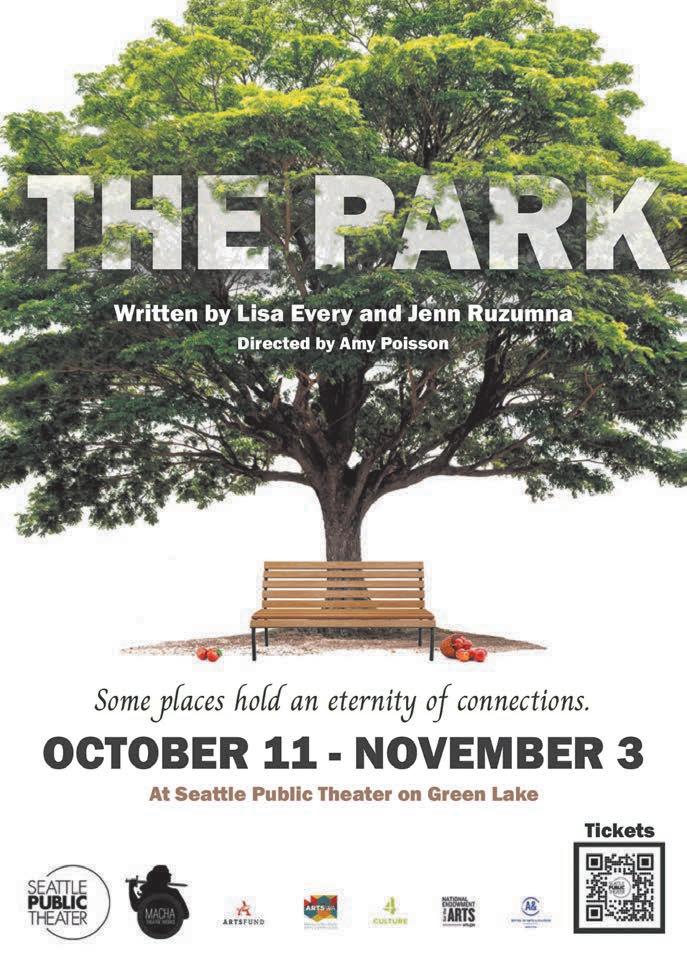

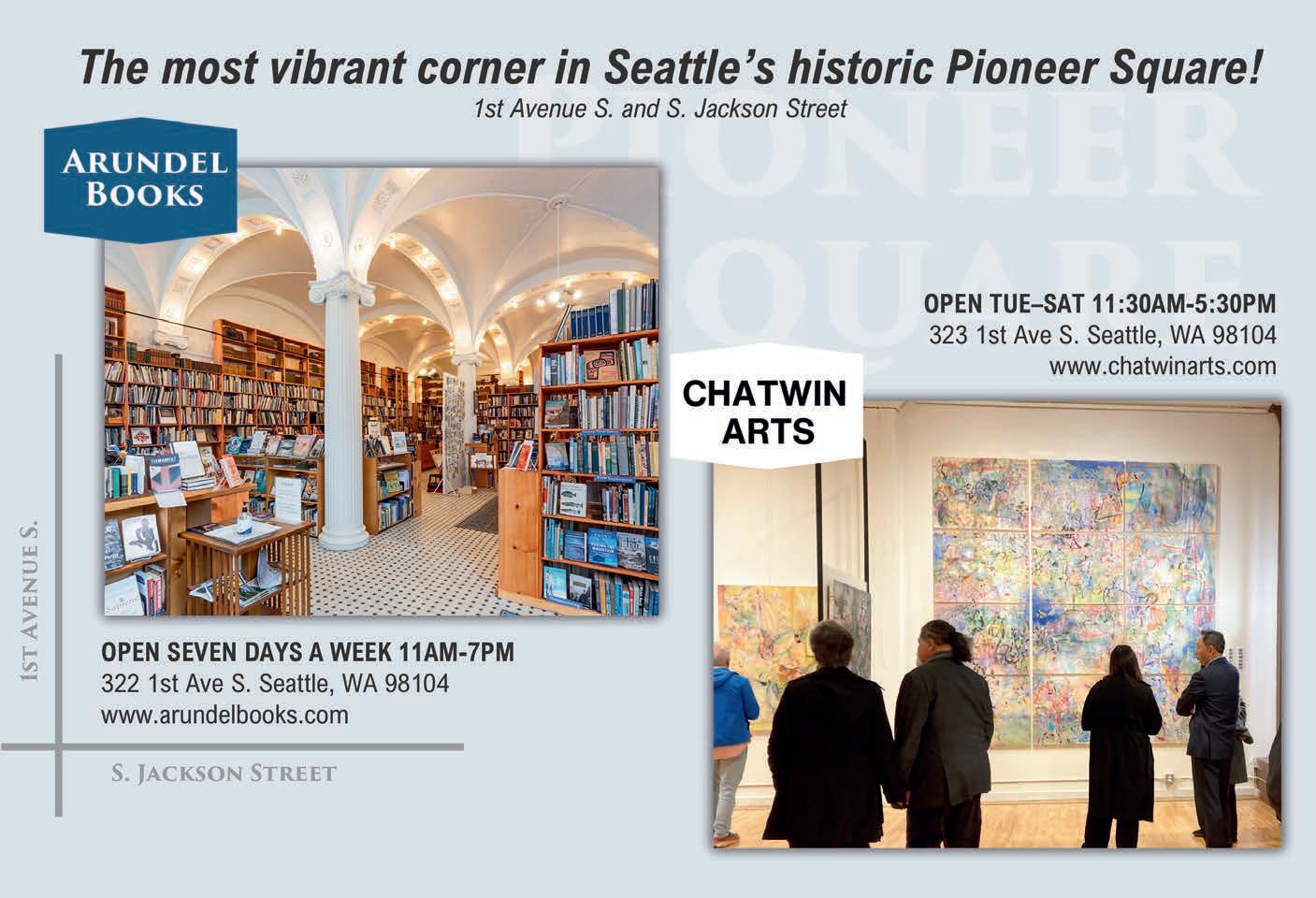




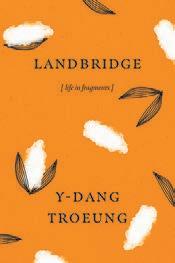
Well, the weather outside is… wait. It’s too early for that. But shit is about to get gnarly. Seattle may have experienced a record-breaking streak of 80-degree days this summer, but now we’re entering the rainy season, the gray season, the time of year when the best thing to do is stay home and read. (And watch Secret Lives of Mormon Wives. But also read.) November is historically the wettest month of the year here, with more than six and a half inches of rain on average, and December has the fewest hours of sunshine for the year.
To help you ease into hibernation, we asked some of our favorite local authors and booksellers what they’re reading this season, so your TBR list doesn’t shrivel away with the sun.

“I’m in the middle of my traditional biennial reread of The Essential Dykes to Watch Out For. Alison Bechdel’s comic strip ran from 1983 to 2008 and is to my mind the great real-time chronicle of the end of the 20th century. Besides being hugely fun to read, it reminds me as a writer that I am living in a historical moment and it’s my job to bear witness/get this shit down on paper.”
—Claire Dederer, author of Monsters: A Fan’s Dilemma and finalist for the 2024 Washington State Book Award in Creative Nonfiction/Memoir

Eva Walker: “Believe it or not, I’m reading ! I absolutely love the show and have been getting more into writing, as I just wrote a book with my husband on music, but also trying to do more culture writing as well. This book is a style I like quite a bit.”

Jake Uitti: “The book I just finished was Green Bananas by Pat Rummerfeld. After a car accident left him paralyzed at 21, he eventually learned how to walk again, much to the surprise of doctors everywhere. He’s since run just about every kind of race and set speed records in race cars. His perseverance is astonishing and inspiring!”
—Eva Walker and Jake Uitti, authors of The Sound of Seattle: 101 Songs That Shaped a City
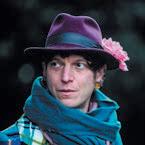
“In Here in the (Middle) of Nowhere , Anastacia-Reneé fuses her skills as a poet, playwright, storyteller, conceptual artist, fugitive feminist, and queer world-builder to conjure the spaces between witness and want, overstimulation and incantation, craving and obliter -
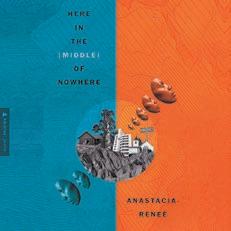


ation, sisterhood and fury. In this house of memory’s music, the windows blow open, the floorboards shake, and the roof flies up to the sky—making room for the rhythms of grief, rage, sorrow, sweetness, bodily inquiry, and revisitation.”
—Mattilda Bernstein Sycamore, author of Touching the Art and finalist for the 2024 Washington State Book Award in Creative Nonfiction/Memoir

Landbridge by Y-Dang Troeung. Ever since I opened Mam’s Books, this book has been on my radar, since I’m Cambodian American. It’s a memoir by a Cambodian refugee who settles in Canada with her family. Her story of trauma and migration is all of our story, whether we choose to understand why or not. It’s also a powerful testament to a mother’s love for her young son and husband as she confronts a terminal disease.”
—Sokha Dahn, owner of Mam’s Books
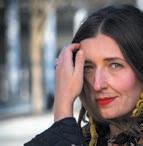
“I just started Anna Marie Tendler’s Men Have Called Her Crazy , the artist’s memoir about her time in a psychiatric hospital and reflections upon her life experiences, both before and after. It’s a raw, painful, and at times almost per-
versely funny look at how misogyny shapes and harms us. It’s bluntly and beautifully written, but I’m taking it a little bit at a time because it hits me straight in the heart.
“I just finished Nightbitch by Rachel Yoder, a bizarre and eminently readable book about a new mother who gives up her career as an artist to stay at home and take care of her child, and who may or may not be slowly transforming into a dog every night. It’s a deeply frustrating and fascinating allegory for all the invisible labor women do, the impossible load put upon new mothers, the transformative nature of motherhood, and how maybe we all just need to go a little feral to regain ourselves.”
—Geraldine DeRuiter, author of If You Can’t Take the Heat: Tales of Food, Feminism, and Fury

“ Another Word for Love , by Carvell Wallace. I’m in awe of this memoir, which feels transformative, ferocious, poetic, intimate, tender. I practically underlined everything in this book. From the beginning: ‘I try not to bother too much about figuring out which truth is the truest. A lot of things, I have learned, can be true at once. That is how I survived.’”
—Jane Wong, author of Meet Me Tonight in Atlantic City and finalist for the 2024 Washington State Book Award in Creative Nonfiction/Memoir ■
BY MEGAN SELING
My memory is hazy, but I’m pretty sure I screamed the first time I saw one of Tyler Thrasher’s crystalized cicadas. It was gorgeous. The bug’s body was completely engulfed with hunks of vibrant purple crystal, and its lacy wings shimmered with delicate shards of stone. It looked like something you’d see flying around planet Thra.
I wasn’t the only one mesmerized. Soon after debuting them on Instagram, Thrasher began to post the sparkling insects for sale on his website, and they sold out within minutes every single time. (I’ll get you one day, cicada!)
Thrasher first got into crystalization in college, when his interest in chemistry and mineralogy collided. After some experimentation resulted in successfully growing synthetic crystals on rocks, he was inspired to go a step further.
“It hit me. I can grow crystals on anything—what if I grew crystals on a dead bug?” he says. “So I found a cicada shell in our backyard and put it in a crystal solution. I woke up the next morning and the crystals had exploded out the back of the cicada shell, and it was, hands down, the coolest thing I’ve ever seen. It completely changed the trajectory of my art. It changed my definition of what art could be. It taught me that science and art cohabitate. It really changed everything for me.”
With Thrasher and Mudge coming to Town Hall Seattle on Thursday, October 3, I couldn’t resist an opportunity to ask Thrasher how the hell he ended up building a fascinating career out of making dead shit beautiful.
I’ve seen you crystalize everything from cicadas to snakes to dragonflies. Is there anything you tried to crystalize that turned out to be a flop?
There are lots of things. I’ve tried crystalizing different skulls and things like that, and they don’t always work. A lot of surfaces that are too smooth won’t allow crystals to nucleate, so they just kind of fall off of the object. That was a learning curve. I had to learn that the more texture to the surface, the better the crystal nucleation is.
Growing opal on an object is a different process than growing crystal, because it’s a different structure. When did you start opalizing objects?
I had put out in the world that I’m the guy who grows crystals on dead things. [Laughs] Lots of people on the internet showed me this photo of a crab claw that was opalized. It’s this bright electric blue/cyan blue crab claw that looks like a magical artifact out of a video game. It blew my mind.
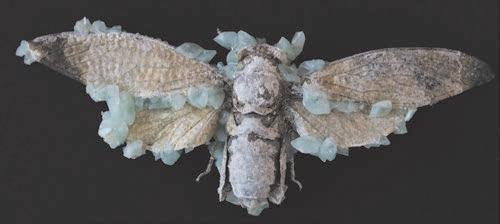
Over the years, Thrasher has crystalized scorpions, snail shells, butterflies, stick bugs, snake skeletons, and mummified baby chameleons, and recently he’s moved on to opalization. Now, more than 423,000 people follow his scientific experiments on Instagram, where he’s developed a knack for explaining complex theories in easy-to-understand ways without sounding condescending.
His newest way to incite excitement in STEM is his book, The Universe in 100 Colors, which he co-authored with his friend and fellow scientist Terry Mudge. It’s part science book, part nature book, part educational book, and part art book. In it, Thrasher and Mudge explain how some of the universe’s more captivating colors came to exist. From polar bear fur to chalkboard green to Pompaeian Red (which may not have been red at all, actually!).
I began this deep dive into opal synthesis, synthetic opal, and photonic crystals. It took about three years of tinkering before I started to nail down how you go about opalizing an object. I learned a lot about nanostructures, nanoparticles, and different processes like the Stöber method for growing opals. I learned a lot about light diffraction and Bragg’s law of diffraction, and this is where my love of color comes in. Opals are, as I call them, masters of color—they essentially take white light, and they show you that this is spectral blue, this is spectral red, this is the red that’s in white light.
Once you grow your first opal, I mean, it blows your mind. I was like “Holy shit, I made a crystal that tells a story about the universe and tells a story about photons.”
Was it like that scene in Castaway when he makes fire? Did you physically scream, like “I did it! I am God!”
I did, I screamed. I ran around the lab screaming, yeah.
So that obviously strengthened your relationship with color. How did that love of color turn into your book, The Universe in 100 Colors? It’s pretty simple, I grew an opal and I real-

ized, “Oh my god, I understand color.” And it blew my mind. And then I started thinking, “Wow, I understand color, but how well do I understand color?” I started looking at pigments and different dyes and colors that are human-made and colors that are cosmic, and eventually, I ended up with a really cool list of interesting colors. I hit up my friend Terry Mudge, and we just did a deep dive to find what we believe to be 100 colors that are fun to explain. There are so many colors in there that a lot of people have heard of, but they may not know how those colors work. I wanted a color book that’s gonna blow people’s minds and educate them. Opal was the bridge to me sharing my love of color with the world.
Is it even worth asking you if you have a favorite color? Is that even answerable?
[Laughs] I think I can more easily answer colors that I don’t like. I’m not a fan of oranges. I find orange to be an obnoxious, abrasive color. It takes up a little too much room on the visible spectrum. [Laughs] This is a personal critique of the visible light spectrum. If I stepped into a room that was painted all orange, I’d be very agitated.
You referred to yourself as the guy who grows crystals on dead things, but experimentation
and science, especially when it’s done with organic matter—bugs, bones, and remains— can feel really macabre or crude. I feel like all of your experiments are reframing these things to be lovely and pretty.
I’ve had my work described as macabre before. What’s been really funny—I think when you work with dead things, dead remains, people kind of picture you a certain way. As I was starting out, I think a lot of people thought I was gonna be this broody, gothy person. It caught a lot of people off guard when I started putting my presence on the internet.
I don’t think I’d describe my work as macabre. For me, it’s simply collaborating with nature. I know people think it’s macabre, or they say I’m giving death a second chance or honoring something that has died in a beautiful way. That’s not my goal. For me, my goal is experimentation and collaborating in nature and using natural objects to tell a story, to build a world. I certainly think parts are beautiful. But it’s just me dancing with nature and making stuff. I don’t know how it will turn out, so I’m just trying to surprise myself and keep myself fascinated.
Tyler Thrasher and Terry Mudge will speak at Town Hall Seattle on Thursday, October 3. Tickets are available at townhallseattle.org.

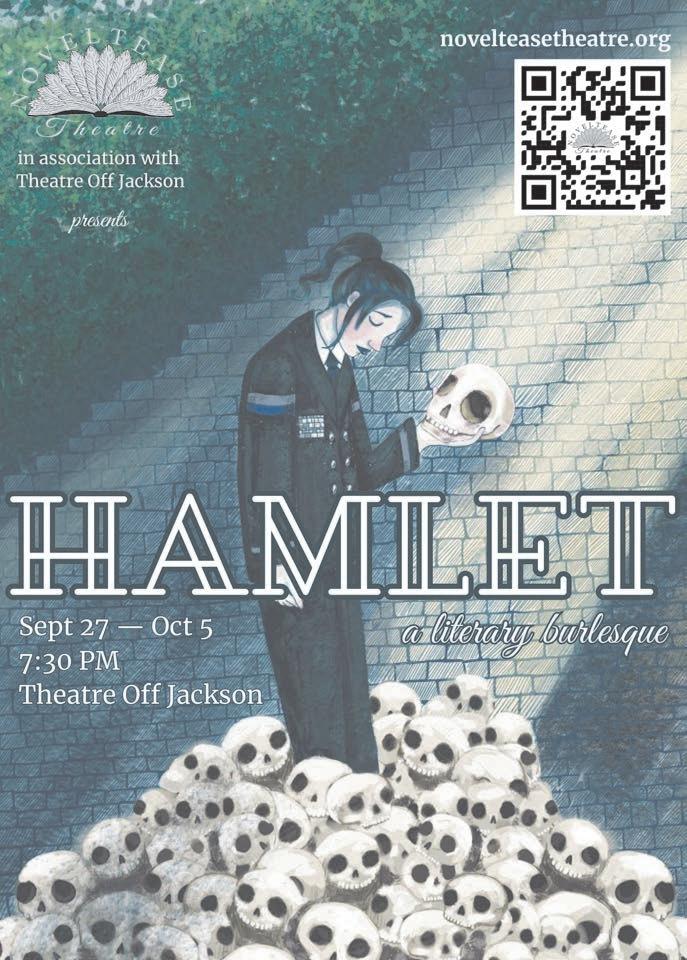
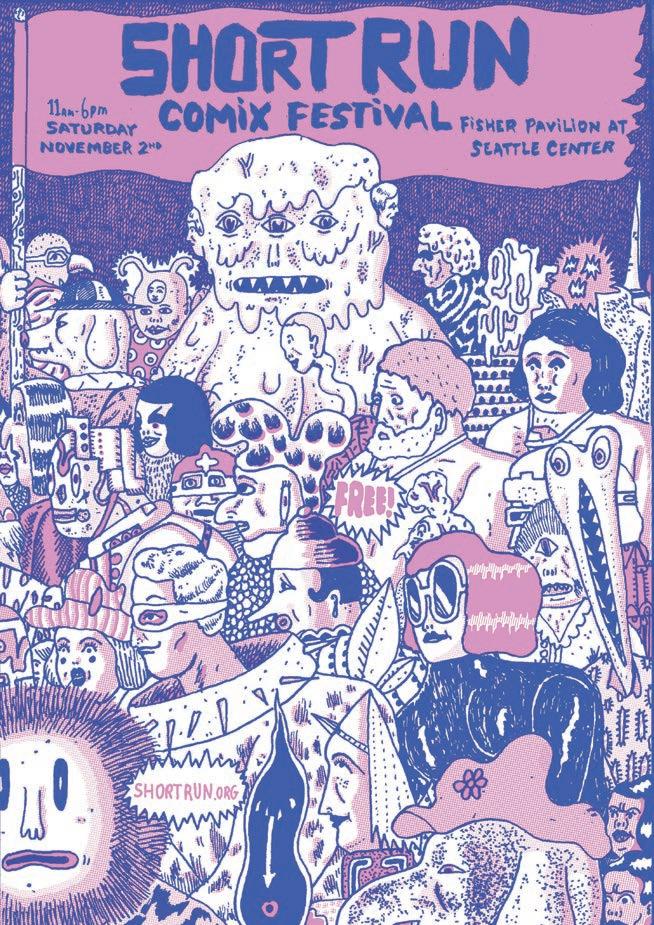
BY KATHLEEN TARRANT
PHOTOS BY BILLIE WINTER

“Inever wanted to be Marilyn—it just happened. Marilyn’s like a veil I wear over Norma Jean.”
A frail latticework extends over a face in black and white that we’ve seen a million times, casting a netted shadow, obscuring familiarity with precision. You want to squint, walk up, to it and cast it aside, but its fluidity is only an illusion—the veil is immovable, unable to be pierced. More of an armor than an invitation. It’s made up of the woman underneath, of thousands of photos of one of the most photographed people of all time: Marilyn Monroe.
Natalie Krick’s Marilyn Monroe installment of the Frye’s Boren Banner Series starts like this: with 2,600 photos of Marilyn Monroe from photographer Bert Stern’s The Complete Last Sitting, all taken for Vogue just six weeks before she died in 1962.
“Our generation is references on references,” Krick explains. And Marilyn Monroe is the best example of it. “I was realizing that
so many famous women since her time have been photographed as Marilyn Monroe.”
Krick elaborates that she never set out to attach to Monroe, especially after a lifetime of being inundated with her image. But after a while, a new dimension to that exposure
then zoom all the way out, out to yourself, out to the world, out to the idea of perception itself.
The first awareness of your own body as something beyond an obvious fact—like the sky or the weather—arrives as a surprise,
“I was thinking a lot about how women are sexualized in photographs, how our sexuality is posed and dressed up.”
surfaced. “She’s so iconic, and it’s why I was so drawn to her,” she says. “I was thinking a lot about how women are sexualized in photographs, how our sexuality is posed and dressed up. I think it has to do with this idea that women aren’t sexual on their own—that you can’t be sexual on your own.”
The work makes you want to lean in and
despite itself. A few things happen: You become turned on, you get sick, you hurt yourself. It’s usually shocking but not entirely unwelcome. If you’re lucky, you have the space to explore this realization for yourself. I have a body. It is mine. It does things, wants things, is capable of things. It is fallible. It will end. It is here now.
Inevitably, the second awareness is that of other people’s awareness of your body. When you’re a girl, it’s often a crash landing into an entirely different world. A world where people see your body as collectible, as both an object to study and critique and one to possess. It often feels like the channel being changed in the middle of a show you were watching or the sun quickly going down on a day you thought was never-ending. There is no settling into this. You make your own veil and keep your true self for the people who see your multidimensionality. You can also play the losing game and chew yourself up before presentation, becoming as easy to digest as possible.
Stern, the photographer of The Complete Last Sitting, wrote an accompanying essay in the anthologized version of selects of those photos. His language is possessive, horrifying in its unflinching reflection of how Monroe and all women were digested through the lens and through the machine
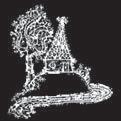








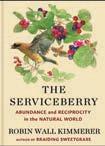




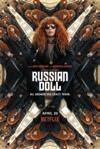







of public life. “It feels relevant, the way he sexualized her,” Krick reflects. “The way he made her into this seductive witch who enchanted him, who is also this tragic, one-dimensional person. It’s one of the reasons why I felt like I needed to work with those photographs. Thinking about how much those photographs are really about him.”
The photos are cut up, but the presence is enormous. “One of my rules for myself is that I wanted all the photos of Marilyn to be lifesized,” Krick says. “I think about the body and my body so much; that scale seems important to me for how people experience it.”
When confronted with Krick’s work, I wasn’t reminded of photography exhibitions. I was brought into the obsessive world of a painter’s muse. Artists like Édouard Manet and John Singer Sargent would spend years painting one woman, in different angles, under new light, capturing an expression in painstaking detail. Aware that their limited view would limit their ability to translate what they saw into a universal experience, fully immersed in their fate as a beholder. Rather than simplifying for ease of translation, it created a mania of communication, an outburst of creativity—the subjectivity and imperfection of the representation more relatable than the piece itself. Love and beauty intermingling frantically, unable to be replicated even in the same face.
This isn’t to say that Manet or Sargent weren’t reducing, say, Rosina Ferrara or Berthe Morisot into objects to be contained and captured. In many ways, all our expressions of one another are going to fall short. The difference is our ability to counter, to enter the conversation itself. Morisot, a
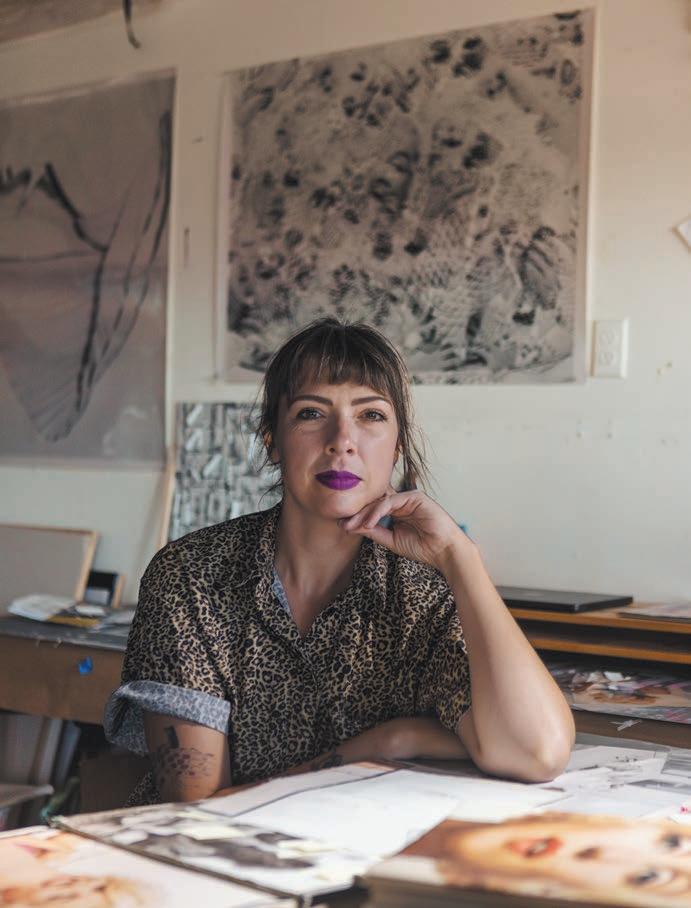
prominent Impressionist herself, was able to say her piece with her 1885 Self-Portrait.
You could say that’s what Krick is doing with this—imagining Monroe’s self-portrait, hinting at her side of the conversation, putting the medium in her hands.
Monroe was never quite allowed to enter the conversation herself. Flattened into a brand after her life was flattened into a tragic campfire story, Monroe’s work as an artist was determinedly reduced to the very end of her life, to her beauty and desirability in only
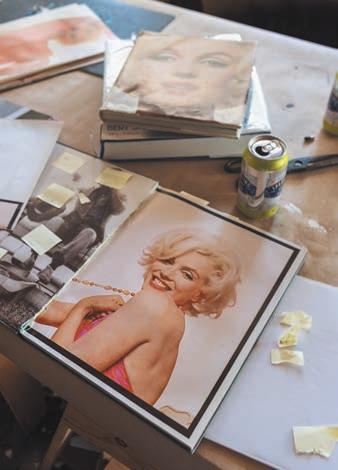
the most digestible of terms—sex appeal. It’s obvious in Stern’s writing about her, describing taking photos as making love, describing Monroe as basking in male attention, daydreaming about cutting her out of her dress.
Krick knows that “reclaiming” Monroe’s “truth” is none of her business, and presuming that it’s possible, or even that Monroe would want a public in her head, is counterproductive to what is left of her legacy. “I’m making her veil the way she spoke about it, making her into the photographer, into the person who views rather than is being viewed,” she says.
It’s a familiar, more urgent story even when scaled down, especially with photography as the prevalent medium for literal self-expression. There is a confusion between what is the veil and what is the fully realized self, with blemishes and smiles that change in different light, with quirks that take time to know, and a body that exists for ourselves to be shared on our terms. With a constant audience, it becomes difficult to know the difference between the simulacrum and the veil.
The texture in Krick’s piece reminds you of that tension—a veil as self-protection, an intricate piece, as something woven out of air and permeable. Her care in allowing space for Monroe to hide and to reveal is played not as coy, but as dynamic.
Working with photos both at a large scale and with extreme detail, cutting and manipulating the viewer to recognize the subject as belonging to herself and her own story, is staggering, a visceral reminder of how new photography is as a medium, and how limited our view of it can be as a way to convey human depth.
“I don’t really take pictures anymore, but for this, I took pictures of [Stern’s] pictures,” she says. “It’s been quite a while since I’ve made ‘portraits.’ I guess over the years, I’ve
become more suspicious about portraiture. I love it—it’s not like I think it shouldn’t
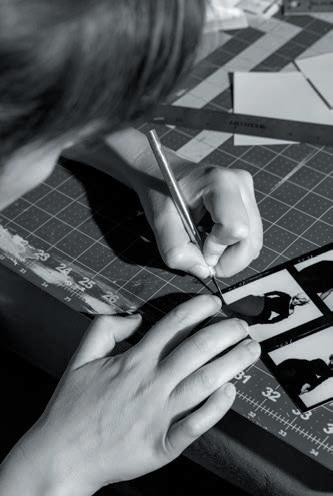
piece is made up of thousands of images, carefully combined into one.
exist. But one of the reasons I started to use his work was because I was really upset about the way he wrote about her [in that book]. He frames her as this tragic figure, and that’s how she’s framed in our culture. I do see her death as tragic, but I don’t see her as tragic. She was an artist who doesn’t get what she deserves.”
Natalie Krick’s work will be on display at the Frye Art Museum as part of their Boren Banner Series beginning Wednesday, October 16. The museum will host their Fall 2024 Public Exhibitions Opening on Friday, October 25 at 7:30 pm.
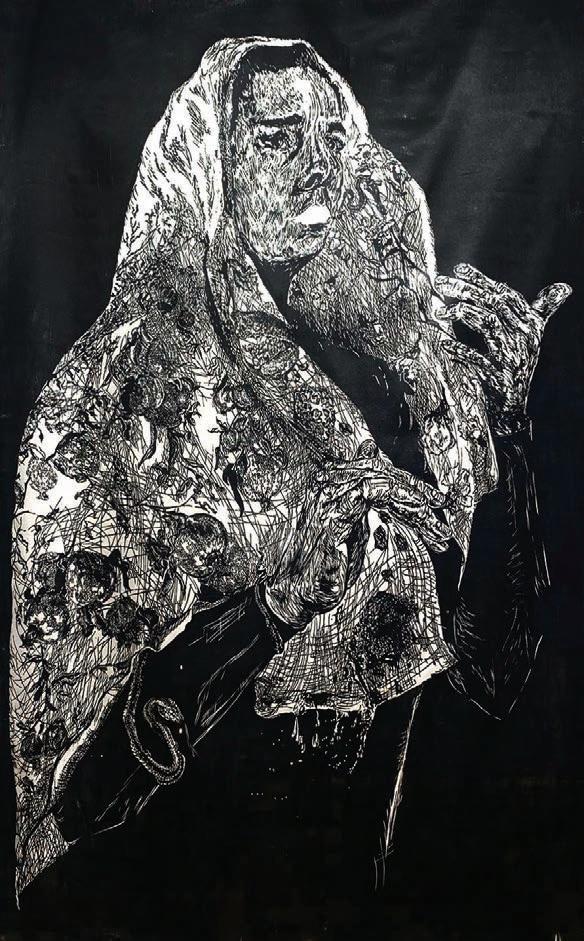
NOVEMBER 23, 2024 – FEBRUARY 23, 2025
Nikki Jabbora-Barber is a gay Seattle-based printmaker and teaching artist, known for large-scale woodcuts, printed by hand. Her work focuses on her mixed race identity, centuries of storytelling, and womanhood through symbolic depictions of herself, flora, and fauna. Join us Saturday, November 23, 5-8 PM, for an opening reception.
ARTIST TALK , February 8, 3 PM
Nikki Jabbora-Barber’s art re-examines female characters from stories passively internalized in childhood through a queer, mixed race lens. She will speak to these themes in her work in conversation with BIMA’s Education & Community Engagement lead, Jenna d’Anna.

BY SAM MACHKOVECH
PHOTOS BY BILLIE WINTER

Seattle fashion designer and artist Sophy Wong is clearly from another planet, and this summer, she brought her vision of Earth’s future to the masses.
Her newest collection revolves around her vision of a not-too-distant climate crisis, expanding upon years of cosplay and costuming to rethink the forms and functions of attire. And her singular artistic vision finally found a perfect canvas on Bumbershoot’s catwalk, when her first-ever multidisciplinary show, Symbiosis, premiered over Labor Day weekend.
The foundation of Symbiosis is Wong’s “story bible”: a trippy vision of Earth’s future,
driven as much by the impending climate crisis as by humanity’s incredible resilience, and sketches of uniforms that explode with color and trippy geometrical forms. In it, Wong suggests that Symbiosis is subliminally driven by “all the sci-fi and anime” she watches—a fact made immediately apparent by so many abstract-astronaut attachments on her dancers’ attire—but she formally name-checks one literary legend. “The Isaac Asimov idea that civilization continues,” Wong says. “Regeneration, rebirth, hope.”
The story, then: Earth’s citizens fled the planet roughly 400 years ago, but they failed to find anywhere that was more hospitable and are trying to come back. Two
astronauts went on a pilot mission, only to vanish. Wong’s story begins with a third astronaut, wearing the show’s most “classic” space suit, returning to the planet, where she has found that the other lost astronauts have become the titular “symbiotes” who’ve adapted to the changed landscape. Eventually, four other “adapted” life forms come into contact with our hero, and while they’ve blended more fully with a changed, otherworldly landscape, they still share functional and aesthetic lineage with the least adapted astronaut, such as mesh breathing patches, “vestigial” helmets in the forms of ornate collars, and The Fifth Element-like belt harnesses.
“Over time, these creatures are finding a way to survive, because we’re providing a substrate and resources for them,” Wong says. “They are doing the thing that plants and creatures in the environment do: they absorb the toxins, scrub the air, and do all of that great stuff. They are rehabilitating the planet.” For Wong, then, her dream is for viewers to rethink our relationship with “protective” gear on our real-life, rapidly changing Earth. “Maybe it’s less of a barrier to protect us from the environment and more like: Could it help us merge with our environment?”
The story of Symbiosis is told largely by seven signature outfits, which are all inspired by spacesuits. “They’re a technology
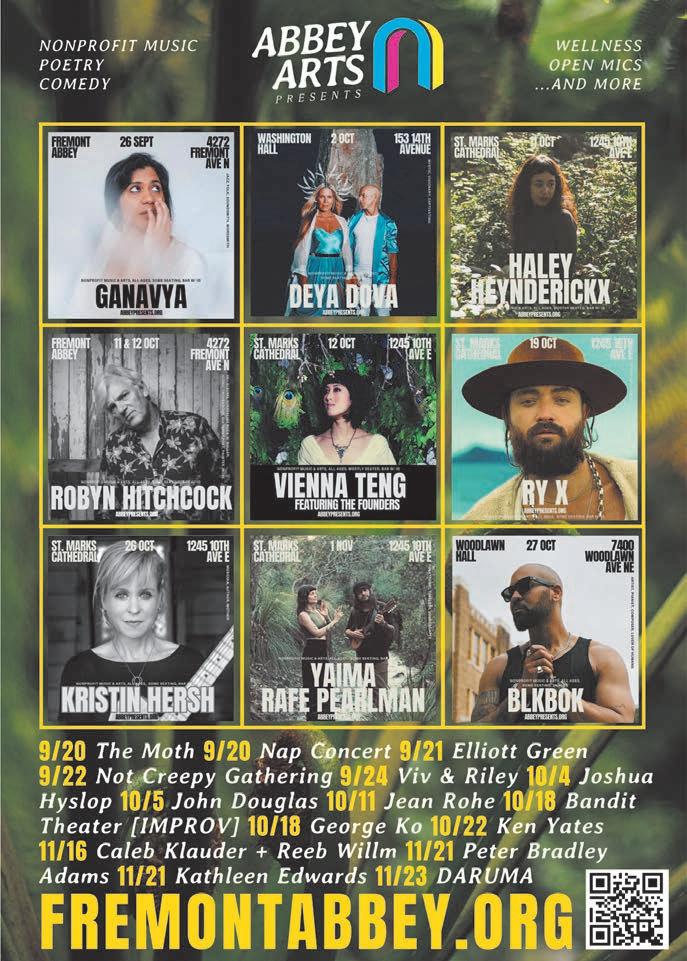
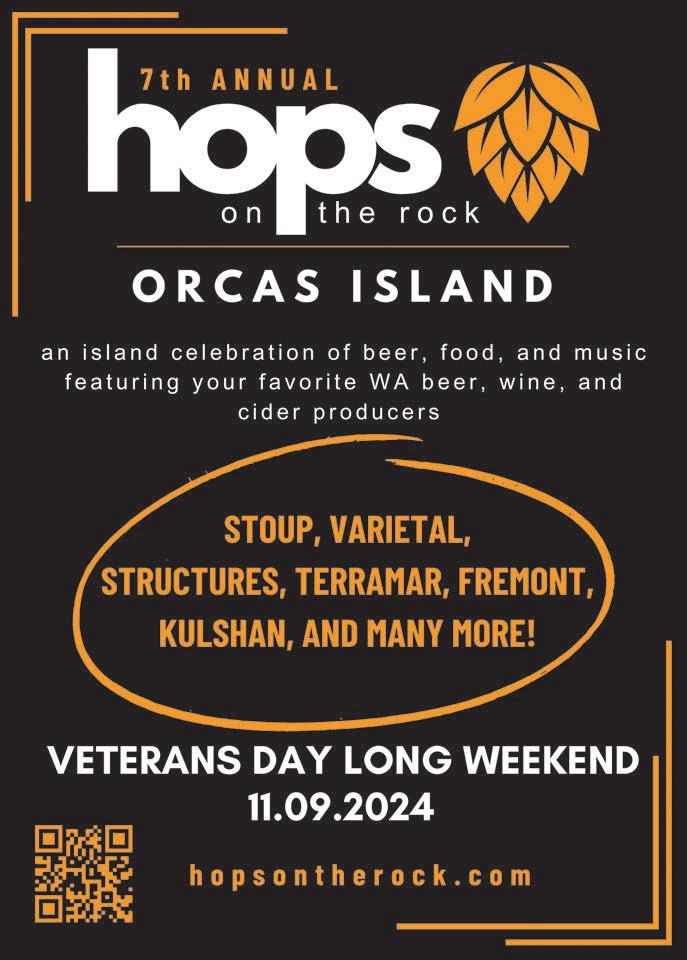
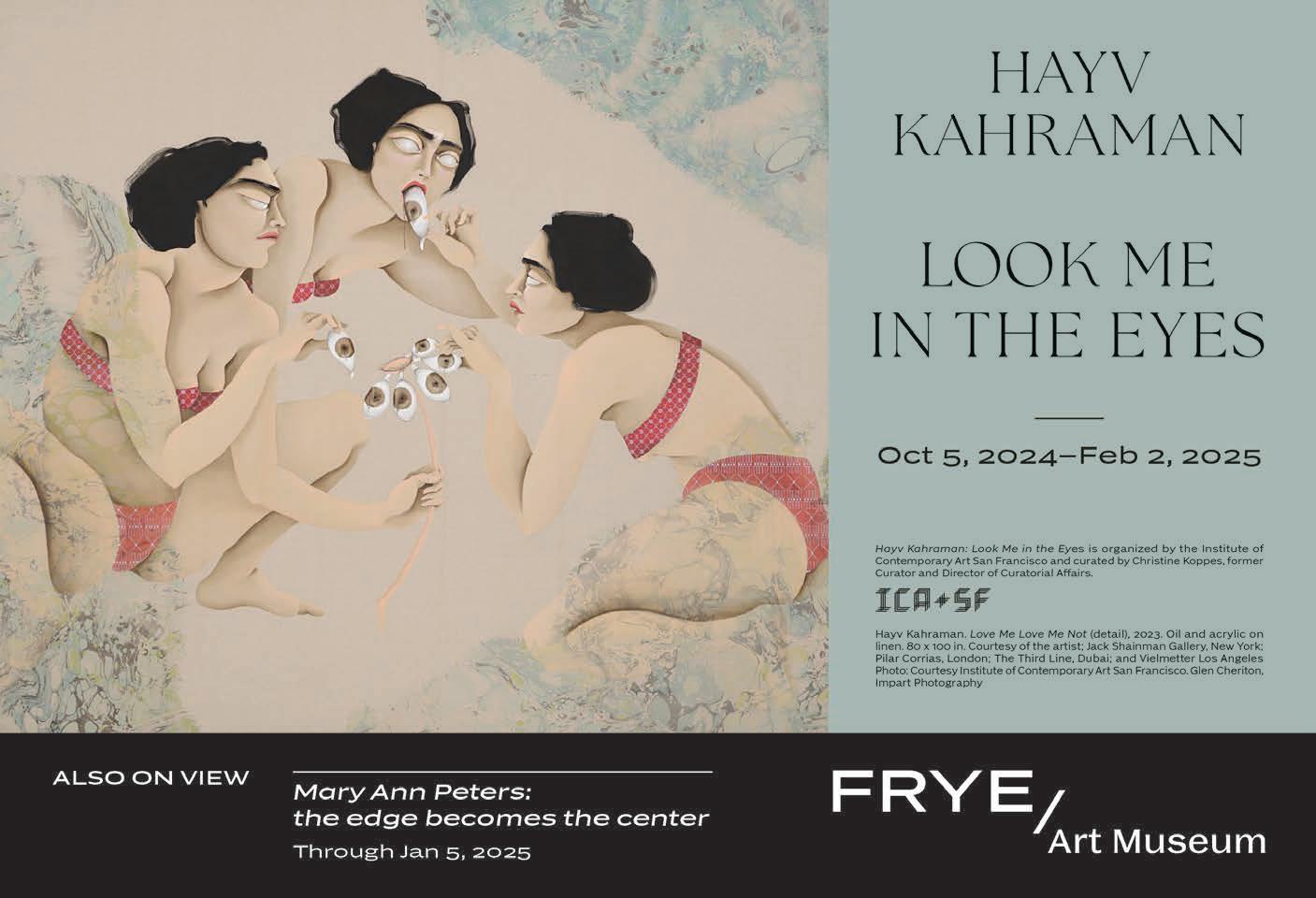


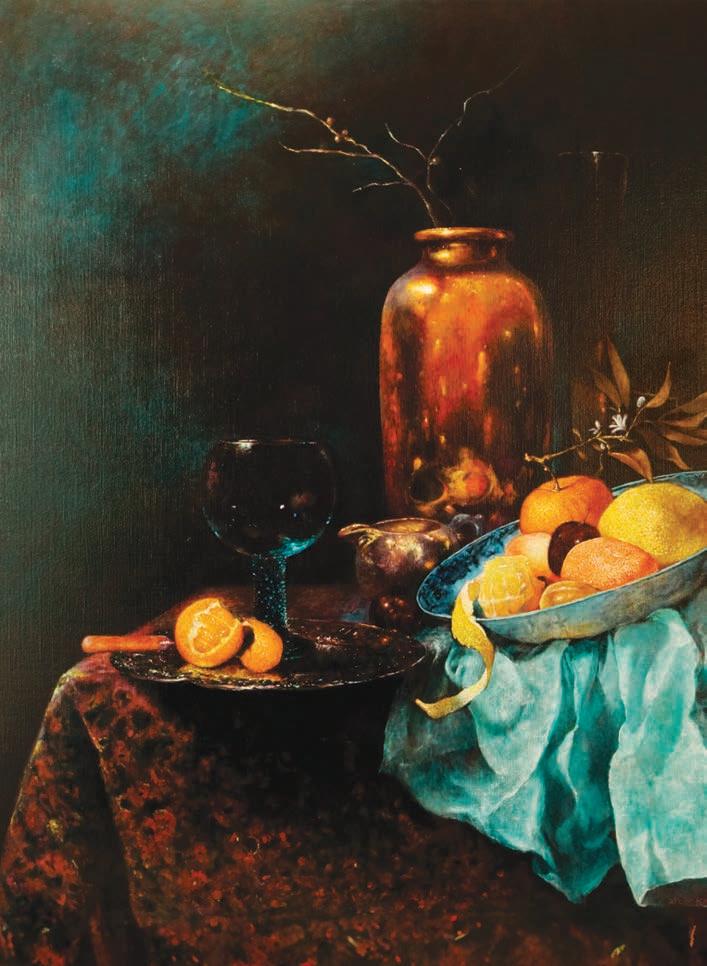
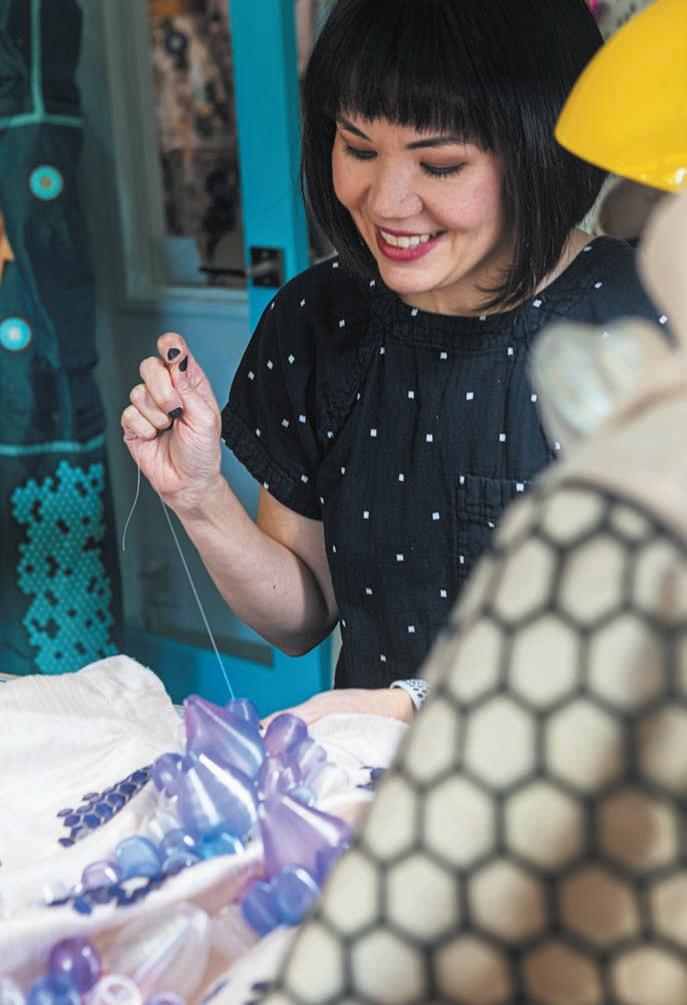
barrier that keeps us away from our environment,” Wong says. The show starts with a short video clip of an astronaut making a Star Trek -like log before they descend to Earth. Then professional dancers with backgrounds in ballet, contemporary, and Mexican folk dance stream onto the stage in fetching, motion-flowing costumes, moving with and through each other while following Wong’s “story bible.”
The climate crisis prompted Wong to reimagine the traditional space suit, enough so that she wants any Symbiosis viewer to
mains intact, but at this show, they’re sewn into intentionally floral and Earth-toned prints. In one visually striking touch, Wong stitches the shimmering light bounces of satin into a 3D printing material known as “bifurcated filament”—in short, a type of plastic that has a different, complementary, shimmering color on each side. The result looks bioluminescent.
In Wong’s vision of future Earth, space suits and native biology may fuse to become indistinguishable: combined organisms, adapting to survive on a rapidly
“This is my universe that I want to create. Symbiosis is just one planet.”
have their own Planet of the Apes moment of realization: “The twist is, you [may one day have to wear these] here.”
Wong has never shied away from crossing disciplines. Her designs have incorporated everything from 3D-printed sculptures to lightsabers to programmable, LED-loaded electronics, and they resulted in dazzling flourishes of color, light, and form. But for Symbiosis, she’s opted for more organic designs. It was a daytime show, so Wong is skipping her usual light arrangements; sunlight would otherwise drown those out. Her typical reliance on 3D-printed materials re-
changing planet. By slowing the speed of a 3D printer and stretching its printed, corn-derived material just so, Wong is able to produce sparkling, barnacle-like cones and other ephemeral “growths” that dot many of her costume designs.
Smaller, self-contained, 3D-printed projects were Wong’s first steps into an eventual passion for fashion design. About a decade ago, she began dabbling with 3D printers on a lark outside her day job as a graphic designer: “3D printing activated the kind of digital workflow that I was already comfortable with in 2D,” she says.
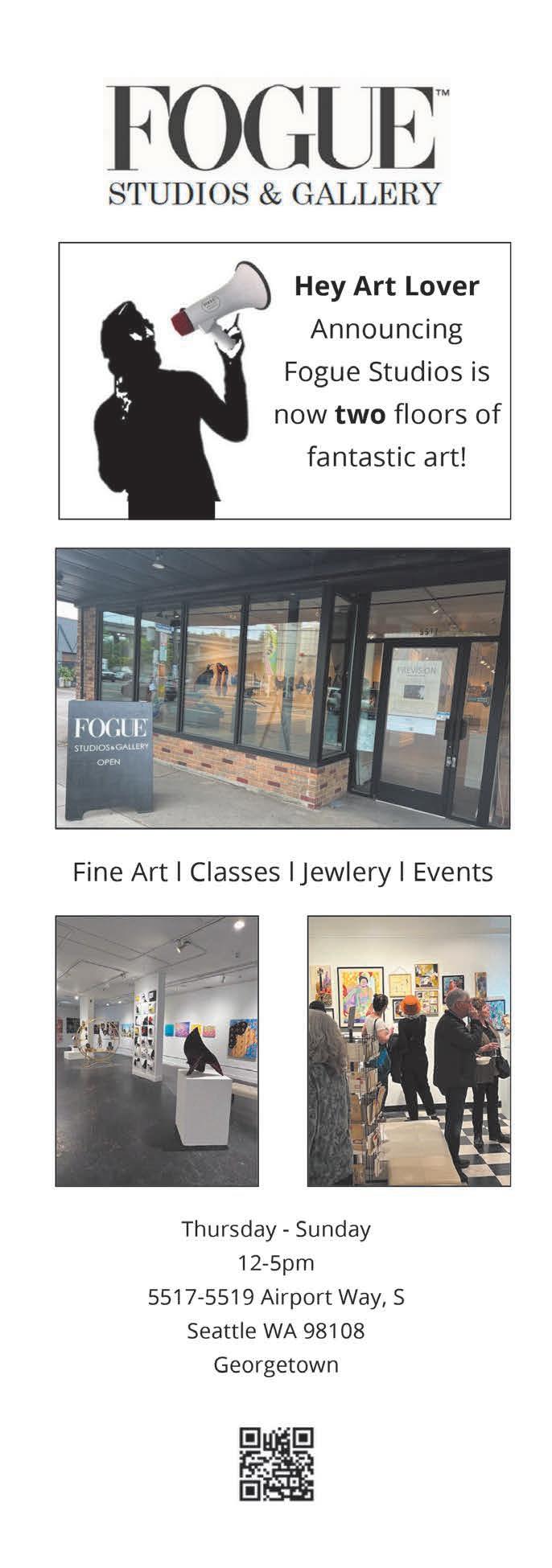
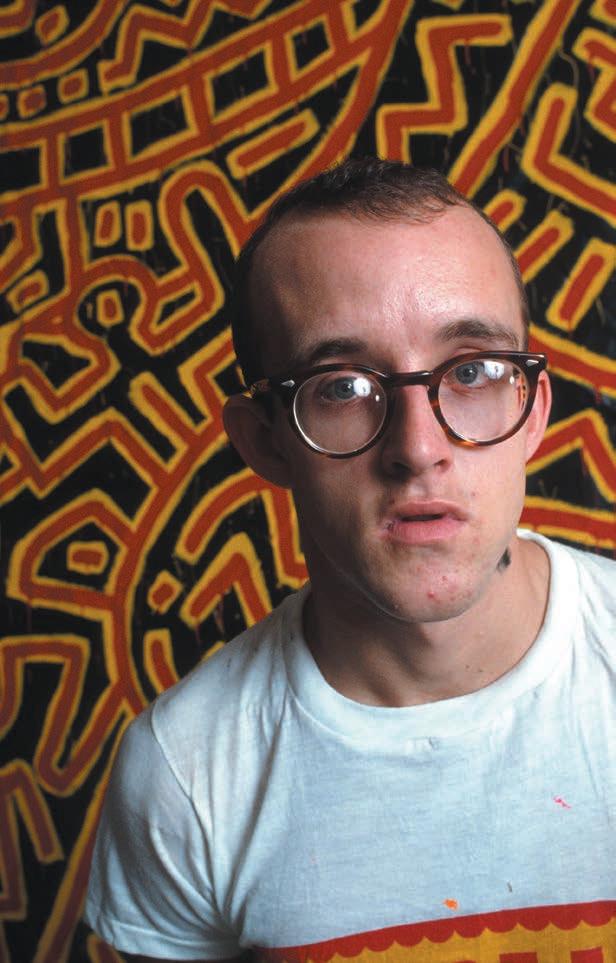

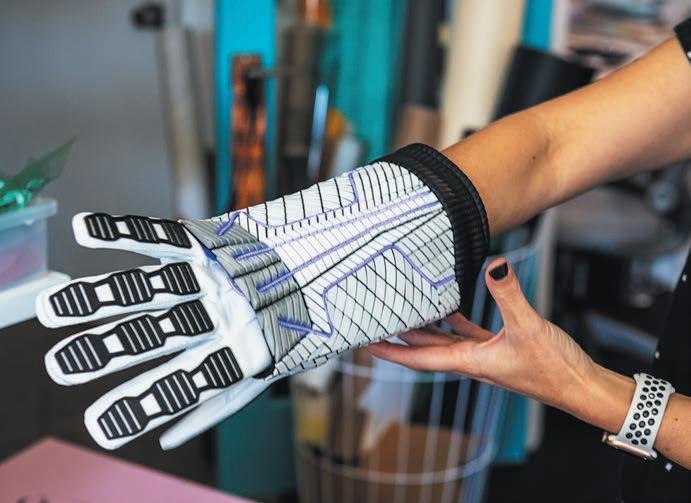
Her aspirations evolved from small, easily printed projects like earrings to fully blown cosplay creations, and the latter excited her in a similar way. “[Cosplay is] a design challenge to translate someone else’s vision, someone else’s 2D design, into a physical form, into a reality.”
Her rising passion for cosplay led to figuring out how to operate as an all-in-one design shop—and perhaps more importantly, to take a step back from the process and embrace cosplay’s hard-to-pigeonhole spirit. “Now I’m pulling from [so many disciplines] to create something, and I want it to live in a confusing space between: Is this fashion? Is it costume? Is it art? Is it something new? That is more comfortable to me than making something that someone looks at, and they come to an easy answer.”
Wong continues to challenge fashion conventions with her shoulder shrug at the catwalk: “I find that really boring, personally. And I knew that I wanted to do something different, from the total inside veins of the show to the outside skin of it.”
Wong is a dancer, and casting local dancers
for Symbiosis was a natural addition to the show’s storytelling ambitions. “Dancers are born to perform,” Wong says. “You can give them a concept, an idea, and a character, and they can run with it.”
Wong’s vision does more to unify the show conceptually and visually than it does to shove a clear ecological message down viewers’ throats. And that sense of progression and evolution within one show may continue on with more shows to come—as Wong already has a concept board smothered in space suits, plot ideas, and sci-fi inspirations (including a Star Trek: The Next Generation photo of Deanna Troi, Whoopi Goldberg, and Gates McFadden, who Wong calls out as “the holy trinity”).
“I want to do all the rest of these [show concepts] eventually,” Wong says about the other scribbled concepts on her studio wall. Bumbershoot called at just the right time to get an initial concept beamed from her imagination to our planet, she suggests. Then Wong gestures at the fuller board: “This is my universe that I want to create. Symbiosis is just one planet.” ■







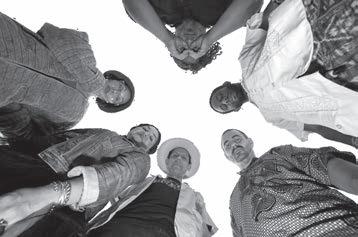









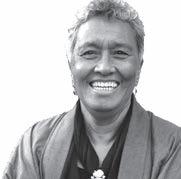




BY LINDSAY COSTELLO
Playing on an audience’s nostalgia can feel like a trick, but when Nonamey does it, it’s an invitation. Their pieces reference real objects, but Nonamey’s graphic, stylized aesthetic isn’t trompe-l’œil—instead of merely tricking the eye, they excite it, with artworks that feel joyous and genuine. The Portland-based artist creates ultra-vibrant sculptures, wearables, and installations in cardboard, acrylic paint, and spray paint. They use those materials to create an “enveloped environment,” as in their recent show, Teen Dream, an immersive imagining of a teenager’s bedroom in the ’90s.
They also translate that aesthetic into wearable art. Nonamey is Ojibwe and trans-nonbinary and uses both he and they pronouns. Those identities shine in their fashions, like cartoon-ized suit jackets and ribbon skirts, to help them find “moments when I can embody the person that I want to be through clothing.” And the wearables aren’t just for them: This summer, for The Softies’ first new album in 24 years, they created outfits with matching instruments for the pop duo.
While Nonamey’s work often nods to the past, it also feels effortlessly contemporary. Most recently, their tentacled, grayscale “shipwreck” installation (co-created with Clyde Petersen) brought a wood-paneled oceanic scene to the Pacific Science Center for Bumbershoot. The result revealed a strength of Nonamey’s style. It’s translatable—and straight-up charming—in damn near any situation, from music videos and Instagram reels to white box galleries and large-scale outdoor installs.
We chatted with Nonamey about twists on reality, the allure of the ’90s, and his upbringing in rural New Mexico.
This is probably a really obvious starting question, but I think our readers would love to hear the story behind your name!
Sure! I was born Noname Rose Crowe. That was the first name on the first document from the day I was born. My mother was a teenage runaway, and she didn’t select a name for me off the bat. I enjoy that anonymity. I’ve been through many iterations of names throughout my life. I came out as trans-nonbinary, and Lukas is my name today, outside of my working name. When I selected my working name, it seemed most appropriate to choose my initial name as a start for my solo art career.
It’s interesting to hear that your artistic name is a callback to your birth story because your style often evokes a strong sense of childhood and teenage nostalgia. It’s embedded in the media you’re using—cardboard, acrylic, hot glue—and also in your overall aesthetic. It’s in-
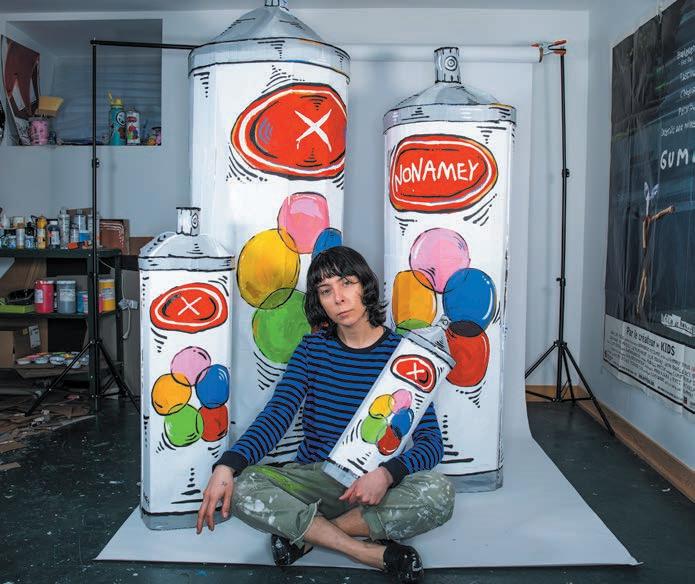
tentionally and beautifully lo-fi, like stepping into a comic strip. What inspires you to evoke a sense of nostalgia in your work?
It’s an interest in people. I’m fascinated by what others hold in their memory. In Teen Dream, my most recent full-room installation at Brassworks Gallery in Portland, I had so many interactions with people who were teenagers in the ’90s. They said, “I had that album! I had that poster! I had that lunchbox!”
“I’m fascinated by what others hold in their memory. ”
I was born in the ’90s. I experienced that generational pause right before the internet became accessible, that time when you could bang a television and it might actually work better. It was a different world, and I appreciate the aesthetics of that kind of memory hold.
Your visual language is so bold, but your installations also feel like poetic world-building—you create objects like video games, spray paint cans, easels, and old records. When I look at your installation work, I understand who lives in that space, but I also come to understand who I am in that space. Would you say that that’s a goal?
I truly have no idea how a person is going to interact with my piece, and that’s exciting to me. I create suggestions, like posters and zines, but I don’t know what people are going to be glued to in my installation. I hope to create an enveloped environment—a feeling of being in a familiar space, yet different.
Like “Hmm, that looks like an easel, yet it looks also like a two-dimensional drawing. That looks like a dresser, but it’s also very flat, and the drawers don’t open.” I like to create that play on reality.
For your Bumbershoot installation, The Mess We Have Made, you collaborated with Torrey Pines creator Clyde Petersen. What feels important to share about that work? How did your vision emerge?
It was an opportunity to work with Clyde Petersen, one of my favorite cardboard artists. I got on a Zoom call with Clyde, and we just were shooting some ideas back and forth. A shipwreck seemed obvious to both of us. I don’t know why, but that’s the way art collaboration works. Sometimes I don’t question it! It was kind of like jazz. Clyde constructed the wooden panels, delivered them to me, and I painted them. It was this nice poetic exchange, and we talked to each other every day. It was a really lovely collaboration.
What was the inspiration behind the installation title?
It’s based on a lyric from a song by Clyde’s music project, Your Heart Breaks, called “The Rats.” Go check it out! It’s awesome.
Music plays a big role in your artwork! In your Teen Dream installation in Portland, you created cardboard band posters to decorate an imagined bedroom. I was struck by how you created artworks within artworks, and how that deepened the authenticity of the space. You also make cardboard guitars and art for musicians, like pieces for a Whisper Hiss music video and recent wearable art for the Softies. Why does it feel important to bring music into
your practice so heavily?
It’s not necessarily intentional. It just happens! I love music, and sometimes I need music as an initiator. It might be a soundtrack I’m listening to, or something on the Billboard charts. For example, I was listening to Iggy Pop, and that inspired me to create a New York subway car from the ’70s
That’s funny—my next question was whether any specific musicians have helped shape your aesthetic. Do any others come to mind?
I would be probably doing a disservice to many musicians by forgetting names, but just this week, I’ve been listening to a lot of Your Heart Breaks and Kimya Dawson, which really spoke to the [Bumbershoot installation] I created.
Your work also feels grounded in the Pacific Northwest, e.g., your collab with Clyde Petersen, your recent work for The Softies, and your sculpture of the Portland writer Katherine Dunn’s book Geek Love. But you actually spent your formative years in New Mexico. How did that landscape impact your art?
I was born in Wisconsin, outside of the Bad River Reservation, and grew up in very rural northern New Mexico. I noticed a quality of objects left behind by people— train cars out in the desert, or abandoned houses—that I found so fascinating. Similarly, when I came to Portland, there were objects left by people, like graffiti, street art, and pieces of art nailed to lamp posts. I was really interested in Portland’s art scene when I moved here—it just felt comfortable.
I’m curious about how you navigate and share aspects of your identity through wearable art, like the ribbon skirt that you created for National Ribbon Skirt Day earlier this year and the Backstage at the Drag Show installation you created for the 2023 Other Art Fair. How did you begin bringing wearables into your work? Where do you see that practice headed?
I’ve been making paper clothes and using recycled clothing for the better part of a decade now, and it finally feels like I’m able to express myself through clothing. At first, clothing was an introduction to showing my masculine side by making suits and more masculine cuts. Then, as I continued making these pieces, it felt appropriate to make a ribbon skirt, which is a feminine cut, but I wore it with a suit jacket. There are moments when I can embody the person that I want to be through clothing, even if I have moments of doubt. I can make the clothing of a person I want to emulate, which is ultimately me!
Nonamey’s work will be on display at Photosynthesis in Olympia as part of the city’s Fall Arts Walk October 4–5.
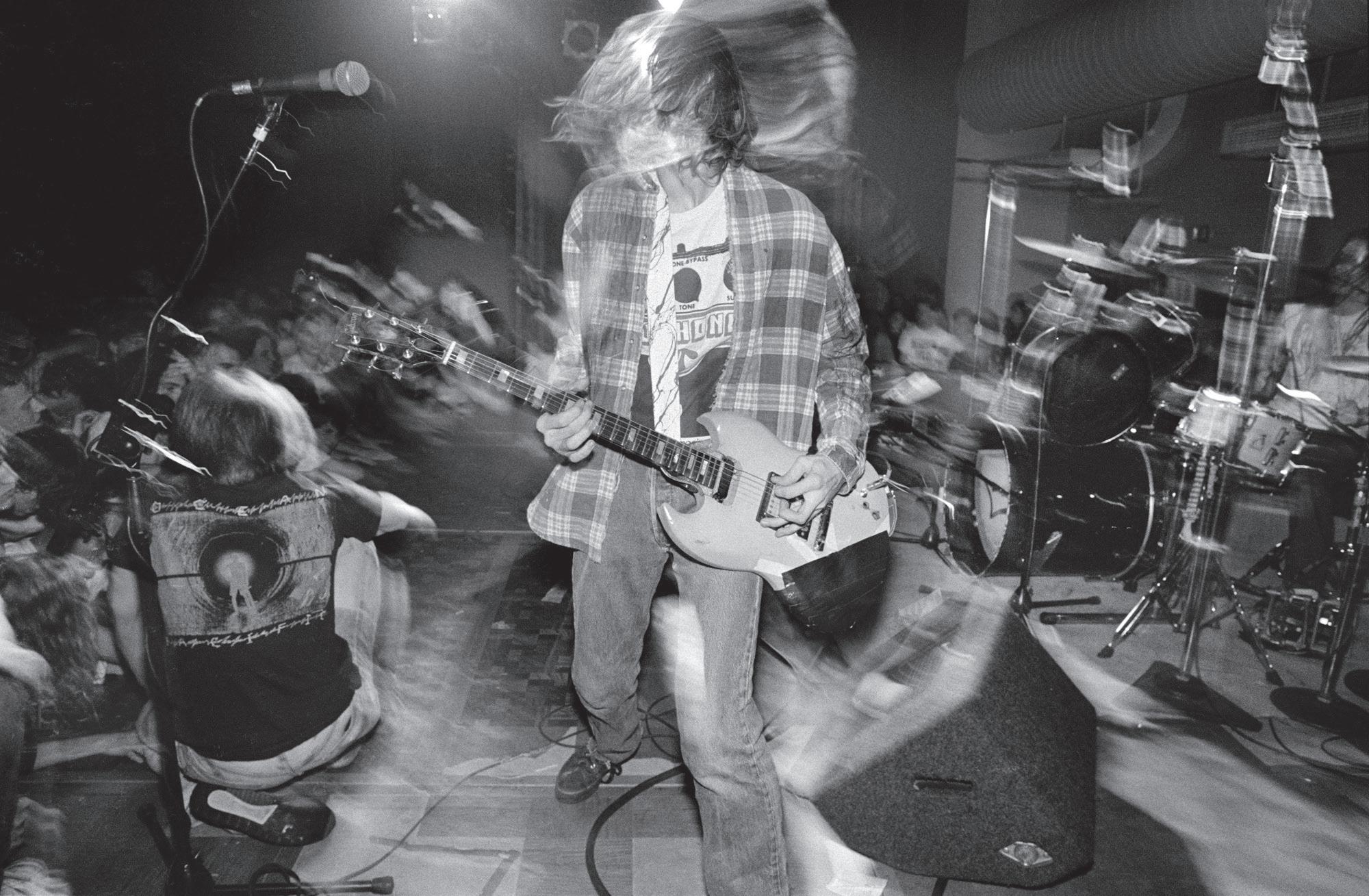
OCT 05, 2024–MAY 25, 2025

THIS EXHIBITION WAS ORGANIZED BY TAM + MINOR MATTERS AND CURATED BY MICHELLE DUNN MARSH
BY MINDIE LIND

In November of last year, I was scrolling through my Instagram feed when I saw a post by The Tonight Show Starring Jimmy Fallon of a redheaded woman—wearing clothes I wish I owned—coming out from behind the curtain. A fan of comedy, I held off on moving on before I heard her say, “I am a fully functioning disabled adult living in NYC, I’ve got very ‘You go, girl’ energy.” My eyes widened, and she continued: “A lot of people see me and then think I suffer from cerebral palsy, which I don’t.” A compelling line coming from a person with impacted speech and CP hands. “I have cerebral palsy. I suffer from people.”
I was stunned. A woman with visible disability chumming up a crowd and cracking Jimmy Fallon up about living her best life as a disabled person left me asking: WHO IS TINA FRIML?
I moved on to more of her stand-up work. “Having a disability is the best decision I ever made. Everything I do is an inspiration. I can’t lose! I wasn’t even on this show. I was on my way to the bathroom. What are they gonna do? Stop me?” I completely lost my mind. MAY-
Free Public Opening
Fri, Oct 18, 7–9 PM
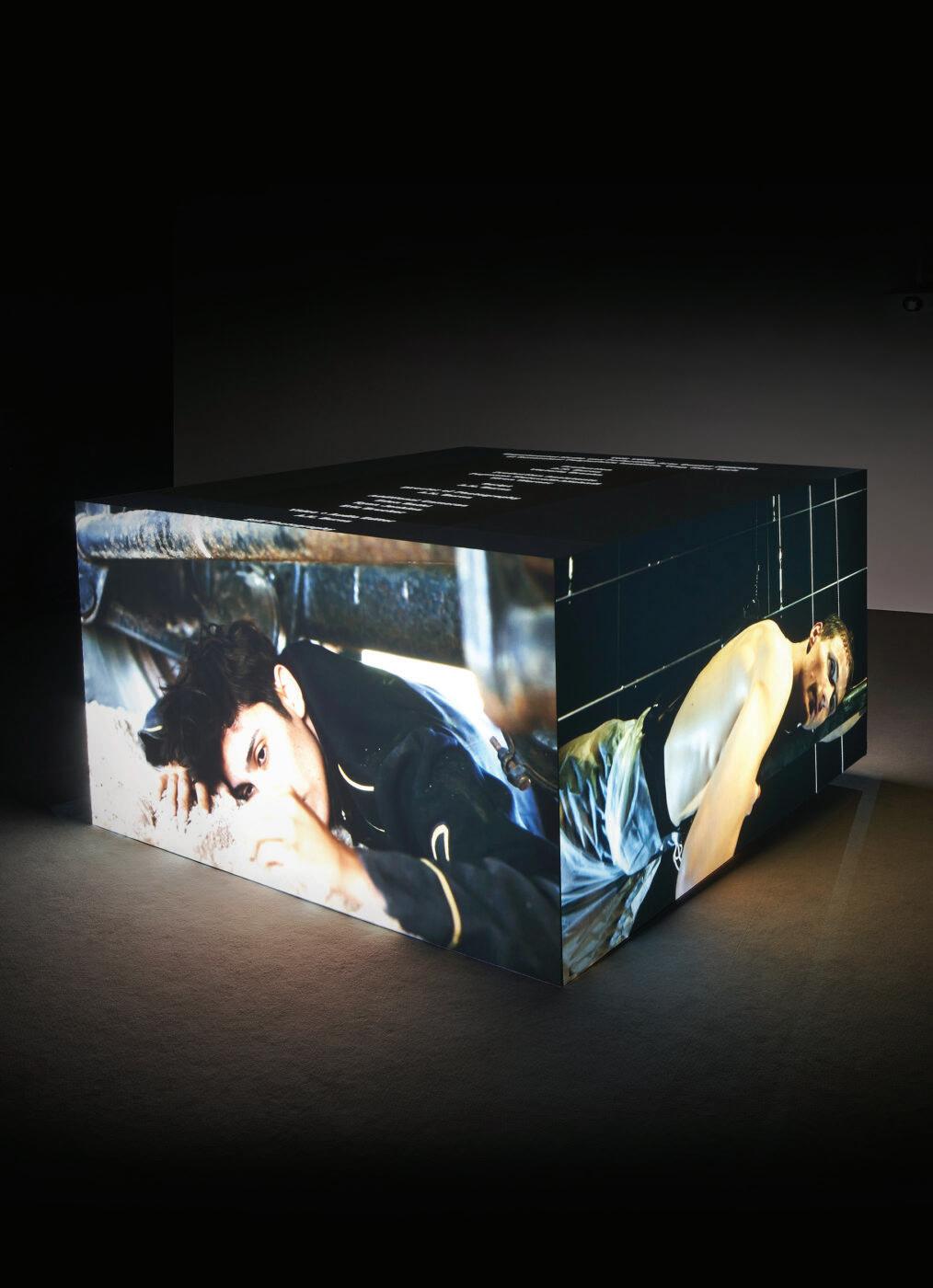
NEW EXHIBITIONS
A.K. Burns: What is Perverse is Liquid
Lucy Kim: Mutant Optics
Tala Madani: Be flat
Christine Sun Kim: Ghost(ed) Notes
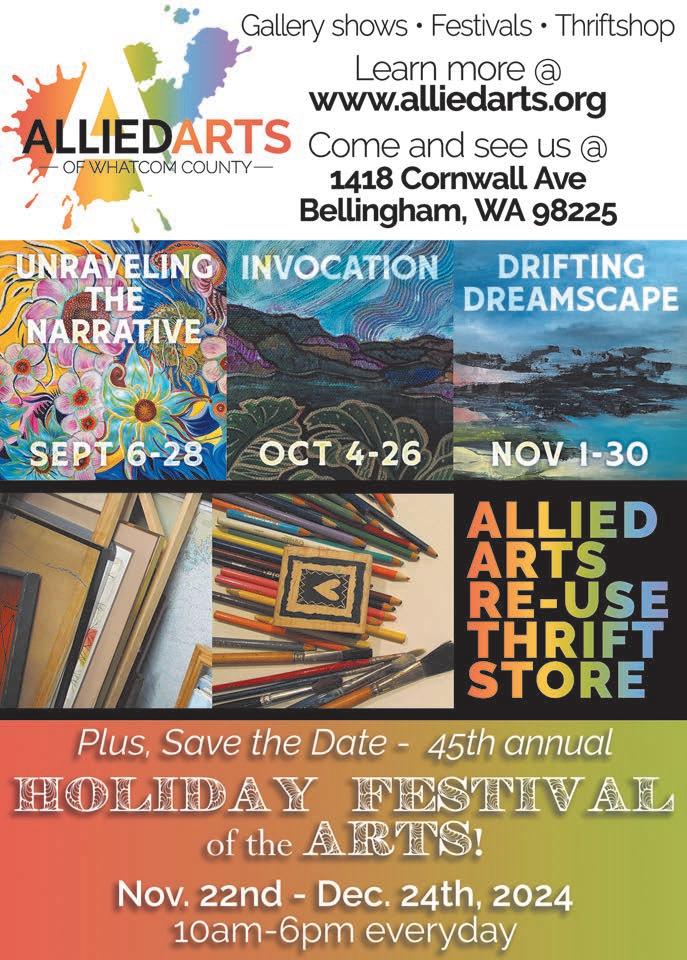
A museum for contemporary art + ideas
henryart.org
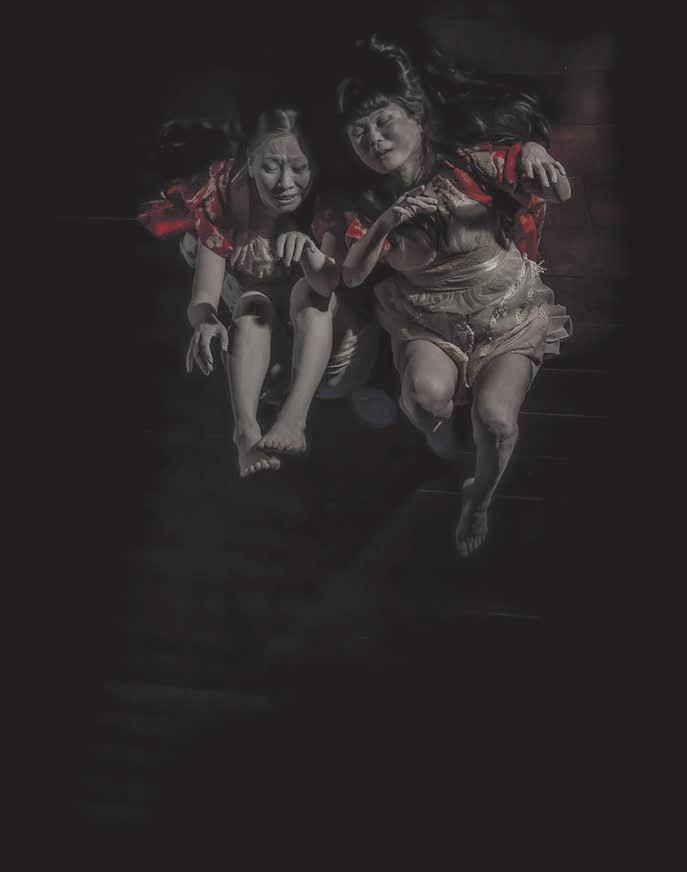
COLLECTIVE PRESENTS
Seattle International Butoh Festival 2024
November 22-24
Performances & Workshops @YAW Theater



GUEST ARTISTS:





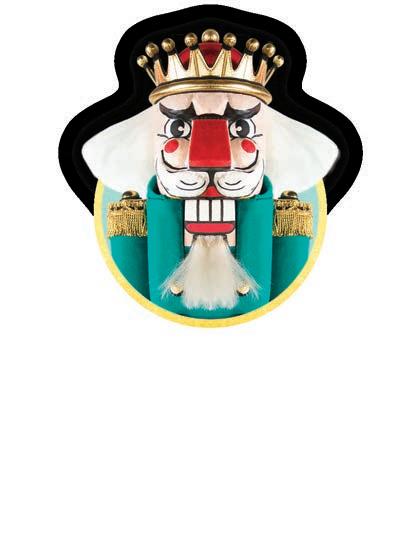


Friml’s breakout performance was on The Tonight Show last year: “I am a fully functioning disabled adult living in NYC, I’ve got very ‘You go girl’ energy.”
BE THE REVOLUTION WILL BE TELEVISED.
This magical unicorn has broken through the impenetrable wall between prime time and the disabled experience, delivering lines so smart, so cunning, so potently real that entire universities have spent decades trying to distill these ideas into hundred-page dissertations—only to reach a small few who are so lost in the theoretical that, if it lands, it’s like a small tree falling in the woods. Who cares?!
When I saw that Tina’s tour is taking her to Seattle, I knew I had to use this as an opportunity to meet my new best friend. Because, alongside being a savvy champion
“I’m disabled. Don’t worry, you’re going to be okay.”
of crip culture myself, I too am a crip performer. I know where we came from and the lineage from which this moment was born.
You see, the first times crips ever had jobs—were out of the house, being paid, and living independent lives—we were onstage. We were performers. In the 19th and early 20th century, freak shows featured “The Elephant Man,” “Lobster Boy,” and “Camel Girl”—people with visible disabilities who were seen to have profitable traits for amusing the middle class. At the time of ugly laws in the United States, banning crips from public view—except for “in exhibition”— meant that being onstage, for the profit of showmen, became our only viable way to make a living. Even though it was our first job, it seems to be the last place you expect to see us today. And as the most mis- and underrepresented population in the media, we are still not in charge of our own stories.
Which is why, in my conversation with Tina, we started off talking about the crip history of performance and how our lineage creates a unique and ubiquitous experience of imposter syndrome, exceptionalism, and internalized ableism, for all performers with disability.
Mindie: So one thing that I’ve noticed is that to be a crip is to be famous… we already have the spotlight on us. Knowing that, walk me through the journey or feeling called to be a performer and putting an actual spotlight on yourself.
Tina: My parents were in theater, and I always wanted to be a performer. It’s a high [unlike] any other, that I felt powerful. I’ve never been outgoing, I’ve never been a very good conversationalist. It was a way that I could control the impressions I made… among people I felt inadequate and inferior. It was always about taking that back.
Mindie: When you were a kid, how did you feel about your disability? Were you trying to hide it, or were you always like “Fuck yeah, this is me”?
Tina: One hundred percent not. For the vast majority of my childhood and teenage years, I was in denial. If anyone brought it up, even mentioned it in conversation, I would spiral. I would literally have a breakdown.
When I talk, in my head, I don’t sound disabled. I sound normal. So it was this haunting thing of wanting to perform and then watching back a recording and hearing something so different, and seeing something so different than how it looks and feels for me. It was that “Oh, I just need to try really hard, I just need to be hyper-good at acting, hyper-good at songwriting. I can be so good, I can get beyond it.” Disability was nothing except an obstacle, something to break through. Or conquer.
Now, let’s be clear here. She is not saying “I needed to overcome CP,” but instead, “I needed to be so good that people watching it could actually see me, not my CP.” This forced her and most other crip performers like her into a quiet burden and hyper-obsession with exceptionalism, which also feeds a very specific kind of imposter syndrome.
Tina: One time I came home from an open mic, and I asked my mom, who was there, “Were they clapping because I was actually good, or were they clapping because I’m disabled and it was ‘inspiring’?” And she said, “Well, maybe a little bit of both.” And that sent me into a total breakdown.
Her journey in performance began as a singer-songwriter, coveting careers of Vanessa Carlton, The Killers, and fellow Vermonter Anias Mitchel. She says she felt self-conscious of her singing voice—even though music was far more cathartic than comedy ever was.
Tina: I never thought that I could be good at being a comedian. It was never something that interested me. But I fell into it on a whim, something to do. Comedy was a bucket list thing, some way to get on the stage. I never

nordicmuseum.org

Celebrating a Decade of Cinematic Brilliance.



thought I would get a little into stand-up comedy, but that it would maybe ease my anxiety for stage, and I could finally sing onstage and bring myself to perform. But the knack I had for it, and the external validation. People were telling me I had something here.
Mindie : You really do. Did you always lean into disability as part of the set—or is it something you moved into? When did you cross over into “exploiting” yourself, or utilizing your disability for laughs?
Tina: Pretty quickly. I remember the first couple of times doing an open mic, I didn’t talk about disability. And it only took a matter of a few weeks. It was one tag at the end of one joke: “Oh, I’ve got a good life, great friends, great family, I live in this beautiful state. I’ve got a little bit of brain damage, but that’s okay.”
Mindie: And it hit!
Tina: It hit! It hit like no other joke! In a way that was like an icebreaker. And then quickly after that, I wrote the joke of “I’m disabled. Don’t worry, you’re gonna be okay.” And all the jokes orbited around that one concept.
Mindie: Yeah, so what is that? Like... are we giving other people permission? What is it?
Tina: You know, for me, it’s like the shit I wish I could say to people in person. On the bus. Across the counter. And it comes from rage. This quiet rage that I would just try and go about my life, and it would make people uncomfortable constantly. And that’s why I say I suffer from people. It’s got nothing to do with my disability, but all of these micro-reactions…
Mindie: All the time.
Tina: All the time.
Mindie: All day, every day.
is that I do not want to be seen as a disabled comic, and yet in my actual comedy, a lot of it revolves around disability.
Mindie: It’s interesting, because comedy is mining your life. So it is offensive to say “female comic.” She’s a comic, mining the experiences of being a woman. You are a person who is mining the experiences of a person with a visible identity of disability. You aren’t a disabled comic; you’re a comic. Tina: You know—you hit the nail on the head. People don’t say “Jewish comic.”
Mindie : Or Black comic. Even if their comedy is that. That’s what comedy is! That’s what comics do! And you’re really good at it. But it doesn’t mean you don’t experience imposter syndrome.
Tina: I do get moments of crisis and think I always will. Like what am I doing—am I actually funny, or am I a human-interest story? Part of that does come from people on the internet. People have made entire YouTube videos of people saying my career is built out of pity.

Tina: Thankfully, it doesn’t bother me too much. But part of me does wonder: Is that true? Am I actually doing the opposite of what I think I’m doing? In terms of defining myself by my disability?
Mindie: Yeah.
Tina: But what brings me out of that thinking is looking at what I’ve achieved. I got signed to WME, which is a fantastic HUGE agency, and Jimmy Fallon. Even in this day and age, to have a disabled comic with a very prominent speaking disability take six minutes of airtime—that’s actually quite revolutionary.
Tina: All day, every day. I never set out to write this comedy so people could walk out with an enlightened perspective. I didn’t want to change them or their outlook, I just wanted to call them out. And sort of, like, get above it.
Mindie: I appreciate it so much. It’s like, I’m tired of feeling like an asshole because you’re just trying to be nice.
Tina: Oh yeah. I’ve been noticing that as my life progresses, the things that enrage me change. When I was younger, it was about people asking me for help. Lately, it’s when people think I am drunk. I used to think it was funny, but now it enrages me. I think it’s mostly because I am no longer drinking.
Mindie: Right, like no matter how much work you do, they just can’t fuckin’ see you.
Tina : Yep! I’m doing all this work, and I’m getting this dirty eye. It’s not lost on me that part of why people think I am drunk is they are taking visual cues that I am a young woman, often dressed attractively. I look like a woman who would get drunk.
Mindie: Right, you’re, like, out to party!
Tina: Exactly. Just living her best life. So people start taking cues. And people don’t expect to see attractive disabled people.
Mindie: A thousand percent yes. Let’s talk about confronting our internalized ableism.
Tina : If I’m being honest, I think not wanting to be put in a box comes from some internal ableism. It’s a little ironic that often in interviews, I’ll say one thing, which
Mindie : Dude, I fuckin’ know. I am all about cultural icons. It’s what actually changes legislation and society. But also, I’ve gotten great opportunities—like six months into my career—that my non-disabled counterparts just weren’t getting, and it just makes you think.
Tina : Exactly. The way I put it is: “It doesn’t get you the opportunity; it gets you in the room.”
Mindie: Right, you got that.
Tina: And I don’t think there’s any shame in that.
Mindie : Hell no. Might as well. Okay, so when I learned I was going to be interviewing you, the first question that came to mind is: ”What’s so funny about disability, anyway?”
Tina: You know what? The funniest thing about disability is how close it really is to VIP.
I then raise my fist to the camera, showing the letters “VIP” tattooed on each of my three knuckles.
Tina: What!? No way! Can I just say it’s so weird to be interviewed by someone who gets it. The funny thing is people don’t always realize the perks…
Mindie: Front row, backstage, first in line.
Tina : Right. Also the social perks. It’s helpful to be a person who’s “unforgettable.” I am not lost in the fray.
Tina Friml performs at Here-After on Friday, September 27, and Saturday, September 28. Tickets are available at thecrocodile.com.


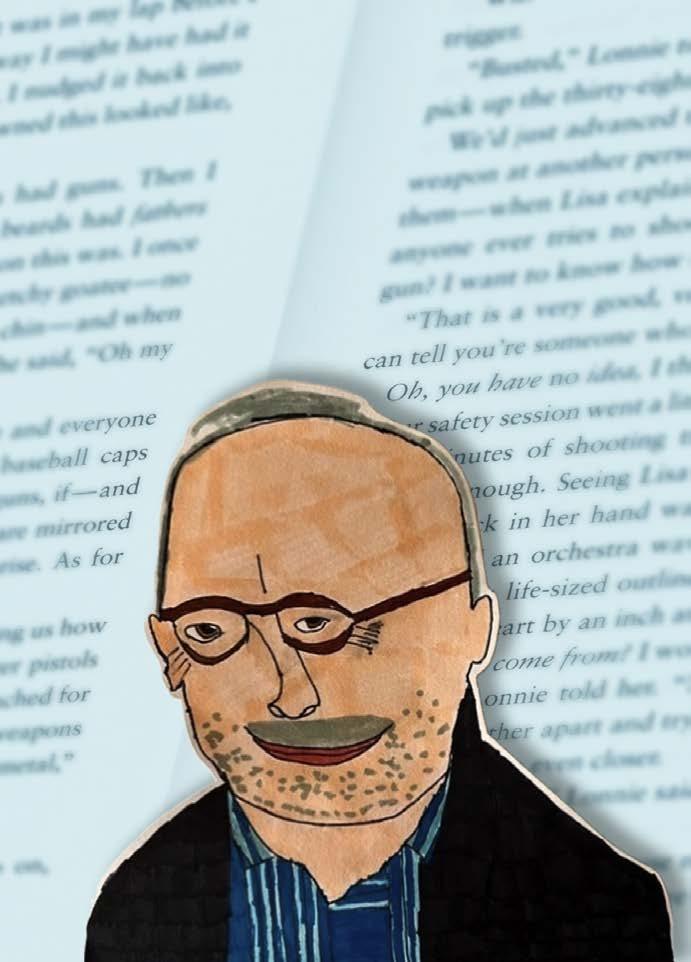


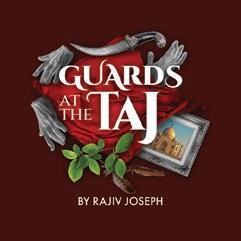
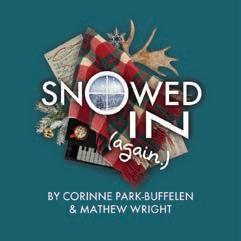

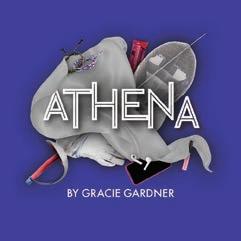
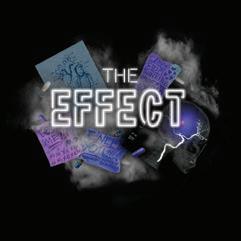
BY RICH SMITH
When the Pacific Northwest Ballet asked Preston Singletary to reimagine the world of Sleeping Beauty, he said yes immediately—even though he’d never created a theatrical set before.
“I just thought, ‘This could be a once-ina-lifetime opportunity, and what the heck, why not?’” he says.
He’s right about the opportunity. Creating a set for a story ballet is a big deal. They’re massive productions—the budget for this one hovers in the $4.5 million range, Singletary says—and they run regularly. Some of their sets, like Maurice Sendak’s treatment of The Nutcracker , reach a kind of iconic status in the community. Generations of dancers and families will grow up with Singletary’s vision of Sleeping Beauty coloring their daydreams.
The canonical ballet features a lush (and lengthy) score from Tchaikovsky and a famous hard part, the “Rose Adagio,” where four different suitors slowly twirl Princess Aurora as she stands on one leg en pointe. It’s one of those moments dancers train for forever. And like any other story ballet, Sleeping Beauty is insane. The action starts with a scornful fairy losing her invitation to a baby
“No, we’re not going to put glass on stage or in the hands of dancers.”
shower in the mail and then cursing that baby as revenge, and it ends with dancing cameos from Pinocchio and Geppetto, Little Red Riding Hood, Cinderella, and other characters from other fairy tales.
Despite the prestige and power of the ballet, PNB’s older production of it looked pretty minimal. They built a platform, threw up some columns with some ivy twirled around them, and painted some clouds on a backdrop. It was stately and very… spacious.
Singletary’s Sleeping Beauty plucks audiences out of that minimalist Western European dream and immerses them in a verdant Pacific Northwestern watercolor forest. Layers of painted madronas frame the scene, and a huge, action-eagle set piece that appears to be carved from wood dominates the stage. Formline graphics from Tlingit art informed the design and inspired the architecture of the costumes. Singletary says PNB Artistic Director Peter Boal didn’t want to set the fairy tale in an Alaskan Native tribe. They wanted a timeless, imaginary world, but one nevertheless rooted in a place, one that harkened back to the past while speak-
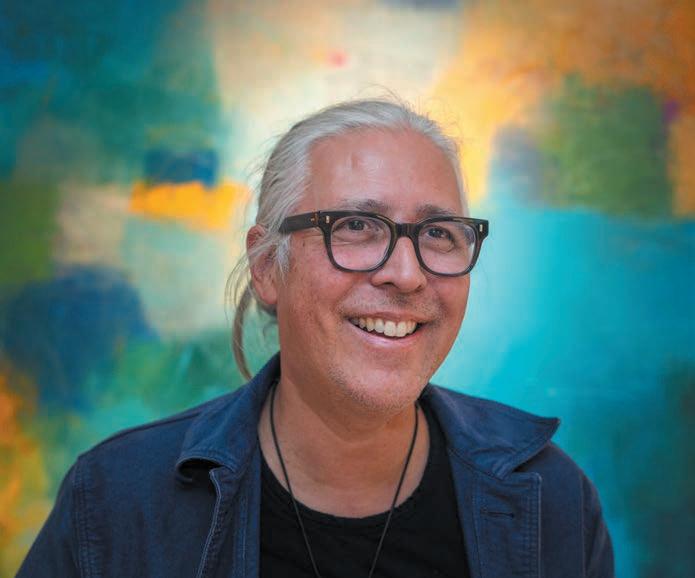
ing to contemporary times and pressing on into the future.
If that’s what they wanted, few other artists fit the bill better than Singletary. He’s known not only for refreshing myths but for continuing to write them, as he’s currently doing in a traveling installation called Raven and the Box of Daylight. In that exhibition, he uses aspects of traditional mythologies but modernizes them to create social commentary that speaks to our times.
Singletary first turned to his Tlingit heritage for inspiration in 1988 when he started sandblasting formline figures into glass. In 1997, he exhibited a body of this glasswork at Vetri Gallery downtown, and his career took off from there. He’s shown regularly at Traver Gallery, just upstairs from Vetri, and has exhibited in Canada, Italy, France, and all around the US.
In September, I called him up to chat about what it was like to create a whole new world.
You’re known for your glasswork. Are you making the whole set out of glass?
No, we’re not going to put glass on stage or in the hands of dancers. I’m working purely from a graphic standpoint.
Speaking of that graphic style, I once read that the thickness of water ripples inspired the line in formline art. Do you know if that’s true, or is that bullshit?
That’s one aspect of it, but there are a lot of theories around it. The line also looks like wood grain. There are also the tools used to make the forms. And then there’s the question about why the art is so distinctive. It’s either that the community was so conser-
vative that they wanted to instill this strong graphic design in their work, and the other idea is that they wanted to adhere strongly to tradition. The golden age for Northwest Coast [artists] happened at first contact with Russians, which gave the Natives access to steel tools that fueled the production of the art. But then shortly after that, the Natives were forbidden to own land, they were forbidden to practice their art and culture. It was essentially outlawed. They couldn’t stop it entirely, and it started to come back in the 1930s.
art. So I became really infatuated, like: What was it that the Modernists were trying to get out of what they called primitive art? They were essentially trying to deconstruct their education process, open themselves up to this work, and borrow aspects of it. That’s when I started looking at Modernist objects and making them and then adorning them with Northwest Coast art.
This is your first theatrical scenic design commission. Are you scared or nervous? If so, what did you do to tamp down the nerves? I was, but I had a great team working with me. I have to give a lot of credit to [watercolor artist and scenic designer] Charlene Hall, a partner I was given to work with to paint scenes. I directed a big design team and collaborated with [PNB Artistic Director] Peter Boal. The two of them helped me figure out how to create a successful stage set.
Aside from that huge eagle, what other Tlingit-inspired objects will audiences see onstage?
We have Carabosse represented as a raven, and the raven has its own unique symbolism to it. Raven is the trickster, but in some cultures, Raven is the foreteller of death. When the prince arrives, he comes in pad-

In its elegance and streamlined style, some of your work recalls Constantin Brâncuși’s sculpture. Do you like him at all? Was he an influence on you?
Yeah, him and [Isamu] Noguchi and Henry Moore. I didn’t go to school for art; I just learned through practical experience working with other artists and elders, learning about the artwork and mythologies, which all tie in together. The stories, the songs, the dances, the artwork—it’s all intertwined. Even the influences are intertwined. The first art that was interesting to me was the Surrealists, which is heavily imbued by all these symbols. Later, I learned that the Surrealists held Northwest Coast art in high regard because of its graphic style and abstraction and whatnot. And then I learned about this genre they called primitivism, which was the Modernists reflecting on Northwest Coast art, African art, or Oceanic
dling a canoe. The wedding scene at the end features some basket forms that I make, and when the Lilac Fairies come to bestow gifts upon Aurora, they give her plexiglass boxes fashioned after bentwood boxes.
If the opportunity arises, would you be interested in continuing to work with PNB or creating other theatrical sets?
I don’t even know how many Native American people have had the opportunity to design a stage like this, but I don’t think it’s very many. And I think I heard somebody tell me they were aware of one Native person who was asked to design the set for a ballet. So this, for me, is a real opportunity. I’m really flattered and honored to be asked to do it.
Singletary’s band, Khu.éex’, is playing at Westlake Park for Indigenous Peoples’ Day on October 14 at 1 pm. PNB’s production of Sleeping Beauty runs January 31 to February 9, 2025, at McCaw Hall.
OCTOBER 11–13
Cirque Noir with Troupe Vertig0 AND THE SEATTLE SYMPHONY SEATTLE POPS SERIES
OCTOBER 18 & 19
Ser.Rana
BENAROYA HALL PRESENTS
OCTOBER 24
DOUBLE FEATURE: Bride of Frankenstein and Young Frankenstein
OCTOBER 25
SYML
WITH THE SEATTLE SYMPHONY
OCTOBER 31–NOVEMBER 2
Harry Potter and the Deathly Hallows™ Part 2
IN CONCERT WITH THE SEATTLE SYMPHONY WIZARDING WORLD and all related trademarks, characters, names, and indicia are © & ™ Warner Bros. Entertainment Inc. Publishing Rights © JKR.
NOVEMBER 17
Scott Bradlee’s Postmodern Jukebox: The ‘10’ Tour
BENAROYA HALL PRESENTS
DECEMBER 13–15 Home Alone
IN CONCERT WITH THE SEATTLE SYMPHONY © 1990 Twentieth Century Fox
JANUARY 3–5
Marvel Studios’ Black Panther
IN CONCERT WITH THE SEATTLE SYMPHONY ©Marvel
FEBRUARY 14–16
La La Land in Concert WITH THE SEATTLE SYMPHONY ®, ™ & © 2024 Lions Gate Entertainment Inc. and related companies. All Rights Reserved.
FEBRUARY 20
Chanticleer
BENAROYA HALL PRESENTS
FEBRUARY 27
tenThing Brass Ensemble
MAY 10
Max Richter with the American Contemporary Music Ensemble
BENAROYA HALL PRESENTS

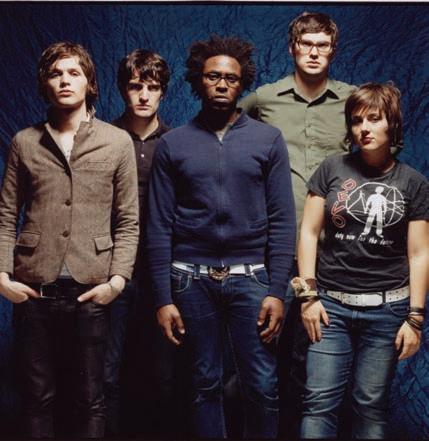


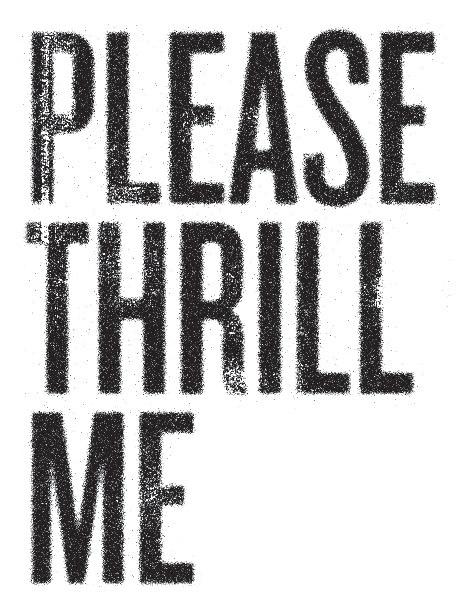
Pretty Girls Make Graves came together in 2001 like a Frankenstein monster built from pieces of some of the Pacific Northwest’s most influential experimental hardcore bands, including Area 51, Death Wish Kids, Killsadie, Sharks Keep Moving, and the Murder City Devils.
Their critically acclaimed debut fulllength, Good Health, was a conglomeration of those past lives. Opening track, “Speakers Push the Air,” is a high-octane, confi dent celebration of the power of music a la Operation Ivy’s “Soundsystem.” On tracks like “More Sweet Soul,” “Sad Girls Por Vida,” and “By the Throat,” the band leans into their heavier tendencies. Wirey and sharp guitars



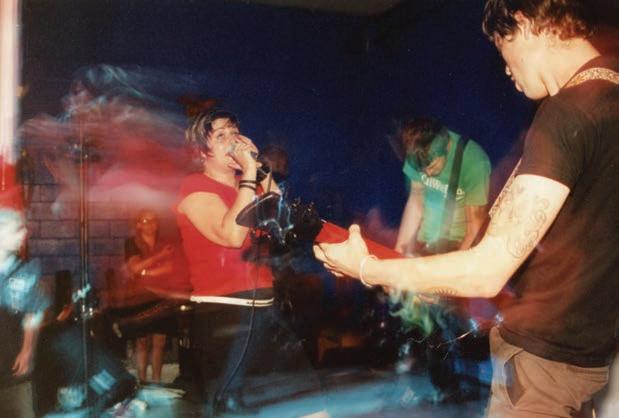






Abridged Oral History of Seattle’s Greatest Rock Band, Pretty Girls Make Graves
BY MEGAN SELING
ANDREA
PHOTOS COURTESY OF
pierce through throbbing bass and incisive drumming while Andrea Zollo’s sing-scream vocals tear through the speakers to shout down any motherfucker who dared cross her.
Though Good Health was celebrated by fans and critics, the band slipped out from under any attempt to get pinned down on their follow-ups, The New Romance (2004) and Élan Vital (2006). Did you think they were early-aughts emo? Surprise, now they’re playing ghostly post-rock that burns slower than the nag champa incense you bought at Hot Topic. All the while their live shows became a thing of legend, simultaneously chaotic and captivating affairs that often devolved into pits, nay, entire rooms of moshing, dancing, singing, and screaming.
ZOLLO UNLESS OTHERWISE NOTED
In 2007, less than a year after the release of Elan Vital, the band broke up. Drummer Nick Dewitt announced he was leaving and
“It was like seeing the Clash or something. They were the coolest fucking band I had ever seen.”
Pretty Girls Make Graves packed it in after one last tour that summer.
But Pretty Girls’ legacy has flourished,
thanks to Spotify playlists, music blog’s nostalgia-driven best-of lists, and fan’s wishful thinking. Stereogum’s Tom Breihan revisited Good Health 20 years after its release: “On Good Health, tension and release are one and the same,” he wrote. “The album burns itself out in 28 delirious minutes, and it’s enough to leave you breathless and stirred.” Brooklyn Vegan listed Good Health as one of the “Best Emo & Post-Hardcore Albums of 2002,” and The New Romance earned a spot on Pitchfork’s “The 50 Best Indie Rock Albums of the Pacific Northwest.” (How modern music criticism has devolved into niche lists recycling decades-old records is a story for another time.)
Even so, as Pretty Girls’ peers gave in to
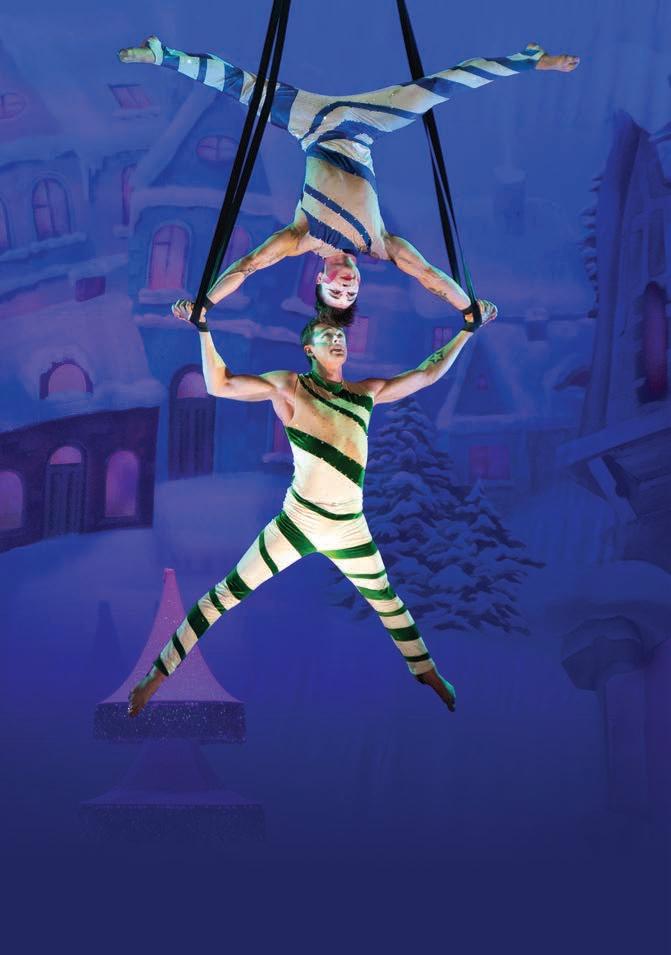
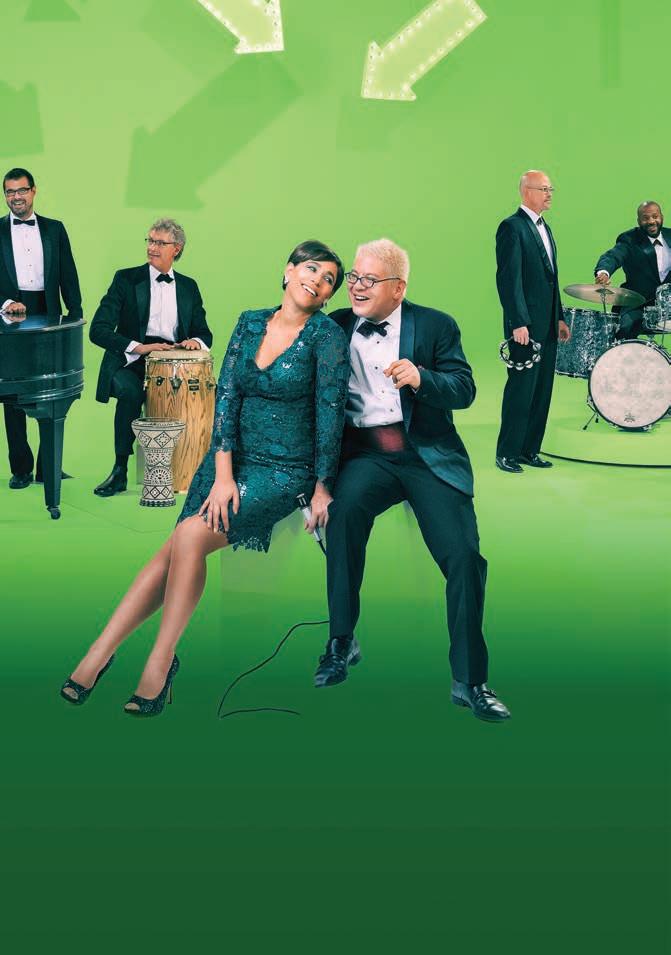


fans’ cravings for nostalgia—Jawbreaker, Blur, Le Tigre, and Botch have all returned to the stage—it felt like Pretty Girls Make Graves fans were resigned to be forever disappointed. Heartbroken. Emo. In response to someone asking, “What is the saddest truth about life?” renowned culture critic Hanif Abduraquib Tweeted in October 2023, “after 16 years I have finally come to accept the reality that pretty girls make graves are never reuniting.”
For me, it started feeling personal, too. It’s been a running joke in my circle of friends that I would gleefully jump in front of a moving car (like, a Prius, nothing crazy) if it’d result in PGMG pulling a Make-a-Wish and reuniting to help raise funds for my hospital bills.
Then it happened. Last November, the band announced they’d be reuniting to play The New Romance in full at the When We Were Young Fest in Las Vegas in October 2024. They’ve since confirmed more dates in New York, Los Angeles, and Portland, but, rightfully, Seattle gets them first. Pretty Girls Make Graves will play their first shows in 17 years on September 21 and 22 at the Showbox.
To mark what feels like nothing short of a miracle, I interviewed all the current members of the band (minus bassist Derek Fudesco, who doesn’t do interviews), as well as some of their colleagues, friends, and fans, to piece together their story for a new audience, yes, but to also try to make sense of their magic.
shows were hard to come by, so they played where they could—basements, garages, old theaters run by volunteers. These earlier projects were the playgrounds on which Pretty Girls found their voices and encouraged one another to explore the deepest, weirdest nooks of their creativity… which, apparently, sometimes included ankle-biting.
volume as possible and then slowly, over time, trying to reverse-engineer that into actually singing.
ANDREA ZOLLO: We just wanted to burn it all down [laughs], but take ourselves with it. We just did not care. Spencer was equally, if not more, terrifying. People have mentioned seeing Area 51 at the time and being like, “I
exceeded our expectations. Looking back, I wish I had seen the potential. We put out a seven-inch, we toured the West Coast. It was like, what else is there? We got reviewed in Maximum Rocknroll . I don’t remember what it said.
I quit fairly quickly, but I think we really achieved what we were trying to do, probably more so than any project I had been a part of. I quit, and [Andrea, Derek, and Dann] basically continued without me as Death Wish Kids.
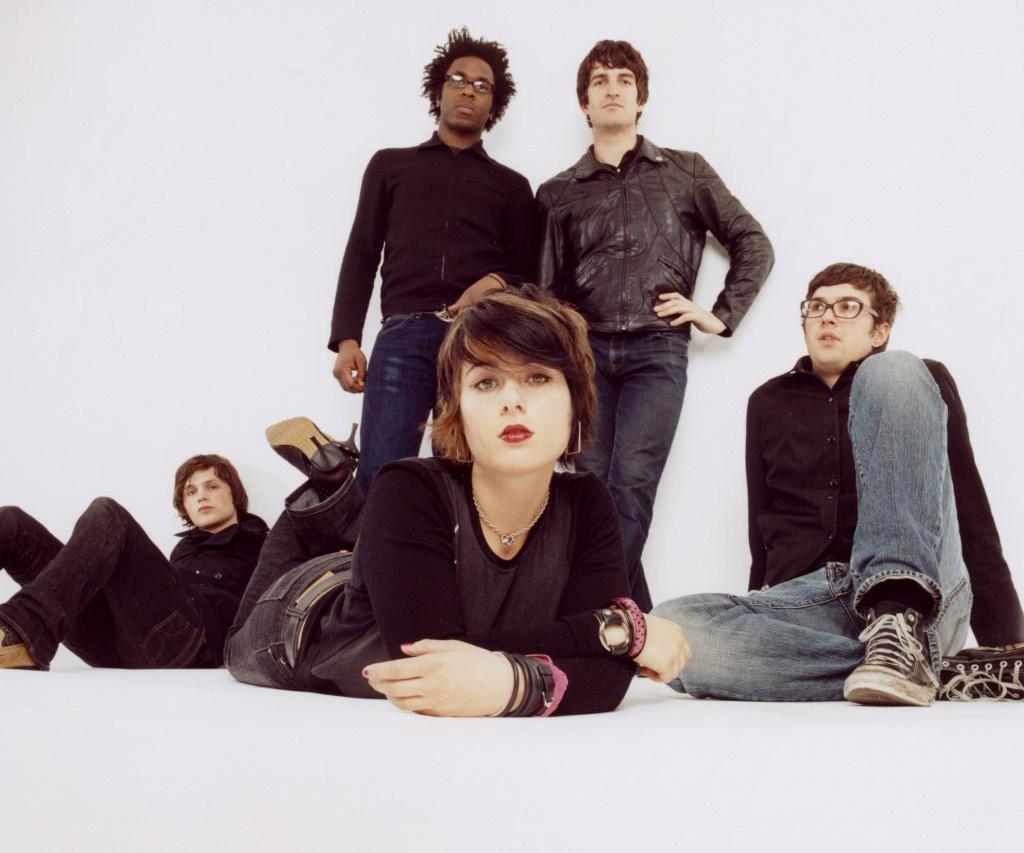
It’s the most appropriate way I could think to commemorate the return of a band whose music has seeped through my skin and into the marrow of my bones. The first 17 seconds of “Speakers Push the Air” are woven into my DNA. I almost can’t believe this is real.
I would jump in front of a moving car if it’d result in PGMG pulling a Make-aWish and reuniting to help raise funds for my hospital bills.
Pretty Girls Make Graves a back; Pretty Girls Make Graves por vida. And I didn’t even have to run into traffic.
It Started in Our Basement Actually, it started in a punk house. Before Pretty Girls Make Graves, all the bandmates—originally Andrea Zollo (vocals), Derek Fudesco (bass), J. Clark (guitar), Nathan Thelen (guitar), and Nick Dewitt (drums)—were teens in various experimental hardcore and rock bands.
It was the ’90s in Seattle, and because of a very active Teen Dance Ordinance, all-ages
SPENCER MOODY (Area 51, Murder City Devils): When we started Area 51, were like, “We’re starting a punk band. A punk punk band.” We were consciously trying to do something between Born Against and Filth. We were all from the Eastside, so me and Dann [Gallucci] and Andrea all knew each other from probably around the age 15 or 16. When Dann and Andrea met, Dann was afraid of Andrea. Andrea was like a Rizzo kind of character in her high school. She was, like, a ruffian with a bottle of Jack Daniels in her locker.
ANDREA ZOLLO: I was pretty scrappy, but we were all pretty scrappy. I feel like, at that time, we were kind of like a Bad News Bears crew and felt very unified. We were 18, 19, maybe 20 years old. We all lived at a punk house together that was called the Goat House. There were, like, 13 of us who lived there… in a house that did not have 13 rooms. But we did have a basement, and they put on shows every weekend. Andy Sells— he actually played the drums on the Area 51 recording and is not credited—and Tonie Palmasani also lived there, and they had been doing shows. That was a game changer to move into a house like that at that age.
SPENCER MOODY: We never had a monitor, and oftentimes we would show up to play, and there would only be one microphone. So Andrea would get the microphone and I would literally just yell. That was probably the most influential part of it, on me, was learning to use my voice in this really weird kind of backwards way. All that mattered was trying to have as much
remember Spencer was crawling around on his hands and knees and just biting everyone in the crowd on the ankle!”
SPENCER MOODY: I would always end up being on the floor, and then the room would clear out and I’d just be laying there. [Laughs]
ANDREA ZOLLO : Area 51 actually got banned from playing the Velvet Elvis because we destroyed some stage set. The venue also did plays outside of hosting all ages shows, and during one of our sets, we accidentally destroyed something that had to do with one of the props. Meg Watjen was like, “Sorry guys, but we have to ban you. You cannot play here.”
SPENCER MOODY : I think we all
ANDREA ZOLLO: Those bands were shorter-lived, but they didn’t feel short-lived at the time. They felt very impactful. Both of those bands feel very stretched out, like they were a long period of my life. [Pretty Girls Make Graves started because] Derek and I wanted to play in a band together again. Outside of Area 51 and Death Wish Kids, we were also in a band called the Hookers that I played drums in. That was around the same time as Death Wish Kids, but completely different kind of music. Some early Murder City Devils songs are actually Hookers’ songs. “Broken Glass” was a Hookers song. [Laughs]
Things were getting rough in Murder City Devils. It was getting really tough for them for a bazillion reasons.
SPENCER MOODY: There was a bone of contention at the time, but that passed. It was never personal, it was never a friendship rift. It was more of an artistic rift. Really, after the initial success of Murder City Devils, there was just so much general arrogance and disrespect. It made sense that Derek would want to move on to something different, and it made sense that Andrea would be part of that.
ANDREA ZOLLO: At the first [Pretty Girls Make Graves] practice, it was me, Derek, Nathan, and Nick. J might’ve come to the second practice. We wrote a whole bunch of songs together before we started trying to figure out which way we would end up going. Sometimes I wonder if we’ll ever find those recordings. The very first song we
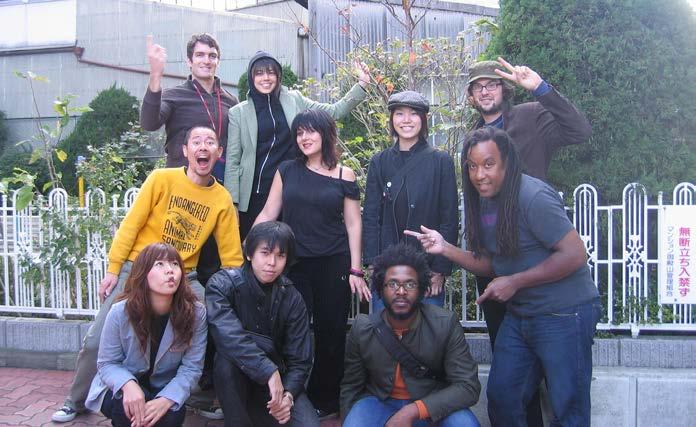
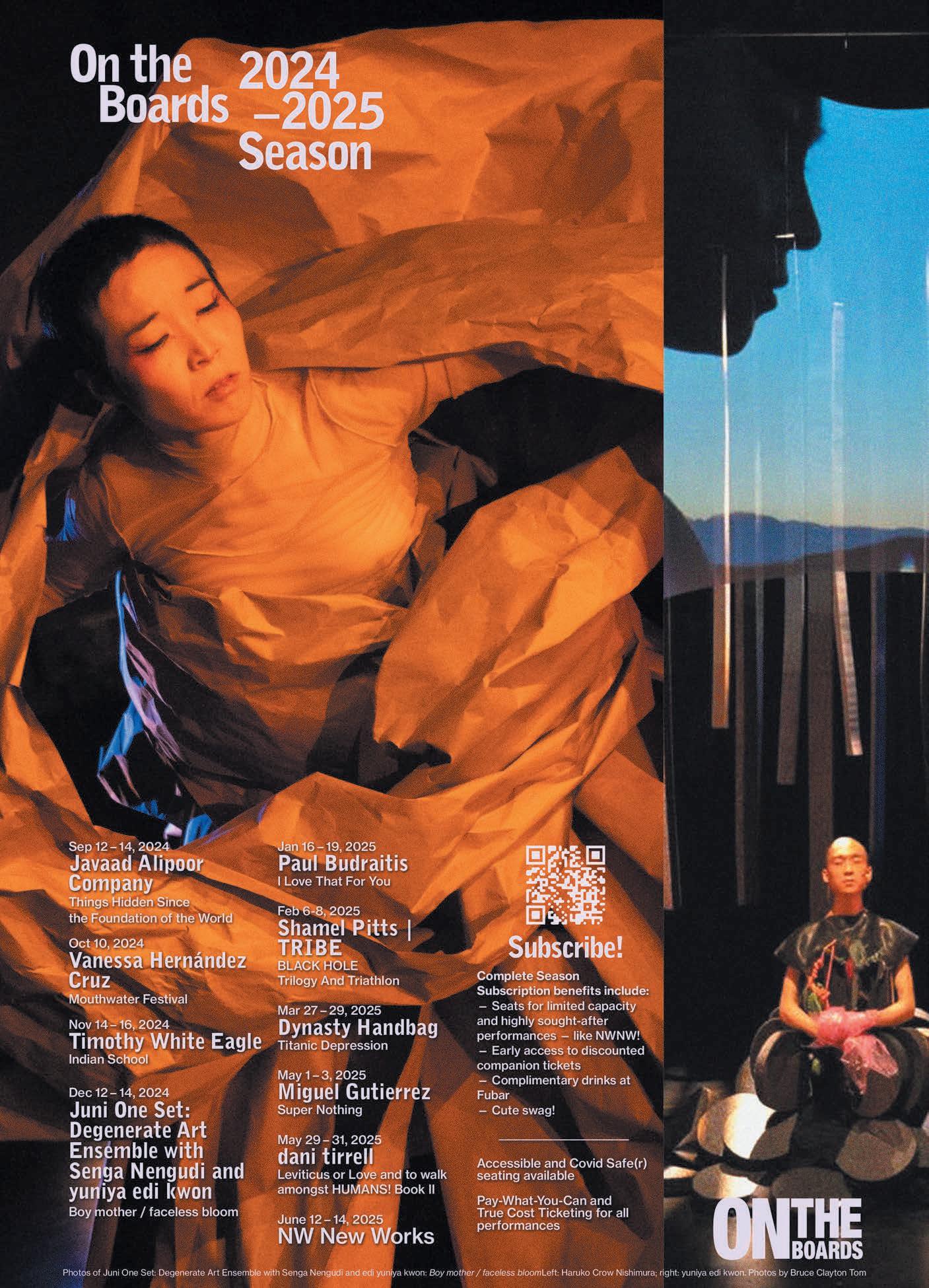

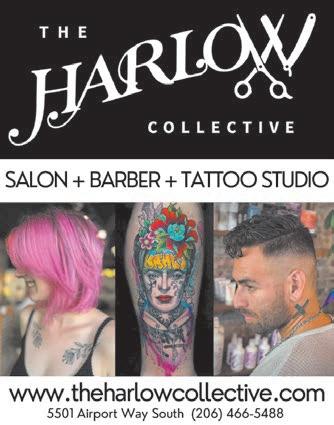
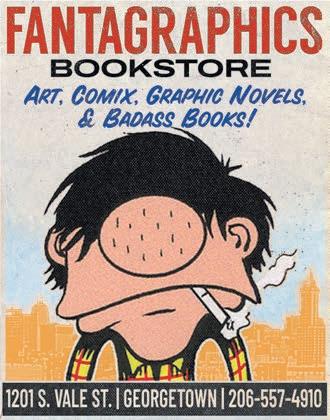
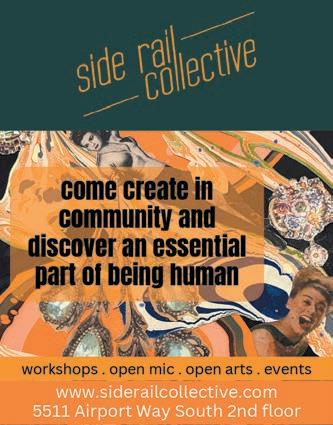
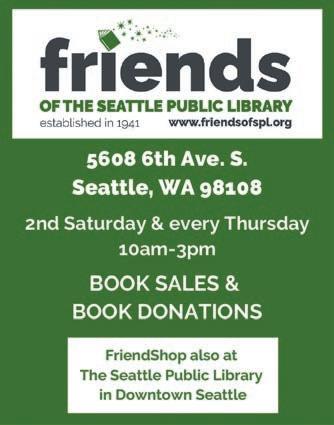
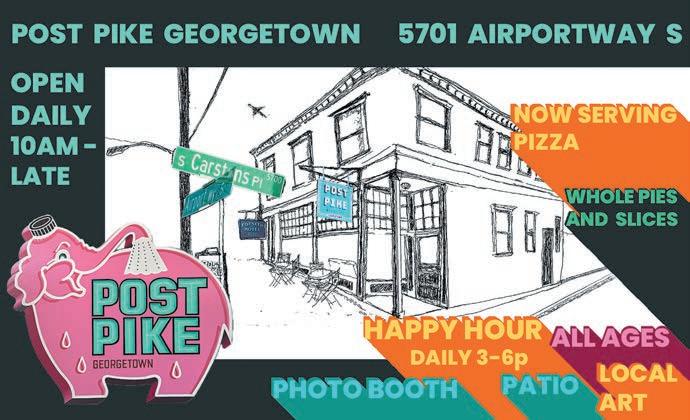
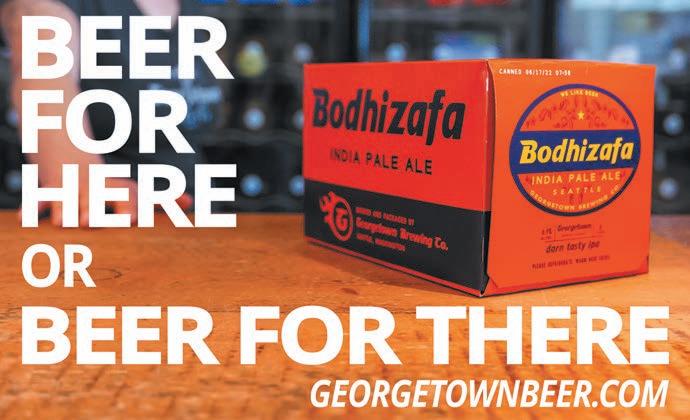
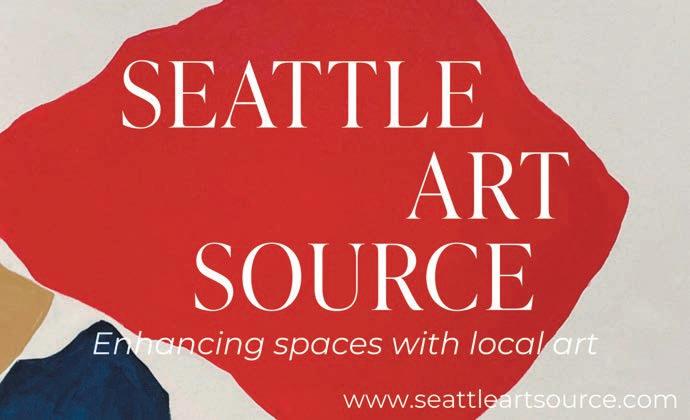


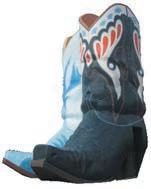
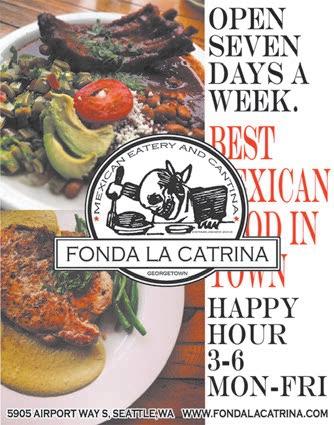





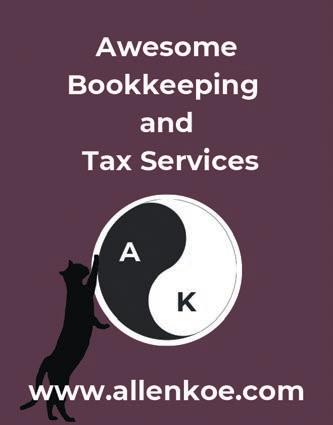
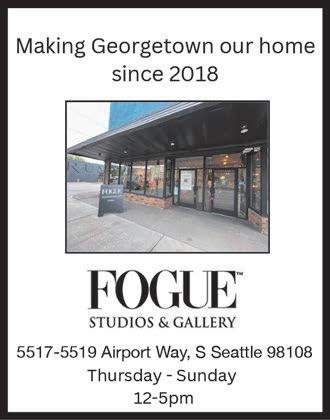
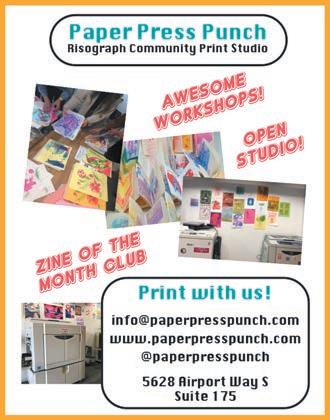






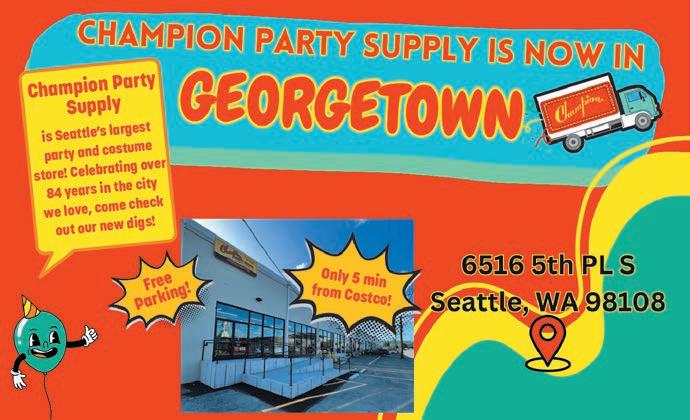

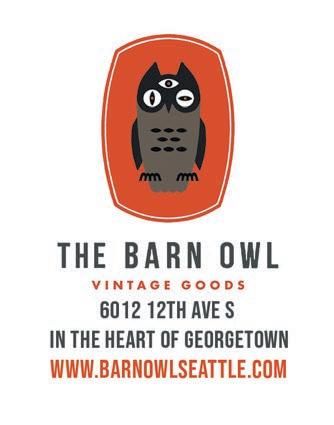
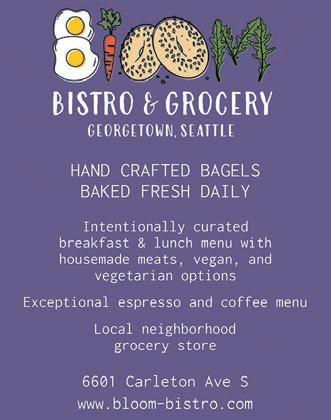

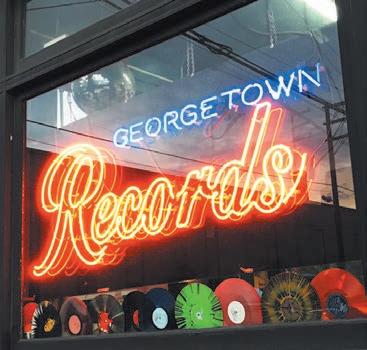
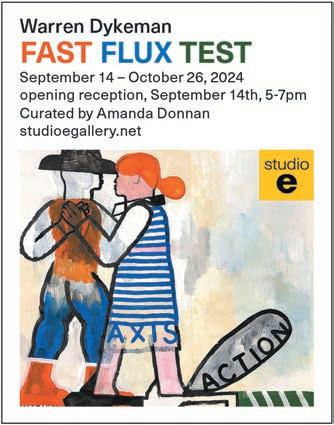




ever wrote was “Liquid Courage,” which did make it onto the EP!
NICK DEWITT: My only real goal at the time was to play in a fun band, preferably one that would fit well into the Touch ‘n Go catalog. I remember really admiring, and probably imitating, Mario Rubalcaba from Clikatat Ikatowi and thinking the drums could be so much more than a timekeeper.
J. CLARK: Our style of writing in the beginning was very much just get in the room and play, play, play, play, play and see what comes out. When we finished recording that first EP, we didn’t really know, or at least I didn’t fully know, what it was gonna sound like. We were getting to know each other. We were all coming from different styles of playing and figuring out how that all fit together.
Everything for us was hyperaccelerated because when Derek gets determined, he’s very good at making stuff happen. Our first or second show was opening up for Fugazi. That’s amazing, right?
ANDREA ZOLLO: Mike Ott did a record label called Sound Virus, which put out both Area 51 and the Death Wish Kids. He was who actually put out the first PGMG EP. Sound Virus didn’t do CDs. That’s where Steve Aoki came in and asked if he could release the CD version on [his record label] Dim Mak.
J. CLARK: Steve put out Killsadie’s first full-length on Dim Mak, so we go back even before Pretty Girls Make Graves.
STEVE AOKI (Founder of Dim Mak Records, cake-throwing EDM superstar): J and Killsadie are the reasons I found out about Pretty Girls Make Graves. We became such close friends that I devoted all my free time to doing whatever possible to promote them. Not just because they were the best band I had heard, but because they were all such good people. Warm-hearted, incredibly devoted to their craft, and cared deeply about their friendships. In the end, it’s because they gave me a chance. A little kid with big dreams who had no connections or weight in the industry whatsoever. It was a really beautiful time, to be honest. Sweaty, stinky, and full of passion.
ANDREA ZOLLO: We played with Steve’s bands back in early, early, early Pretty Girls days. Maybe even our first tour. We just knew Steve as this punk we played with, who was always an awesome dude, but his dad, Rocky Aoki, started Benihana. When Steve went on tour with us once in Europe, he would take us to Benihanas around England because we could eat for free. It was wild to have people in the kitchen peek out and want to see Steve because he was Rocky’s son.
STEVE AOKI: I was there hawking T-shirts and selling the Dim Mak EP that honestly changed my life. I don’t remember the exact number, but I think it was at least 10,000 CDs sold. Mind you, I started Dim Mak with no distribution, strictly selling from my backpack of vinyl to fans coming to shows and then to small distribution networks. It would be a success if we sold out of 1,000 copies. This was the real start of being forced into becoming a business.
[Working with Pretty Girls Make Graves] taught me about how to follow my heart and friendships into the unknown with passion as my strongest suit out of the cards I was
dealt. Derek and I later formed our own label called Cold Crush and released a few records, and that was also fun and out of our bond and friendship. I think back to those days with the band, and it brings a lump in my throat, thinking about the lovely memories of pure friendship and trust with no motives and gains.
When it came time for Pretty Girls Make Graves to release their debut full-length, Good Health , most folks in the know
thing different.
NICK DEWITT: I recall choosing Lookout because we liked them as people right away, not corporate at all. Also, we really loved that Ted Leo and the Pharmacists record
The Tyranny of Distance. I lived with J at the time, and that record was on repeat for a couple months.
ANDREA ZOLLO: Before Derek moved to Seattle, he was living in the Bay Area. That was the music scene he hung around and crossed over into, around 924 Gilman Street. Our very first Pretty Girls tour was
PHIL EK (Producer) : I liked the fact that they were controlled chaos with a really, really super strong and tight rhythm section and energy-forward and exciting pop melodic kind of punk vocals.It was a really cool blend of a lot of things that had happened, were current, and felt forward reaching.
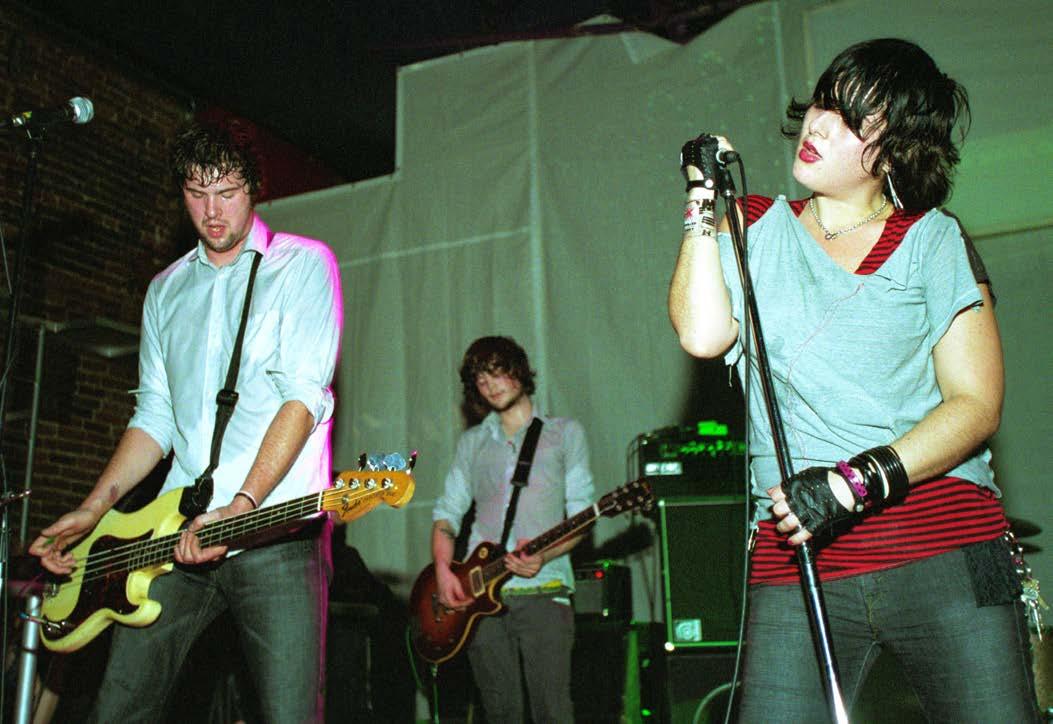
When
assumed the band would sign to Sub Pop. By that point, Derek’s former band Murder City Devils had released two full-lengths and an EP with the famous label, and Pretty Girls released their song “More Sweet Soul” through Sub Pop’s Singles Club.
But that’s not what happened. And the rumors were flying. Former Stranger music critic, Kathleen Wilson, reported in her column It’s My Party (“Promotions & Departures,” February 14, 2002): “The Cha Cha was recently abuzz with chatter about a rumored legal war soon to be waged between the former Murder City Devils and Sub Pop. Details are sketchy, but it seems that Sub Pop feels the band still owes money following its breakup. Others say that the label is retaliating over its failure to procure (with its ‘leaving member clause’) Pretty Girls Make Graves, and is now trying to charge MCD for mechanical royalties, despite the fact that the band still sells nearly 100 CDs per week.”
Bay Area punk label Lookout! Records released Good Health on April 8, 2002.
ANDREA ZOLLO: Things got a little squirrelly. Sub Pop made us an offer, but Lookout!’s was better.
J. CLARK: I think Derek just wanted to try something different. Not to say he had anything bad with Sub Pop, but the whole band, for all of us, was about trying some-
she says, “It was like time fucking froze.”
opening for Bratmobile, and, at that time, [Bratmobile’s drummer] Molly Neuman was one of the owners of Lookout!. It was actually Bratmobile and Defacto, which was Cedric [Bixler-Zavala] and Omar [Rodríguez-López] of At the Drive-In’s dub band. I grew up listening to and being very, very influenced as a teenager by what was
“Spencer was crawling around on his hands and knees and biting everyone on the ankle!”
happening in Olympia and the entire Riot Grrl scene, so the fact that we got to play with Bratmobile was not wasted on me as a twenty-something. I was excited every night. It was after that tour that Molly was like, “Hey, let’s put something out!”
SPENCER MOODY: I remember telling Megan Jasper at Sub Pop, “Maybe Pretty Girls will get super huge, and that will bring attention to the Murder City Devils’ back catalog. Maybe we can just ride on their coattails [laughs].”
LAURA JANE GRACE (Against Me!, Laura Jane Grace and the Mississippi Medicals): I remember the first time I heard Pretty Girls Make Graves very vividly. It’s like a moment in time for me. They played in Gainesville, Florida, at Market Street Pub, and I think it was the very first Fest in 2002. They played with Har Mar Superstar, and I had played some random house shows over the years with Har Mar, so I was there for that. I had no idea who they were; I had never heard their name. I remember Har Mar just killing it, but then when Pretty Girls Make Graves played, it was like time fucking froze. People started moving differently. The way the room felt—it was specifically “Speakers Push the Air,” they came out guns blazing. It was like seeing the Clash or something. They were the coolest fucking band I had ever seen. Each of them looked impeccably cool, too, and it sounded fucking great. From then on, I was totally sold.
STEVE AOKI: Live, they are each very different personalities onstage, all bold and animated in their own worlds, but really connected. They know each other’s movements—that’s where this X factor lies. The way they play their music together is the magic and the reason why their shows are so memorable. I’ve been with them when they played to 20 people in a living room, to bigger shows for hundreds of people, and they pour sweat and energy into their show every time.
ANDREA ZOLLO: One show during our first US tour stands out just because it was bananas. It was at Mass Arts in Boston. We were all like, “This is amazing!” even while
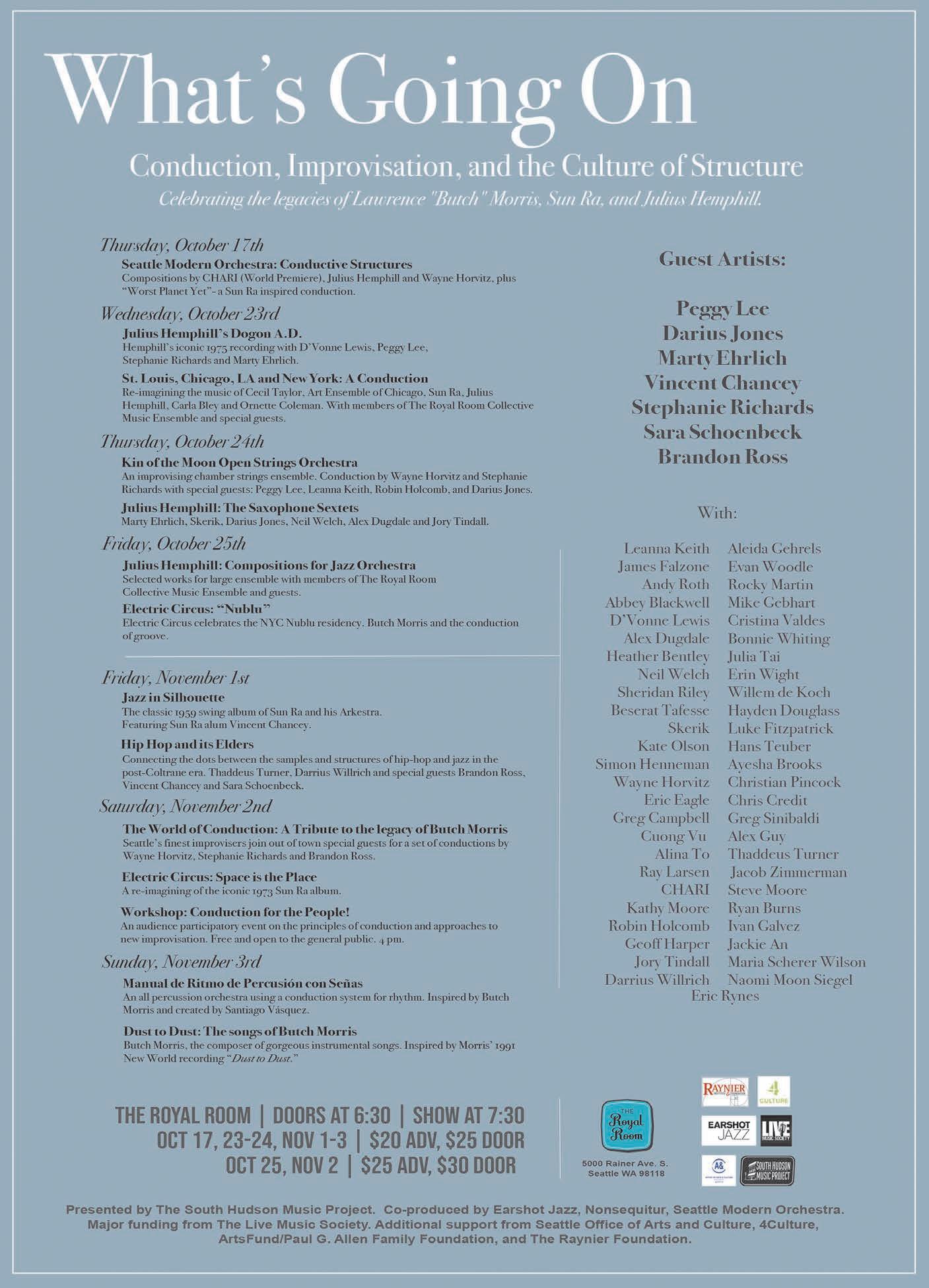
it was happening because the crowd was so wild and having so much fun and dancing. This all-female mosh crew called Moshtrogen showed up. They all had T-shirts that said Moshtrogen with this great logo, and they started this giant mosh pit. There was someone in a dirty bunny costume. There were all these surreal things happening. I was so happy, I was so pumped—I’ll always remember Joan from Moshtrogen.
J. CLARK: After the first EP and Good Health, we were starting to get pigeonholed into a specific sort of emo/post-emo thing. Like the At the Drive-In thing, we would get that a lot. Don’t get me wrong, we played shows with those guys, and I love those guys,
But I wanted to try different sounds, build textures. And they were stoked. Nick loves the studio. J does tons of records now. They’re studio people. They like this stuff.
NICK DEWITT: We all love a lot of music, and, at the time, I was making a lot of new discoveries. One week it’d be André Popp. Next week, it’d be Amon Düül II. Naturally, that meant trying out new styles and approaches.
PHIL EK: They were a very diplomatic band. Which is good! And also time-consuming. I have seen fistfights, I have broken up fistfights. I’ve seen people storm out. I’ve seen people quit in the studio. I’ve seen crying, I’ve seen yelling. They’re one of the few bands

but that wasn’t, musically, where we were all coming from.
I was more an indie rock kid. Fugazi, Chavez, and Yo La Tengo were really huge influences on me. I wanted to be able to do something more diverse than what I did in the hardcore scene. I wanted to be able to express more than just fast and aggressive.
PHIL EK : We spent a month on [ The New Romance] at Bear Creek. No days off either, which is insane. Good Health was a week, maybe. I wanted to make a record that felt more studio. Their Sub Pop single, their first EP, Good Health—those all feel live. It’s really just them performing their songs in the studio, and that sounds awesome.
In 2004, after guitarist Nathan Thelen left the band, Pretty Girls Make Graves brought in friend and former Hint Hint keyboardist Leona Marrs. Pretty Girls had always been a guitar-forward band—Thelen and Clark’s dueling riffs resulted in a delightfully dizzying maze of noise. Marrs had to go back through Pretty Girls’ catalog and write new keyboard-friendly parts. In a 2005 interview with Exclaim , Fudesco recognized the scope of the task, saying, “To put that kind of pressure on anybody is a little ridiculous.”
The band also toured constantly—they made multiple runs across North America and Europe and also hit Australia and Mexico. When they went into the studio in 2006 to record Élan Vital, people were exhausted.
Élan Vital still received rave reviews, but a weaker 6.4 score from Pitchfork noted the band was “seeming to grow self-conscious and give into pressure to expand its horizons.” Their attempts at being diplomatic in the songwriting process muddied the waters, only adding to the already thick tension.
J. CLARK: As the years went on, I think everyone’s taste broadened, so we started to try different things. By the time we got to Élan Vital, some people would bring in whole songs, and then we would maybe rework them. It was a slow development of people turning into songwriters. I mean, look at Derek and what he did with the Cave Singers after Pretty Girls. I think we were just trying to challenge ourselves.
ANDREA ZOLLO: I feel like there was
“If you had told me a couple of years ago that we’d be playing a reunion show, I wouldn’t have believed it.”
a conscious intention with Élan Vital to let everybody have a voice because we never agree. We’re never on the same page. So if somebody wanted to write something in full, we let them do that and let them express themselves. I think that’s why that record sounds so different from the others. Like, “The Number.” That’s Nick’s song, he wrote everything on that.
and I think people were ready to move on. And I was too, actually. I was fine with it.
NICK DEWITT: I wanted to do my own thing. With hindsight, I see now that I could have done both. It was hard, of course. I sensed that when I left it would hurt our relationship, and for a time I’m sure it did.
ANDREA ZOLLO: We were all pretty surprised, though we shouldn’t have been. I think it was pretty bittersweet. I don’t think any of us wanted to stop, but I think it’s telling that we didn’t just get a new drummer.
J. CLARK: I was bummed about it. I was mad at [Nick]. He wanted to focus on his own music, which I thought was always great and encouraged him to do, but I didn’t want the band to break up. I don’t think Derek and Andrea did either, but we didn’t want to be the band that was whittled down to one or two original members, and you don’t even recognize them anymore.
ANDREA ZOLLO: That band did sort of implode. Everyone else moved out of Seattle pretty quickly. Derek and I were the only people who stayed, and because it was kind of a gnarly breakup, we didn’t all stay in touch.
Pretty Girls Make Graves—Zollo, Fudesco, Clark, Dewitt, and Marrs—had their first reunion rehearsal in late August in Los Angeles. It was the first time in years that the band had all been together in the same room. There were hugs and apologies, and the nerves quickly gave way to excitement as they started to play.
ANDREA ZOLLO: I had no idea what to expect. I’ve seen Leona over the years, and I’ve seen J over the years, but all five of us together in a room at the same time was really surreal. I didn’t know if it would be bringing up old shit. But it was really great. It made me more excited than ever to actually play together.
J. CLARK: It was nerve-racking a little bit! Obviously, we hadn’t played the songs in a while, and we 100% hadn’t been in the same place in a while, but by the end of it, it felt better than even when we were a band in all honesty. We had hugs, we had moments of apologies for things that happened during the duration of the band, and it was just a good revival to start out with.
that really worked diplomatically well.
LAURA JANE GRACE: I’m not gonna lie. The changes they made as a band from record to record challenged me. It wasn’t a rehash of the previous record, ever. They grew really pronouncedly from album to album. Sometimes that took me aback, and I wasn’t necessarily sure if I liked where they were going, but I was always determined to keep listening, and I always got it eventually, and each record became a favorite.
Against Me! toured a lot with the Blood Brothers, and they were bands I associated with each other, coming from the Seattle scene. I looked at the Blood Brothers and Pretty Girls Make Graves as standards of cool.
LEONA MARRS: For me, it was very exciting because I’d never been a part of a recording that had such a big budget. [Laughs] So we could really take our time. But we had challenges at that time, we came into [recording Élan Vital] not being very prepared. Because I was new [Editor’s note: Marrs joined in 2004 when Nathan Thelen left], I wasn’t sure what was normal.
ANDREA ZOLLO: We definitely pushed ourselves too hard. Things were getting more and more tense.
LEONA MARRS: For most bands, I think, it often ends up [feeling] like a dysfunctional family. You just know each other so well, so you might not always get along. I got along with everyone because I didn’t have so much history. But I think there was some tension,
NICK DEWITT: [There was] definitely a bit of anxiety leading up to playing together again. I was so happy to see everyone, and we ran through a few songs and surprised ourselves at how good they sounded. Second run though was like hand in glove.
ANDREA ZOLLO: It started to feel very normal and then that started to feel surreal.
J. CLARK: I remember leaving [rehearsal] and I said to them, “Dude, I’m so excited that I’m gonna put in 120% now and make sure that these shows are gonna be awesome.” Everyone felt really encouraged by being back together.
ANDREA ZOLLO: [We don’t have any new music] in the works yet, but we’ve literally had only one practice together so far. [ Laughs ] But I wouldn’t rule it out because if you had told me a couple of years ago that we’d be playing a reunion show, I wouldn’t have believed it. So who knows what can happen? ■
BY AUDREY VANN
Even if you haven’t heard indie rock luminary Sarah Trudzin’s name, you’ve probably heard her work. She’s an in-demand producer, mixer, audio engineer, and, since 2018, performer under the stage name Illuminati Hotties. But her meteoric rise in the industry started three years ago.
In 2021, she released her third album, Let Me Do One More, on her own Hopeless Records imprint, to critical acclaim. Then she worked on boygenius’s the record and Weyes Blood’s Titanic Rising—arguably two of the most beautiful-sounding records of the last decade—and earlier this year, she won her first Grammy for her work with boygenius. It feels like her talent is finally on full display, and her knack for sonic perfection is clear on her fourth release, POWER, which she described as “all rippers” and “no filler.”
In August, while Trudzin was working on a project on the East Coast, The Stranger connected with her over Zoom. We talked about her emphatic new album, how early-aughts indie rock shaped her sound, Arthur Russell’s genius, and her creativity during late-stage capitalism.
I want to start with the album’s profoundly relatable opening track, “Can’t Be Still.” Does the constant need for activity help or hinder your creativity?
Probably both. I’m easily distracted or bored if something isn’t taking all my attention. I think it’s human nature to be completely enraptured at this stage of capitalism. It also makes me face pathways that could be fleeting. But, because my ears are up, looking for that kind of thing, I think it helps the creativity.
What is your songwriting process like?
I constantly write down ideas and pick up the guitar to record a quick voice memo. You have to make space in your life for creativity. If you don’t take time or set aside office hours to be available to be inspired, then it doesn’t happen. It can happen randomly, but as a working musician, songwriter, and producer, I often set aside 20 minutes to write. Whatever it takes to treat it like a job and make something. Even if it’s not the most inspired, beautiful masterpiece, you have to put the reps in.
You worked on the bulk of POWER while in Joshua Tree—why did you choose that location?
I can’t help but associate Joshua Tree with musicians like Gram Parsons and Donovan. It was a daily practice of putting ideas together and coming back to it every morning. However, Joshua Tree was big in that I spent a few days there to let the tap water run and get to the meat of the album. It allowed me to step away from my regular work, dishes,

vacuuming, or whatever random things I do at home. For that reason, a lot of the album poured out of those sessions and began to hit its stride thematically. But it was the legwork leading up to that trip that most of the ideas were formulated in.
And mainly, it’s just a place where there is nothing better to do. I went out, I saw a couple of things, and I took my dog for a walk. But you walk outside and it’s 100 degrees. It’s just mountains, plants, and a flat desert. There was little room for me to find something better to do than finish making this album. It was more of a trap I created for myself than an effort to tap into cosmic psychedelia or something.
What music were you consuming while writing the album?
I was listening to indie rock bands that had a propulsion to the top of music in the 2000s. I was fascinated by Modest Mouse. They made noise records and then, all of a sudden, released a record that put them on KROQ radio for the rest of their lives. Now, they can headline any festival forever. Death Cab for Cutie, the Yeah Yeah Yeahs, and the Shins are the same way. I became obsessed with this subversive culture of musicians who suddenly found themselves in extreme musical success. Their sound was interesting to me because they managed to keep a lot of authenticity while doing something that was popularly accepted. I don’t think any of them were
under the thumb of a label, being told, “You better make ‘Maps ’” They were making the music that moved them. TV on the Radio especially. They were this runaway success of a band, and it’s because they’re fucking loud and awesome.
Did you take inspiration from the trajectory of those bands, or the sound of those actual records, or both?
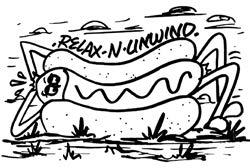
For sure both. If you point to the album that changed those bands’ lives, you can see that they did the work to make a better album—or to make a more accessible album. It’s interesting to me from a career standpoint but also sonically. There is a perceived loudness level of those albums that’s so immediate. Think about “New Slang”—I thought about that song a lot. It has that placement in Garden State that’s bubbling below the surface.
The perceived volume of that record is loud, even though it’s quiet music played with acoustic guitars. I feel that way about old Fleet Foxes. It just feels grand in this amazing way. If someone played it for you in your living room, it wouldn’t be a loud song. But the way it’s recorded and the way it’s perceived is massive. That sound exists in a lot of that era of music.
Is there a song on the album that you had in mind as your mainstream success song? Any of those songs could have been singles,
which is always the goal when I’m making an album: all rippers, make every single song matter. There’s no filler on that album. But I don’t think anyone can predict a breakaway success like that anymore. People find out about songs all the time—songs that are like 25 years old—that get famous on TikTok and change a band’s life two decades into their music career. [Editor’s note: God bless Kate Bush.] I hope there is a lane for one of the songs to reach a mass audience, but I don’t know what it’s going to be or how it’s going to happen.
I was excited to see Death Cab for Cutie drummer Jason McGerr credited on the album—he gave me drum lessons when I was eight years old! How did you connect with him?
Wow, local legend! He’s one of my all-time favorite drummers. We toured with Death Cab a couple of times. Jason was so sweet and such a fervent supporter of mine. He was a fan first, then a friend, and then I tracked a bunch of drums and bass for POWER at Bear Creek Studio—just outside of Seattle. I sent him a text, and I was like “I’m gonna be here, any chance you want to come play on this record?” He was so excited and so sweet about it. He rolled through with a literal pickup truck bed full of drums and gear. He crushed it. It was unbelievable to watch him play.
When I heard your reference to Arthur Russell on “Sleeping In,” I immediately connected his dual career as a producer and singer-songwriter to your multi-hyphenated career in the industry. Have you considered the parallels between your career and his?
Arthur Russell is one of my all-time favorites. He is, in my mind, a capital-A Artist. He engaged in his medium and other media in such a pure form. I hope that I can attain that level of zen about music and crank it out like that. He had almost no regard for form sometimes. But then, he had troves of folk songs that couldn’t be more formulaic. I’m just so inspired by him. I can’t say that our lives look anything alike.
Do you ever see yourself making a folk album? Yeah, why not? All great songwriters came from having access to an instrument and a voice. Now, a lot of people create just using their computer. As a teenager, I didn’t have access to a personal laptop. I didn’t even know you could use one to make music. But I did know you could write lyrics and play guitar. For that reason, I think everyone who practices the craft of songwriting has a bit of a folk album in them.
Illuminati Hotties play Neumos Thursday, Oct 3, with Daffo and Maddie Ross. Tickets are available at neumos.com.
Concert schedule is subject to revision or cancellation. For additions to the schedule and the most up-to-date concert information, visit www.stjames-cathedral.org/music/concerts or scan QR code below.
Mon., September 16 at 7:30pm • Siglo de Oro • Renaissance Reflections • London's celebrated vocal ensemble
Fri., October 4 at 7:15pm in the Cathedral Chapel • Mark H. Wilson & Dieter Hennings Yeomans • Classical Guitar Duo
Fri., November 1 at 7:00pm • All Souls Requiem • W. A. Mozart Requiem • Cathedral Choir & Chamber Orchestra
Fri., November 15 at 7:30pm • Anton Bruckner Bicentennial • Mass in E minor • Cathedral Cantorei & wind ensemble
Sat., December 7 at 8:00pm • Medieval Women's Choir • Tenebris ad Lucem
Fri., December 13 at 7:00pm • Advent Readings & Carols • St. James Youth Music choirs in a traditional seasonal service
Sun., December 15 at 8:00pm • Opus 7 Vocal Ensemble • O Rising Dawn • Advent music by Hallock, Chilcott, more
Sat., January 18 at 8:00pm • Joseph Haydn Works • Lord Nelson Mass, Te Deum, Trumpet Concerto in E-flat major
Fri., January 24 at 7:30pm • Iona Abbey • Irish/Scottish ensemble w/Dale Russ, Irish fiddler; Tyrone Heade, small pipes; et. al.
Fri., February 21 at 7:30pm • Christopher Stroh, Cathedral Organist • music by Bach, Dupré, Herbert Brewer, and more
Sat., March 1 at 8:00pm • Tekla Cunningham, violin • music by Heinrich Ignaz Franz Biber
Sat., March 8 at 8:00pm • Notre Dame Glee Club • Spring Tour 2025
Sat., March 15 at 8:00pm • Opus 7 Vocal Ensemble • Grant Us Peace • music for Lent focused on peace
Fri., March 28 at 7:30pm • Cappella Romana • LaRocca Requiem for the Forgotten & Rheinberger Mass for Double Choir
Sat., April 5 at 8:00pm • Medieval Women's Choir • Penitentia
Wed., April 16 at 7:00pm • The Office of Tenebræ • Palestrina Lamentations of Jeremiah & Allegri Miserere mei Deus Fri., April 18 at 12:00-3:00pm • Tre Ore • G. B. Pergolesi Stabat Mater • women of Cantorei & Chamber Orchestra
Tue., May 6 at 7:30pm • The Tallis Scholars • Palestrina 500 • celebrating Palestrina's 500th birthday
Sat., May 17 at 8:00pm • Seattle Pro Musica • Howells Requiem; Britten Hymn to St. Cecilia; more
Thu., May 22 at 7:30pm • Donor Appreciation Concert • Cathedral Choir • all are welcome, free concert
Fri., June 20 at 7:30pm • Rosales Organ 25th Anniversary Concert • Joseph Adam, Cathedral Organist








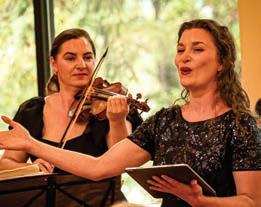




2024 ARTISTS:

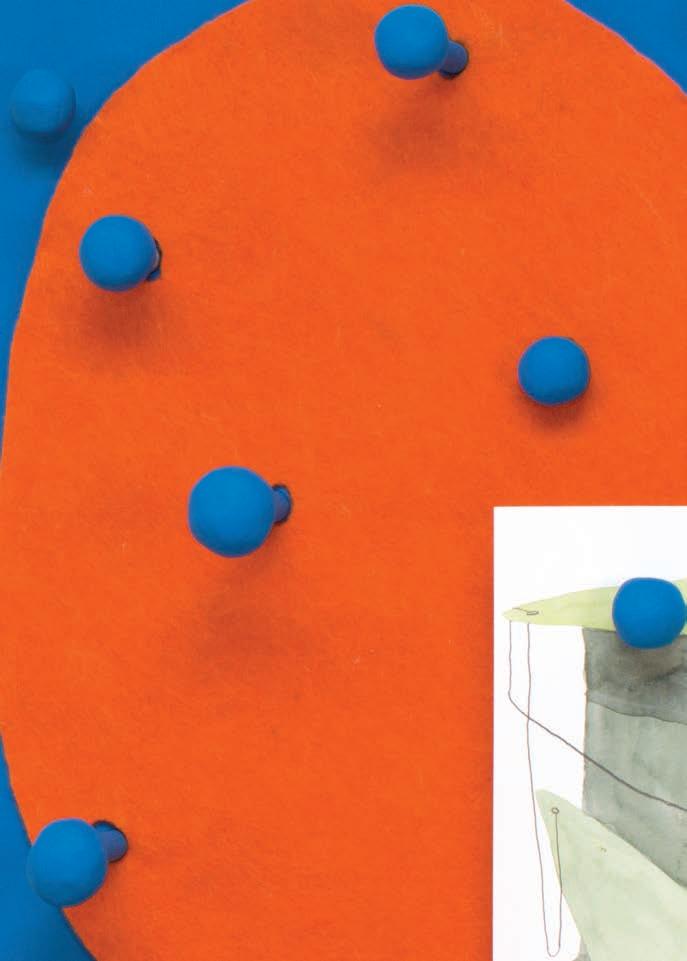



vivienne bessette, Darrell McKinney, Ayesha Mohyuddin, Sophie Nevin, Fi’nes Scott, April Werle
FEATURING VISITING
GUEST ARTISTS DAWN CERNY AND GINGER BROOKS-TAKAHASHI
The Emerging Artist Residency supports Pacific Northwestbased visual and interdisciplinary artists through stipends, gatherings, critiques and talks by leading guest visual artists at Centrum’s campus in Fort Worden State Park during October.
OPEN STUDIOS: OCTOBER 12TH 12 − 4 PM
ARTISTS TALKS: DAWN CERNY, October 12, 5 pm
GINGER BROOKSTAKAHASHI October 18, 5:30 pm
South Gallery in Building 305 Fort Worden State Park, Port Townsend
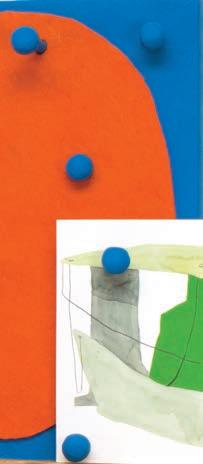

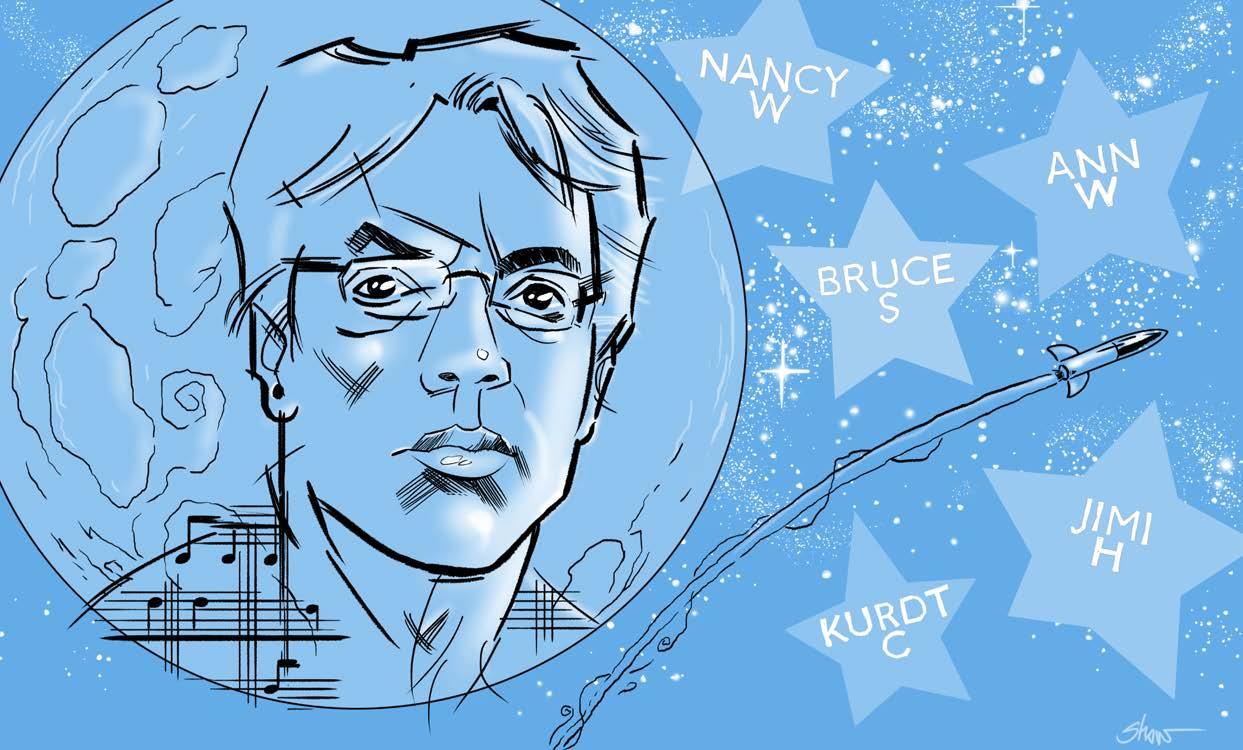
On a Saturday in mid-August, dozens of musicians and journalists gathered on a patio, representing four decades of Seattle’s history.
It’d been just days since Seattle music journalist Charles R. Cross had passed away unexpectedly. His presence loomed large on the warm summer evening.
“Many of the friends who attended were successful creatives who got their start decades ago when Charley gave them a chance at The Rocket or supported them in some other way,” says Alexa Peters, a local music journalist and longtime friend of Cross’s.
“As friends and family reminisced on his patio that evening, I half expected Charley to walk through the door.”
Barely a month later, Seattle’s music scene is still feeling his loss. As the city’s preeminent music historian, Cross spent decades writing venerated, deeply researched biographies on Hendrix, Kurt Cobain, and Heart (among others) and editing the vaunted music magazine The Rocket
BY DAVE SEGAL
from the mid-’80s until it shuttered in 2000. In the wake of his unexpected death, grief mixed with gratitude in eloquent eulogies from the region’s music journalists, musicians, radio DJs, nightlife luminaries, and Cross’s many appreciative readers.
The most common phrase people have used to describe The Rocket is “the bible of Northwest music.” The paper was the goto publication for Pacific Northwest music news, a prodigious source of information and acute opinions, a facilitator for musicians to form bands, a comprehensive gig guide, and a cheat sheet for venue bookers to learn which local acts deserved stage time. The mag fostered an entire cultural ecosystem.
The shock that many Pacific Northwesterners experienced following the news of Cross’s fatal heart attack on August 9 at age 67 resembled that which resulted from the stunning, premature loss of producer and performer Steve Albini in May. Both vital personalities’ sudden absence has left their admirers bereft; they’d presumed that Albini
and Cross had many more years of enlightening productivity in their respective corners of the musical universe.
The Rocket was the chronicler of Seattle’s late-’80s proto-grunge scene and the breakout phenomenon that it became in the early ’90s. Cross was the first editor to give future superstars Soundgarden and Nirvana cover stories (and in Nirvana’s case, the classified ad that started it all), but his writers also championed less accessible but supremely talented local bands, such as Love Battery and Hovercraft.
“For a lot of us Seattle music journalists, Charles was the blueprint,” KEXP staff reporter and podcaster Martin Douglas tells me. “He showed a literal generation how to thoughtfully engage with local music, long before the Seattle music scene ‘exploded’ or became a ‘cash cow.’ He emblematized approaching bands in Seattle with an equal amount of curiosity—and he would separate what he felt was the wheat from the chaff accordingly. Local music is one of the

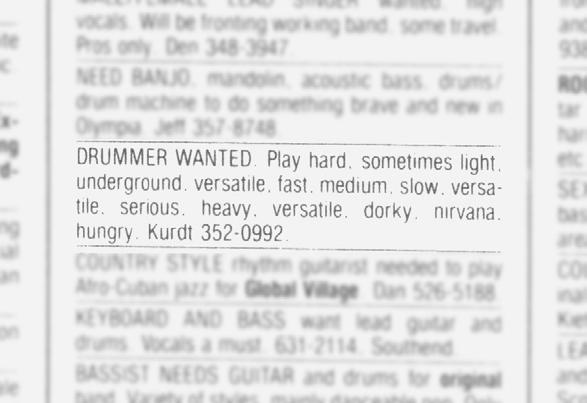
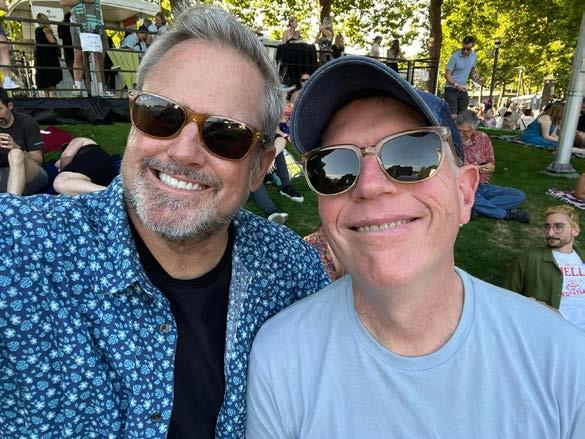
most crucial corners of community. Music journalism is one of the most undervalued art forms in the world. In his work, Charles treated both like gold. Our community has suffered an incalculable loss.”
Its influence reached beyond the cities of the Pacific Northwest. For Portland-based electronic music producer Strategy (aka Paul Dickow), The Rocket was a lifeline to an isolated young music fanatic living in Moscow, Idaho. “Moscow, Pullman, and Spokane all had The Rocket distributed, so for anyone with a deeper interest in music, you could see what events were coming, and caravans of people would head out to the ‘big city’ to concerts based on the listings contained in it. It was regionally important in a way that Portland’s alt-weeklies are not,” he says. “Reading The Rocket was crushing for me because the older kids who shared my outré musical tastes were not people who my mother wanted me driving six hours with. So I could trace a line through all the amazing shows I missed in the early ’90s through these Rocket issues, pining for bands I would not see for another 30 years, like Skinny Puppy and My Bloody Valentine.”
Light in the Attic record shop manager Travis Ritter tells me that he held onto one Rocket issue from October 2000, which
contained a record store guide. He says, “I learned about many record shops all up and down Interstate 5 as I was building my record collection.”
Unfortunately for this music journalist, I arrived in Seattle in the fall of 2002—too late to experience The Rocket’s imperial reign in real time. But in the years since, I’ve not heard anybody speak ill of the magazine (a remarkable feat for any publication, given
“I could trace a line through all the amazing shows I missed in the early ’90s through these Rocket issues.”
that one of America’s favorite pastimes is maligning the media).
When I worked at Alternative Press magazine in the ’90s, copies of The Rocket would occasionally make their way to our Cleveland office. Reading it, I would envy Seattle for having a publication that scrutinized and boosted the scene twice a month with
insight and humor. If every major city had such a support system, imagine how much healthier music scenes would be.
On top of that, Cross nurtured high-caliber writers such as Grant Alden (cofounder of No Depression), Gillian G. Gaar (author of numerous music books), Adem Tepedelen (co-author of Stever Turner’s Mud Ride memoir), and Peter Blecha (founder of Northwest Music Archives), as well as cartoonist Matt Groening.
Here’s where one would say, “People didn’t realize how good they had it!” during The Rocket’s existence. But it appears that Pacific Northwestern music fans did realize their good fortune. And to this day, they lament the magazine’s closure. It’s a testament to Cross’ editorial vision and integrity over the decades.
Thankfully for posterity, Cross spearheaded—along with University of Washington ethnomusicology archivist John Vallier—the digitalizing of The Rocket’s entire run earlier this year. Vallier teaches music journalism at UW, and as Cross frequently visited his classroom, Vallier was struck by his openness. On a recent visit, “He spent two hours speaking off the cuff, reading short passages from his memoir, and fielding questions,” Vallier says. “His unique combination




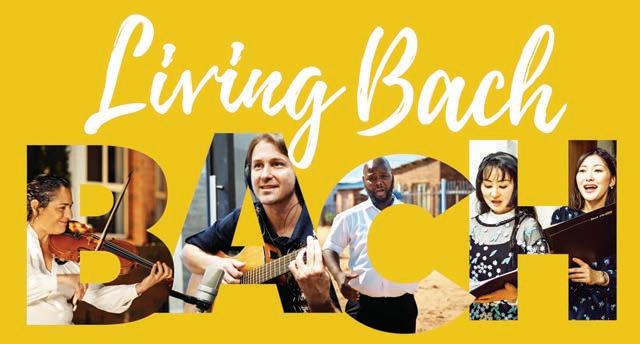


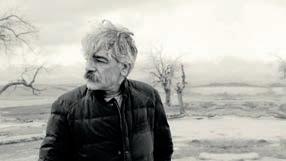
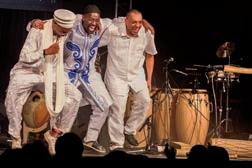





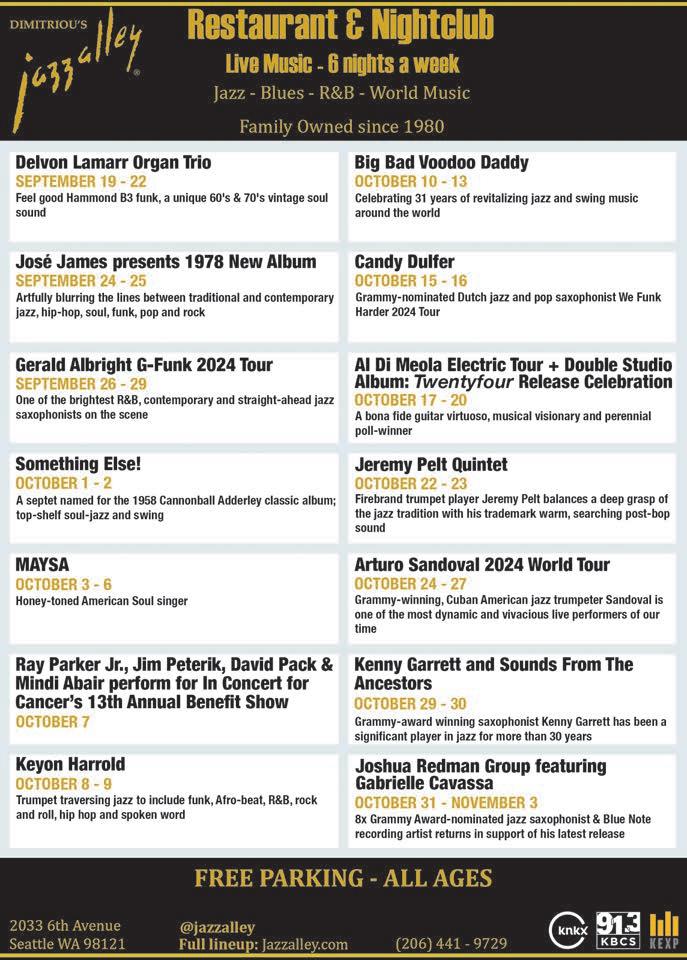









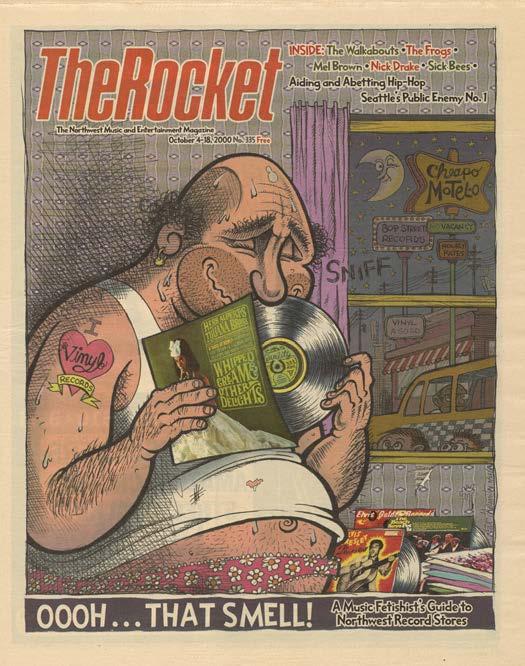

of wry wit, in-depth knowledge, opinionated (but always well-grounded) takes on music, and genuine love for the analog days of yore resounded with the class. A number of students queued up afterwards, hoping to chat with him one-on-one. He was busy and had somewhere to go, but he stuck around, unhurriedly connecting with and offering encouragement to each one.”
Cafe Racer co-owner Jeff Ramsey also recalls Cross’s generosity during the 1992 opening of his Pioneer Square club, the Colourbox. “I knew nothing about talent buying or booking artists,” Ramsey says. “I reached out to Charles, and he invited me up to the Rocket office, and we nerded out about all things local music. We went through the roster of local talent. He gave me his insights and predictions on which emerging artists were likely to do well. He was a wonderful advocate to have for a fledgling music venue.”
And that spirit continued through the decades. “During the pandemic, when Racer was shut, we created Cafe Racer Radio, and Charles and I reconnected. He loaned me a pile of Rockets for a segment we have called ‘Back in the Day,’ which is essential-
ly skimming old copies of The Rocket and sharing that information and music of the time to our audience,” Ramsey recalls. “Last Friday, I put a box of Rockets in the car to
“Charles would enter the room and settle us down—with charm and in fun— like that favorite uncle [who] would tuck ya in better than your own folks.”
return to him and was looking forward to the visit when the devastating news came.
I will miss him.”
Nellis Records owner and Nirvana superfan Brad Tilbe cites Cross’s revered Kurt Cobain biography, Heavier Than Heaven, as the only book that ever made him cry. During the seven years that Tilbe managed Light in the
Attic’s retail store, Cross frequently visited and was eager to chat with Tilbe, happily answering his “oddball questions about Nirvana,” grunge,” and Seattle’s musical history.
Before working for The Stranger in the aughts, Aaron Edge served as The Rocket’s assistant art director in the late ’90s. Edge remembers Cross as “a kind captain. He was patient with me as I learned my craft and appreciated the wild ruckus that was The Rocket art department. [Co-worker] Stewart Williams and I blasted music and yelled inappropriately on the regular. Charles would enter the room and settle us down— with charm and in fun—like that favorite uncle [who] would tuck ya in better than your own folks.”
Former KNDD and KEXP DJ Marco Collins was a key figure in helping to popularize grunge in the city while at the former radio station. “I know he documented the best parts of our Seattle music history, but when we got together, we talked about the new artists we were loving. Always evolving, that guy,” Collins says. “I discovered so many killer bands from that mag! It’s funny—I remember being so competitive with

it, feeling jealous when they found a cool band I hadn’t heard of. I also would impatiently wait for each issue to see if they’d scored any interviews that I couldn’t land. Being mentioned in The Rocket was a badge of honor—it really mattered.”
Experimental musician and renowned producer Steve Fisk (Screaming Trees, Harvey Danger, etc.) was initially skeptical of Cross’s musical tastes, not least because Charles founded the Bruce Springsteen fanzine Backstreets. Fisk noticed a lot of bitter envy among Seattle’s ’80s musicians when the city’s scene blew up in the early ’90s, and he thought Cross, as The Rocket editor, was partially responsible for that sentiment.
“That was me being young and stupid,” Fisk admits. Later, Fisk and Cross wound up on the Grammy committee together for a few years, and several rewarding conversations ensued. “I wondered, ‘What the hell is my problem? Charles Cross really loves what he’s doing. He’s a stand-up dude.”
Fisk grew to respect him as a musical authority in the region. “When somebody [wanted to know something about Seattle music], they would ask Charles. And for better or for worse, he acknowledged the mantle [of Pacific Northwestern music authority], and he did the best he could with it. He was like Heart. He wasn’t going to leave the music scene that he loved and devoted his life to.”
That also meant continuing to mentor Seattle’s young journalists. “Charley would be the first to say that music journalism is a tough gig these days, but we rarely had a conversation when he didn’t explicitly encourage me,” says Peters, a friend and local
freelance journalist who’s a contributor to the Seattle Times and The Stranger. “He’d urge me to ‘keep the faith’ after a setback, engage with my (often half-baked) story ideas, or refer me to some cool new opportunity.”
Cross’s editorial instincts skewed toward the popular, and his books’ subjects were some of Seattle’s biggest, most bankable icons. But Cross knew that he had an obligation to cover underground-rock artists,
“Charley would be the first to say that music journalism is a tough gig these days, but we rarely had a conversation when he didn’t explicitly encourage me.”
too. Fisk notes, “Charles developed his own voice, but because he got going young, his initial stuff was in the context of [Creem/Rolling Stone critic] Dave Marsh. Charles being a Springsteen head put him much more in the line of Cameron Crowe: a young writer with a lot of enthusiasm and a lot of knowledge and somebody who had to tell the stories. He started off as rock’s Woodward & Bernstein, and then slowly became the Northwest Guy. So, his arc was very interesting. He changed a lot. Being a dad made him more of a person and less of a rock fanatic.”
At the time of his death, culture critic Ann Powers told The Stranger that Cross was working on a new book. “Sort of a biography of Seattle,” she said. “A cultural history of Seattle and Seattle music.”
His good friend Ben London, Sonic Guild’s executive director, says he and Cross had many talks about the project. “He was going to connect how what happened in the ’80s set the stage for [the grunge explosion] in Seattle in the ’90s,” London says. “I was reflecting this morning that there might be some real beauty in the interviews he was doing for the book because he had substantial conversations with a ton of people he knew and worked with over the years. So much of our music scene is defined by the victors, in the sense of artists who go on and have these big careers. But so many people have to work collectively to make that happen on different levels. None of that happens in a vacuum. And so Charles was a vital cog to all the success that those artists had in the late ’80s and ’90s. It just wouldn’t have happened in the same sort of way without people like Charles working behind the scenes.”
With Cross’s cultural contributions in the rearview mirror, members of the community are starting to feel the vacuum he left. Fisk hypothetically likens Cross’s death in the grand scheme of Seattle music history to losing Sub Pop founders Jonathan Poneman or Bruce Pavitt. “It’s multilayered and very complicated. I didn’t expect to get emotional, but yeah, I got really emotional. [Charles] was a sweet little guy, and he was just starting to tell his stories. He had 15 fucking books in him.” ■
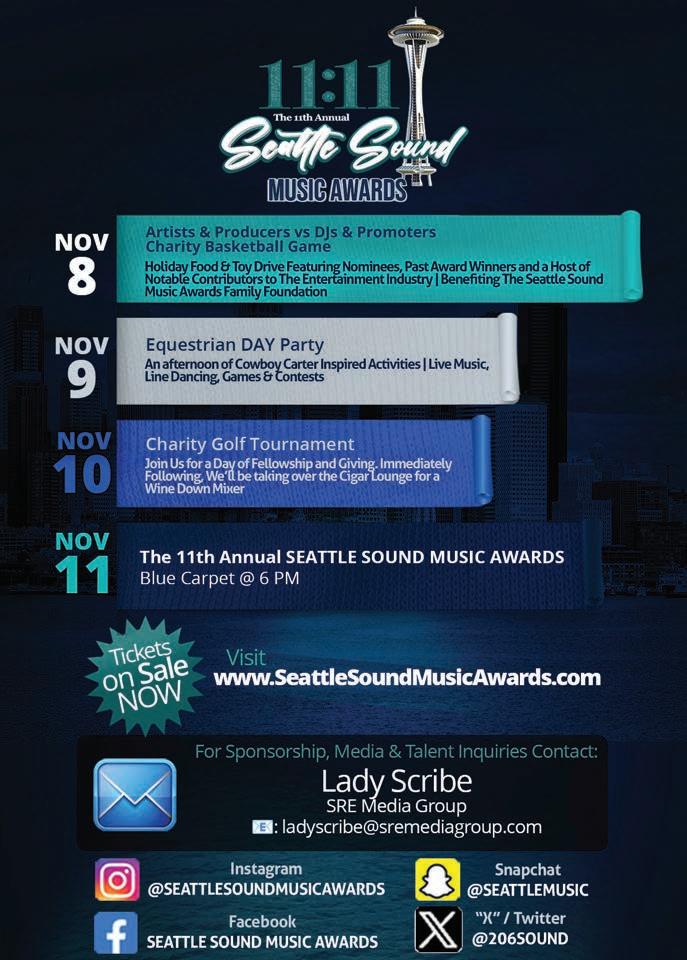
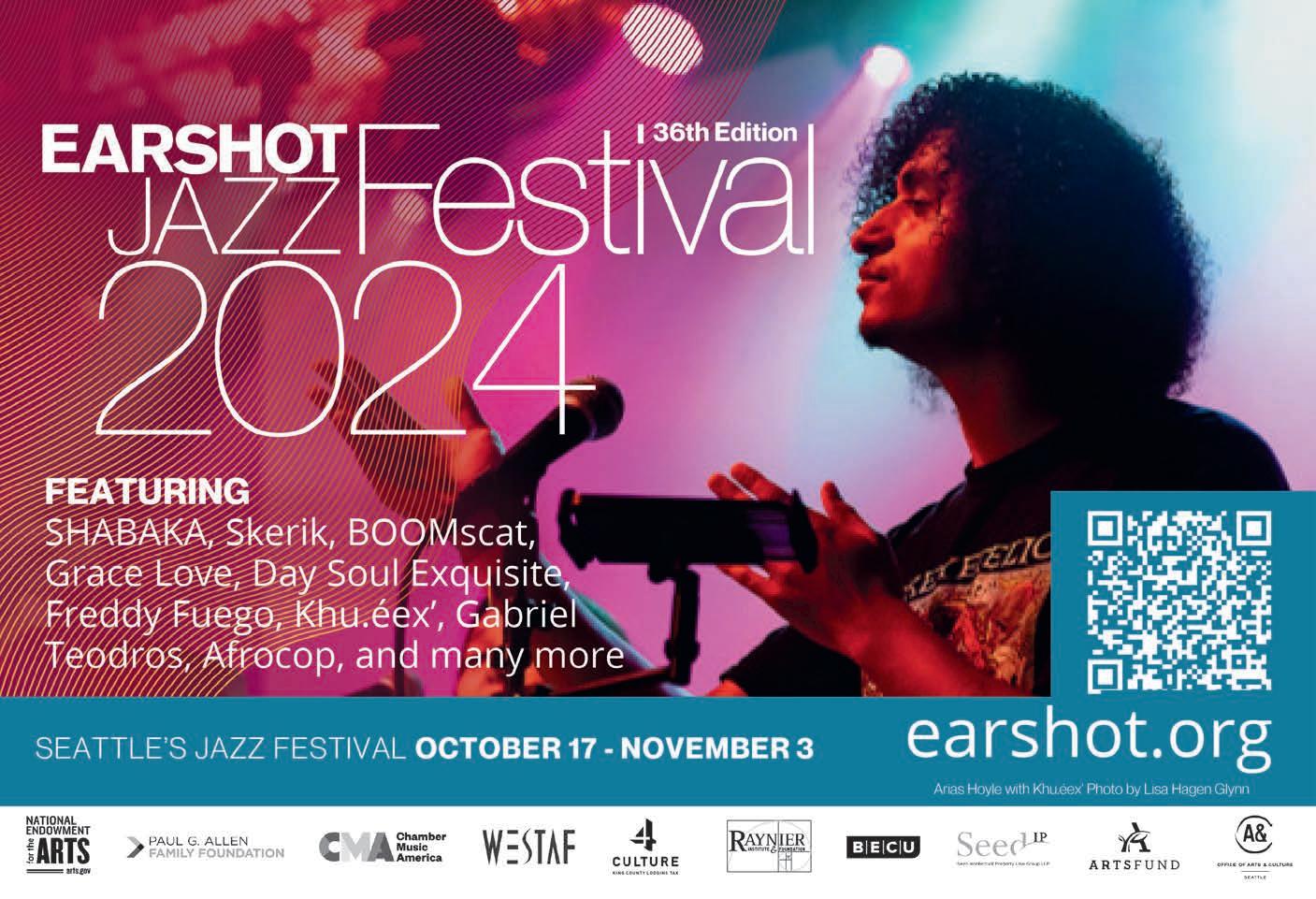




BY JULIANNE BELL
When husbands Daniel and Ismael Calderón first started their pop-up market Aquí Mercado in April 2023, it was supposed to be a one-time occurrence.
The couple, who had moved to Seattle from California a few years prior, wanted to kick off the opening of their third photography studio, Aquí, with something personal to them—a joyful party in honor of their queer and Latinx culture. They said that they wanted to create something that reminded them of home: “Not the place, but the feeling. The feeling of being surrounded by those who spoke our language, knew our challenges, knew our successes as people, and had hearts that danced to the same beats of La Chona. To sum it up: la cultura.”
After the first pop-up was exactly what they’d hoped, they quickly realized there was more demand for the market than they’d bargained for. It soon blossomed into a monthly event in Pioneer Square with a bar, live mariachi, drag performances, DJ sets, and more than 40 vendors selling flash tattoos, concha plushies, and spicy candy.
“It’s more than a market,” says Ismael. “I always tell people this is a celebration of our community.” One family who moved to Seattle from Oakland regularly volunteers at the market and told the Calderóns that it gives them a monthly dose of the Latinx culture they miss from home. One pair of volunteers met through the market and started dating, and others have formed new friendships.
For some, the mercado also provides a sense of belonging that they couldn’t get at home. “We get a lot of older people who will come to us and say, ‘As someone who identifies as queer, I never had this kind of community when I was growing up.’ So
“This is our experiences put into a cafe, put into a mercado, put into the universe.”
to see a roomful of people who are living as their most authentic selves, enjoying themselves, it’s just really cool,” Ismael says. “When the dance floor opens, the first couples out there are usually queer. And we’re listening to music we grew up on—this is music that we listened to in the backyard with our family, not dancing with our partners out in the open.”
Now, after persistent pleas from Aquí devotees to make the market more frequent, the duo has embarked on a new project. They’re opening a cafe and market on Cap-
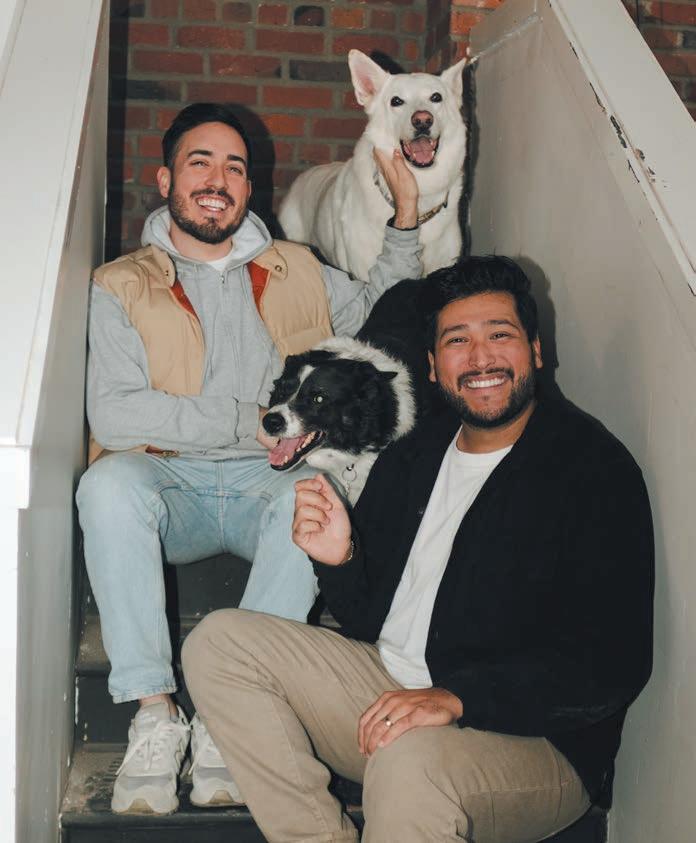
itol Hill called Bonito Café y Mercadito.
“Bonito was literally born out of the love we felt at the market,” says Ismael. “We wanted to create a space where people can feel welcome and excited and feel that sense of culture in an everyday setting.”
The cafe’s name is derived from “Bonito días,” which is how guests will be greeted when they enter. The custom of greeting each customer is a common practice at the mercado—Daniel and Ismael make a point of welcoming each visitor individually.
“It’s the Hispanic Latino hospitality,” Daniel says. “I feel like a lot of times growing up, you may not even know who’s at a family party, but you’re gonna say hi to them regardless. When you leave, you’re gonna tell everyone in the room bye. That’s just something we grew up on, and it stuck with us.”
The ethos of the cafe embodies the concept of “community, not competition”—Ismael and Daniel emphasize that they’re not trying to revolutionize the saturated Seattle coffee scene, but rather create a space that is unique to them and their experiences. Bonito will showcase a range of Latinx-inspired flavors. “We want to have coffee that reminds us of our upbringing,” Daniel says.
Beverages will include aguas frescas
(horchata and jamaica), cold brew with horchata cold foam, and drip coffee with a café de olla option. Guests can customize their espresso drinks with syrups like dulce

de leche, cajeta, and mocha sauce from the Mexico-based chocolate shop chain Rey Amargo (which also operates a cafe on Capitol Hill). Their strawberry lemonade will come decorated with edible glitter— which Daniel says will add “a little bit of
our own special queerness”—and they’ll offer the cult-favorite combo of Mexican Coke and espresso, which they’ve dubbed the Muy Bien.
True to the spirit of Aquí Mercado, Daniel and Ismael are working with a variety of vendors that share their values. Queer- and Latinx-owned Fulcrum Coffee Roasters will supply beans, while popular Aquí vendor and small-batch panadería Selva Central Goods will provide a daily selection of pan dulce with local ingredients and flavors inspired by Mexican and Central American culture. They’ll serve some prepared foods from the local plant-based restaurant Rojo’s Mexican Food, and their ceramics will come from Mexican-American potter Maritza Leon of the Introverted Potter, another frequent seller at the market. The mercadito section will carry a variety of goods from local vendors, such as jewelry, ceramics, art, greeting cards, and books.
As for the community aspect, Ismael and Daniel have a plethora of ideas for ways to foster connection. They’re planning programming like RuPaul’s Drag Race viewings, movie nights, clothing drives, pop-ups, drag storytimes, DJ sets, dancing, and a Chappell Roan night. Accessibility is important to them, so the space is ADA-approved, and they’ll keep the bathroom stocked with free diapers and menstrual supplies.
In the plant-filled second floor, where light streams through the lofty windows, visitors can lounge on tiered bench seats, similar to bleachers, with movable tables—a setup that Daniel and Ismael say they’ve seen at coffee shops in California but not in Seattle. They hope the close proximity will encourage socializing among patrons. “I think people sometimes want to talk to each other but sometimes just don’t know how,” Daniel says. “So we’re creating a space that bridges that gap.”
The two are clearly buzzing with inspiration and enthusiasm as they discuss their plans for the business, which has been a near-constant topic of conversation leading up to the opening. Laughing, Ismael says, “Last night, as the two of us were winding down, I said, ‘I don’t want to talk about the cafe, I don’t want to talk about coffee. Let’s talk about RuPaul’s Drag Race, please. Let’s talk about something else!’” The process has been challenging, especially navigating permits, but the couple is already dreaming about potential future locations where they could fulfill the need for a safe community hub.
“We want to see the representation that we didn’t have in our community growing up, and that comes close to our upbringing,” says Daniel. “I think that’s one of the biggest things we stress to people—this is our experiences put into a cafe, put into a mercado, put into the universe.” ■
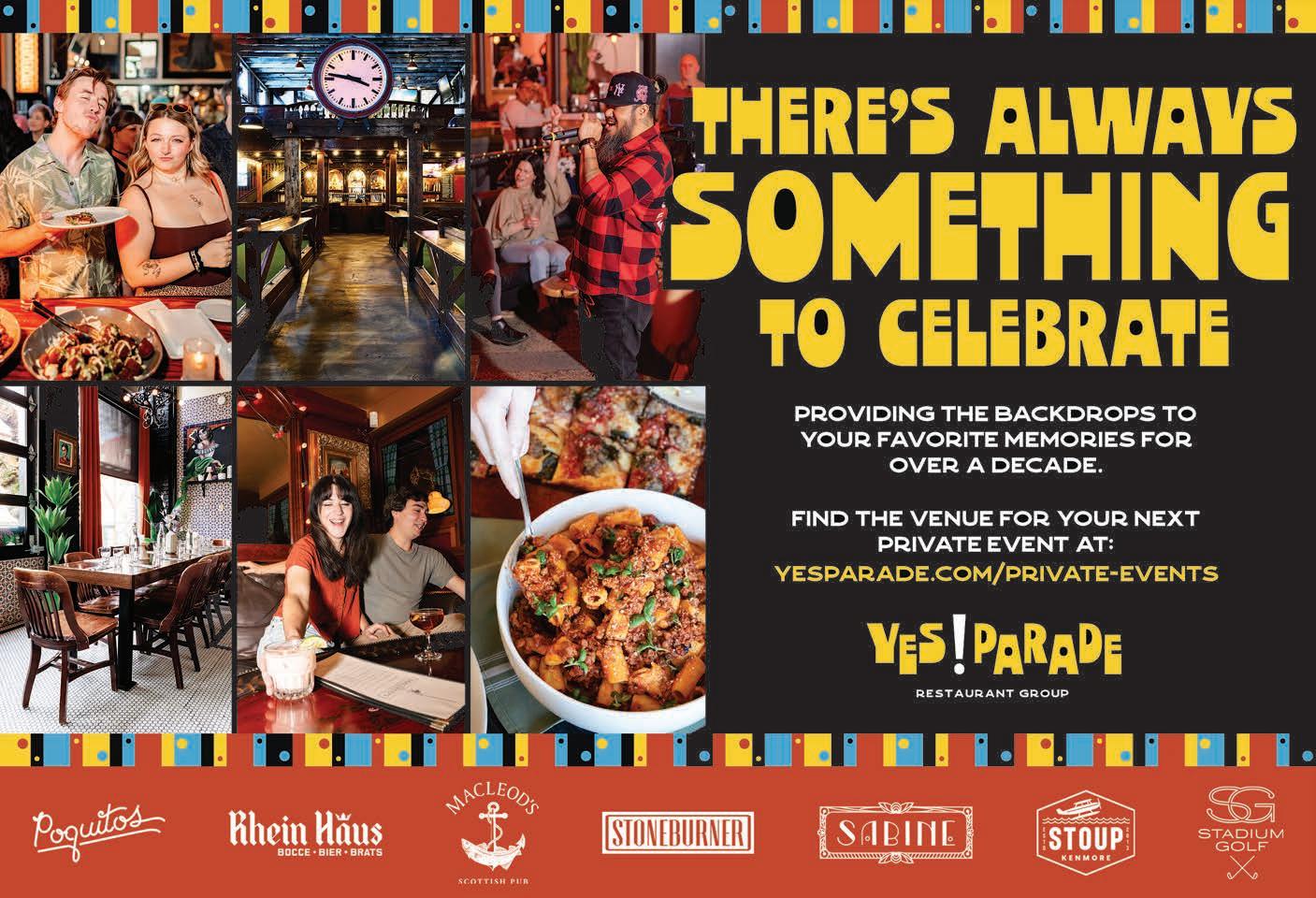
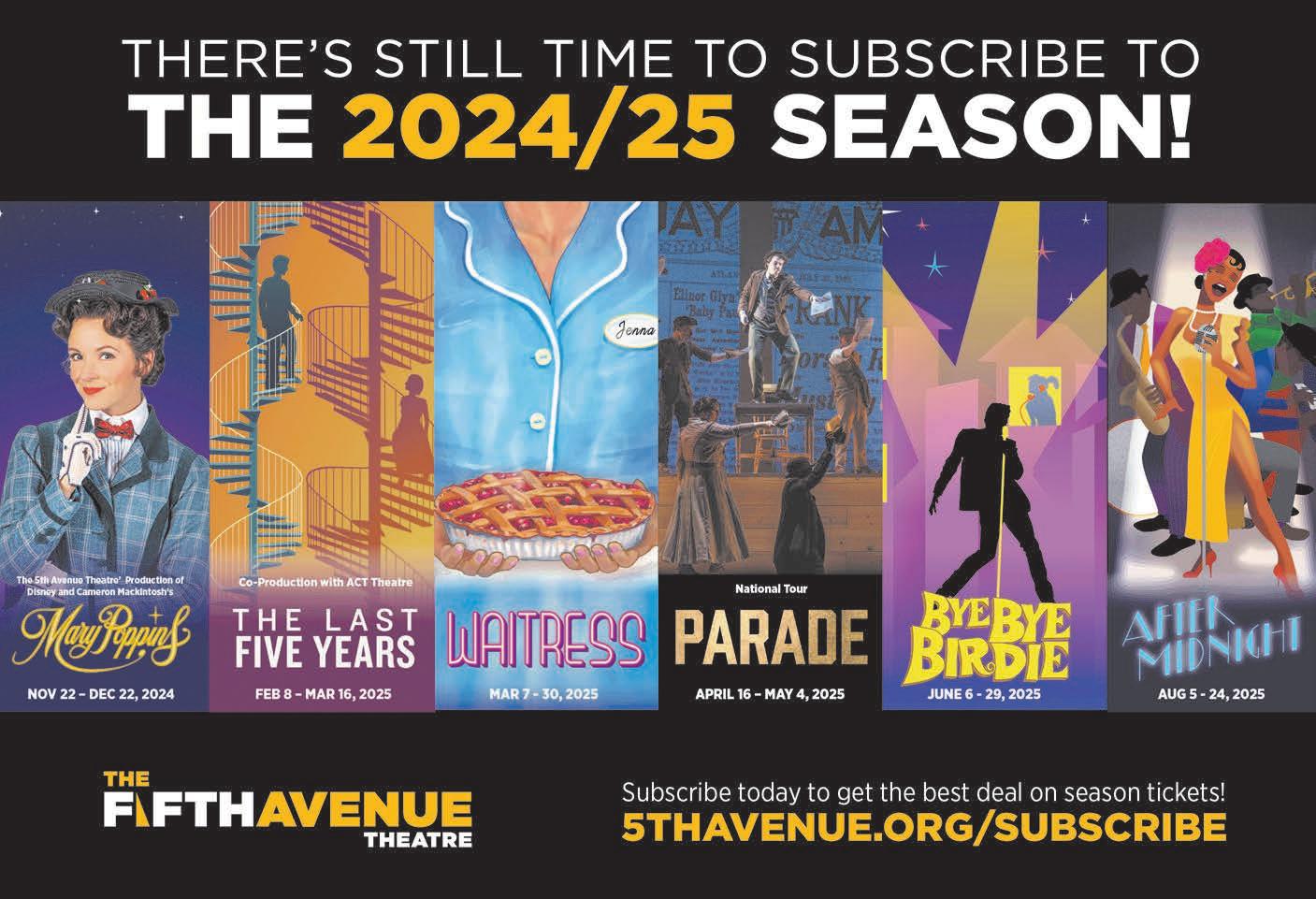
Get ready to kiss all these restaurants on the mouth.
BY MEG VAN HUYGEN
Hey, so. As in many US cities, Seattle’s restaurants are in trouble right now. We food writers have lately found ourselves accidentally moonlighting as unlicensed therapists lately, logging countless hours hearing the very legitimate woes plaguing the restaurant industry. It’s rough out there. As I speak with our city’s restaurant owners and employees on the reg, I can’t help but feel all the sloppiest emotions about how they’re doing, if they’re experiencing a hiatus or an expansion, a chaos or a trauma, a joy or a triumph.
It’s bad on the journalism side too: We’ve got corporate influencers rating our hallowed dive bars on their brunchability and customers piling on angry Google reviews for months after a bad server has been let go. I’ve sat and cried along with more than one Seattle restaurant owner this year, and I bet I will again before New Year’s.
These sloppy feels of mine couldn’t help but shape this list. This Best Restos lineup is the most difficult and labor-intensive thing I write all year, because there are so many fucking great restaurants in Seattle. I could put a hundred of ’em on this roster, no sweat. My criteria here is scattered—it’s a mix of creativity, affordability, quality, boldness, and the owners being cool and not giant pieces of shit. I tend to be turned off by restaurants owned by corps and more attracted to scrappy, indie-owned projects. Authenticity
has its place for sure, but I don’t value it as much as food that tastes good.
A few of these spots either are or started out as trucks and popups, and the former are usually left off other outlets’ best resto lists—an injustice, I say, as Seattle’s landlords continue to gouge tenants for sport and it becomes harder and harder to maintain a brick-and-mortar. And it’s not only about the great food here, although indeed it’s all great—I’m also recommending these restaurants for who runs them and what they stand for.
Ultimately, this is a year-long personal diary of the places where I had the most memorable meals that all gave me the best parties and sweetest emotions. I want to kiss all these restaurants on the mouth (consensually), and soon, I hope, you will too.
Rondo Japanese Kitchen CAPITOL HILL
Back in the spring, when a friend suggested Rondo for his birthday dinner, I was like “Oh, hunh, I’ve never been—isn’t that place mobbed all the time?”
Turns out,
yes, and there’s a reason for that. Rondo’s a platonically ideal example of why I stand on the soapbox of “just make a reservation” and yet… I didn’t take my own advice and robbed myself of years of immense pleasure.
Chef Makoto Kinoto is known for his playfulness, and straight away, the fun that was had in naming dishes like Mr. Pork Rib, The Hellz Chicken, Uni Jewelry Box, and Oh!! My Shu-mai is evident—and infectious. I still don’t know what the other B stands for in the Wagyu B.B. Bolognese, made with butter, parm, and oyster sauce (is it like “ATM machine”?), but I always enjoy coming up with new guesses when I order
it. Another of your new faves is the curry donut, with Rondo’s famed 224 Curry over ramen with crispy Chinese donuts stabbed into it. It’s worth calling out the curry separately, since it’s a beef-and-pork variant of Tamari Bar’s all-beef Area 206 curry (also made by Kinoto) that’s been attracting long lines at T-Mobile Park.
Noodles, curried and otherwise, are a house specialty here, along with fried chicken and sushi, and you don’t want to skip the gorgeous rainbow chirashi bowls. Kinoto definitely has a thing for uni (sea urchin) in particular, and it pops up in the chirashi often, as well as the apps and the specials. It’s easy to get distracted by the killer food at Rondo, but look around you: The restaurant rocks a subtle Dragonquest theme and is chock full of video-gamey works by local artists. Anime films are projected on the wall, there’s a Shinto shrine behind the bar, and action figures peer out of display cases. In fact, Rondo itself is a bit of an enchanted lair from a video game, where you abscond from the urban crush of Broadway and are teleported to a different world. From the buzzy city world to the cartoon food world. Although Rondo’s menu is indelibly Japanese, it’s anything but traditional. With its wacky dining room and playful, singular dishes that Kinoto made up inside his brain and you won’t find anywhere else, a meal here is a guaranteed joy, no matter what you order.
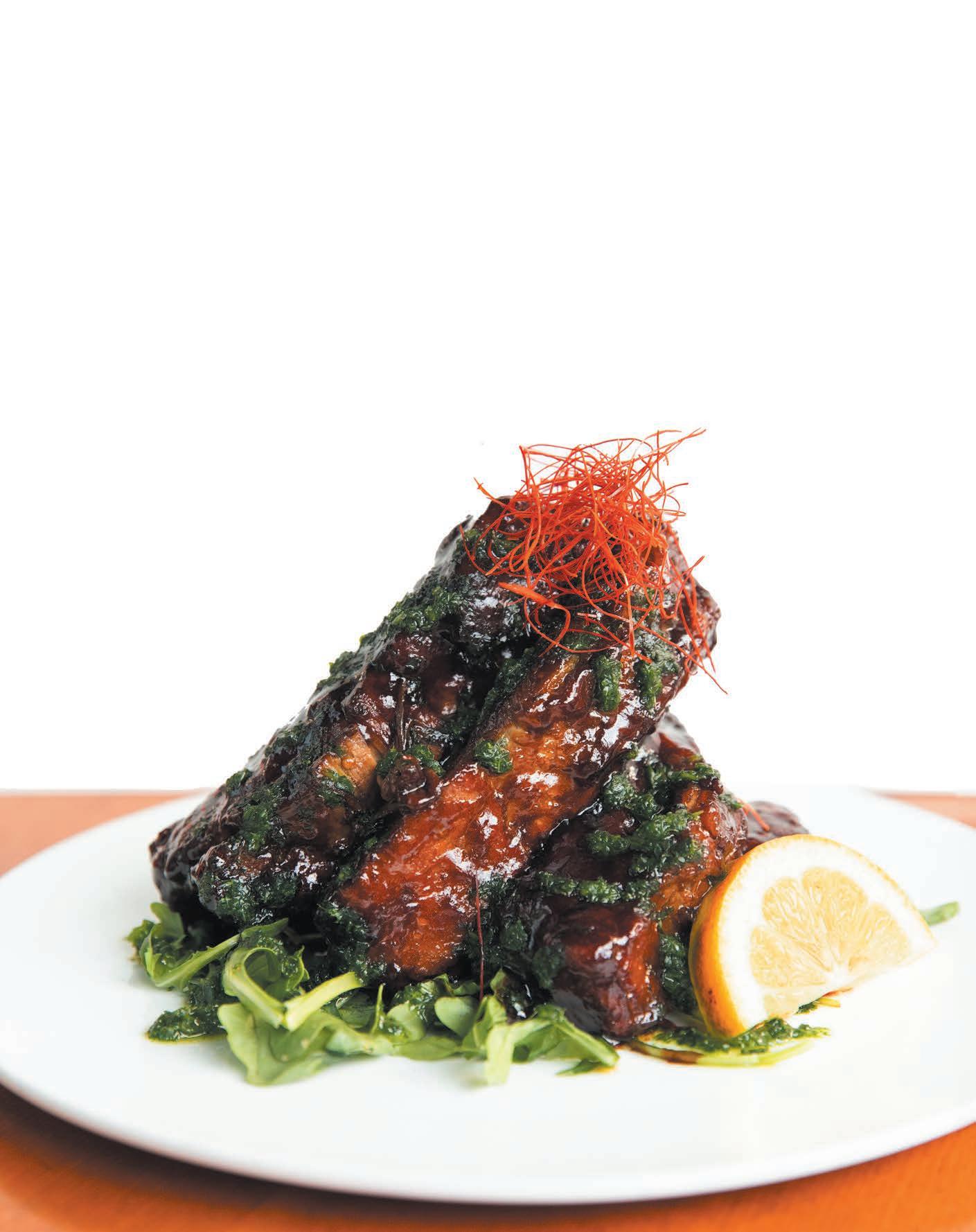
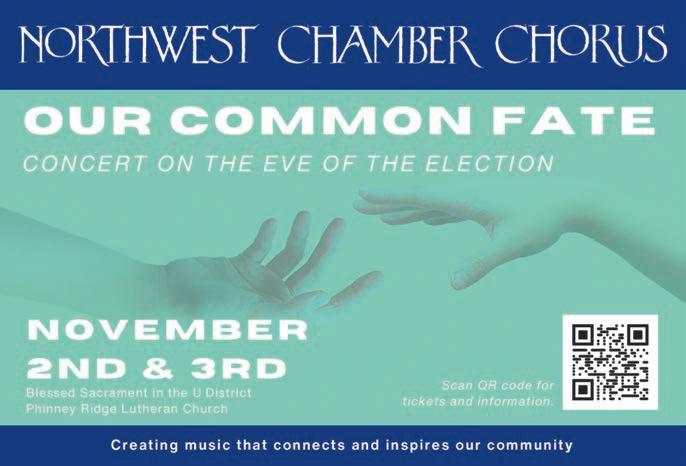









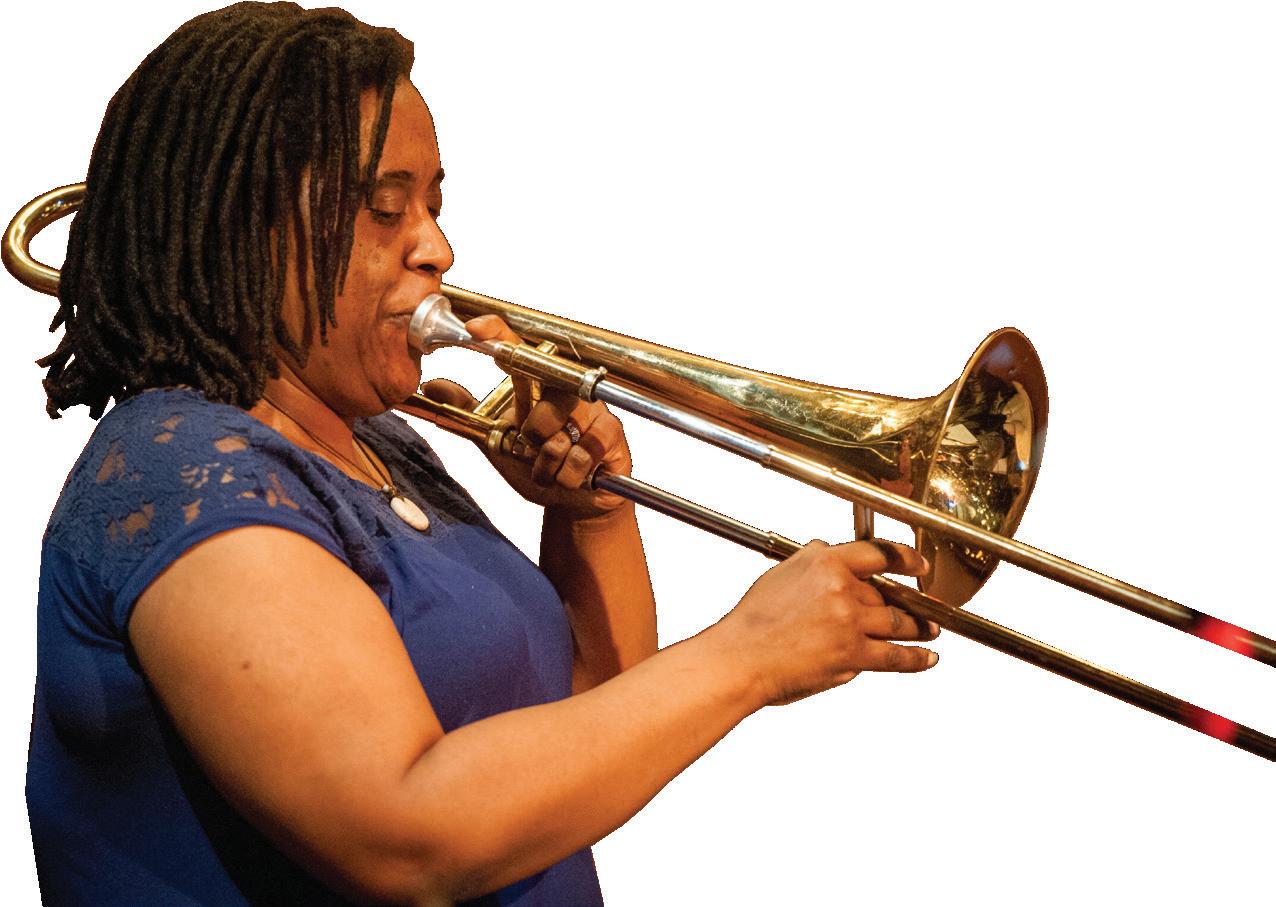



Los Costeños
CHINATOWN–INTERNATIONAL DISTRICT
It slightly enrages me to walk through the Uwajimaya food court and see that this little sandwich stand isn’t constantly mobbed, the way its cousins Un Bien and Paseo always are. Owner Francisco Mendoza worked at Un Bien before opening Los Costeños in late 2022, serving the selfsame iconic Caribbean pork shoulder sandwich, replete with the caramelized onion ribbons and everything. They’re cheaper and way meatier than their competitors, and you can get them with added Swiss cheese and/or ham for an extra dollar, which you should do. The hyper-flavorful pork is also available as a plate with corn, beans, and salad, or in nacho format.
The menu includes 10 or so other Mexican Caribbean sanduiches—my runner-up is the scallop sandwich that comprises seared scallops,olive oil, garlic, mayo, green olive tapenade, cilantro, jalapeños, and caramelized onions. You’d think a scallop sando might be tidier than the sauce-simmered pulled pork, but nope, it’s no less a voluptuous deluge of saucey sauce.
There are two rules to these sandwiches. One is that you must ask Francisco to cut it in half for you because these sandwiches are utterly packed with meat like it’s someone’s last day on the job, and the entire thing will fall apart and pour all over your clothes if you try to eat it whole. Once halved, unwrap it as you go. The other is that I’ve heard complaints from people who try to take one of these things to the sports games, and don’t do this, because you need a table to sit at and a plate to hunch over—see Rule #1. Have a seat and commit yourself to an immersive experience. Lose yourself to this sandwich. You have time.
Sophon GREENWOOD
You know I had to do it to ‘em. As is well documented, I can’t holler enough good things about Sophon, and Seattle seems to agree—since their February soft opening, the restaurant’s been booked nearly solid. (Pro tip: You can usually finagle a seat at the bar as a walk-in.) Chef-owner Karuna Long’s unique Cambodian diaspora cuisine is like nothing you’ll find anywhere in Seattle. Even in cities like LA and Boston, with large Khmerican communities and a handful of restaurants representing the Cambodian diaspora, Sophon stands out, as the others are mostly fast-casual.
Never had food from the Cambodian diaspora? Here’s your first-time order. Start with the super-snackable Khmer-aage, a mix of Japanese-style fried karaage chicken and Cambodian kroeung curry, available with chicken or (vegan) mushrooms and served with spicy Southeast Asian “crack sauce” on the side. You want the piquant nhoam salad, made with citrus-cured prawns, English
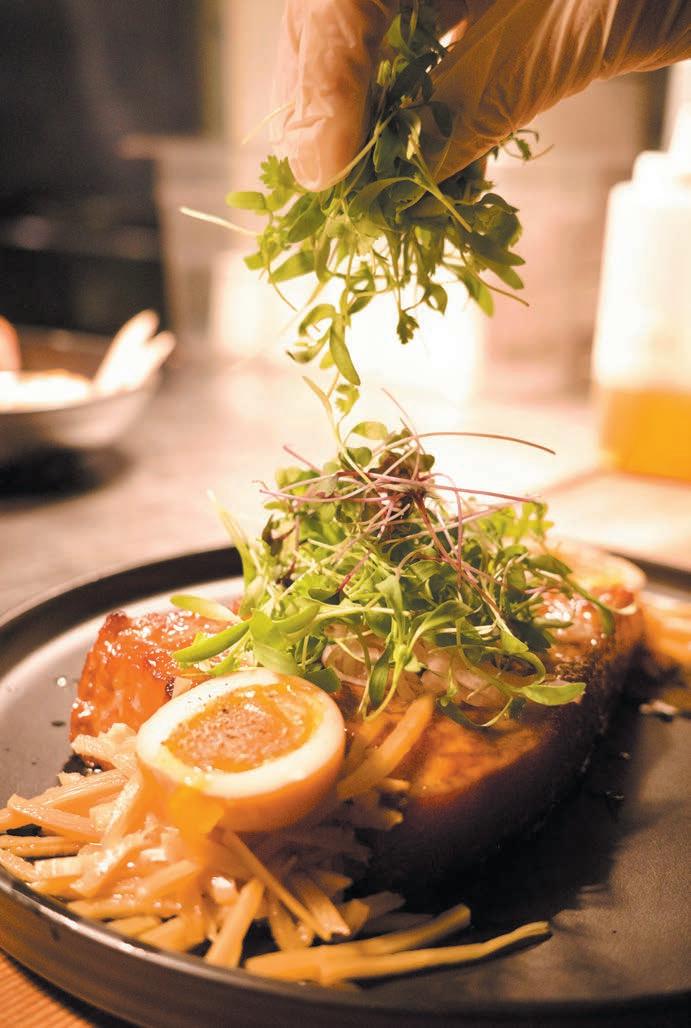
cukes, cold vermicelli, bell peps, Thai basil, mint, dried shrimp, toasted coconut and peanuts, and a fish-saucey tuk trey dressing (but can be made vegan). If you eat meat, the worldview-changing kha sach chrouk is your entree: a low-and-slow slab of pork belly that’s been caramelized in palm sugar and braised in coconut milk, star anise, and sweet onions, then served with julienned pickled daikon and a jammy boiled egg. Another unskippable side, the p’set ang, is a mess of grilled foraged trumpet mushrooms anointed with kroeung curry oil, spicy tomato relish, and microgreens. Add a side of rice to sop up all the flaves.
For dessert, it’s pastry chef Teresa Hong’s brilliant makrut lime tart, in the style of a
All eyes are about to be on Sophon, and if yours aren’t yet, you need to get ‘em on there.
key lime tart, poured into an almond crust and capped with Swiss meringue, macerated green mango, and Thai basil. I won’t guide you toward a specific cocktail, since beverage director Dakota Etley’s menu is an album of bangers, but the Khlang—with
that’re stuffed with hushwe (ground beef cooked in browned butter), garlicky mashed potatoes, or harissa-ed cauliflower, then stitched together with toothpicks and deepfried until crispy-golden. She’s also the queen of soup, cooking up a different flavor almost every day, and it’s never not incredible.
This stuff has been my late-night meal while carousing through the Belltown barscape more times than I can count. When Flores moved into the old Bitterroot BBQ space on Ballard Avenue, with an expanded menu and a sexy cocktail lounge in the back, I cheered right out loud.
If the food at Situ wasn’t fantastic enough (it is), the alpha-femme vibe would make me want to hang out here anyhow. There’s something Love and Rockets about the space, especially the snug back bar with the old warehouse grid windows—I can see Maggie and Hopey back there playing footsie over some Tecates as the sunlight filters over them.
Although bigger than before, Situ’s menu is still small but mighty. They’ve got the crunchy tacos dorados, chip-based things like nachos and chilaquiles, rolled taquitos in either carnitas or papas, some breakfast burritos and tacos with egg and potatoes added, and Flores’s rotating soups. The bar rolls the same way, with uncomplicated drinks like margs and agua frescas, available with or without booze. That’s it, because there’s no reason to mess with a good thing. Simple, delicious, unpretentious, and bold. Big crush.
brie-washed rye, sweet vermouth, nocino, and delicata squash tincture—has recently returned to the menu after a summer vacation, so it’s a real good place to start.
No one else is doing anything like this. Yes, Seattle has a few Cambodian restaurants, but they’re pretty traditional (not that that’s bad! It’s good!), and Long’s creative experimentation is giving new life to a culture that was nearly wiped out within living memory, through its cuisine. Bon Appetit just lauded Sophon as one of the best new restaurants in the nation, which made me cry on the train, and that’s just the beginning. All eyes are about to be on Sophon, and if yours aren’t yet, you need to get ‘em on there.
I don’t normally rave about a brand-new thing, much less put it on a best kinda anything list, until it’s had a sec to find its stride. But I’m making an exception for Situ Tacos, because damn, Chef (and badass rock drummer!) Lupe Flores and her team have really hit the ground running.
It’s no mystery why. After popping up around Ballard for a year or two, Flores’s sassy taco stand moved into Belltown’s Jupiter Bar in 2021, where it swiftly became a beloved neighborhood fixture. Flores, who was wearing a jumpsuit with knives printed all over it the first time I met her, makes tacos in the style of her Mexican-Lebanese grandmother—situ means “grandma” in Arabic—
Rarely does a restaurant being attached to a seamy motel at 90th and Aurora inspire confidence. But whew, it really drives the plot in this case, because the food at Indian-Nepali Kitchen restaurant is so luxurious and show-stopping and goddang good. What a cinematic reveal. Out there on the highway, you just don’t see it coming.
Casual and understated at first glance, with maybe a dozen tables, this newish restaurant’s got a truly massive menu of Indian dishes and a smattering of Nepali ones, delivered in monster portions at affordable prices. The Indian classics, like lamb biryani and chicken jalfrezi, are rich renditions, and it’s hard to mess up on this part of the menu. But if you’re like me and have spent your whole life in Seattle, where there are legions of Indian restaurants and few Nepali ones, head straight to the last page.
Dazzle your dinner date with the opulent khaja set. It’s a platter heaped with chiura (flattened rice, which sorta looks like Idahoan mashed potato flakes), kidney beans, crispy soybeans, fried egg, papadum, fresh cucumber and carrot, and your choice of chicken or goat curry in a little brass bowl. As you spoon the curry over the chiura, it re-hydrates a little, while retaining its Rice Krispies-like texture.
The mixed chow mein was another dramatic surprise—this is deluxe Nepali-style chow mein, a hill of slick, yellow noodles fried with turmeric and ginger and garlic, along with a pinch of seemingly every kind of meat and vegetable they’ve got back there in the kitchen. There are so many different items in this chow mein that my party gave up trying to backtrace the ingredients and just dunked ourselves whole in the moment.

Other memorable bites include the vivid combo momos (meat-filled dumplings), which come in a melange of colors and flavors, as well as the fragrant sadheko chicken (sadheko means “marinated”) in a chunky, bright-orange sauce that’s spiced with jimmu, a Himalayan herb in the allium family. The lamb boti, too, is an expertly styled version of the classic. After five visits, I haven’t even put a dent in Indian-Nepali Kitchen’s colossal food manuscript, but I’m confident in saying it’s all bulletproof. I’m treating the menu as a personal to-do list.
Maybe you’re not looking for histrionics in your dinner, but the aesthetic chasm between the restaurant’s location and the astronomical quality of the food inside kinda can’t be ignored. A restaurant of this quality in a Gucci-er neighborhood would hit different. It’s not just an amazing meal; it’s the feel-good dinner of the year.
So, I don’t really enjoy wings as a category, and it’s 100% Seattle’s fault. We suck at wings here, because we think of them as snacks, in league with waffle fries and jalapeno poppers. We don’t respect them. Go to your neighborhood sports bar and get some wings, and nine times out of 10, they’re undercooked and you have to fight with the meat to get it off the bone. To me, there’s not much grosser than the mouthfeel of flabby,
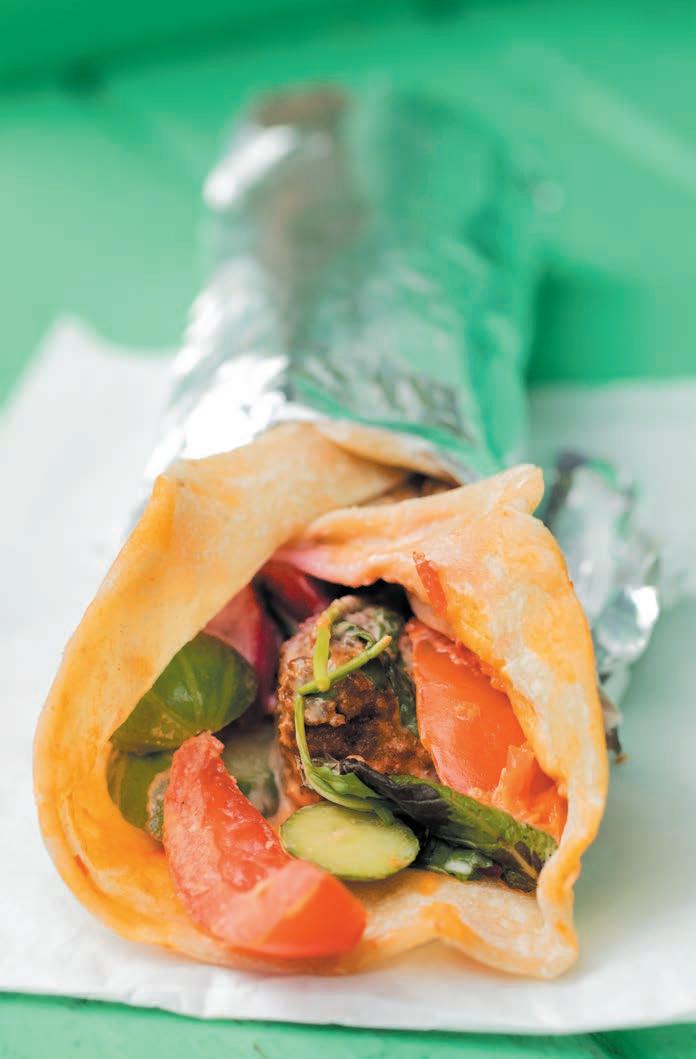
rubbery unrendered chicken skin where it feels like you’re eating a nose.
That’s the gold standard in the Northwest! It’s gnar, and I’ve always steered clear.
Well, guess what, now I love them! And it’s 100% Vindicktive Wings’s fault.
At this Belltown pub, the wings are small and light, crisp but not crusty, and the barely-battered chicken skin shatters like the exoskeleton of a banh mi. They’re flavorful, juicy, and easy to tear into. The lemon pepper stands out for being extra-extra black-peppery, and the lemon flavor’s not fake. It is
Chef Taylor Cheney would be Seattle’s MVP chef of the year even if she owned an Arby’s.
made from a lemon. They’re drenched in real butter but it gets absorbed a little, so the surface of the wing is not saturated, just shiny. Not sure how the kitchen is achieving all this alchemy, but it’s something that few local spots know how to do at all, to say nothing of doing it this well. I’m always in search of a simple dish done correctly, and these wings are an astounding example.
Vindicktive is owned by two sets of brothers—twins Vin and Dominick Minchiello, hailing from Buffalo, and non-twins Mike and Fletch Morgan from Spokane. Along with the scientifically correct wings, the Buffalo Brothers are also offering a few New York State delicacies: The garbage plate, made with mac salad, ground beef, onion, and tater tots, started out as a special and then people went so ballistic for it that it’s been added as a regular menu character; and they debuted a luscious chopped cheese soon after. You can also get Genesee Cream Ales, in the giant cans, and on the weekends, they’re doing the NYC-style bacon, egg, and cheese bagel.
It should be mentioned that the Vindicktive crew has some, ahem, trenchant views on what makes a wing correct—and what’s acceptable to dip it in. Someone on IG recently spotted a bottle of ranch on the sidewalk outside the shop, ostensibly brought in by a patron because the restaurant refuses to serve it, offering only blue cheese dressing instead. They’re also hellbent on using a specific, smallish style of wing and frying them hard, seasoned only with salt and pepper, and letting your sauce of choice do the work. What the hell ever. When you serve wings flawless as Vindicktive’s, you make the rules, and it’s our privilege to abide by them.

Yalla
CAPITOL HILL
Chef Taylor Cheney would be Seattle’s MVP chef of the year even if she owned an Arby’s, thanks to her tireless work promoting Palestinian cuisine and culture and raising crucially needed funds for the Palestine Children’s Relief Fund. Although Yalla’s fundraised for the PCRF since the restaurant opened in 2019, Cheney sprang into double-time action just weeks after Israel began bombing Palestinian civilians last October, hosting a series of popups that raised tens of thousands for starving, wounded, and homeless kids on the other side of the world. The woman’s a fricking saint who’s donated tremendous portions of her own income to help Gazan babies, using her white privilege to boost the signal.
It’s a divine double happiness that Cheney’s food is also incredible. On the cruisiest stretch of Olive Way, Yalla is a tiny postage stamp of a kitchen that’s churning out huge, intense flavors via saj, an unleavened flatbread commonly eaten in countries like Lebanon, Syria, Jordan, and Egypt. Using saj as an artistic conceit, Yalla serves it dressed with falafel, fried eggplant, lamb, soujouk (sausage), grilled halloumi, labneh, or just a dusting of za’atar.
All the meat served here is halal, and
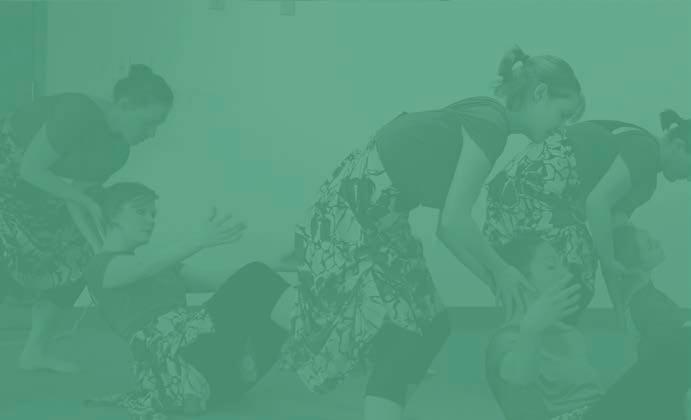
Combine your passion with purpose with a graduate degree in Creative Arts Therapies

Offering programs in Seattle and online, Antioch University’s Creative Arts Therapies programs prepare mental health professionals to connect to clients in various modalities, whether through words, movement, visual and performative arts, or a combination.
Graduates are eligible to become registered art, drama, or dance/movement therapists as well as licensed clinical mental health counselors or marriage and family therapists.
Ready to become a force for positive, creative change in your community?
Explore Antioch’s Creative Arts Therapy programs offered in Seattle and online.
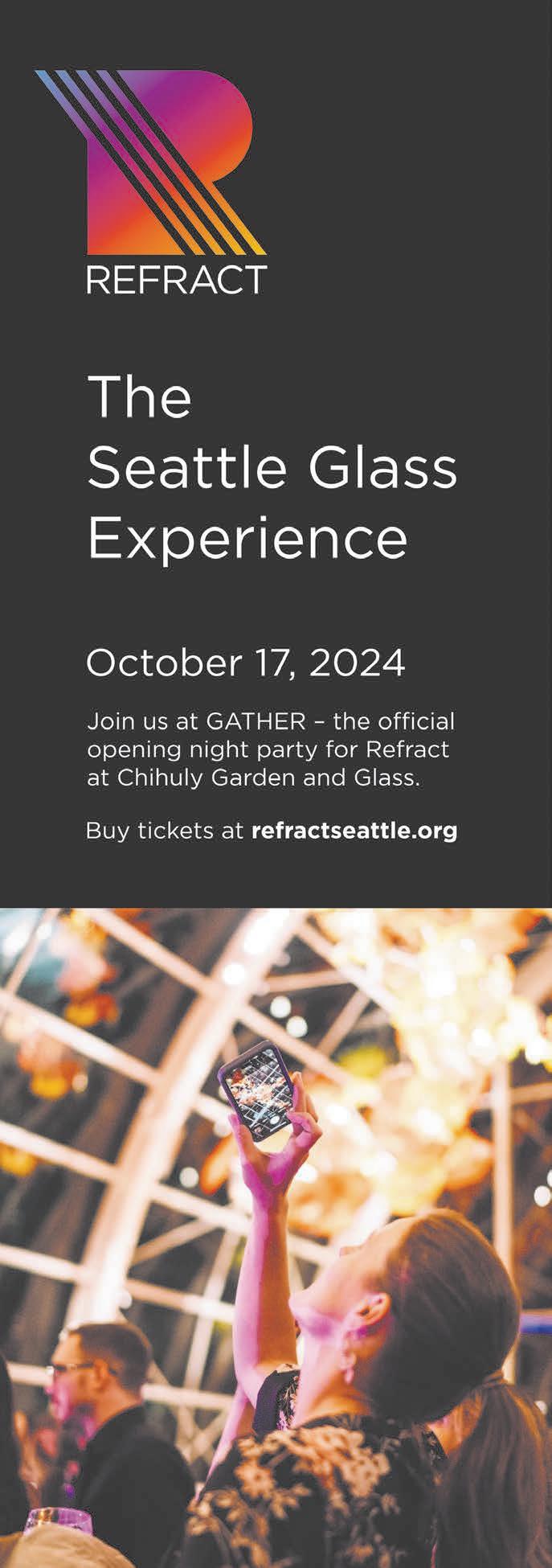

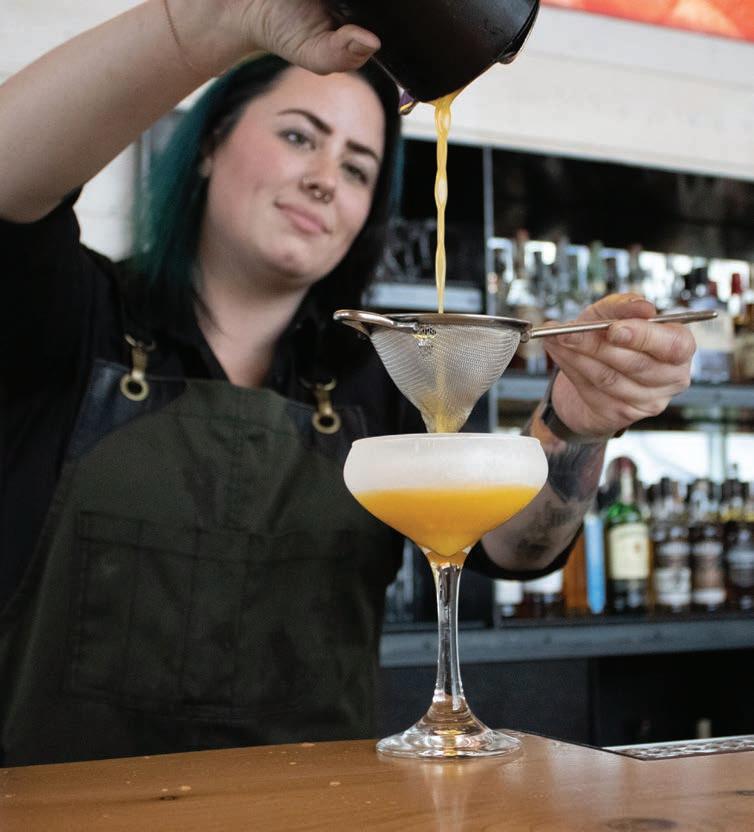
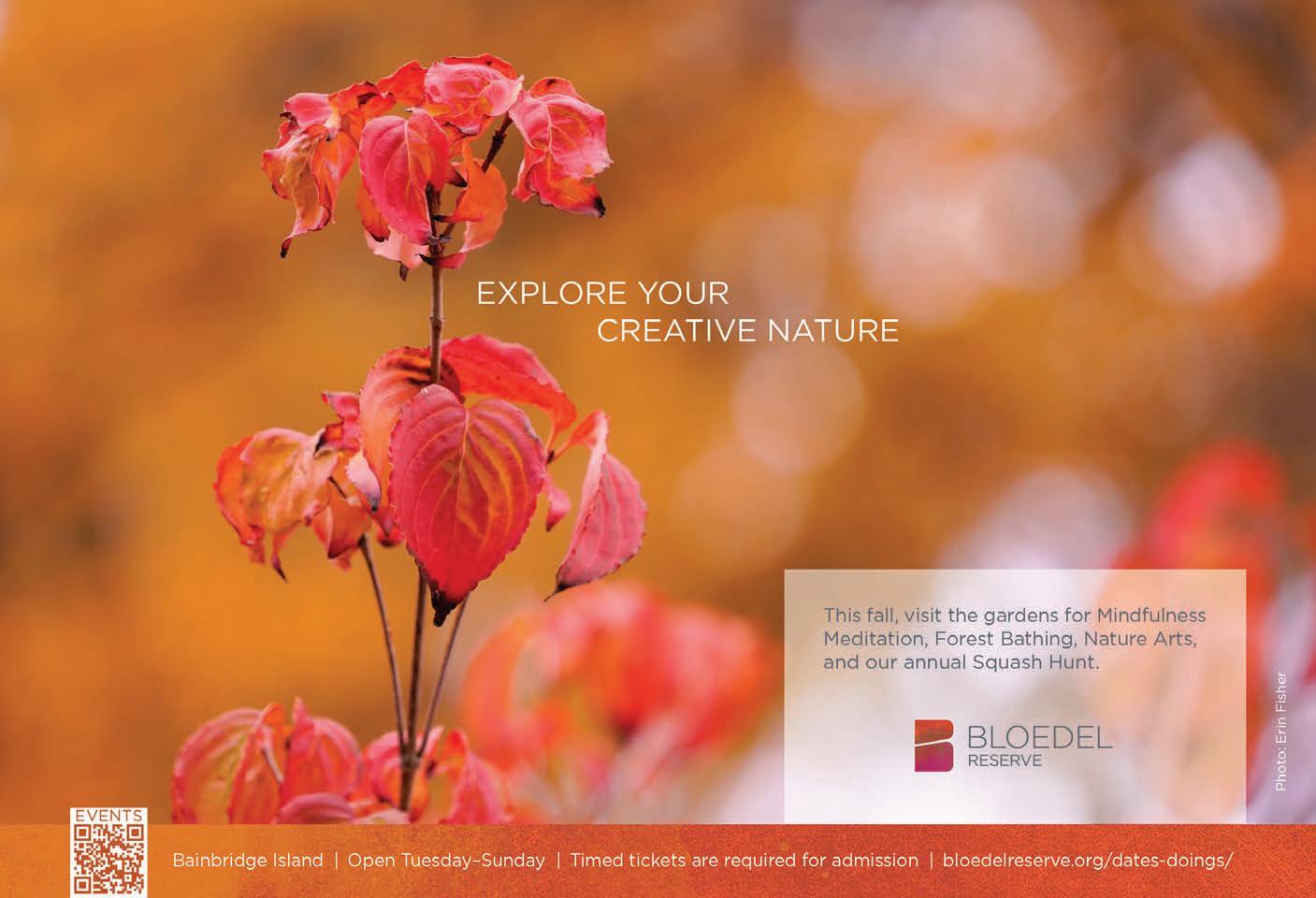
there’s a whole veggie menu with several vegan picks, like the fityr: grilled mushrooms and green peppers, garlic, tomatoes, green olives, cucumbers, greens, and mint, all wrapped up in saj. Yalla’s open during the day, but it’s kinda more fun to eat it in the wee hours, when you’re bar-hopping on the Hill. Even if you don’t drink, heading to here at a more mature hour lends itself to the experience: ordering from a little window on a busy street in the night.
My go-tos at Yalla are the lahme khuruf with labneh: ground lamb sauced with pomegranate molasses and mixed with toasted pine nuts, tomato, mint, and the housestrained labneh. The mint and the lamb fat and the sweet pom molasses and the yogurty labneh all commingle together and do something important as a team. Just like coming together as a group to organize and protest war and injustice, hey. Seattle’s impossibly lucky to have precious Yalla, and especially a chef-owner—and comrade—like Cheney.
Mendoza’s Mexican Mercado GREEN LAKE
As last year, I’ll still fight with anyone who says Seattle doesn’t have any good Mexican food. This was true decades ago, because we didn’t have very many Mexican or Mexican-American people living here then. But in the last four years, the Mexican population in Seattle has tripled. It’s still not California or Texas, but look around you in Northgate and Beacon Hill and South Park and Ballard and Georgetown, and then stop saying this outdated, foolish thing.
Speaking of decades. About 10 years ago, I used to go to Mendoza’s regularly for taco times, thrilled to find cabeza or nopales or goat birria or beef shank guisado tacos waiting next to the giant cow skull in the hot case. Then we moved to another neighborhood and forgot all about this place. An egre-
about four American minutes to hoover up this gorgeous spread. Best flaves were the extra-porky tamal, the goat, and the velvety cabeza, but they were all baller.
Then I went back the very next day with my partner, and we feasted on a whole different spread: guisado de res, carne asada, and nopales. He pointed out that the refritos are hands-down his favorite in Seattle, a fact that’d been lost to time as well. I got a bag of tamales to go and lived on them for two days, and my boyf bought some fresh salsa rojo and a bag of chapulines for the road. Now we go there all the time again, very merrily, and our error is mended.
One still must compensate for a lost decade of taco eating, so I have a lot of work to do at Mendoza’s. Considering the current restaurant climate in Seattle, we’re fortunate it’s still there and we’re able to catch up. Thankful for Mendoza’s presence in my life. I’m glad we still ride together.
Slice Box
SODO AND MAGNOLIA
Pizzas are like dogs; there’s a billion different styles and sizes and genres, and some of them don’t even genetically resemble each other but are somehow still all called pizza. It feels like Seattle is a microcosm of the all-encompassing pizza world lately—we suddenly have like 50 new kinds of pizza available to us, of every stripe, all happening at once.

gious life mistake. Well, a friend re-hepped me to Mendoza’s a few months back, and it was a total bolt from the blue, to return to this sweet Highway 99 bodega and see the cheery Talavera tiles and papel picado garlands again. Why haven’t we all been hanging out here constantly? Moving away is not a good enough reason—these tacos and tamales were always worth traveling across town for.
It’s still true. Our re-inaugural meal at Mendoza’s was a panoply of tacos—guisado, carnitas, goat birria, cabeza (they still display the skull in the case!), and slowcooked lamb with maguey (agave)—and we snagged the last two tamales, one carnitas and one cheese-and-jalapeno. It took us
To this end, I ate a lot of fuckin’ pizza this year, both delicious and not, in a quest for the best. I watched the Kenji videos and read the Seattle Times pizza-weighing faceoffs. I tried the pizza that you have to wait three months to eat (well, not anymore) and sampled a whole globe’s worth of Detroit slices and Chicago slices and Sicilian slices and Tacoma slices and ripped them all open to inspect their architecture, trying to feel some kind of pizza emotion. I guess I wanted to be wild for pizza, like the molecularly gastronomical pizza dorks on Instagram. I wanted to fall in pizza love. It took way too long, but all of this research eventually brought me to Slice Box in SoDo. They do foldable New York-style slices that made me say “yes” out loud when I picked one up, and I immediately knew why. Slice Box’s pep slice looks and tastes like clipart of a pepperoni pizza, and damn if that’s isn’t what I want most of the time. The pepperoni is cuppy but not obnoxiously so, with shallow pools of pepperoni oil collected in each one and a barely singed rim, giving the meat some texture but not drying it out. The bottom’s crispy but not tough. The sauce is loaded up with hella basil and made from ripe garden tomatoes, which scans, since owners Ryan and Leanna Lengle are gardeners, and the pie is neither skimped by it or drowned in it. Christ, that pepperoni slice is really something. The very thought of it is like the sun in Super Mario Bros. 3—it keeps following you after you leave. Also, it passes the most important pizza test of all, which is: Do you want to eat the
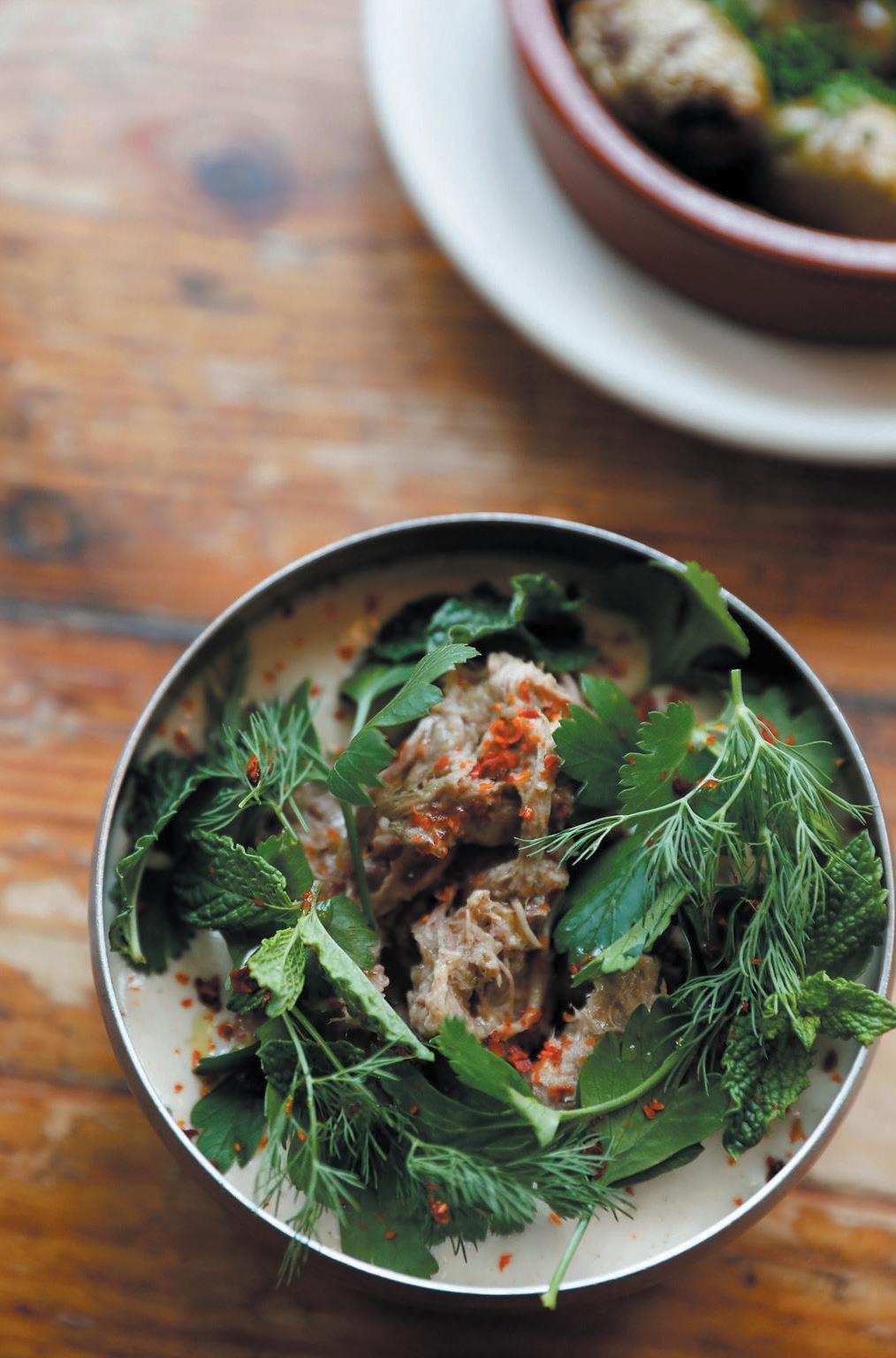
pizza bones? At Slice Box, I would fight you for them.
People who make classic pepperoni pizza well don’t always get their flowers, and I would like to take all the flowers from other pizzerias and award them, at least just for today, to Slice Box for doing the thing simply, with high production value and quality. They’re providing an invaluable service to Seattle out there, making ‘80s roller rink pizza except good, for the simple folks like us. I mean me.
Homer BEACON HILL
Remembering a meal at Homer is more of a sentimental warmth than a keen recollection. The menu is built around shareable Mediterranean mezzes that change all the time and become a big blur of roasted cauliflower and pistachio dip and olive-oiled chickpeas and goat cheese and pickled beets and sardines. You bring four or five of your friends and order all these little dishes, and they bring you a steady stream of slightly charred bread straight out of the wood-fired oven, and you and your pals just go to town. Everyone is swiping their bread triangles into everything, and it all blends into a blurry, soft, candlelit AI memory.
I do remember the dish at Homer that first made me feel this way, and that’s the lamb ragu in tahini. This one’s always on the menu,
and it’s a puddle of tahini blessed with yogurt, fresh dill and parsley, harissa, and juicy chunks of roasted lamb. It is flawless in its construction. On the first bite, I felt a tempest blow through my heart. If your whole lifetime were compressed into an evening at Homer, this dish would be the love of your life. That one and the grilled sourdough with whipped garlic are the first things to order on every visit. Better known around the world as toum, it’s just a cloud of garlic, olive oil, salt, and lemon, with a big crevasse whacked into it and filled with more olive oil. The bread, too, is incomprehensibly ever better than the charred pita you’ve been eating all night.
At the end of the meal, they have softserve, in curious flavors like vanilla–marigold and pistachio–orange blossom. Sort of surprising to see a big AM/PM soft-serve machine behind the bar at a place like Homer, but it’s always so charming to finish your meal this way, and especially to order a swirl, served in a frosty tin cup.
Once you’re done, for the next few days, garlic will seep out of your pores, as a peremptory reminder of the extraordinary life you have been living. What specific dish did you even have that had so much garlic in it? And wait, what was the genius line your friend said that cracked the whole table up? What was that one bite that made you swoon so deliriously? Oh yeah, it was everything.

In late 2023, as Chef Tina Fahnbulleh was putting the finishing touches on Gold Coast Ghal Kitchen, the foodie folks were beside themselves with excitement. That’s because Seattle’s had a real dearth of West African cuisine, particularly Ghanaian and Liberian, and also because we already knew about Fahnbulleh’s mighty culinary prowess (she’d been popping up around town for years). Oh man, I was counting down the seconds.
Fahnbulleh built out the space herself, and it’s just stunning, with Twi-language word art, white stucco walls, earthy sculptures and beadwork, and cool-clean vibes. Despite its elegant interior, Gold Coast Ghal Kitchen’s menu cheerfully encourages guests to eat with their hands, pointing out that fufu in particular is an interactive food that should be used to sop up all the delicious broth or stew.
Your first stop on the GCGK menu tour should be the goat groundnut (peanut) soup: a glossy, peanutty broth spiked with tomatoes and okra, with a huge, meaty goat neck bone plopped in the middle. Grab it with your hands and gnaw on it like a turkey leg, and then soak up the rich soup with the fluffy fufu cloud, which you’ll add as a side. (There’s a vegetarian option with mushrooms, for those so inclined.)
The beef empanadas are tied with the groundnut soup for my favorite app at GCGK—the ground meat’s full of ginger and cayenne and curry and bell peppers, and the buttery crust is balanced out precisely by the side of cilantro aioli. These
hand pies make me want to compile a list of the city’s best empanadas just so I can give them the gold.
For entrees, one absolutely must not skip the succulent branzino platter. The dish is a sight to behold, firstly, with brilliant roasted veggies surrounding a broiled whole fish on a bed of attiéké (grated cassava). This dish packs enormous flavor, thanks in part to the Liberian hot sauce, made with green chiles and garlic. Everyone’s doing a branzino dish lately, and I tend to think of branzino as a bland nothingfish, but this dish totally cured me of branzino fatigue.
Another unforgettable GCGK entree is waakyé, a hodgepodge of spaghetti, beef stew, black-eyed peas, rice, fried plantains, cabbage slaw, gari, soft-boiled egg, shrimp-based pepper sauce, and grilled head-on prawns. It’s like a plate at a potluck, and each element complements and enhances the others.
Gold Coast Ghal Kitchen deserves accolades for its beautiful bar too, and especially for the cool stuff they’re doing with unusual cocktail elements like palm wine, tiger nuts, and grains of selim: seeds of the tropical xylopia aethiopica tree that taste like nutmeg and peppercorn. I learn so much about botany with every visit.
Lenox Afro Latin Soul
BELLTOWN
I knew Lenox was going on this list on my first visit, after the very first bite of the very first starter.
Chef Jhonny Reyes is another glimmering success story in the pantheon of Seattle
and everything, and it’s also a fuckin’ trip to see how they’ve transformed this wellknown space. The aesthetic is very Old Cuba: fresh roses on the bar, rattan lampshades, lush potted palms waving you on in.
Reyes has stepped up Lenox’s menu while retaining a selection of old Nuyorican cornerstones from the truck era—like the gorgeous, life-altering Tres Hermanas with housemade green goddess dressing, the first bite of which sent me into orbit, as above.
The Tres Hermanas are Latin America’s agricultural three sisters—yellow squash, corn, and (in this case, green) beans—to which Reyes adds pickled cherry tomatoes and farmer’s cheese, then makes it the shoreline of a light-green lake of green goddess. I can only guess what’s in the dressing—garlic, cilantro, parsley, mint, lemon, yogurt? Tahini? He’s gotta put something else in there. It’s like if salad were ice cream.
The Tres Hermanas had already sealed the best resto deal, but the lechon was easily the most transformative dish of my year. It’s described so maddeningly simply on the menu too—”crispy-skin pork belly, arroz gandules (rice with pigeon peas), coco greens, and pickled mustard seed”—although the fact is that no amount of human words can do this dish justice anyhow.
The rich, crackled-out pork, and the pickled onions on top of it, and the complicated spices and texture in the rice and beans, and the moat of currylike sauce that surrounds it all… I didn’t know what to do. I was like James Joyce’s Molly Bloom, stepping out of the black-and-white pages of Ulysses, from the flatness and into the sensual real world, after that first bite.
chefs who’ve lately transitioned from truck to brick-and-mortar. Raised in South Seattle but born in Spanish Harlem, Reyes had set out to echo his tio’s and abuela’s food, through dishes like ropa vieja and picadillo, filtering in elements from his Puerto Rican, Cuban, and Jamaican heritage. In June, after a long hiatus from foodtrucking, Reyes at last opened the newest incarnation of Lenox in the old Jerk Shack space, a tropical butterfly from a chrysalis.
Named for Lenox Avenue in Harlem, aka Malcolm X Boulevard, this long-awaited restaurant is an absolute vision. Stepping inside Lenox is a trip, and I mean that in both ways—it’s, y’know, a trip to the Caribbean
And that’s all before we’ve gotten to the smooooooth coco greens on the side, with bird’s eye chili and Sazon and whatever Reyes does to the potlikker. I wanted to take a nap in these greens. And the green goddess dressing too. And the mojito, and the rockfish ceviche, and the caramelized onion soubise on the bistec encebollado...
Suffice it to say that it’s all exquisite, and if you haven’t been to Lenox yet, you’re late. Reyes’s beautiful dream has come together like a perfect symphony, and I’m throwing my ass in a circle to this song.
Still hungry? Read Meg’s full Best Restaurants in the Seattle Area list at thestranger.com!

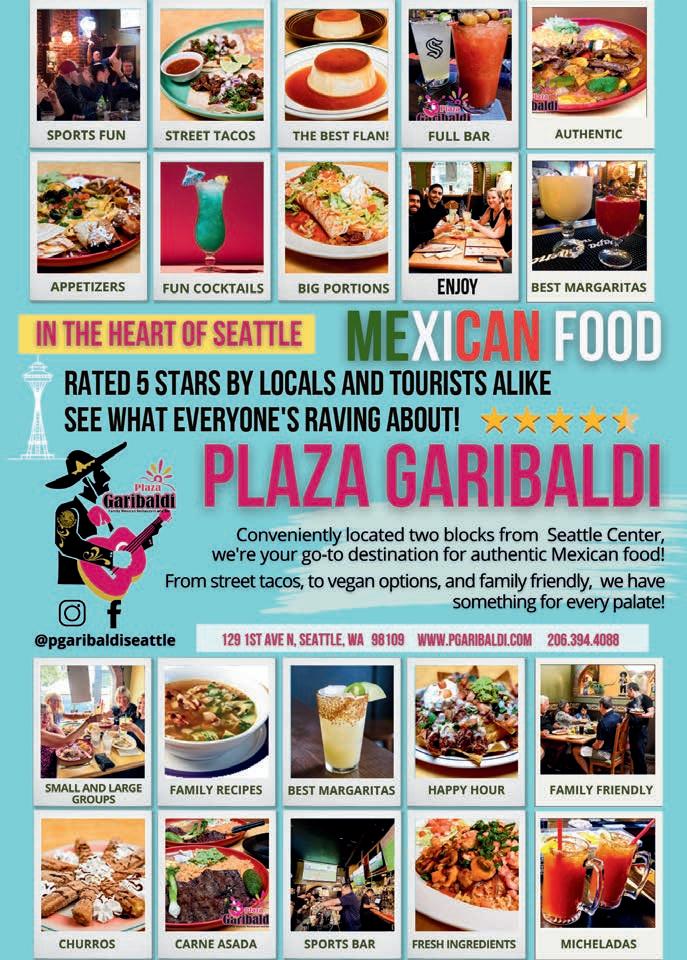

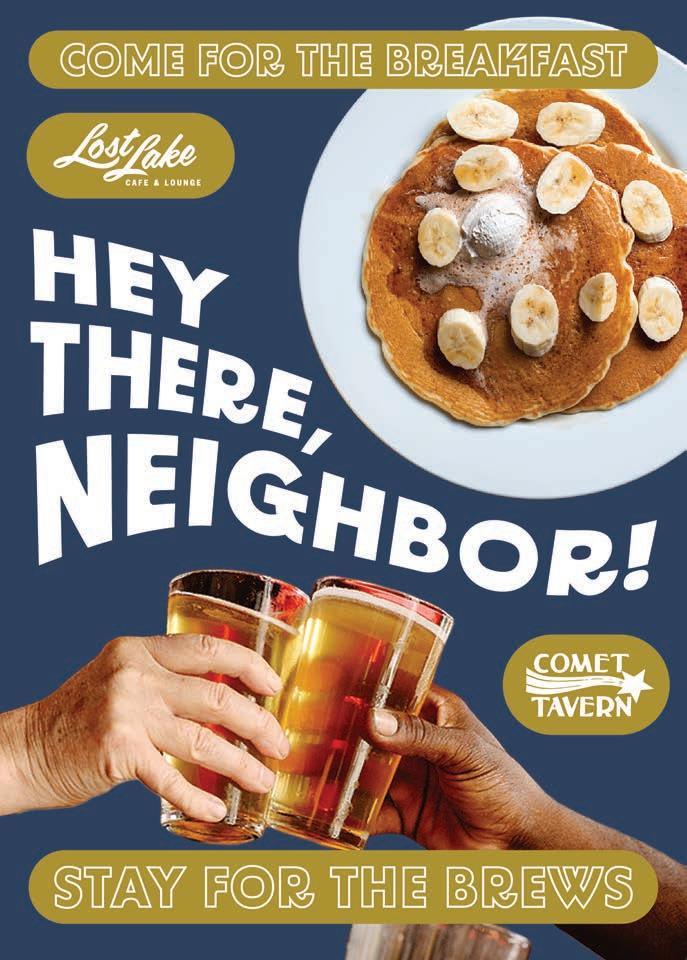

BY WILDER Thornton

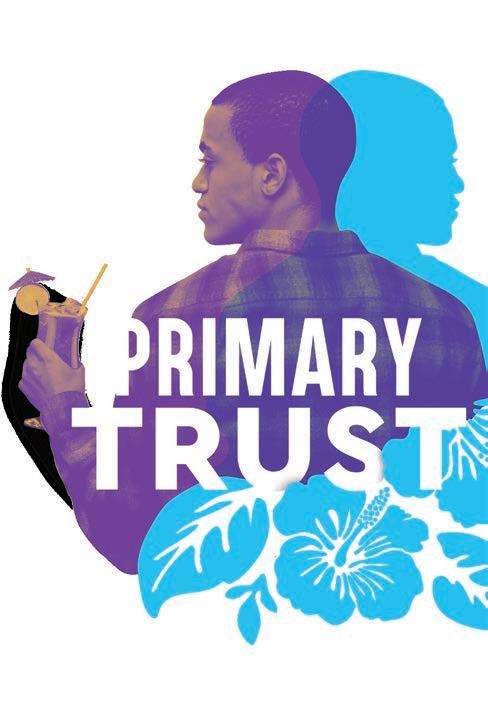



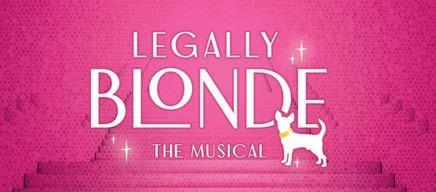
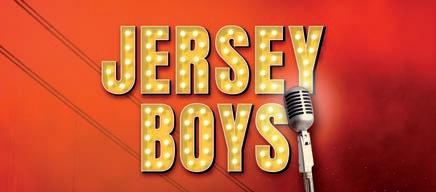

by
BY AUDREY VANN, JULIANNE BELL, LINDSAY COSTELLO, MEGAN SELING, AND SHANNON LUBETICH
Through Sept 28
“If Jesus comes back, I’m introducing him to Jeffry Mitchell,” former Stranger writer Jen Graves once opined. “Jeffry can bring Christ up to speed on things like humor and gayness and art, and Jesus can feel good about what humanity’s been up to, and together they can visit the Berninis in Rome.” The self-proclaimed “gay folk artist” creates work that is flatly impossible not to love. It’s playful, human, and elaborate, with a friendly vitality that nods to the importance of both meticulous craft and self-acceptance. This solo exhibition of Mitchell’s work features sculptural works in clay, neon, and wood, plus works on paper, that are “foundational” to his detailed process. (Traver Gallery, 110 Union St #200, free, all ages) LINDSAY COSTELLO
Through May 4, 2025
A.K. Burns, a New York–based multimedia artist (and current fellow at Harvard’s Radcliffe Institute for Advanced Study) dials into queer perspectives through videos, sculptures, and installations, highlighting transfeminist issues through an imaginative lens. Focusing on Burns’s Negative Space series, this solo exhibition delves into the artist’s “intersections of landscapes, human bodies, and water.” The works pull from nonlinear and sci-fi sources to challenge the status quo. What is Perverse is Liquid “reflects on environmental vulnerability, marginalized communities, and their relationships with place,” using negative space as a setting upon which to imagine new and evolving systems for marginalized
voices. (Henry Art Gallery, 15th Ave NE and NE 41st St, free-$20, all ages) LC
Sept 19-22
I’ll admit it: Jazz can feel very intimidating! There are so many subgenres to learn, names to remember, and history that feels gatekept by boomers with expensive hi-fi equipment. However, nothing compares to hearing a skilled jazz ensemble play live. It’s truly transcendental. If you haven’t had the pleasure, Seattle-based ensemble Delvon Lamarr Organ Trio is an excellent place to start. The trio employs Jimmy Smith-style organs, Motown-spiced rhythms, and Jimi Hendrix-hazed guitars for timeless, feel-good soulful jazz you can dance to. (Jazz Alley, 2033 Sixth Ave, multiple showtimes, $41.50)
AUDREY VANN
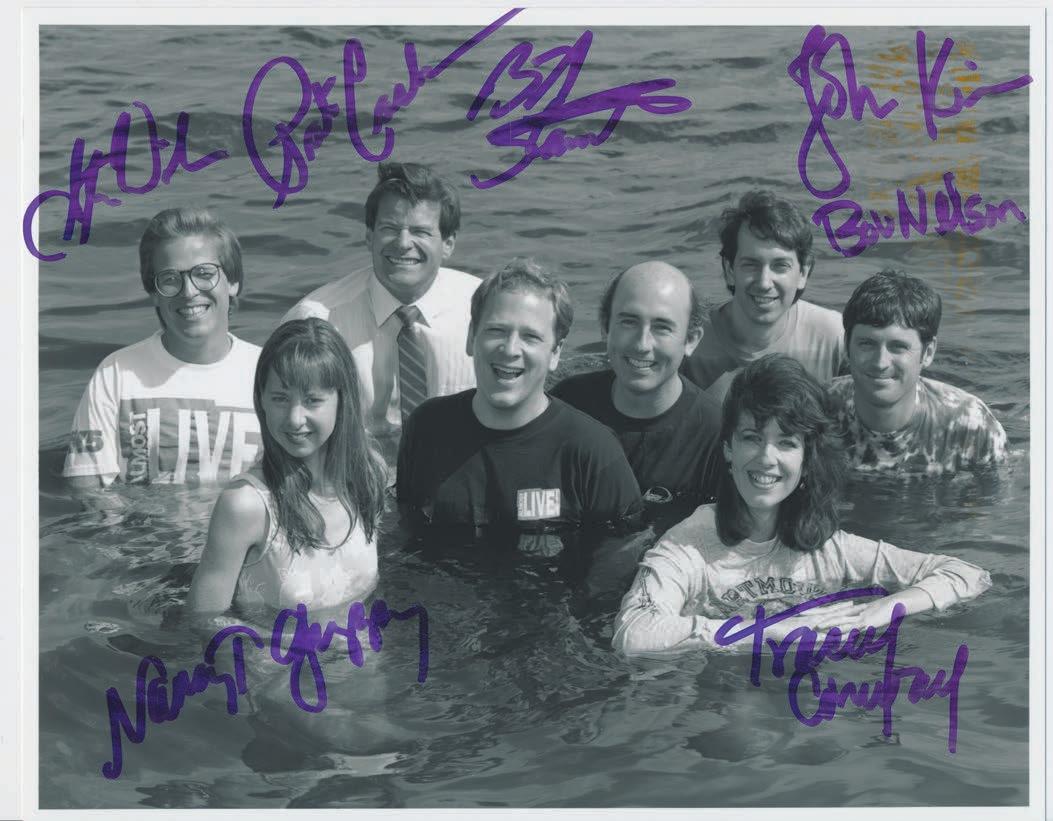
THROUGH FEB 23, 2025
Seattleites of a certain age who make jokes about Ballard residents driving around with their seatbelts hanging out from underneath closed car doors will be very stoked for the Museum of History and Industry’s newest exhibit. Almost Live! (Almost an Exhibit) is a collection of props, costumes, and clips from the weekly sketch comedy show that defined—and poked fun at—the Pacific Northwest region from 1984 to 1999. On Tuesday, September 24, MOHAI will host the Fashion Lecture: Almost Grunge! event with Clara Berg, creator of @AlmostStyle on Instagram. (Museum of History & Industry, 860 Terry Ave N, free–$25, all ages) MEGAN SELING
Sept 19–Oct 5
Dan Savage’s pioneering erotic film fest premiered an all-new lineup of sexy films featuring all genders and orientations earlier this year. Since 2005, HUMP! has brought inclusive, creative, and kinky films to the big screen—and since this year’s fest features not one but two feature-length lineups, you can scope out the sex-positive fest yet again for a tantalizing treat. Part two includes 25 brand-spanking-new feasts for your eyeballs, including “smokin’ hot paranormal encounters, a mind-bending space carnival, spine-tingling ASMR, [and] all the thermal eye candy you can eat.” It’s worth a venture outside of your sex dungeon, but you can still wear the latex catsuit. (On the Boards, 100 W Roy St, 6:30 and 9 pm, $25, 21+) LC
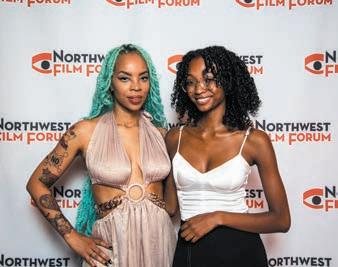
Back in 2015, Stranger senior staff writer Charles Mudede wrote, “What is this city becoming? What have we lost in the rush and thrust of all these new developments? To whom does this growing city belong? The brilliant Local Sightings Film Festival will show films that reveal the answers to these questions through features, shorts, and animation that are born here or hereabouts. There’s much to see and much to talk about.” The premise of the hybrid festival hasn’t changed much since then—Local Sightings returns for its 27th anniversary this year, offering up another round of curated screenings and transforming the city into a hub for indie filmmakers who forgo New York or LA for the Pacific Northwest’s endearing eccentricity. The always-great, hyperlocal film festival also offers opportunities for regional filmmakers, emotional storytellers, and documentarians to meet at the festival’s events. (Northwest Film Forum, 1515 12th Ave, $60–$150) LC
R-Day is quintessential Seattle: it’s quirky, it’s fun, there’s live music, and of course, the Rainier will be flowing. The annual free, 21-plus celebration commemorates the moment when Rainier Beer’s iconic R was restored to its place atop the Old Rainier Brewery in Georgetown. In addition to a herd of Wild Rainiers, wacky merchandise, eclectic art, and more, expect explosive live performances. Check out the hazy grooves of LA band Allah-Las, the fierce ’70s rock-kissed punk of Sheer Mag, and Seattle rock band Monsterwatch. (Georgetown, 4 pm, free, 21+) SHANNON LUBETICH
DISCOUNT KRATOM. GREEN, RED, WHITE, YELLOW & GOLD STRAINS.
POWDER AND CAPSULES IN STOCK.
13754 AURORA AVE. N. #A SEATTLE, WA 98133 206-880-5910
OPEN MONDAY – SATURDAY 10AM – 8PM

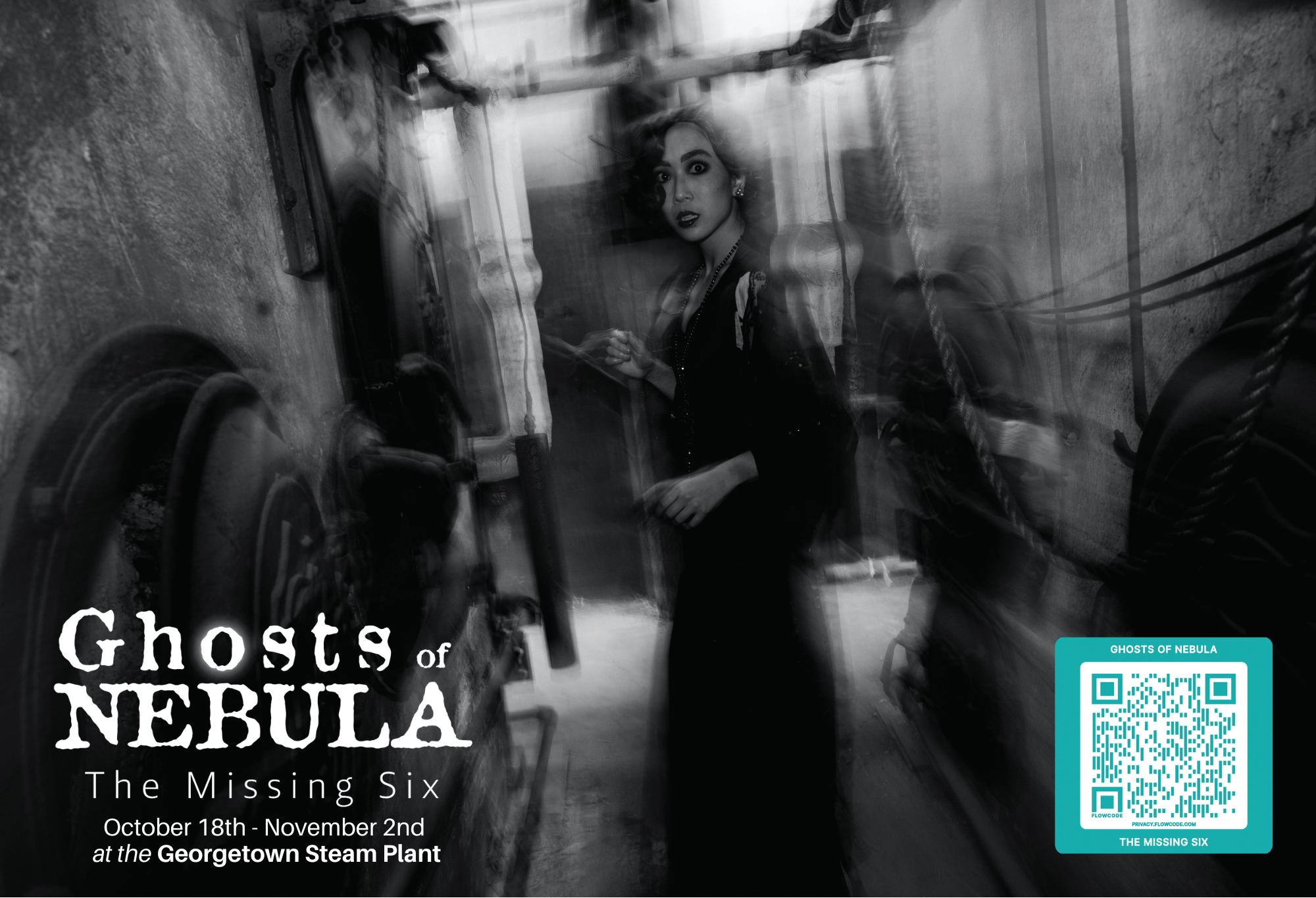
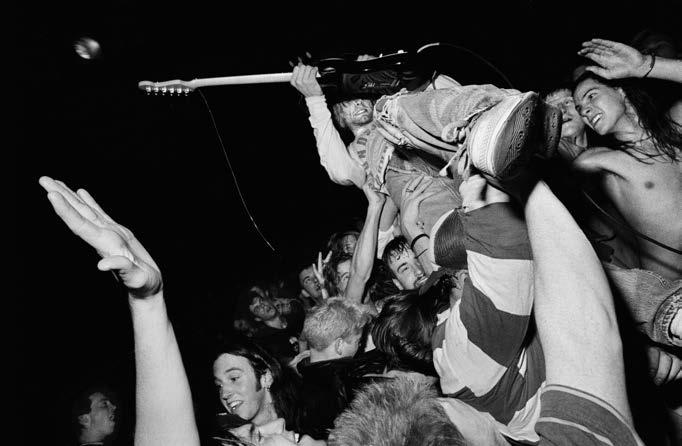
OCT 5–MAY 25, 2025
Charles Peterson’s photographs of Seattle’s music scene through the late ’80s and early ’90s have long been celebrated as jarring and captivating snapshots from one of the Pacific Northwest’s most pivotal eras in modern history. But Peterson’s work is about so much more than being in the right place at the right time. He’s a fucking great photographer! And this fall, the Tacoma Art Museum has curated his work, not just as vital music history but as the works of art they truly are. The show will also feature work from artists Sylvia Plachy, Nicholas Galanin, Jeffry Mitchell, and Peterson’s photographer professor, Paul Berger, to “draw out visual and contextual nuances of Peterson’s photographs.” Intriguing. (Tacoma Art Museum, 1701 Pacific Ave, free-$18, all ages) MS

Sat Sept 21
Bring your own lanterns or buy one on-site at Fremont Arts Council’s annual autumnal equinox celebration, which will help ease you into the less-sunny season. The evening will kick off with an opening ceremony followed by a parade around Green Lake and a dazzling display of illuminated art. The community always shows up for this truly magical evening—bring your date, bring your kids, bring your dog, and throw on any glow-in-the-dark and light-up items you own. (Green Lake Park, 7201 E Green Lake Dr N, 5:30 pm, free, all ages) SL

Sept 23–Oct 13
Envisioned as the “beginning of an arts hub by and centering Black and Indigenous disabled artists to present, collaborate, and get uplifted for their crafts,” the Mouthwater Festival espouses values we can get behind—anticapitalism and antifascism among them. The fest brings together artists with disabilities from across the country for solidarity, community-building, and over a dozen artsy events. I’m looking forward to Vanessa Hernández Cruz’s experimental piece Soul Seeker and the Mouthwater Cabaret, featuring performances by India Harville, Saira Barbaric, Mx. Pucks A’Plenty, and others. (Various locations, $15–$80) LC
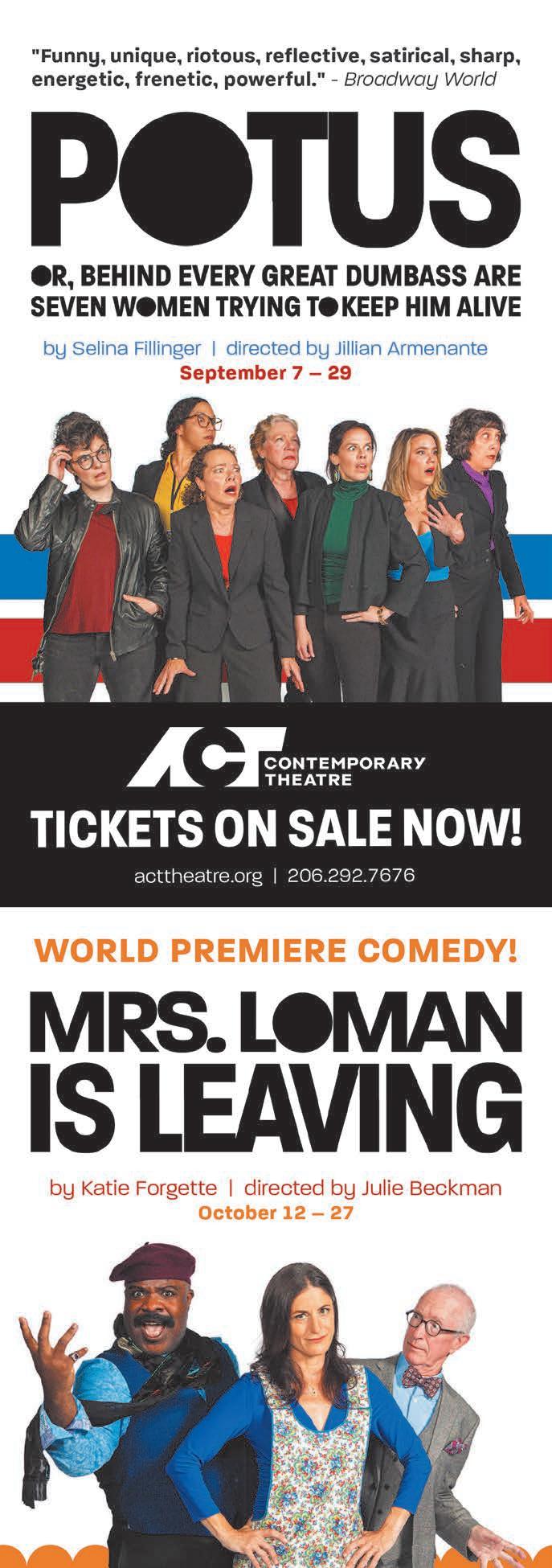
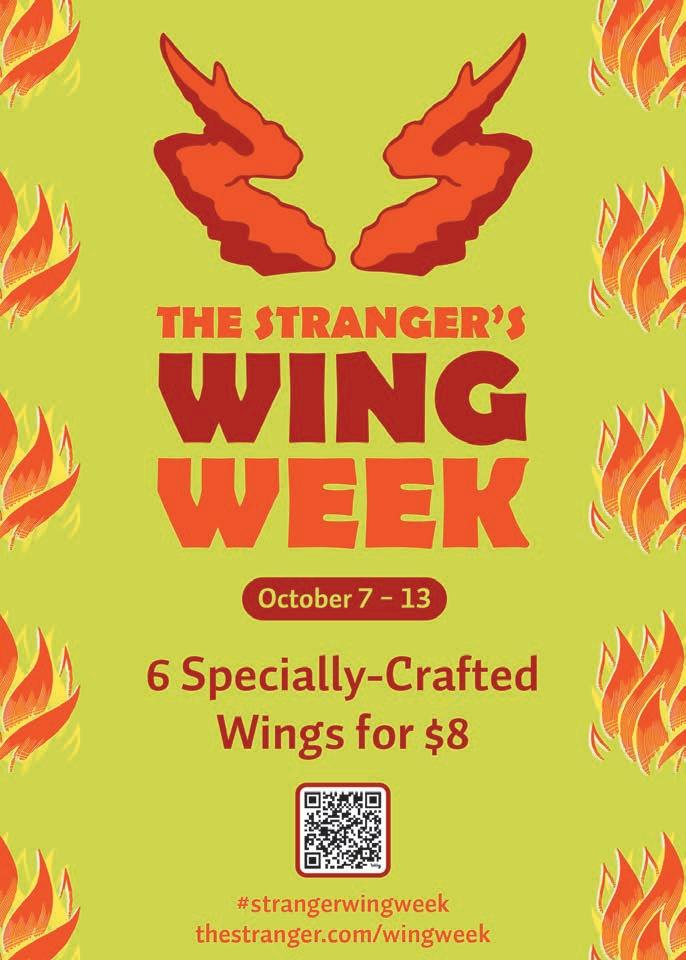


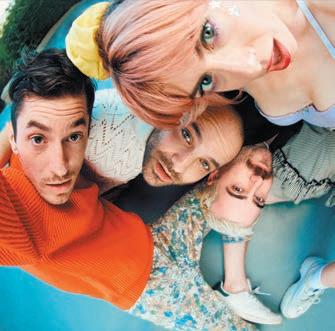
Tues Sept 24
On their new album Forever, Charly Bliss have shed what was left of their indie rock exoskeleton and taken flight as a polished pop band. Opening track “Tragic” could be a Taylor Swift song if it weren’t for the whirligig guitars, and “Back There Now” is as fun and boppable as anything Charli XCX released during her Sucker/“Boom Clap” era. In fact, track for track, the band seems to invite comparisons to some of today’s most beloved pop girlies. Do I miss the days when CB would recklessly blast through crispity, crunchity upbeat rock songs where vocalist Eva Hendricks would scream between lyrics about jumping so high on the trampoline that you pee your pants? Sure. But the band has always known
the power of some well-placed punk patina, and I’m guessing they still will when they play the Crocodile in September. (The Crocodile, 2505 First Ave, 8 pm, $22, all ages) MS

Wed Sept 25
You’re most likely already familiar with James Beard Award-winning chef and restaurateur Renee Erickson via her fleet of nationally acclaimed Seattle restaurants, including the Walrus and the Carpenter, the Whale Wins, and Bateau. Now, she’s following up her cookbooks—A Boat, a Whale & a Walrus: Menus and Stories and Getaway: Food & Drink to
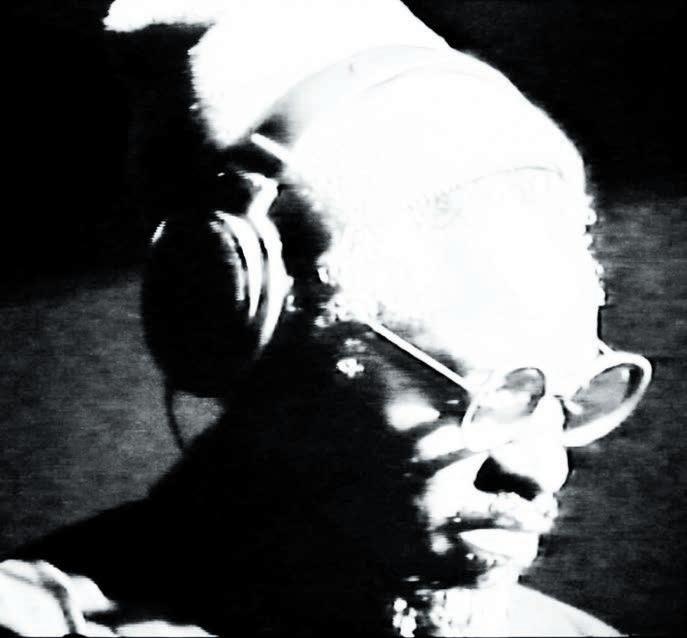
WED OCT 9
In November of last year, André 3000 surprised fans with his first new music in 17 years—but it wasn’t what we anticipated. The OutKast rapper released a full-length album of flute music. New Blue Sun is an odyssey of spiritual jazz and electronic ambient sounds that could perfectly soundtrack an Octavia Butler novel. Featuring instruments like mycelial electronics, plants, shakuhachi, and sintir, the album is equal parts acoustic and electronic with multiple types of flutes played by André himself. Joined on stage by album collaborators Carlos Niño, Surya Botofasina, Nate Mercereau, and Deantoni Parks, the ensemble will present an immersive concert that enchants audiences with improvisation and “sensory grandeur.” (Paramount Theatre, 911 Pine St, 8 pm, $54.50–$144.50, all ages) AV
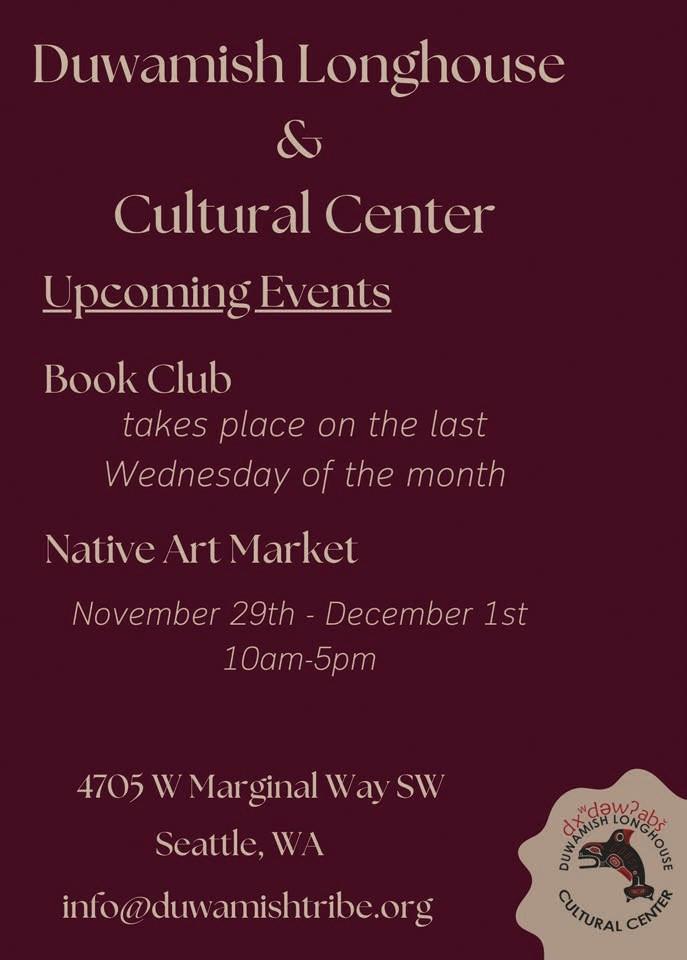




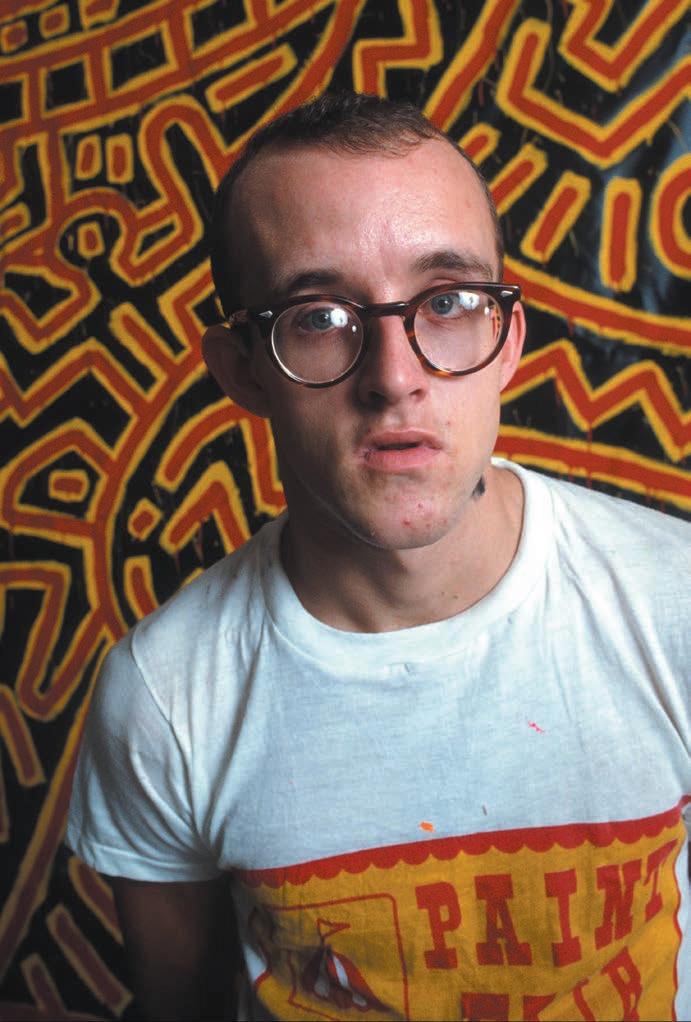
OCT 12–MARCH 23, 2025
To some, such as myself, Keith Haring is seen as a part of the hiphop culture that emerged in New York City in the early ‘80s. He worked with Dondi White, a master and founder of the kind of graffiti you find today in Berlin, Rome, Tokyo, and, yes, Seattle. Indeed, Haring and Dondi did the cover art for Malcolm McLaren’s bizarre but fundamentally hiphop album Duck Rock. For many, this cover introduced Haring, whose work was simple but not simplistic, breezy but cosmically vibrant. And then there’s the cover of McLaren’s Would Ya Like More Scratchin’. Here, we have nothing but Haring. His chalk-drawn figures popping and locking. You can hear the scratching and cutting. You can see New York City when it was the capital of the art world. Haring will always be hiphop to me. (MoPOP, 325 Fifth Ave N, $7 with museum admission, all ages) CHARLES MUDEDE
Transport You—with her latest release, Sunlight and Breadcrumbs: Making Food with Creativity and Curiosity. Kind of like a version of The Artist’s Way for food lovers, the new book tells the story of how Erickson, a former art school student, reconnected with her creative side through painting, photography, ceramics, and cooking. The pages are packed with elegant, unfussy recipes like melted anchovy toast, raspberry and pecan crumble cake, and white beans with pork sausage, lemon peel, and green herbs—which will no doubt inspire you to exercise your own imagination in the kitchen. Erickson will stop by Fremont Abbey for a chat with chef and bestselling author J. Kenji López-Alt, followed by a Q&A and signing. (Fremont Abbey
Arts Center, 4272 Fremont Ave N, 7 pm, $56)
JULIANNE
BELL
Thurs Sept 26
A lot has been written about the Pacific Northwest’s music history, but in their new book, The Sound of Seattle authors Eva Walker and Jacob Uitti tell the region’s stories through the songs that put it on the map. Walker, vocalist for the Black Tones and a long-time KEXP DJ, and her journalist husband, Uitti, start their journey in the 1940s

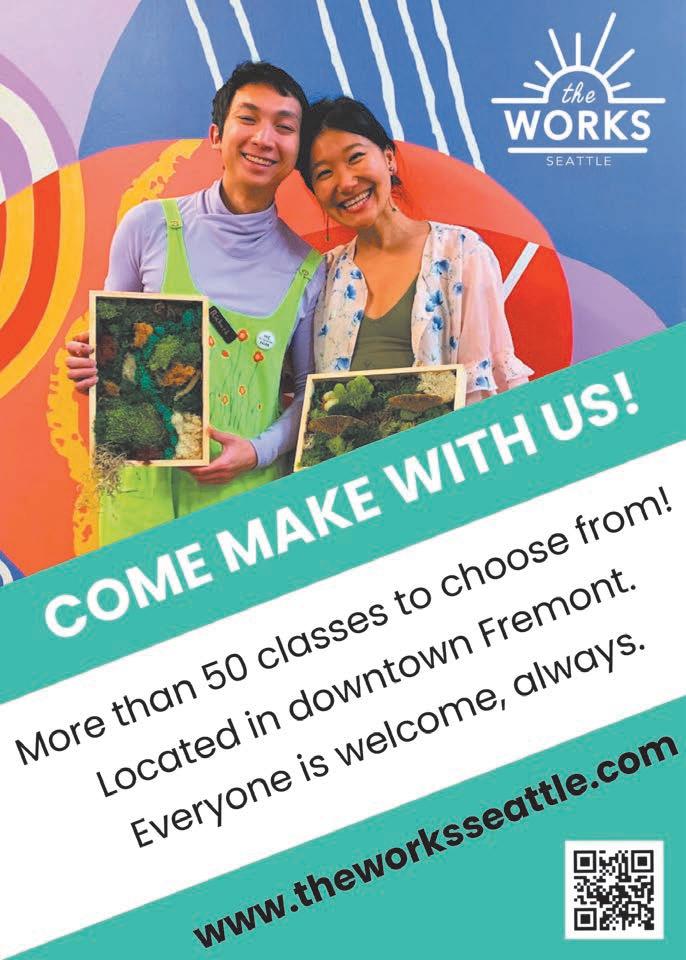




with tunes from Tacoma’s own Bing Crosby and Garfield High School alum Ernestine Anderson. From there, they travel into the present day—with some surprising pit stops along the way. Yes, there’s Nirvana and Mudhoney, but also the Fartz, the Emerald Street Boys, IMIJ, and Blimes and Gab. At the Town Hall event, Walker and Uitti will discuss the past, present, and future of local music with Thunderpussy vocalist Molly Sides, the True Loves guitarist Jimmy James, DJ and emcee Vitamin D, and radio DJ Marco Collins. (Town Hall Seattle, 1119 Eighth Ave, 7:30 pm, $10–$35, all ages) MS
Fri Sept 27
French electronic duo AIR is stopping by on their first tour in seven years to celebrate the 25th anniversary of their debut album, Moon Safari. If you’ve somehow sneaked through the last two decades without hearing the album, just know that it’s probably the most 1998-sounding music ever to exist. The album is spacy, sexy, jazzy, and as light as, well, air. It’s an album you’d expect to hear at a high school makeout party. (Were those a real thing, or just something in TV shows?) (Benaroya Hall S. Mark Taper Foundation Auditorium, 200 University St, 8 pm, tickets started at $149.50 at press time, all ages) AV
Fri Sept 27
I’m a big fan of Kristina Cho’s James Beard Award-winning debut cookbook, Mooncakes & Milk Bread which demonstrates how to turn your kitchen into your personal Chinese bakery with sweet and savory recipes like steamed barbecue pork buns, hot dog flower buns, juicy dumplings,
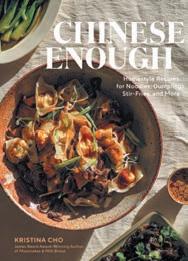
almond cookies, and crackly-topped pineapple buns. (It’s also the first book of its kind to focus exclusively on Chinese bakeries and cafés.) That’s why I’m so excited for her follow-up, Chinese Enough which revolves around savory dishes that “blend the flavors of traditional Cantonese cooking with California ingredients and a Midwestern sensibility,” resulting in something “neither entirely Chinese nor entirely American, but Chinese enough.” I’m hungry just thinking about dishes like San Francisco garlic noodles, miso pork meatballs, creamy tomato udon, smashed ranch cucumbers, and chili crunch salmon rolls, and the chapter on banquet-worthy dishes alone is enough to inspire you to plan a Babette’s Feast-level bacchanalian bash. Cho will chat with local baker and Pieometry author Lauren Ko. (Book Larder, 4252 Fremont Ave N, 6:30 pm, $39.50) JB
This year, Wa Na Wari’s annual Central District festival has transitioned into a free event spanning two days! Centered around the theme “Who We Are... Where We Are...How We Are,” the fundraiser amplifies the anti-displacement organizing work of Wa Na Wari’s CACE 21 program. Friday’s Walk the Block Institute will feature creative community-building workshops and a keynote from Miami-based architect and educator Germane Barnes. The beloved Walk the Block Art Festival takes place on Saturday,
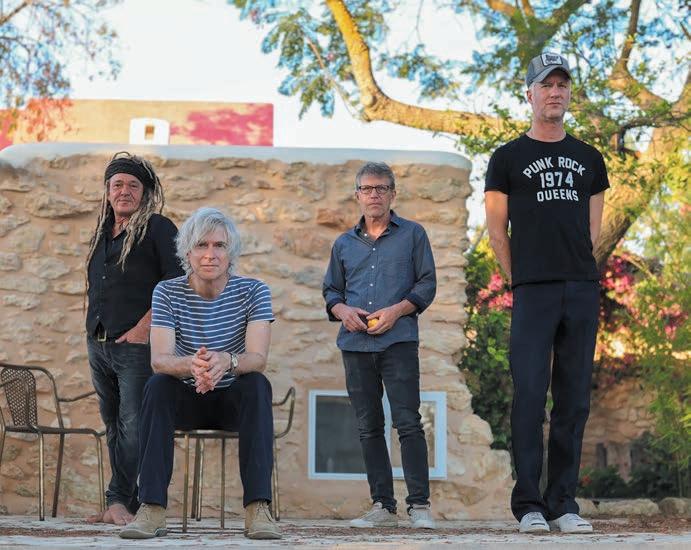
TUES OCT 15
Nada Surf has been a band for more than 30 years, which means fans of all ages have been drawn to their music at different points in their career. My coworker remembers their 1996 debut hit “Popular,” which catapulted them to alt-rock popularity; I fell in love with their fifth full-length, Lucky, in high school. Now, the group known for bittersweet anthems is set to release their next album in September, with currently released singles hinting at an era of reflection, musing on the human experience with notes of love, grief, doubt, and hope, told through soaring harmonies and strong instrumentation. Upand-coming New Zealand indie rock trio Office Dog opens the show. (The Crocodile, 2505 First Ave, 8 pm, $30, 21+) SL
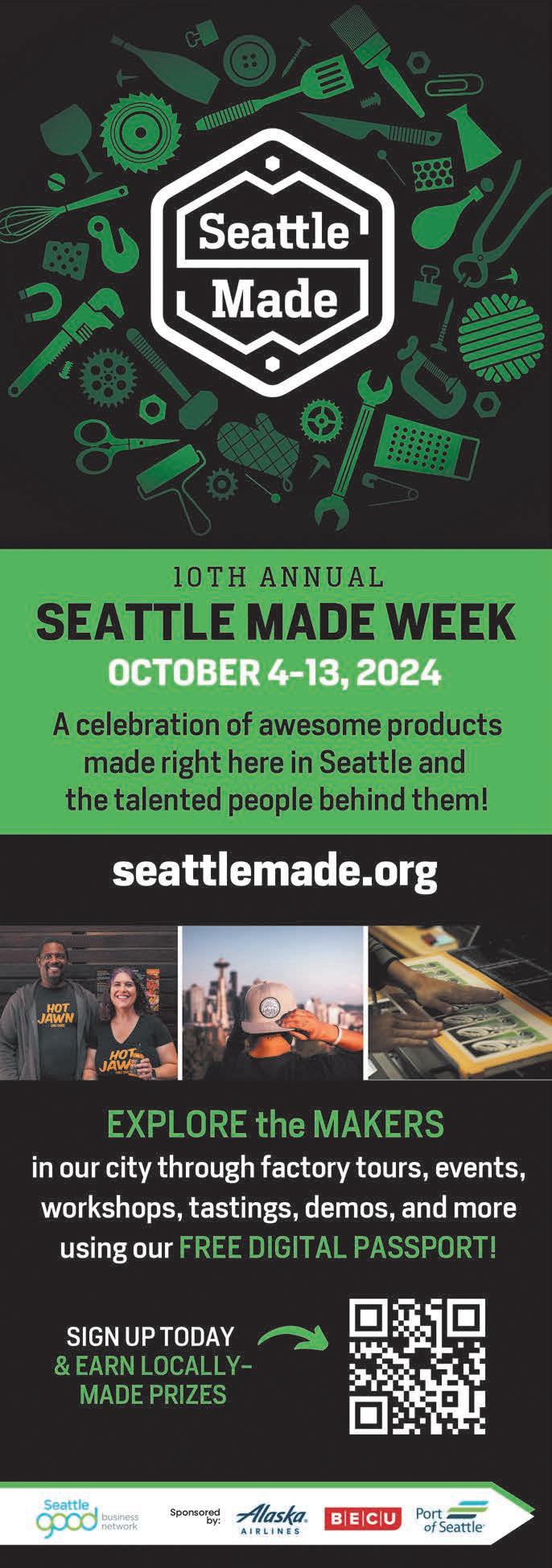

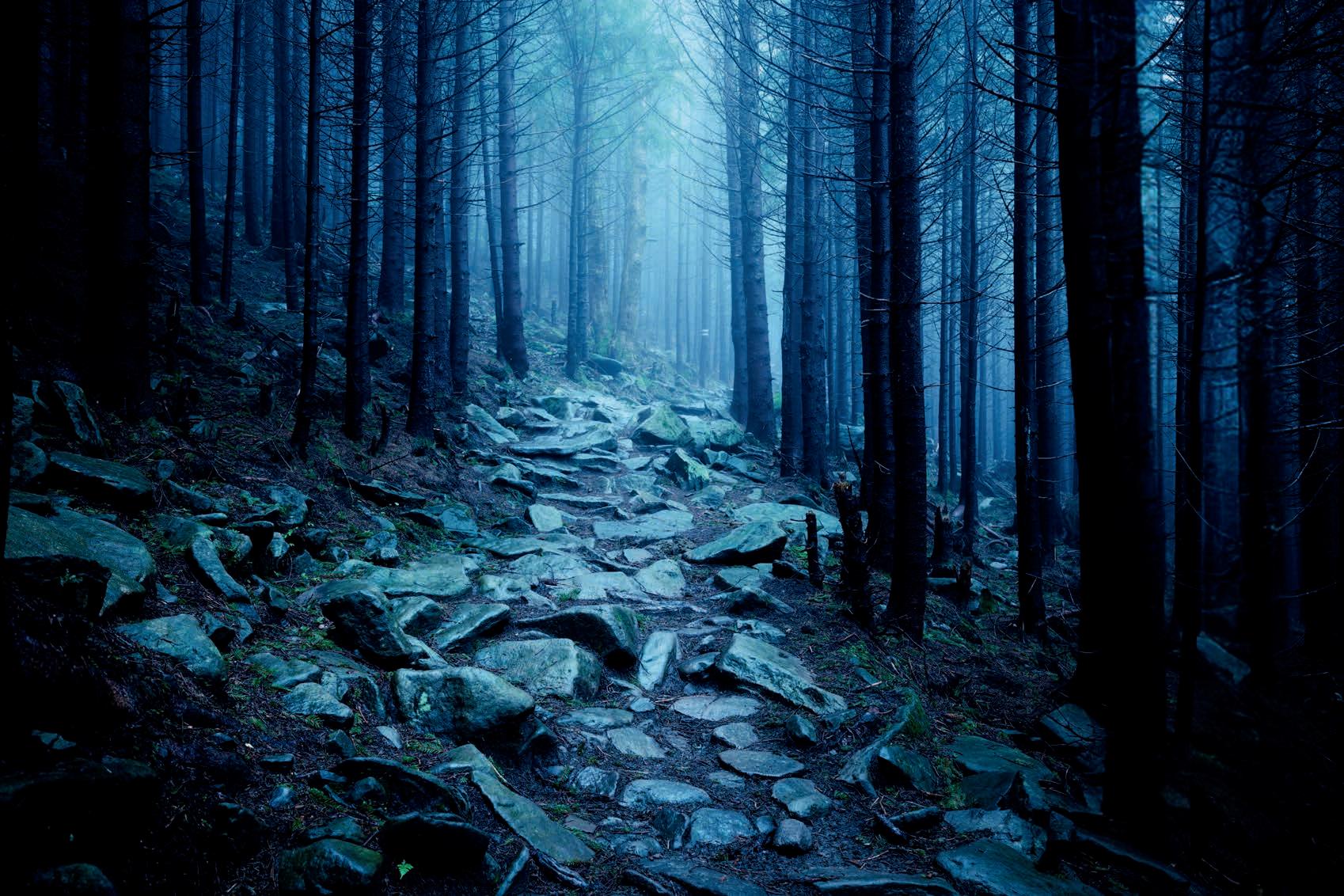


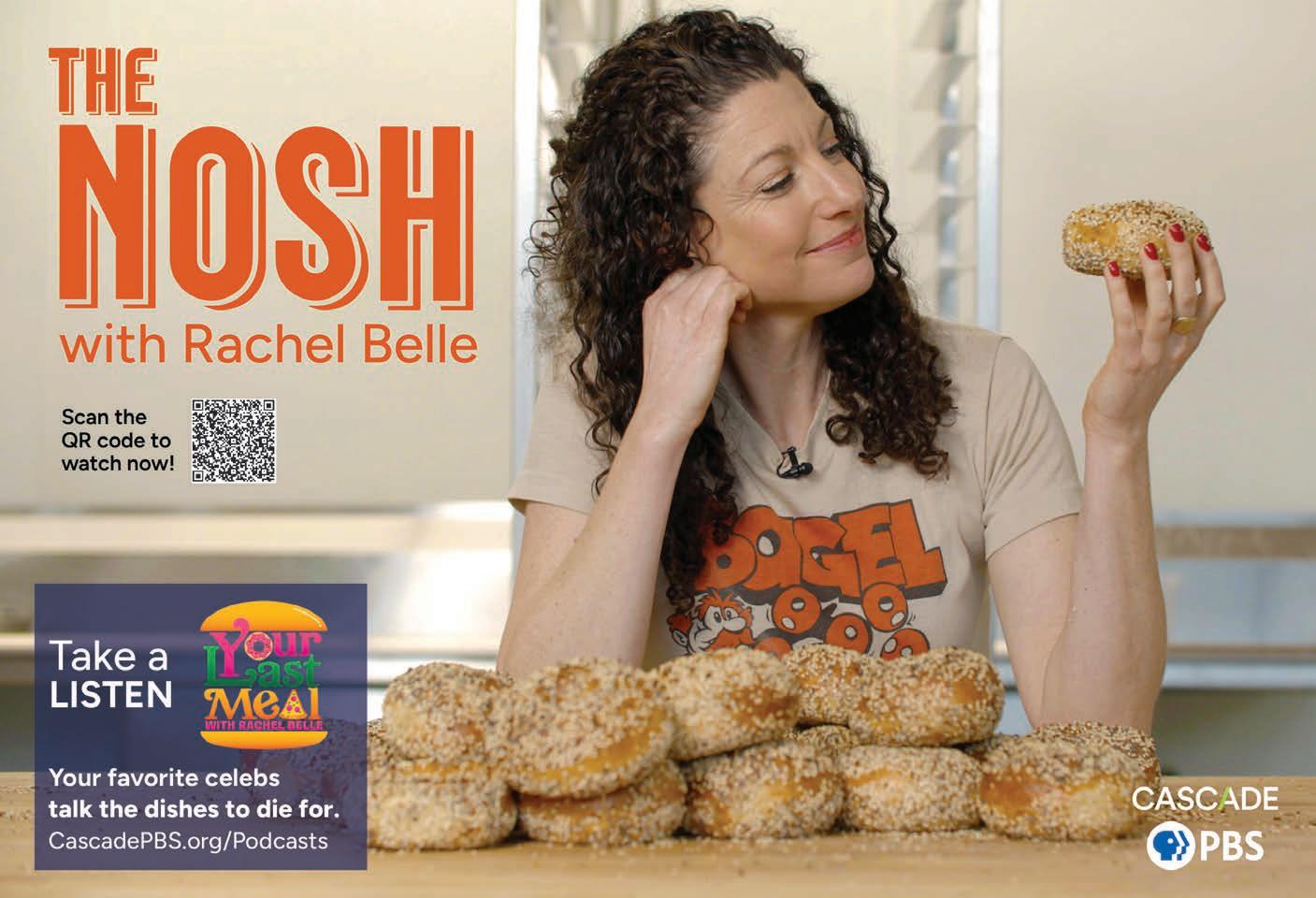
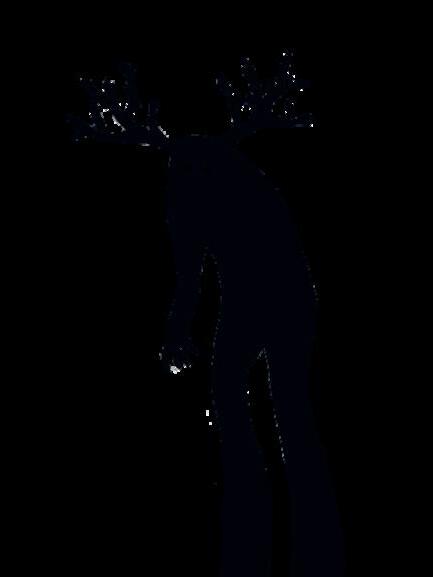



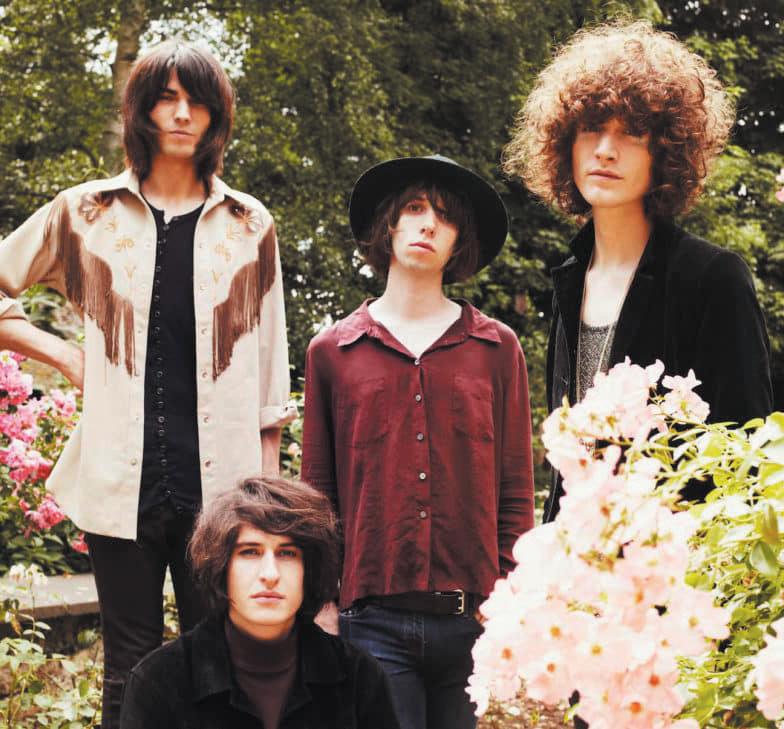
WED OCT 9
I became a fan of Temples with their fourth full-length, Exotico, which came out last spring, but this English neo-psychedelia-glam band has been making music since 2012. Noel Gallagher once called them “the best new band in Britain.” Despite their longevity, their energy and sound feel very now. When the band took the stage at Bumbershoot 2023, they danced and sang and rocked out with an energy I wouldn’t expect from a group that’s been at it for so long. They were excited—to play music, to be in this moment with us, to be alive—and I can’t wait to experience that again at their live show. (Neumos, 925 E Pike St, 7 pm, $30–$35, all ages) SL
celebrating Black art with an afternoon walk through the Central District, where fresh installations and performances will be on view in businesses, parks, porches, and other common spaces. Catch stimulating visual and sculptural art, video installations, live music, dance parties, community stories, and more. VIP ticket holders will get treated to food from chef Donna Moodie, an aura photo, and a headlining performance by soul songstress Aliah Sheffield. (Wa Na Wari, 911 24th Ave, free, all ages) SL
Mon Sept 30
and tips on everything from fish butchering to whipping up Dungeness crab donburi. He’ll be joined by local author Susan Lieu, who wrote the heart-wrenching memoir The Manicurist’s Daughter (Book Larder, 4252 Fremont Ave, 6:30 pm, $5.75 for the talk or $36.70 for the talk and a copy of The Memory of Taste) JB
Tues Oct 1
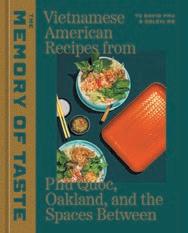
Oakland-raised chef, Top Chef alum, and Emmy-nominated filmmaker Tu David Phu, executive chef and managing partner at the Las Vegas restaurant District One, cut his culinary teeth working in some of the country’s most prestigious restaurants. Eventually, he realized that it was his Vietnamese refugee parents who imparted the most important lessons, including but not limited to “frugality, food-covery cooking, and practical gill-to-fin eating.” His new book The Memory of Taste: Vietnamese American Recipes from Phú Quốc, Oakland, and the Spaces Between captures this resourceful, pragmatic spirit with childhood memories, stories of his family’s life on Phú Quốc, stunning photography,
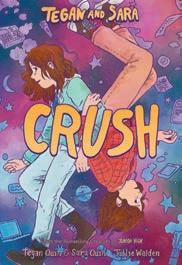
The celesbian indie pop twin-sister duo Tegan & Sara’s new middle-grade graphic novel, Crush, a follow-up to the previous installment Junior High is created in collaboration with queer cartoonist superstar Tillie Walden and deals with the agony and ecstasy of adolescence, including crushes, puberty, coming out, sisterhood, music, and friendship. The autobiographical series, set in the present day, is “lightly fictionalized” but draws on the Canadian siblings’ real experiences. As a fan of the sisters’ poignant coming-of-age memoir High School and its Amazon Freevee TV adaptation of the same name, I can’t tell you how much a book like this would have meant to me as a tween, and I’m so happy for the Gen Alpha kids who get to grow up with this kind of media. Stop by Washington Hall to see Tegan and Sara speak on everything from first loves to songwriting. (Washington Hall, 153 14th Ave, 7 pm, $35, all ages) JB



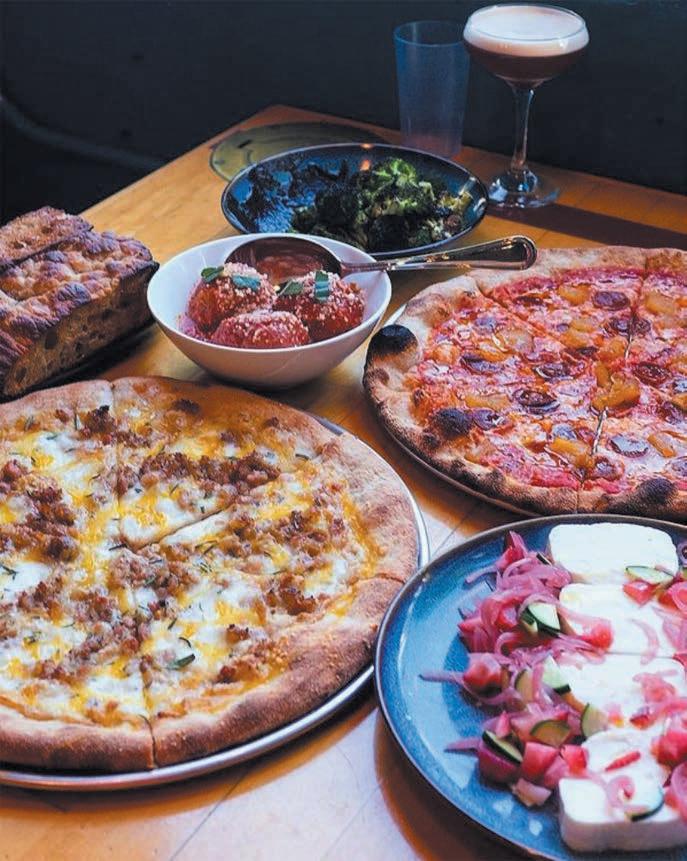

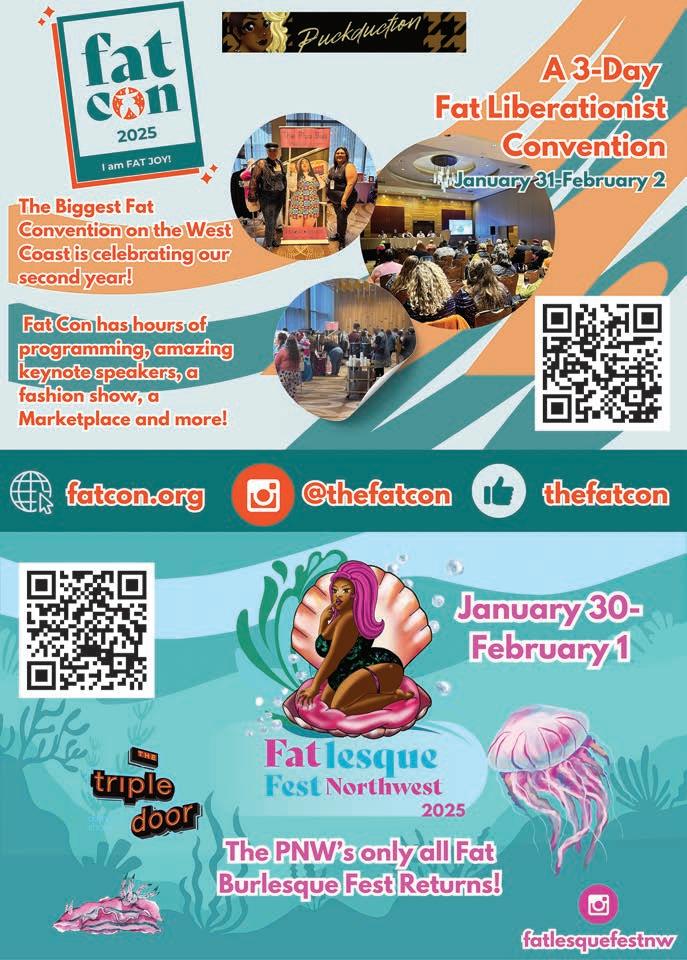


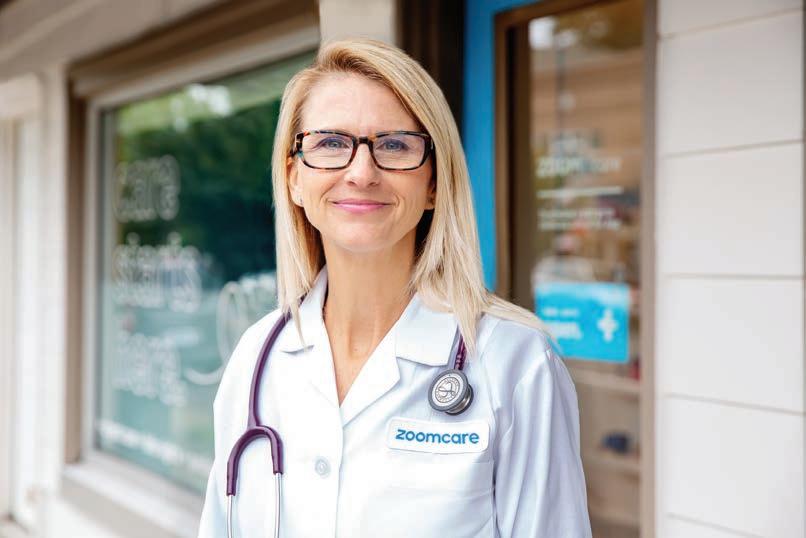
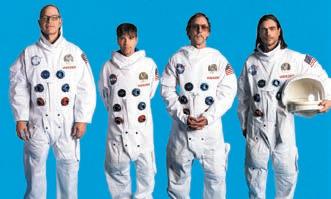
Fri Oct 4
Weezer knows. Despite the massive success the band has seen since the release of their 1994 self-titled debut, Rivers Cuomo and company are perfectly aware that, in some fans’ eyes, they’ll never truly top what has come to be referred to as the Blue Album. With the explosive opening 15 seconds of “My Name is Jonas,” the cheeky “Undone — The Sweater Song,” and the heartwrenched “Only in Dreams,” it is iconic. (And it has aged better than Pinkerton—still love you, though, Pinkerton!) To celebrate the 30th anniversary of the Blue Album the band is heading out on a US tour, Voyage to the Blue Planet, where they’ll play the record from start to finish. To round out the alt-radio rock circa 1995 soundtrack of the evening, the Flaming Lips and Dinosaur Jr. open the show. (Climate Pledge Arena, 305 Harrison St, 7 pm, tickets started at $54 at press time, all ages) MS
If you’re queer and in your doomer era, we can’t blame you, but too much wallowing is corrosive to the soul. You need to feel, and you need to heal, and that’s what this year’s Q-thartic Seattle Queer Film Festival (SQFF) is all about. Presented by Three Dollar Bill Cinema, the 10-day festival offers a needed release with a slate of films championing intersectional queer narratives. As of press time, we don’t know what those movies will be, but Stranger contributor Chase Hutchinson deemed last year’s festival “their best yet” after organizers were able to snag the critically acclaimed All Us Strangers and The People’s Joker,” so our hopes are high. All-access and virtual passes are available now. (Various locations with at-home streaming also available, sliding scale starts at $5) VIVIAN MCCALL
Oct 11–Nov 3
I’d be hard-pressed to find something more Seattle than an intimate playhouse on a lake. Seattle Public Theater often doesn’t get the attention it deserves, and I’m looking forward to checking out another production directed by Amy Poisson (she directed Maggie Lee’s Once More, Just for You last season, which I thoroughly enjoyed). The Park is a new piece written by Jenn
Ruzumna
and Lisa Every that
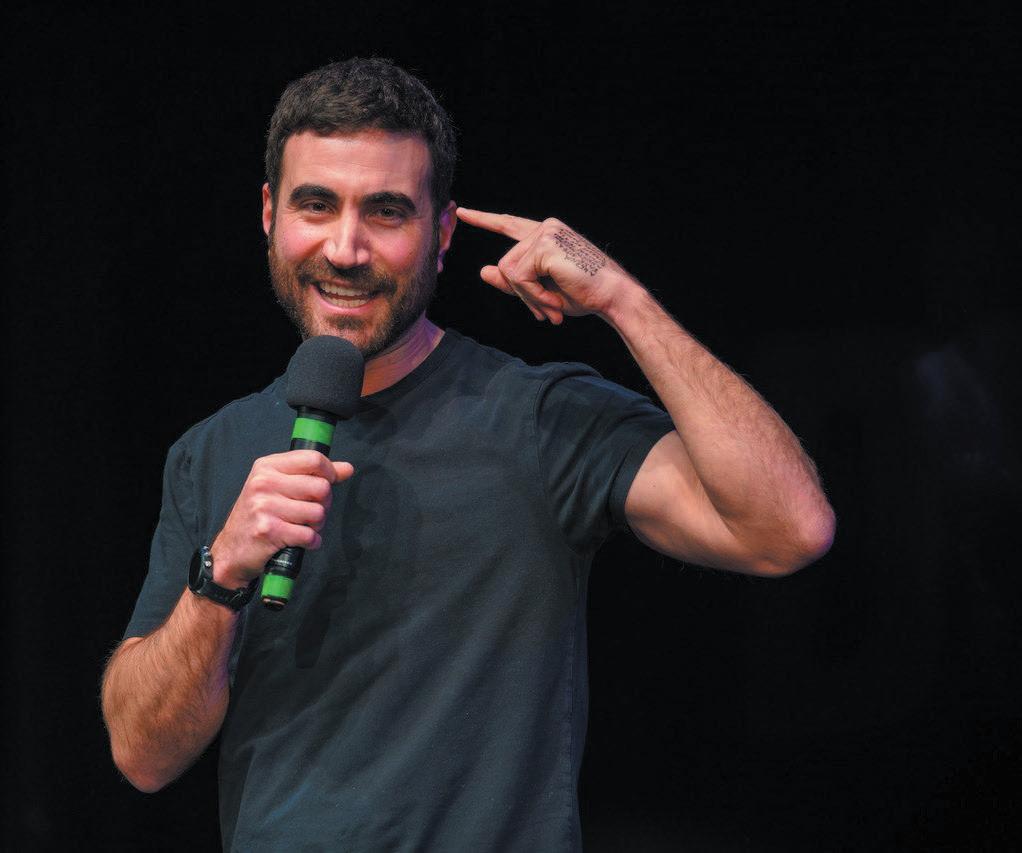
FRI NOV 1
As a writer and producer of Ted Lasso, the story goes that Brett Goldstein wasn’t supposed to play the lovably gruff Roy Kent onscreen, but that as soon as the team heard him read some lines, it had to happen, resulting in mass fandom and back-to-back Emmy Awards. On what appeared to be a test-run stand-up tour in early 2023, Goldstein performed at the Moore as one of his very few US stops to a sold-out audience and roaring laughter. He has since announced a full tour across the country, including his return to Seattle in November. The man is more than Roy Kent, though, so don’t expect him to simply be that character for his stand-up set. With tons of comedy writing chops (including co-creating and executive-producing Shrinking), Goldstein can hold his own as a stand-up comic with musings on America, being human, and of course, football. (Paramount Theatre, 911 Pine St, 7 pm, $94.50-$164.50) SL
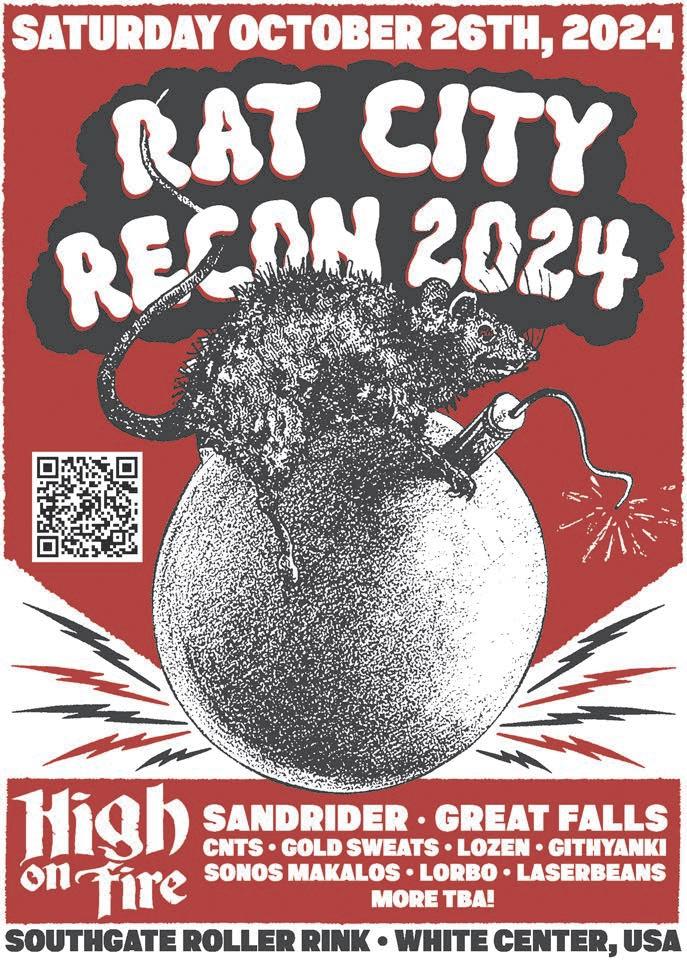

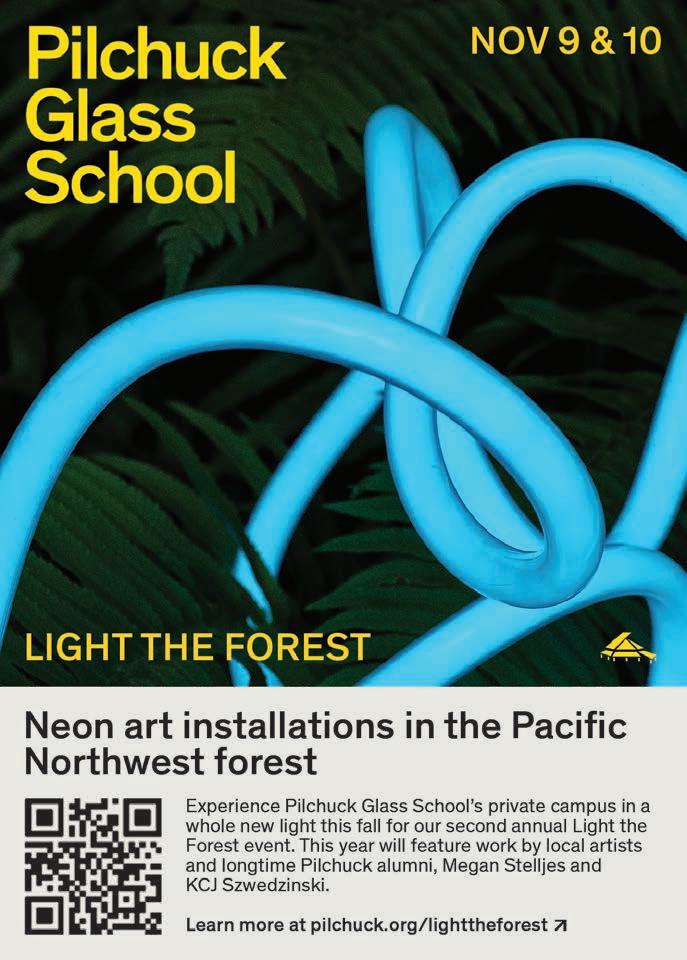



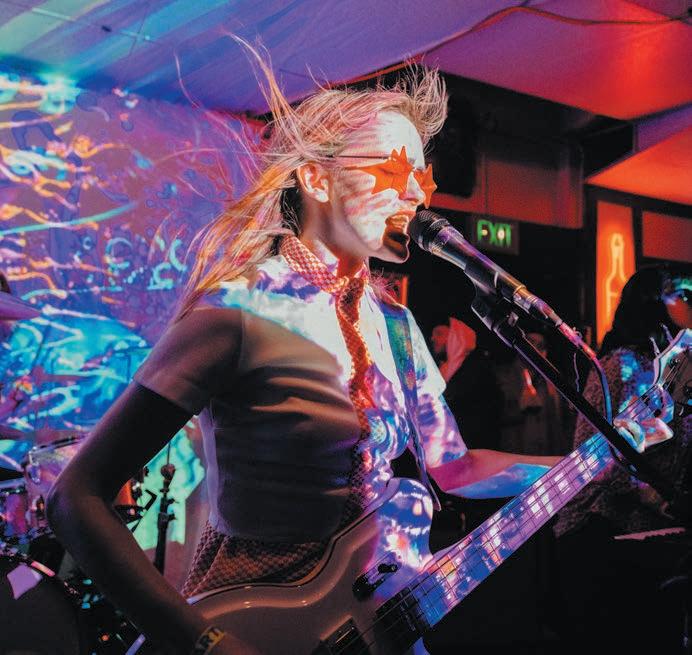
NOV 7–10
Acid Tongue’s Guy Keltner started Freakout Festival with one thing in mind— he wanted to throw a gigantic party for his friends. Now in its 12th year, the lineup may be bigger and more diverse than ever, but the spirit of the festival remains unchanged. Hop between multiple venues across Ballard to hear mind-bending psychedelic tunes while tripping out to Freakout’s notoriously hypnotic visual projections (the festival has a strict no-kids policy, so substances are common). You won’t want to miss performances from Texas-based psych rockers the Black Angels, experimental hip-hop project Shabazz Palaces, garage rock outfit Black Lips, Martin Rev (of synth-punk pioneers Suicide), and counter-culture icon Lydia Lunch. (Various venues in Ballard and Fremont, $71–$277, 21+) AV
follows the story of two friends who meet every week at the same park bench under the same tree to share their lives and search for meaning, and all the other creatures (including dogs and ghosts) who do the same. The Park is a co-production with Seattle Public Theater and feminist nonprofit arts organization Macha Theatre Works. (Seattle Public Theater, 7312 W Green Lake Dr N, $10–$100) SL
Oct 17–Jan 19, 2025
If you’re not familiar with the groundbreaking work of Black artist, sculptor, performer, and printmaker Joyce J. Scott, now’s the time to fix that: Seattle Art Museum will present a major career retrospective surveying Scott’s multimedia works, which spans her 50-plus-year career and emphasizes her “virtuosic use” of beads, glass, and textiles. Scott has “upended hierarchies of art and craft, insisting that artistic expression is that ‘extra inch of life’ that nourishes the soul even in the most challenging circumstances,” the museum explains. I’m interested in how Scott’s unique aesthetic vision addresses the racism, sexism, and inequality of the 20th century and the modern era through a subtle, often humorous lens. (Seattle Art Museum, 1300 First Ave, free–$29.99, all ages) LC
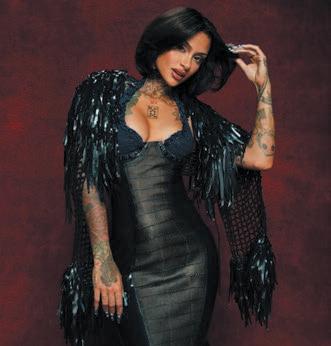
Fri Oct 18
The queer legend Kehlani is embarking on a world tour to promote their latest album CRASH, a groovy, genre-bending work that incorporates nostalgic ‘90s neo-soul and R&B influences and explores themes of intimacy, joy, and sensuality. The music video for the single “Next 2 U” unequivocally makes their pro-Palestine stance clear while their crew of queer backup dancers perform some very sexy choreography. They’ll be supported by the irresistible Y2K-inspired British girl group FLO (who are responsible for the breakup jam “Cardboard Box” and the cheeky postcoital bop “Walk Like This”) and the sultry rising rap star Anycia. ( Pledge Arena, 305 Harrison St, 8 pm, tickets started at $44 at press time, all ages) JULIANNE BELL
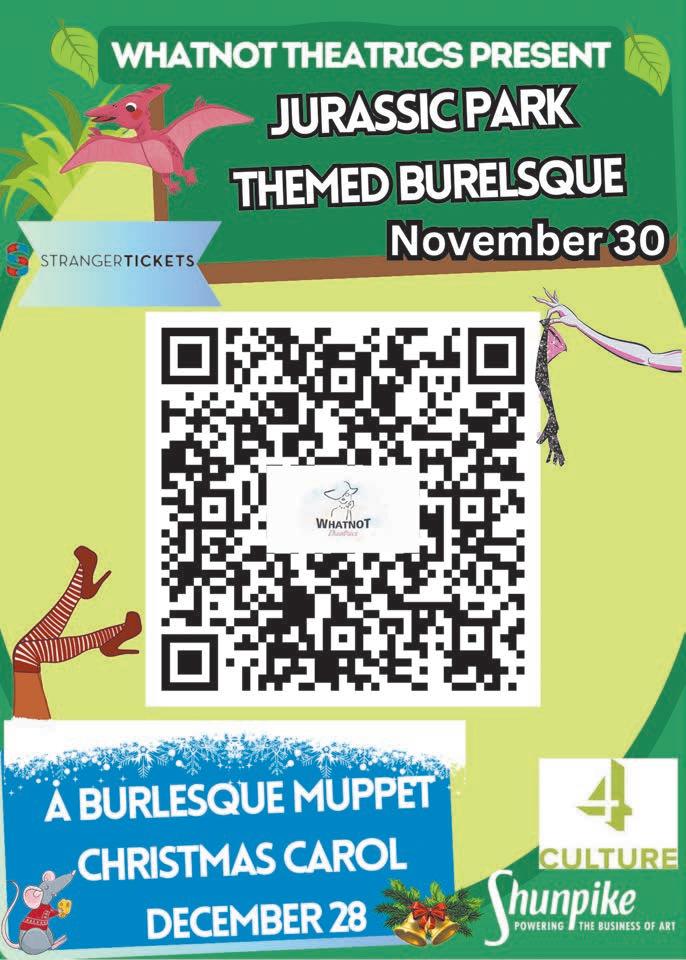

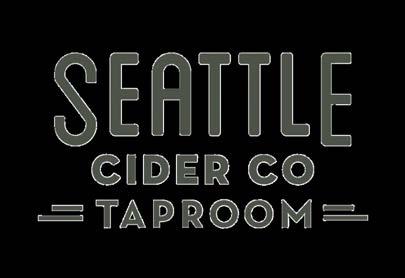
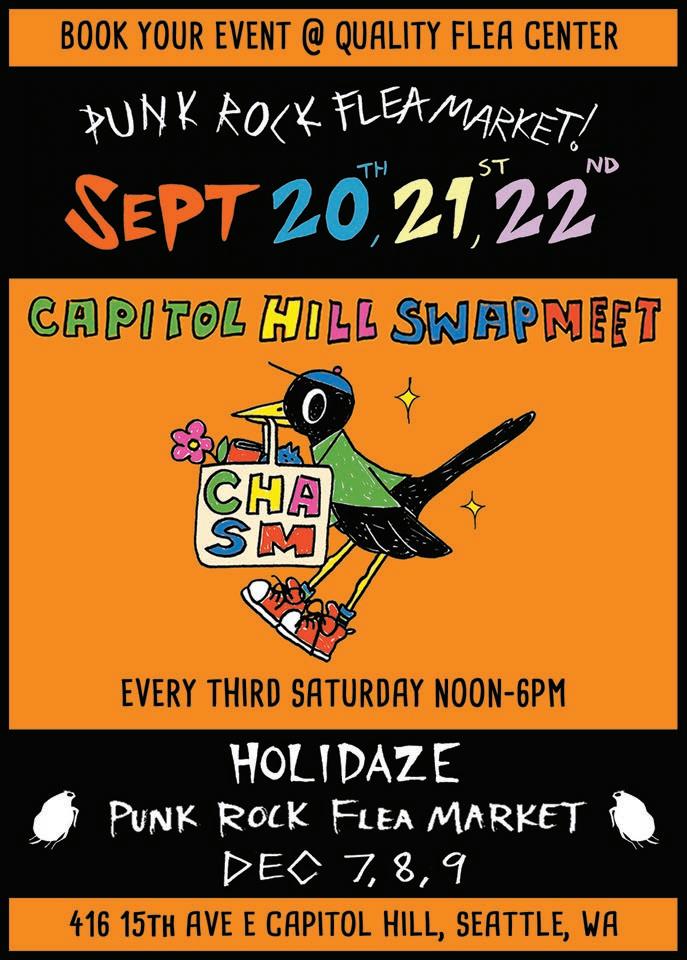


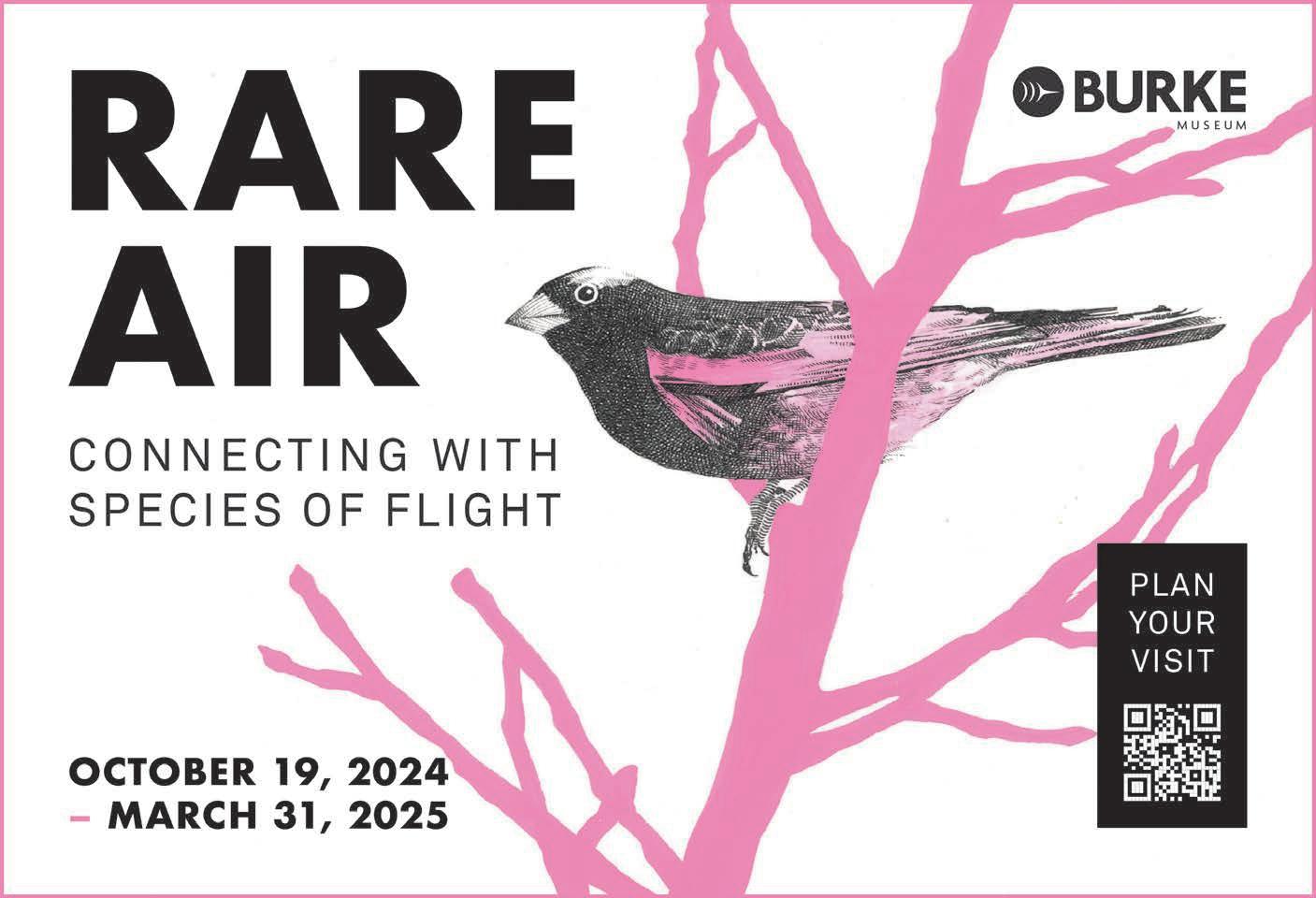
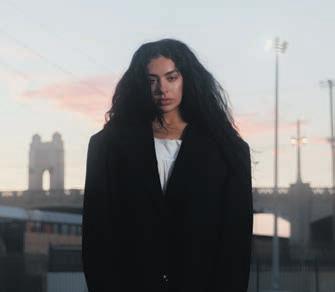
Wed Oct 23
At this point, Charli XCX’s sixth studio album has left us with more questions than answers: Is brat summer dead? Is Kamala brat? What color is her underwear? The only thing I know for sure is that politicians and brands co-opting the craze are
annoying as hell. Regardless, I’ve tried not to let it ruin my faithful love for the British hyper-pop star. I will never claim to be an OG Charli fan (I hopped on board when her 2020 masterpiece, how i’m feeling now, dropped), but I will forever brag that I saw her at the quaint Crystal Ballroom in Portland before this massive arena tour. Charli will be joined by her frequent collaborator/BFF Troye Sivan for their highly anticipated Sweat tour. They better deliver a mashup of “1999” and “Rewind.” (Climate Pledge Arena, 305 Harrison St, 7:30 pm, tickets started at $117 at press time, all ages) AV
Thurs Oct 24
Jenny Slate’s name is everywhere, if you know where to look: The comedian, actor, and author played your favorite character on Parks & Recreation lent her voice to the character of Missy on Big Mouth penned what The Washington Post called the “carnival of observations” Little Weirds and co-invented Marcel the Shell, for chrissake. Slate’s fresh collection of “personal pieces,” LIFEFORM, has sent
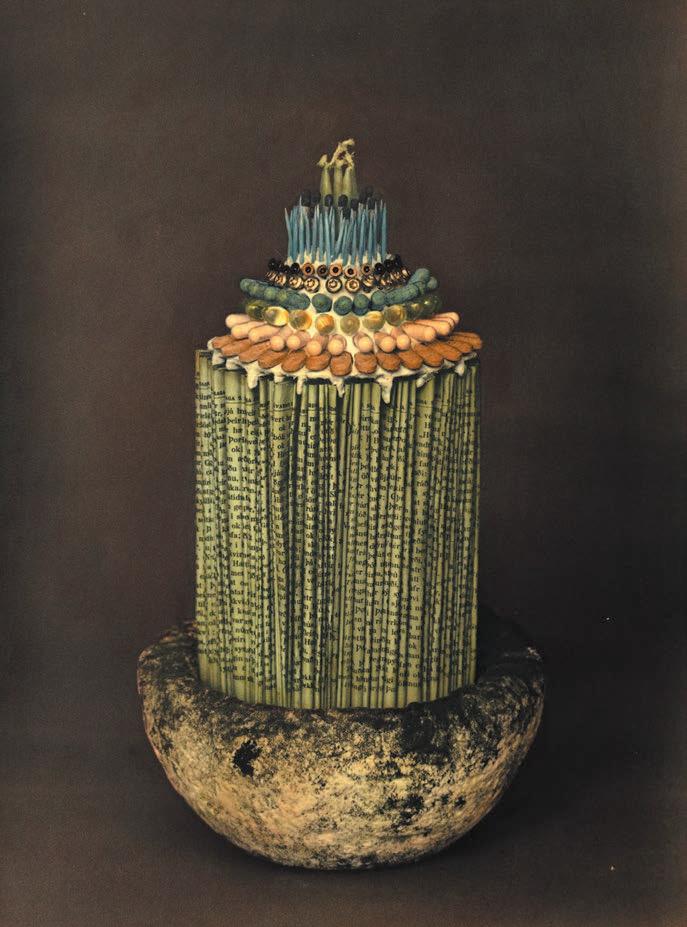
NOV 8–JAN 26, 2025
Icelandic post-rockers Sigur Rós released their first proper album in over a decade last year—EverOut music calendar editor Audrey Vann described ÁTTA as “cinematic, serene, floaty, and harmonious.” As it turns out, though, lead singer Jónsi’s artistic practice extends beyond his instantly recognizable falsetto. Alongside his sisters (who make up their family-run art collective and perfumery Fischersund), he’ll present Faux Flora, an immersive selection of sculptures, sounds, and scent experiences inspired by Icelandic native plant life. The sensory exhibition imagines new plant species and explores “the scientific relationship between scent and memory.” (National Nordic Museum, 2655 NW Market St, free–$20, all ages) LC



Thinking about decorating your lair?” Go no further…. Serving Seattle for 31 years!
Art shows every third Friday 5-7pm

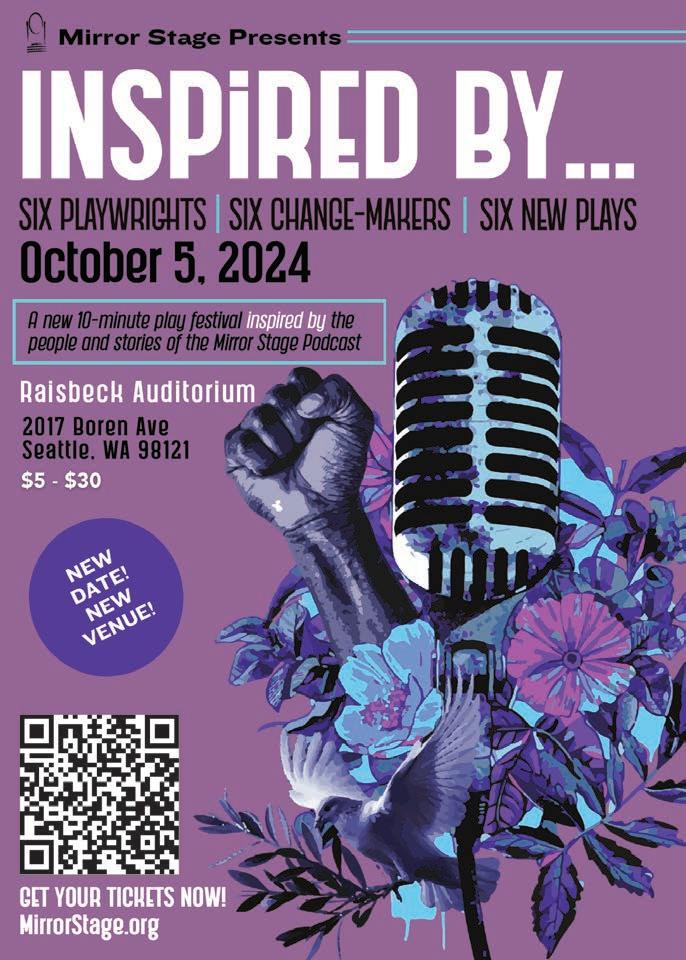
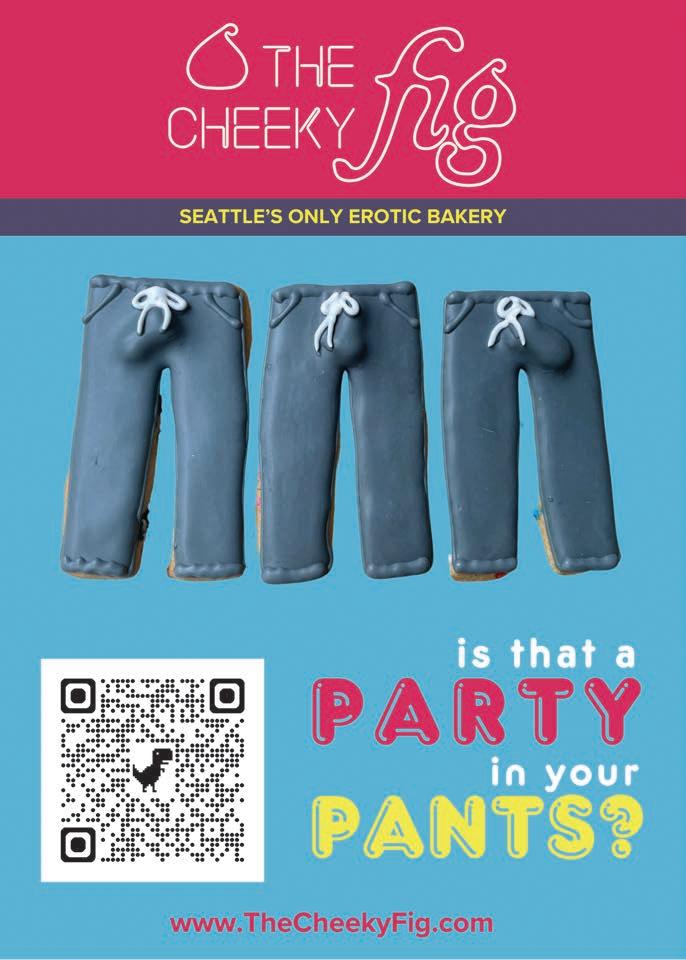
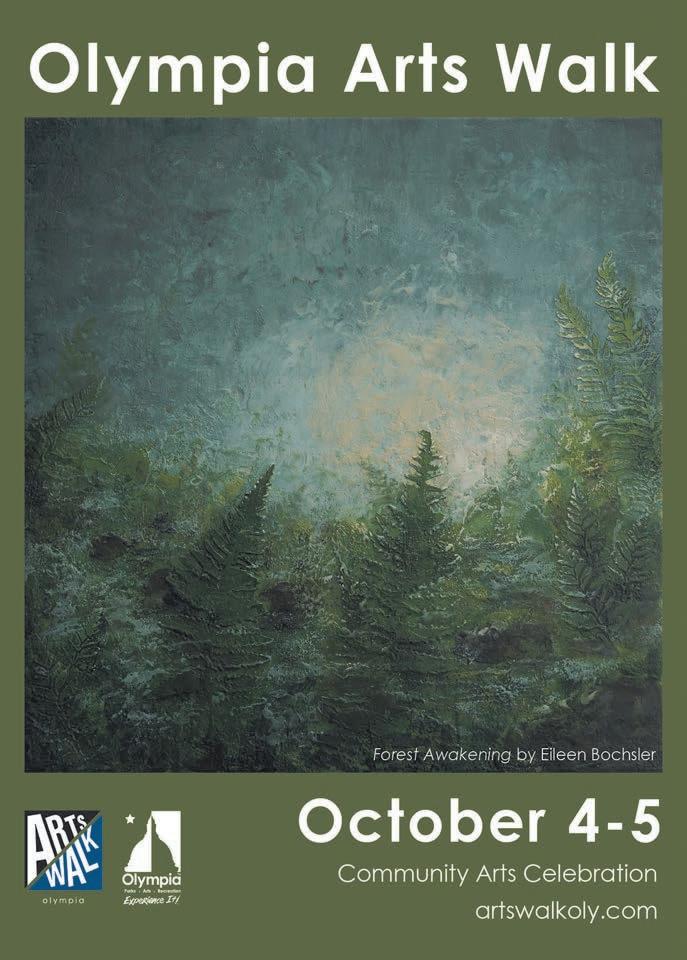

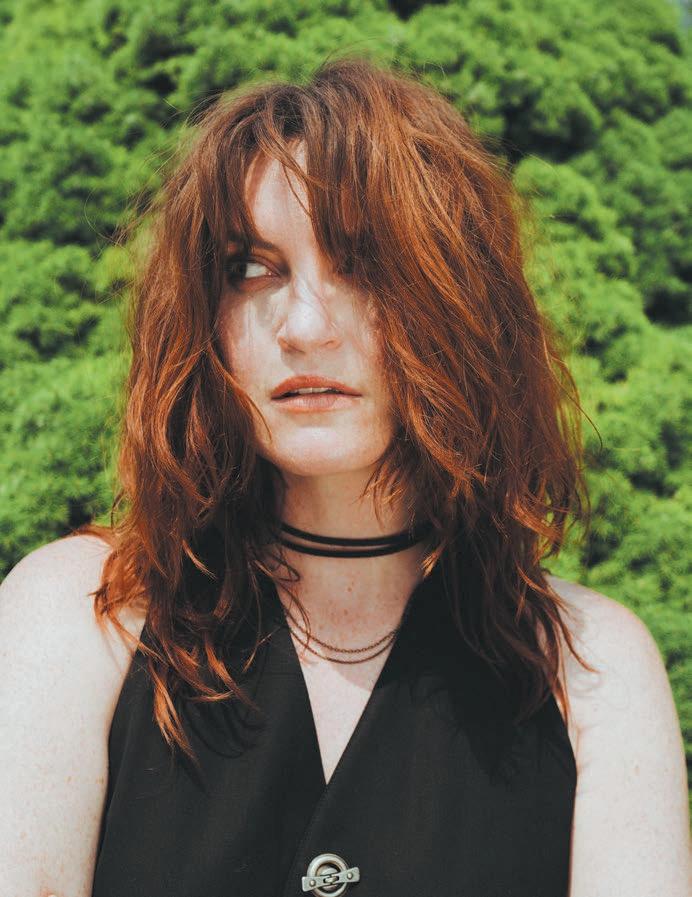
NOV 18–19
As a devoted stan of the queer indie pop icons, Gayotic podcasters, and self-proclaimed “greatest band in the world” MUNA, I’ve enjoyed watching member Katie Gavin step into her own solo project on the side. She cites Alanis Morissette, Fiona Apple, Ani DiFranco, Tracy Chapman, Tori Amos, and Sarah McLachlan as influences on her debut album, What a Relief, which was largely written on acoustic guitar over the course of seven years. Her raw honesty shines through on nostalgic ‘90s-tinged singles like “Aftertaste” (a sweet, woozy ode to the vulnerability of a nascent crush) and “Casual Drug Use” (a compassionate affirmation in the face of substance abuse issues, penned in the wake of a breakup in 2016). (Neumos, 925 E Pike St, 7 pm, $39–$45, all ages) JB
the multihyphenated creator on an eight-city book tour, and we’re lucky enough to live in one of her landing spots. MONEY PWEEZE! (Neptune Theatre, 1303 NE 45th St, 7:30 pm, $62.50, all ages) LC
Oct 24–27
The Vera Project is bringing back their Live from our Living Room festival and fundraiser this October. There will be an all-ages Halloween cover show, a 21-plus house party hosted by Seattle’s most out-of-this-world drag queen Irene the Alien, and a night with mid-2000s math rock heroes Algernon Cadwallader (followed by an “emo night afterparty,” which is both strange and intriguing to my borderline-Millennial heart). I’m especially excited for the Rock Lottery on Sunday, October 27. Twenty local musicians will be randomly broken off into four bands, and then they’ll have just that day to write songs together for the first time before performing for the audience. (The Vera Project and Black Lodge, tickets start at $13.39, all ages) MS
Thurs Oct 31

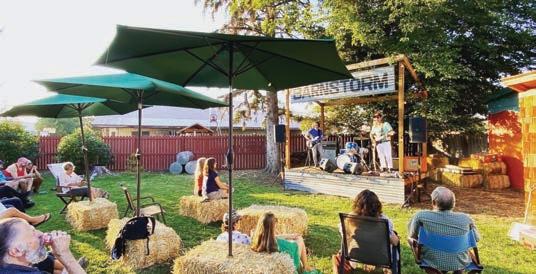
Bestselling author Casey McQuiston, the mind behind One Last Stop, I Kissed Shara Wheeler and Red, White & Royal Blue, has a knack for crafting queer romcoms packed with witty banter, sizzling chemistry, pop culture references, and beloved tropes. Their latest work, The Pairing tells the story of Kit and Theo, two horny bisexual exes who coincidentally book the same European food and wine tour and, in an attempt to prove to one another they’re over each other for good, compete to see who can hook up with the most people over the course of the vacation. Unsurprisingly, three weeks of sensual food, wine,
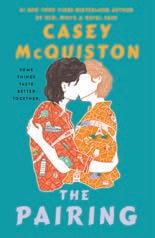

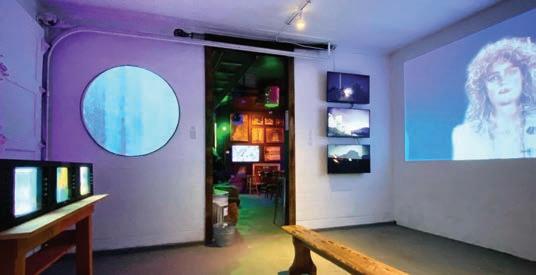












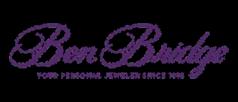

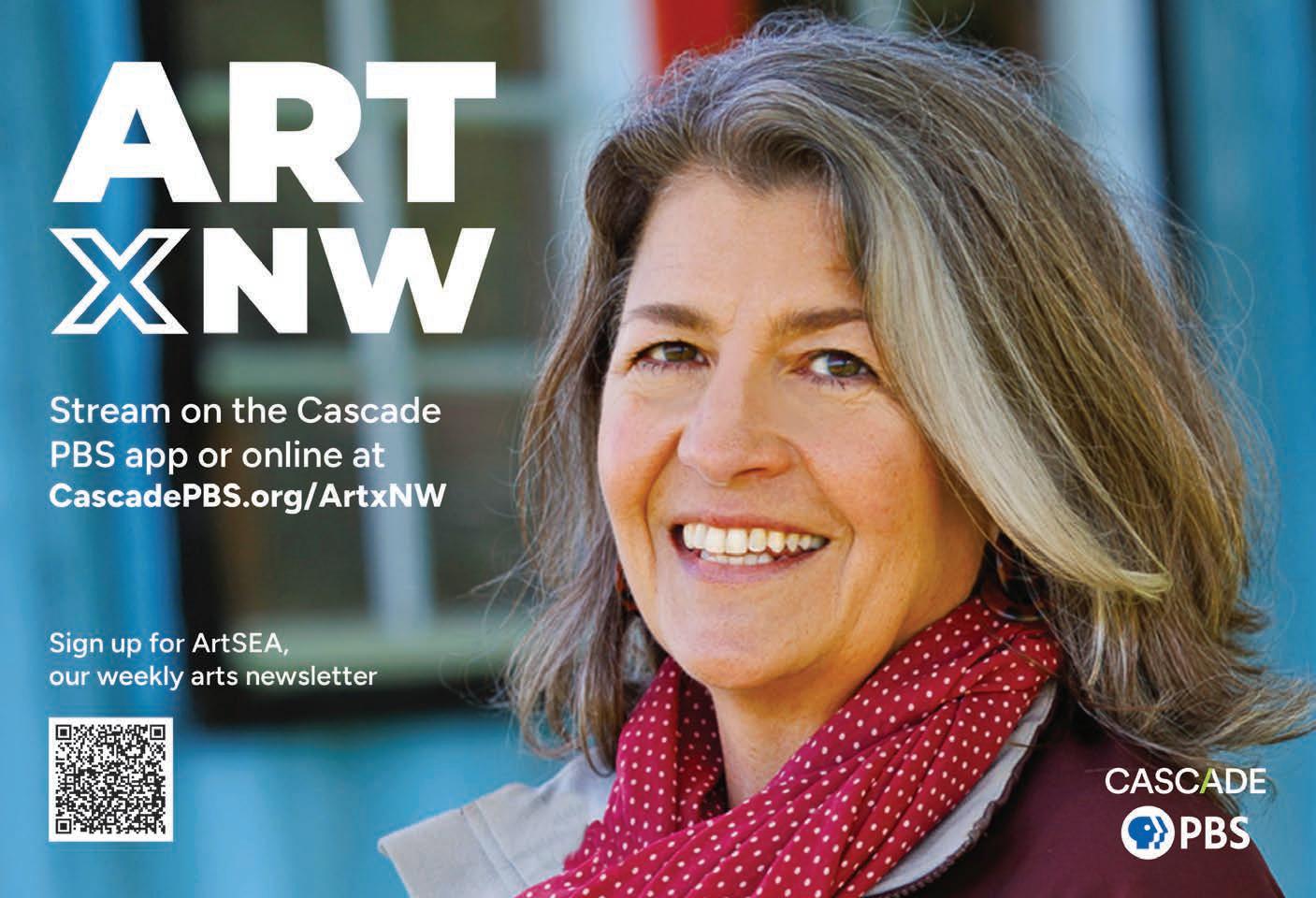
and generally slutty behavior follow. McQuiston will stop at Rainier Arts Center to chat about the art of capturing LGBTQ+ love on the page. Better yet, the event is on Halloween (aka gay Christmas), so costumes, “literary and otherwise,” are strongly encouraged. Who knows—maybe you’ll have your own queer meet cute! (Rainier Arts Center, 3515 S Alaska St, 7:30 pm, sliding-scale ticket prices include a copy of The Pairing) JB
Sun Nov 3
Ah, finally an opportunity to persuade the masses to listen to Richard Thompson! As a silver-haired British man known for guitar solos, Thompson isn’t the typical musician I would ride for. However, this man has played on so many flawless albums that I’ve begun to think he’s the special ingredient. Along with his start in the pioneering folk rock band Fairport Convention, various solo albums, and duo albums with his wife Linda, Thompson has also played with Nick Drake, Françoise Hardy, Shirley Collins, John Cale, and Sandy Denny—the list goes on. At this point, if I hear an album that was recorded between 1967 and 1987, it’s practically a given that Thompson played on it. The legend will grace Seattle with songs from his new album, Ship to Shore, which features drummer/former bandmate Dave Mattacks of Fairport Convention. (The Showbox, 1426 First Ave, 8 pm, $49.50–$55, 21+) AV
Nov 14–15
It’s been nearly 20 years since Seattle’s experimental hardcore kings, the Blood Brothers, have
performed. Their reunion shows at the Showbox in November are gonna be nuts. But remember, our bodies are two decades older than when we last thrashed around while screaming their songs until our throats were raw. It’s important to stretch and do vocal warm-ups to avoid injury. Let’s fucking go. “OPERATOR, I LOVE YOU / OPERATOR, I WOULD NEVER LEAVE YOU / I’D LIKE TO SEE YOUR FACE PRESSED UP AGAINST THE GLASS / 1-900-USA-NAILS, OH BABY / 1-900-USA-NAILS, OH BABY / 1-900-USA-NAILS, OH BABY / 1-900-USA-NAILS, OH BABY / 1-900-USA-NAILS, OH BABY / 1-900-USA-NAILS, OH BABY / 1-900-USA-NAILS, OH BABY / 1-900-USA-NAILS, OH BABY!!”
(The Showbox, 1426 First Ave, $40–$45, Thurs is all ages/Fri is 21+) MS
Sat Nov 30
For 10 years now, Seattle’s Last Waltz Tribute has reserved the last Saturday of November, paying homage to the Band’s renowned Martin Scorsese-directed final concert film. Local musicians run through their versions of the famous setlist, and it’s never not a great time. In fact, it’s the perfect night out for anyone needing to entertain multiple generations of family visiting for the Thanksgiving weekend. Your dad can’t scream about politics if he’s too busy dancin’ to “Mystery Train”! This year’s performers include King Youngblood’s lead guitar shredder Cameron Lavi-Jones and Annie Jantzer, whose voice gave me goosebumps when I saw her sing “It Makes No Difference” at 2022’s event. (Neptune Theatre, 1303 NE 45th St, 8 pm, $25) MS ■
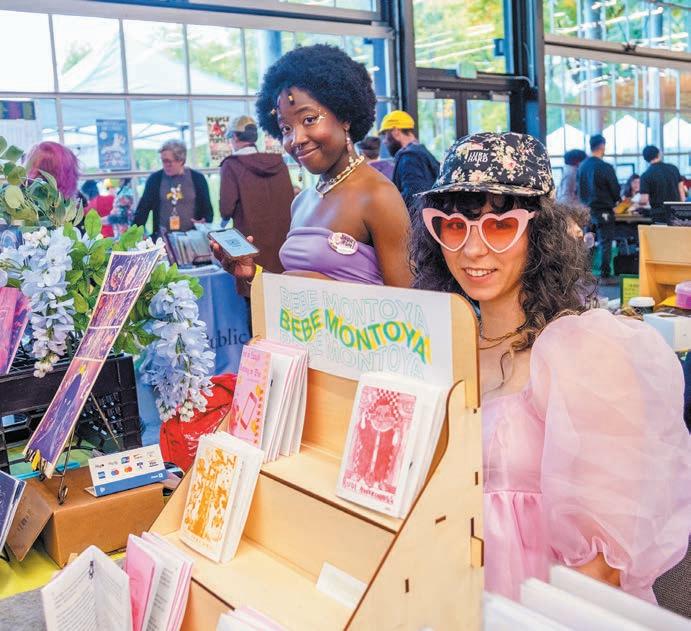
SAT NOV 2
In 2018, Stranger news editor Rich Smith wrote of Short Run: “You’re going. You’re bringing at LEAST $50 cash. You’re picking up new art books, zines, buttons, and little strips of beautiful screen-printed ephemera from internationally/nationally/locally-renowned comics creators.” Challenge accepted! This year’s edition of the now-legendary DIY fest is their last at the Seattle Center, and it includes hundreds of exhibitors, including special guests Mita Mahato, Powerpaola, and Sarah Leavitt. Visit shortrun.org for the full lineup and schedule. (Fisher Pavilion at Seattle Center, 305 Harrison St, 11 am–6 pm, free, all ages) LC
